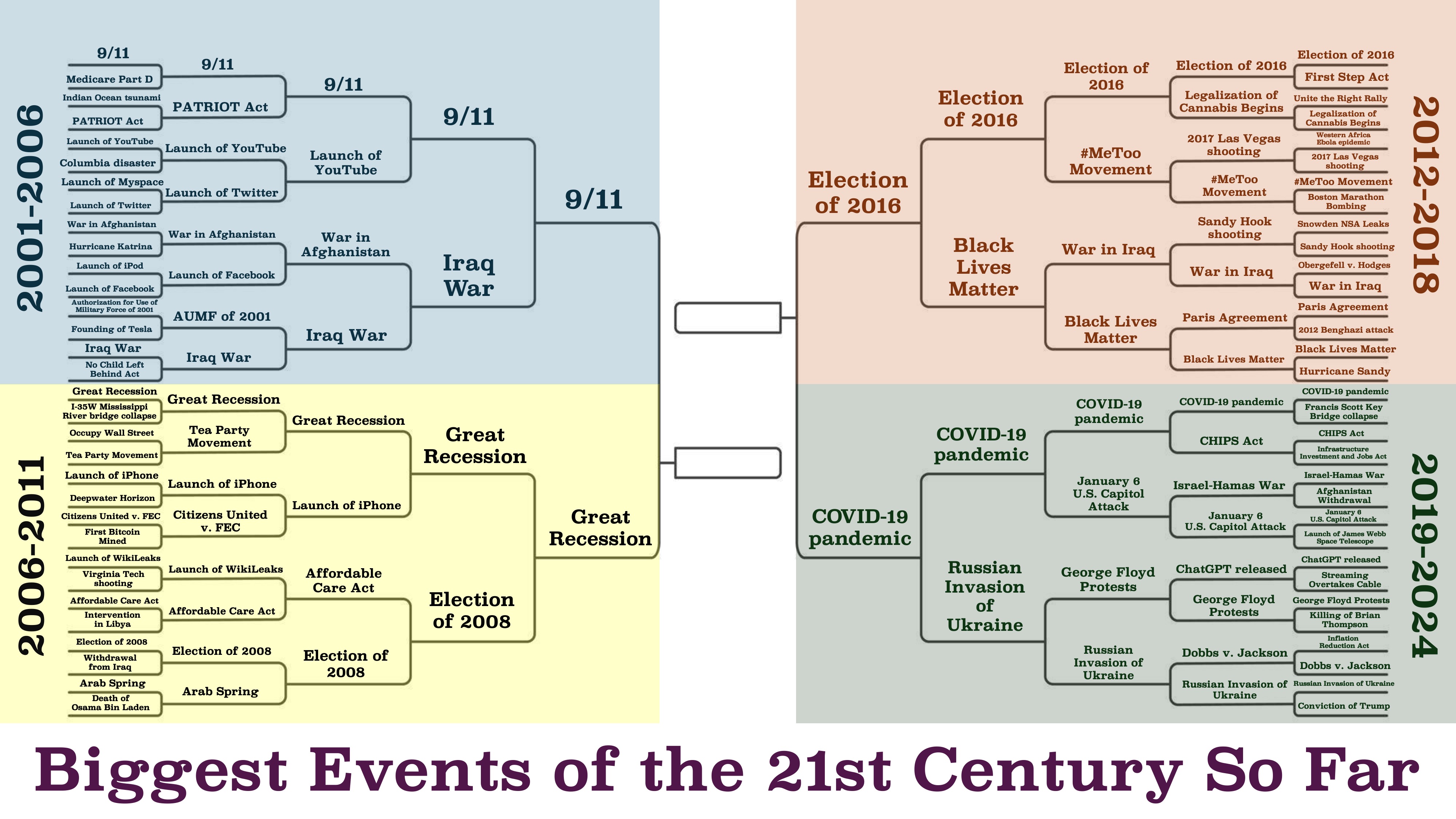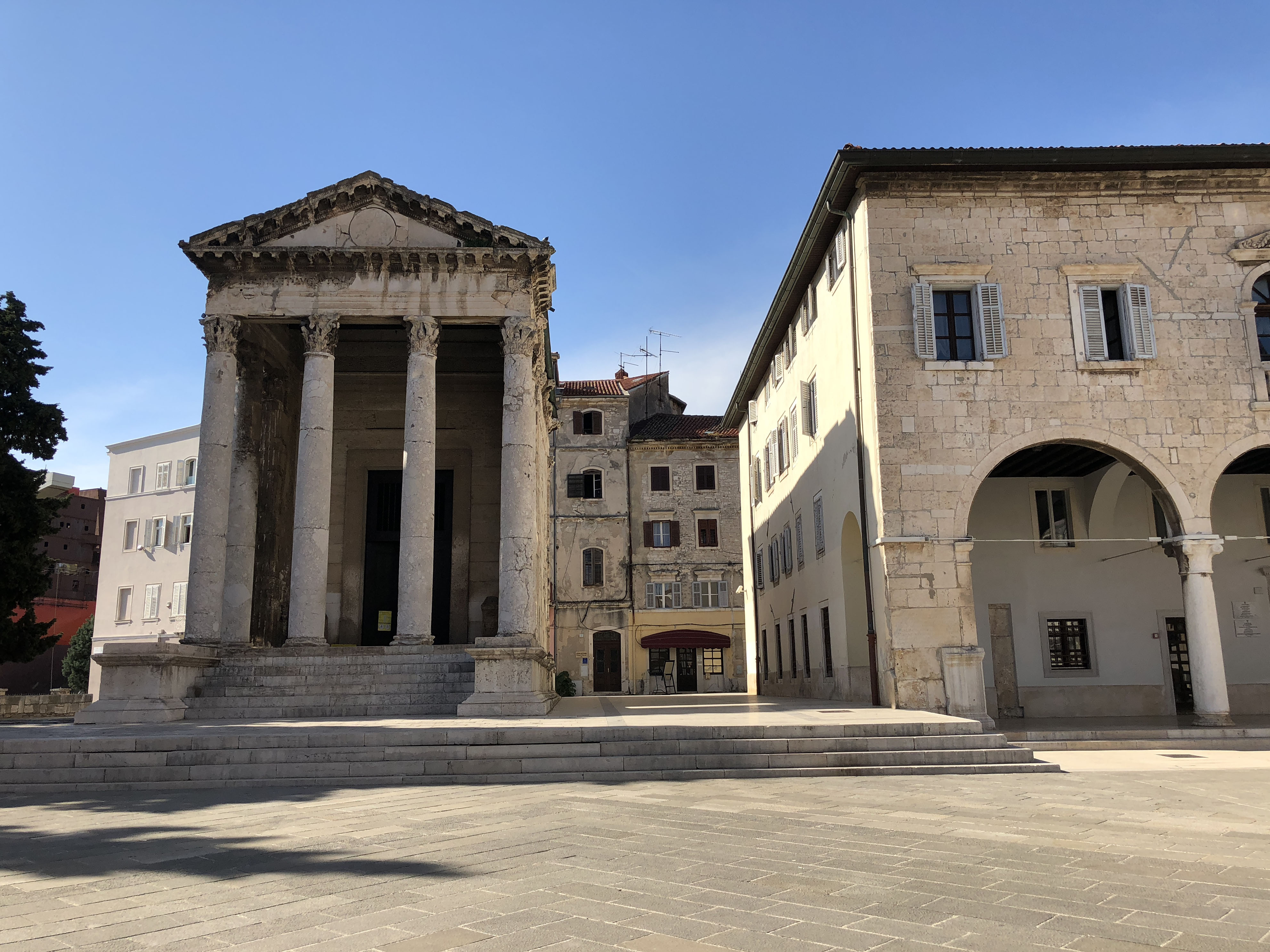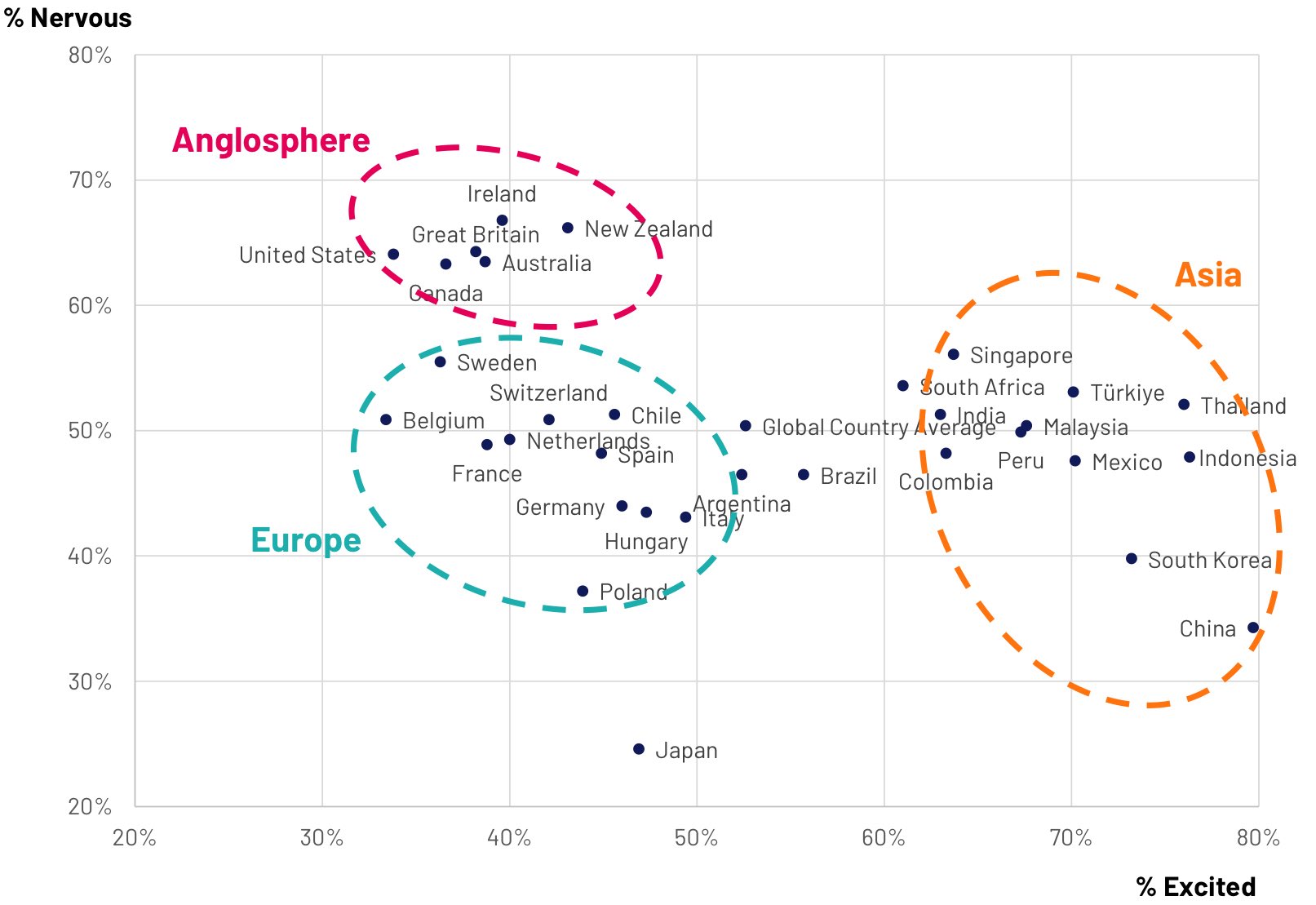-
 @ 554ab6fe:c6cbc27e
2025-04-10 18:48:57
@ 554ab6fe:c6cbc27e
2025-04-10 18:48:57What is consciousness, and can it be changed or enhanced? This is a question that humans have struggled with for a very long time. The question of consciousness alone is daunting. Some even argue that humans will never be able to find the answer. Regardless, the quest for knowledge is not always about the answer, rather it is the journey that is revealing. This is true not only for our society, but the individual as well. The search for the truth often leads one down a path of self-reflection, and can lead to conclusions previously thought to be ludicrous. Here, I will argue that consciousness can be interpreted as an interpretation of reality, where the interpretation may become clearer and more accurate through practices such as meditation.
Consciousness
To articulate this idea, the concept of consciousness must firstly be discussed. There is an incredibly interesting TED talk given by Anil Seth, where he describes consciousness as an illusion. He explains how the brain receives signals from both the internal and external environment of the body, makes an interpretation of those signals, which creates our conscious experience. In his scientific writing, he claims that the brain can be viewed as a prediction machine1. He argues that the brain is constantly making predictions and error correcting in order to gain understanding of the signals it is receiving. He is not alone in this theory, and many other researchers concur that the constant comparison of internal predictions and external stimuli is what generates the brain’s sensations of causal forces2. There are plenty of reasons to believe this is true. Imagine, the brain is receiving all kinds of neuronal signals both from external stimuli sensors and sensors for our internal systems. These signals all shoot up the spinal cord to the brain. It is unclear that these neuronal signals are stamped with an identifier of where they came from, so the brain has to make a predictive model for not only where the signal came from, but also why the signal came at all. The latter is important for survival: the use of our senses to accurately predict our environment would be a critical reason why consciousness developed in the first place. Imagine you are an ancient hominid walking in the wild: you see a tangled cord like thing around a branch on the tree. You need to process that information, determine if it is more branch or a snake and act accordingly. This is a potential biological reason for the manifestation of thought and problem solving. This is a very meta-cognitive example of our brain receiving information and then using previous knowledge to generate a predictive conclusion on the external reality.
There are also examples of this outside of the more obvious meta-cognitive examples. A good example is the famous rubber hand experiment. The first rubber hand experiment was conducted in 1998 by Botvinick and Cohen3. In this experiment, a subject places their hand on a table with a screen blocking their view of their own hand. A rubber hand is then placed on the other side of the screen where it is visible. The experimenter rubs both the rubber hand and real hand with a paint brush. By the end of the experiment, subjects begin to feel as if the rubber hand is their own limb3. The brain, using the visual senses, detects that a hand is being stroked with a brush while sensory neurons send signals that the hand is experiencing the touch of a paint brush. These two signals cause the predicting brain to think that the rubber hand is our hand. This experiment has been repeated many times in different ways. It has been observed that participants begin to react defensively to the threat of pain or damage to the rubber hand4. This illustrates the powerful extent at which the brain processes and reacts to information that it interprets from reality. Amazingly, some research suggests that the touch aspect of the experiment isn’t even necessary to produce the illusion5. Others have recreated this experience using virtual reality, citing that when the virtual hand changed color in response to the subject’s heartbeat, a significant sense of body ownership was generated6. Body ownership, and our sense of reality is arguably determined by our brain’s interpretation of both internal and external stimuli.
The Neuroscience and Meditation
It is hypothesized that the anterior insular cortex (AIC) is involved in the comparison of the stimuli to the predicted model1. Interestingly, the same brain region is associated with the anticipation of pain7. For those unaware, there is some research to suggest that much of the pain we experience is not due to the actual noxious stimuli (physical pain sensation), but from the anticipation of that pain. Evidence for this can be found in studies such as Al-Obaidi et al. from 2005, that concluded that the pain experienced in patients with chronic low back pain could not be solely attributed to the sensor signals, but from the anticipation of the pain8. Additionally, the anticipation of pain relief is the primary contributor to placebo analgesia (placebo pain killers)9. Furthermore, a large body of research has been conducted showing that meditators show a decreased anticipatory attitude towards pain, subsequently experiencing less unpleasant pain 7,10,11. For example, chronic pain in multiple areas such as the low back, neck, shoulder, and arms have been shown to reduce after meditation practice12. Finally, an extreme case study worth noting is of a yogi master who claimed to not experience pain at all13. When this master was brought into the lab, not only did he not experience pain, but his thalamus showed no additional activation following painful stimuli13. What is fascinating about this is that the thalamus is the main relay station for all incoming somatosensory information14, and some argue that this is a candidate for the location of consciousness15. To not have strong activation here after painful stimuli is to suggest a radical change in how the brain receives incoming stimuli, and perhaps is indicative in a dramatic shift in how this individual’s conscious experiences the world. Though this is but one small example, the previous studies outline a strong case for meditation’s ability to alter the way the brain processes information. Given meditation involves the active practice of generating an open and non-judgmental attitude towards all incoming stimuli, perhaps this alters the processing of incoming stimuli, thereby changing the predictive model. On a similar note, perhaps it relates to neuroplastic changes that occur within the brain. It has been noted that the AIC is activated during times of awareness of mind wandering16. This suggests that the AIC is in use frequently during meditation practices. Perhaps it is strengthened then by meditation, thereby also allowing for greater prediction model generation. Imagine the mind as a pond. If the pond is calm and still, one single rain drop rippling in the pond is clearly identifiable. One would easily know information about the droplet, because the ripple could be easily analyzed. Now imagine a pond during a rain storm, where an uncountable amount of rain drops is hitting the pond and there are ripples everywhere. One could not adequately make out where each ripple came from, because there would be too much overlap in the ripples. This may be how the brain functions as well. When the signals are low, and no extraneous thoughts and interpretations are created from signals, then the brain’s prediction model can easily determine where and why a signal it received came from. If, however, the mind is chaotic and full of internal noise, then the brain has a harder time creating an accurate understanding of incoming stimuli and generating a correct model.
Enlightenment
Enlightenment, from a scientific point of view, has been defined as a form of awareness where a person feels that s/he has gained a new understanding of reality 17. In this sense, it bears a striking relationship to the topic of consciousness. If consciousness can be defined as our interpretation of the external and internal environment through our mental prediction model, then experiences of enlightenment are defined by moments where our interpretation is completely changed in a profound way. The experiences are often characterized by the loss of individuality and consequent identification of being part of a greater oneness 18,19. As an interesting side note, this same experience is common amongst subjects, who in a double-blinded study, take psilocybin (the active ingredient in magic mushrooms)20,21. The neuroscience of enlightenment is particularly interesting. The temporo-parietal junction of the brain is involved with self-location and body ownership22. Unsurprisingly, this area is highly involved in the illusion of the rubber hand experiment23. This is the same brain area that is hypothesized to be related to these enlightened experiences of oneness 17. If this brain area, which handles the interpretation of where and what the body is, was to decrease in activation, then the brain would generate a more ambiguous interpretation that the self and the external environment are less distinct than previously thought. This is a possible explanation to why enlightenment experiences involve a feeling of oneness with everything. To bring this all home, meditation has been shown to decrease parietal lobe activation 4,24. Suggesting that meditation can be a method of adjusting the brain’s interpretation of stimuli to generate an outlook that is unifying in perceptive.
Closing Remarks
The evidence that meditation may lead to an altered conscious living has deep philosophical implications. Meditation is a practice that, in part, involves an open awareness to all incoming stimuli alongside the absence of any meta-cognitive interpretation or processing of said stimuli. This generation of a still mind may generate a more accurate prediction model of incoming stimuli, void of any corruption on the part of our thoughts. Given the observation that meditation, both scientifically and culturally, can lead to an understanding and experience of a greater oneness amongst all suggests that this interpretation of incoming stimuli is the more accurate interpretation. It is hard to imagine that anyone would not advocate the beauty and usefulness of this perspective. If more people had this perspective, we would have a much more peaceful, happy and unified society and planet. Ironically, our culture often aims to arrive to this philosophical perspective through analytical thought. However, given the evidence in this post, perhaps it is the absence of analytical thought, and the stillness of the mind that truly grants this perspective.
**References ** 1. Seth AK. Interoceptive inference, emotion, and the embodied self. Trends in Cognitive Sciences. 2013;17(11):565-573. doi:10.1016/j.tics.2013.09.007 2. Synofzik M, Thier P, Leube DT, Schlotterbeck P, Lindner A. Misattributions of agency in schizophrenia are based on imprecise predictions about the sensory consequences of one’s actions. Brain. 2010;133(1):262-271. doi:10.1093/brain/awp291 3. Botvinick M, Cohen JD. Rubber hand ‘feels’ what eyes see. Nature. 1998;391(February):756. 4. Newberg A, Alavi A, Baime M, Pourdehnad M, Santanna J, D’Aquili E. The measurement of regional cerebral blood flow during the complex cognitive task of meditation: A preliminary SPECT study. Psychiatry Research - Neuroimaging. 2001;106(2):113-122. doi:10.1016/S0925-4927(01)00074-9 5. Ferri F, Chiarelli AM, Merla A, Gallese V, Costantini M. The body beyond the body: Expectation of a sensory event is enough to induce ownership over a fake hand. Proceedings of the Royal Society B: Biological Sciences. 2013;280(1765). doi:10.5061/dryad.8f251 6. Suzuki K, Garfinkel SN, Critchley HD, Seth AK. Multisensory integration across exteroceptive and interoceptive domains modulates self-experience in the rubber-hand illusion. Neuropsychologia. 2013;51(13):2909-2917. doi:10.1016/j.neuropsychologia.2013.08.014 7. Zeidan F, Grant JA, Brown CA, McHaffie JG, Coghill RC. Mindfulness meditation-related pain relief: Evidence for unique brain mechanisms in the regulation of pain. Neuroscience Letters. 2012;520(2):165-173. doi:10.1016/j.neulet.2012.03.082 8. Al-Obaidi SM, Beattie P, Al-Zoabi B, Al-Wekeel S. The relationship of anticipated pain and fear avoidance beliefs to outcome in patients with chronic low back pain who are not receiving workers’ compensation. Spine. 2005;30(9):1051-1057. doi:10.1097/01.brs.0000160848.94706.83 9. Benedetti F, Mayberg HS, Wager TD, Stohler CS, Zubieta JK. Neurobiological mechanisms of the placebo effect. In: Journal of Neuroscience. Vol 25. Society for Neuroscience; 2005:10390-10402. doi:10.1523/JNEUROSCI.3458-05.2005 10. Gard T, Hölzel BK, Sack AT, et al. Pain attenuation through mindfulness is associated with decreased cognitive control and increased sensory processing in the brain. Cerebral Cortex. 2012;22(11):2692-2702. doi:10.1093/cercor/bhr352 11.Grant JA, Courtemanche J, Rainville P. A non-elaborative mental stance and decoupling of executive and pain-related cortices predicts low pain sensitivity in Zen meditators. Pain. 2011;152(1):150-156. doi:10.1016/j.pain.2010.10.006 12. Kabat-Zinn J, Lipworth L, Burney R. The clinical use of mindfulness meditation for the self-regulation of chronic pain. Journal of Behavioral Medicine. 1985;8(2):163-190. doi:10.1007/BF00845519 13. Kakigi R, Nakata H, Inui K, et al. Intracerebral pain processing in a Yoga Master who claims not to feel pain during meditation. European Journal of Pain. 2005;9(5):581. doi:10.1016/j.ejpain.2004.12.006 14. Steeds CE. The anatomy and physiology of pain. Surgery. 2009;27(12):507-511. doi:10.1016/j.mpsur.2009.10.013 15. Min BK. A thalamic reticular networking model of consciousness. Theoretical Biology and Medical Modelling. 2010;7(1):1-18. doi:10.1186/1742-4682-7-10 16. Hasenkamp W, Wilson-Mendenhall CD, Duncan E, Barsalou LW. Mind wandering and attention during focused meditation: A fine-grained temporal analysis of fluctuating cognitive states. NeuroImage. 2012;59(1):750-760. doi:10.1016/j.neuroimage.2011.07.008 17. Newberg AB, Waldman MR. A neurotheological approach to spiritual awakening. International Journal of Transpersonal Studies. 2019;37(2):119-130. doi:10.24972/ijts.2018.37.2.119 18. Johnstone B, Cohen D, Konopacki K, Ghan C. Selflessness as a Foundation of Spiritual Transcendence: Perspectives From the Neurosciences and Religious Studies. International Journal for the Psychology of Religion. 2016;26(4):287-303. doi:10.1080/10508619.2015.1118328 19. Yaden DB, Haidt J, Hood RW, Vago DR, Newberg AB. The varieties of self-transcendent experience. Review of General Psychology. 2017;21(2):143-160. doi:10.1037/gpr0000102 20. Griffiths RR, Richards WA, McCann U, Jesse R. Psilocybin can occasion mystical-type experiences having substantial and sustained personal meaning and spiritual significance. Psychopharmacology. 2006;187(3):268-283. doi:10.1007/s00213-006-0457-5 21. Griffiths RR, Richards WA, Johnson MW, McCann UD, Jesse R. Mystical-type experiences occasioned by psilocybin mediate the attribution of personal meaning and spiritual significance 14 months later. Journal of Psychopharmacology. 2008;22(6):621-632. doi:10.1177/0269881108094300 22. Serino A, Alsmith A, Costantini M, Mandrigin A, Tajadura-Jimenez A, Lopez C. Bodily ownership and self-location: Components of bodily self-consciousness. Consciousness and Cognition. 2013;22(4):1239-1252. doi:10.1016/j.concog.2013.08.013 23. Tsakiris M, Costantini M, Haggard P. The role of the right temporo-parietal junction in maintaining a coherent sense of one’s body. Neuropsychologia. 2008;46(12):3014-3018. doi:10.1016/j.neuropsychologia.2008.06.004 24. Herzog H, Leie VR, Kuweit T, Rota E, Ludwig K. Biological Psychology/Pharmacopsychology. Published online 1990:182-187.
-
 @ 0edc2f47:730cff1b
2025-04-04 03:37:02
@ 0edc2f47:730cff1b
2025-04-04 03:37:02Chef's notes
This started as a spontaneous kitchen experiment—an amalgamation of recipes from old cookbooks and online finds. My younger daughter wanted to surprise her sister with something quick but fancy ("It's a vibe, Mom."), and this is what we came up with. It’s quickly established itself as a go-to favorite: simple, rich, and deeply satisfying. It serves 4 (or 1, depending on the day; I am not here to judge). Tightly wrapped, it will keep up to 3 days in the fridge, but I bet it won't last that long!
Details
- ⏲️ Prep time: 10 min
- 🍳 Cook time: 0 min
Ingredients
- 1 cup (240mL) heavy whipping cream
- 1/4 cup (24g) cocoa powder
- 5 tbsp (38g) Confectioners (powdered) sugar
- 1/4 tsp (1.25mL) vanilla extract (optional)
- Flaky sea salt (optional, but excellent)
Directions
-
- Whip the cream until frothy.
-
- Sift in cocoa and sugar, fold or gently mix (add vanilla if using).
-
- Whip to medium peaks (or stiff peaks, if that's more your thing). Chill and serve (topped with a touch of sea salt if you’re feeling fancy).
-
 @ 2b24a1fa:17750f64
2025-04-01 08:09:55
@ 2b24a1fa:17750f64
2025-04-01 08:09:55 -
 @ 812cff5a:5c40aeeb
2025-04-01 02:57:20
@ 812cff5a:5c40aeeb
2025-04-01 02:57:20مقدمة
في عالم اليوم الرقمي، تبرز منصات جديدة تهدف إلى تعزيز تجربة القراءة والتواصل بين محبي الكتب. تُعَدُّ Bookstr.xyz واحدة من هذه المنصات المبتكرة التي تسعى لربط القرّاء عبر شبكة Nostr، مما يمنحهم سيادة كاملة على بياناتهم ويتيح لهم بناء علاقات جديدة مع محبي الكتب الآخرين. 
الميزات الرئيسية لموقع Bookstr
- التحكم الكامل بالبيانات: توفر Bookstr.xyz للمستخدمين القدرة على التحكم الكامل في بياناتهم الشخصية، مما يضمن خصوصية وأمان المعلومات.
- التكامل مع Open Library: تستخدم المنصة واجهة برمجة التطبيقات الخاصة بـ Open Library للحصول على معلومات شاملة حول الكتب، مما يتيح للمستخدمين الوصول إلى مجموعة واسعة من البيانات الموثوقة.
- التواصل الاجتماعي: من خلال شبكة Nostr، يمكن للمستخدمين التواصل مع قرّاء آخرين، تبادل التوصيات، ومناقشة الكتب المفضلة لديهم. 
ما الذي يجعلها فريدة؟
تتميز Bookstr.xyz بدمجها بين مزايا الشبكات الاجتماعية ومصادر بيانات الكتب المفتوحة، مما يخلق بيئة تفاعلية وغنية بالمعلومات لمحبي القراءة. استخدامها لشبكة Nostr يمنح المستخدمين حرية أكبر في التحكم بتجربتهم الرقمية مقارنة بالمنصات التقليدية. 
جرب Bookstr
تُعَدُّ Bookstr.xyz إضافة قيمة لعالم القراءة الرقمي، حيث تجمع بين مزايا الشبكات الاجتماعية ومصادر البيانات المفتوحة، مع التركيز على خصوصية المستخدم والتحكم في البيانات. إذا كنت من عشاق الكتب وتبحث عن منصة تفاعلية وآمنة، فقد تكون Bookstr.xyz الخيار المثالي لك.
شاركوا كتبكم المفضلة!!
-
 @ 878dff7c:037d18bc
2025-03-31 21:29:17
@ 878dff7c:037d18bc
2025-03-31 21:29:17Dutton Proposes Easing Home Loan Regulations
Summary:
Opposition Leader Peter Dutton plans to challenge the Albanese government by proposing changes to lending rules aimed at making it easier for first-time home buyers to access loans. The proposed adjustments include reducing serviceability buffers and addressing the treatment of HELP debt to improve housing access. Dutton argues that current regulations create a bias favoring inherited wealth, making it difficult for new buyers to enter the housing market. These proposals come as the Reserve Bank of Australia prepares for its upcoming interest rate decision, with the current cash rate target at 4.1% and predictions of a cut in May. Treasurer Jim Chalmers highlights the government's progress, noting falling inflation, rising real wages, and improving economic growth.
Sources: News.com.au - 1 April 2025, The Australian - 1 April 2025
Australia's Housing Market Hits New Record High
Summary:
Australia's property prices reached a new peak in March, following a rate cut that enhanced buyer optimism. CoreLogic reported a 0.4% monthly increase, bringing the average national property price to A$820,331. All capital cities, except Hobart, experienced price gains, with Sydney and Melbourne rising by 0.3% and 0.5%, respectively. The rate cut slightly improved borrowing capacity and mortgage serviceability. However, the sustainability of this upward trend is uncertain due to persistent affordability issues. While the market rebounded with the February rate cut by the Reserve Bank of Australia, significant improvements in home loan serviceability are necessary for substantial market growth.
Source: Reuters - 1 April 2025
AI Revolutionizes Business Operations
Summary:
Artificial intelligence (AI) is transforming business practices globally, with applications ranging from administrative task automation to strategic decision-making enhancements. Companies are increasingly integrating AI to streamline operations and gain competitive advantages. This shift necessitates a focus on ethical AI deployment and workforce upskilling to address potential job displacement.
Sources: Financial Times - April 1, 2025
Criticism of Bureau of Meteorology's Forecasting Capabilities
Summary:
The Bureau of Meteorology is facing criticism for inadequate weather radar coverage in western Queensland, which has led to unreliable forecasting during the recent floods. Federal Opposition Leader Peter Dutton has pledged $10 million for a new radar system to enhance forecasting accuracy, while local officials emphasize the need for improved infrastructure to better prepare for future natural disasters.
Sources: The Australian - April 1, 2025
Coalition Pledges $10 Million for Western Queensland Weather Radar
Summary:
As part of the federal election campaign, Opposition Leader Peter Dutton has promised $10 million for a new weather radar system in flood-affected western Queensland. This initiative aims to improve weather forecasting and preparedness in the region. Meanwhile, Prime Minister Anthony Albanese has pledged $200 million for an upgrade to the St John of God Midland hospital in Perth, emphasizing healthcare improvements. Both leaders are focusing on key regional investments as the election approaches.
Source: The Guardian - April 1, 2025
Emergency Services Conduct Rescues Amid Queensland Floods
Summary:
Emergency services in Queensland have conducted over 40 rescues as floodwaters continue to rise, submerging communities and causing extensive damage. Efforts are focused on delivering essential supplies, evacuating residents, and ensuring the safety of those affected by the severe weather conditions.
Sources: The Courier-Mail - April 1, 2025
Six Key Crises Facing Australia Before the Election
Summary:
As the election nears, voters remain largely unaware of six looming crises that could significantly impact the nation. These include over-reliance on volatile commodity exports, challenges in renewable energy implementation, potential currency depreciation, and reduced foreign investment. Both major parties have focused on immediate cost-of-living relief, overshadowing these critical issues that demand urgent attention.
Sources: The Australian - April 1, 2025
Debate Intensifies Over Australia's Commitment to AUKUS
Summary:
Former Defence Department Secretary Dennis Richardson has urged Australia to persist with the AUKUS submarine agreement despite concerns about the reliability of the U.S. under President Donald Trump. Richardson warns that abandoning the deal now would undermine decades of defense planning. However, critics, including former Prime Minister Malcolm Turnbull, question the feasibility and advisability of the agreement, suggesting alternatives such as partnering with France for submarine development.
Sources: The Guardian - April 1, 2025, The Australian - April 1, 2025
China Delays $23B Sale of Panama Canal Ports to US-Backed Consortium
Summary:
China has postponed the $23 billion sale of 43 global ports, including critical facilities at both ends of the Panama Canal, to a consortium led by US investment firm BlackRock. The delay follows an investigation by China’s State Administration for Market Regulation into potential anti-monopoly law violations. This unexpected move has heightened tensions between China and the US, as President Trump viewed the sale as a strategic victory in the ongoing power struggle between the two nations. The deal's future remains uncertain, causing political and economic ripples amid China's significant annual "two sessions" gathering.
Sources: New York Post - March 31, 2025
Australian Government's Handling of Suspected Chinese Spy Ship Raises Concerns
Summary:
The Australian government has assigned the monitoring of the suspected Chinese spy ship, Tan Suo Yi Hao, to the Australian Border Force, despite Prime Minister Anthony Albanese's assertion that the Australian Defence Force was managing the situation. Security experts believe the vessel is collecting undersea data for future Chinese submarine operations, highlighting national security concerns during an election period. The handling of this issue has led to criticism and confusion over which agency is in charge, with opposition figures condemning the government's lack of detailed information.
Sources: The Australian - April 1, 2025
Concerns Rise Over Schoolchildren Accessing Weight Loss Drugs
Summary:
Health experts are alarmed by reports of Australian schoolchildren accessing weight loss medications like semaglutide (Ozempic) through various means, including online purchases and taking them from home supplies. These substances are being linked to secretive and harmful diet clubs within schools, posing severe health risks such as potentially fatal overdoses. Advocates emphasize the need for stricter regulation of weight loss products and call for mandatory education programs on eating disorders in schools to address the growing issue.
Sources: The Courier-Mail - 1 April 2025
Recycling Plant Explosion Highlights Dangers of Improper Aerosol Disposal
Summary:
A Victorian company has been fined $35,000 after an explosion at its recycling plant injured six workers. The incident occurred when pressurized aerosol cans were improperly shredded, causing flames to spread up to 18 meters. Investigations revealed that the company failed to implement safety procedures such as emptying or puncturing the cans before shredding and ensuring adequate ventilation. This case underscores the critical importance of adhering to safety protocols when handling hazardous materials.
Sources: Herald Sun - 1 April 2025
Australia Enforces New Tobacco Controls from April 1
Summary:
As of April 1, 2025, Australia has implemented stringent tobacco control measures, including health warnings printed directly on individual cigarettes. These warnings feature phrases such as "CAUSES 16 CANCERS" and "DAMAGES YOUR LUNGS." Additionally, new graphic warnings on cigarette packs and health promotion inserts aim to encourage smoking cessation and raise awareness about the dangers of tobacco use.
Sources: Mirage News - April 1, 2025, 9News - April 1, 2025
OPEC+ Increases Oil Production Amid Global Uncertainties
Summary:
OPEC+ has announced the gradual unwinding of voluntary production cuts starting April 1, 2025, aiming to restore 2.2 million barrels per day of output by September 2026. Despite this increase, factors such as tighter U.S. sanctions on Iran and Russia, potential sanctions on Venezuelan oil buyers, and fears of a tariff-induced recession have sustained oil prices. Analysts predict limited downside risks to oil prices due to significant supply threats, mainly from Iran and Venezuela. While some strength in oil prices is expected during the summer, concerns over tariff-induced demand weakness persist.
Sources: MarketWatch - April 1, 2025
Iconic Australian Locations Declared 'No Go Zones'
Summary:
Several iconic Australian locations, including Uluru, Kakadu National Park, Cape York Peninsula, and others, are increasingly being declared "no go zones" due to cultural, environmental, and safety concerns. These measures aim to preserve the cultural significance and environmental integrity of these landmarks and ensure public safety. While traditional owners and local authorities support these restrictions to protect cultural heritage, debates have arisen over tourists' rights and the impact on local tourism industries. Sources: News.com.au - April 1, 2025
The Joe Rogan Experience #2297: Francis Foster & Konstantin Kisin
Summary:
In episode #2297 of The Joe Rogan Experience, Joe Rogan welcomes comedians and commentators Francis Foster and Konstantin Kisin, hosts of the podcast Triggernometry. The episode delivers a wide-ranging conversation covering free speech, comedy, media narratives, and societal tensions in the modern world.
Interesting Discussions and Insights:
-
The State of Comedy:\ The trio discusses how comedy has changed in recent years, especially under the weight of cancel culture. They explore how comedians are navigating cultural sensitivities while still trying to push boundaries and remain authentic.
-
Free Speech and Censorship:\ Konstantin and Francis share their experiences with censorship and self-censorship, emphasizing the risks of suppressing ideas, even if they’re controversial. They advocate for robust debate as a cornerstone of democracy.
-
Migration and Identity Politics:\ The conversation touches on immigration policies in the UK and broader Western world, discussing how political correctness often silences real concerns. Both guests, with immigrant backgrounds, offer nuanced perspectives on national identity and inclusion.
-
Media and Narrative Control:\ Joe, Francis, and Konstantin dive into how media outlets often frame stories with ideological slants, and the dangers of relying on one-sided narratives in forming public opinion.
-
Creating Triggernometry:\ The guests talk about why they launched their podcast — to have honest, open conversations with a wide range of thinkers, especially those often excluded from mainstream platforms.
Key Takeaways:
- Honest conversation is essential for a healthy society, even when it's uncomfortable.
- Comedy still holds power to critique society but faces mounting challenges from cultural pressures.
- Free speech should be defended not just in principle, but in everyday life and dialogue.
- The media landscape is increasingly polarized, and critical thinking is more important than ever.
-
-
 @ e39333da:7c66e53a
2025-05-16 13:20:33
@ e39333da:7c66e53a
2025-05-16 13:20:33::youtube{#Pex7jW3Tqwo}
Developer SHIFT UP has announced that their latest titled, Stellar Blade, that was released on PS5 on the 2024, will release on PC via Steam and EGS on the 11th of June 2025.
The game will be priced at $60, and $80 for the edition of the game that includes the 'Twin Expansion Pack', which includes the NieR: Automata DLC and the Goddess of Victory: Nikke DLC, and a key to redeem a Stellar Blade costume in the developer's previous Free-to-Play title Goddess of Victory: Nikke.
The trailer released to announce said release date also showcases the changes the made for the game and highlight PC specific enhancements, support, and options.
It's worth noting, in terms of negative news that tagged along with this, that the game will have Denuvo running, which there are evidence that decreases a game's performance, and may prevent you from playing the game offline. The game will also have an optional PSN account login, and because of this, the game is not available for purchase in around 130 countries. There's also an exclusive outfit locked behind a PSN-to-Steam account linking.

Here's the system requirements:
| | Minimum | Recommended | High | Very High | | ----------------------- | ----------------------------------------------------- | ------------------------------------------------------- | ------------------------------------------------------- | ------------------------------------------------- | | Average Performance | 1080P at 60 frames per second | 1440P at 60 frames per second | 1440P at 60 frames per second | 4K at 60 frames per second | | Graphic Presets | Low | Medium | High | Very High | | CPU | Intel Core i5-7600K AMD Ryzen 5 1600X | Intel Core i5-8400 AMD Ryzen 5 3600X | Intel Core i5-8400 AMD Ryzen 5 3600X | Intel Core i5-8400 AMD Ryzen 5 3600X | | GPU | NVIDIA GeForce GTX 1060 6GB AMD Radeon RX 580 8GB | NVIDIA GeForce RTX 2060 SUPER AMD Radeon RX 5700 XT | NVIDIA GeForce RTX 2070 SUPER AMD Radeon RX 6700 XT | NVIDIA GeForce RTX 3080 AMD Radeon RX 7900 XT | | RAM | 16GB | 16GB | 16GB | 16GB | | Storage | 75GB HDD (SSD Recommended) | 75GB SSD | 75GB SSD | 75GB SSD | | OS | Windows 10 64-bit | Windows 10 64-bit | Windows 10 64-bit | Windows 10 64-bit |
-
 @ 3c389c8f:7a2eff7f
2025-03-31 20:38:23
@ 3c389c8f:7a2eff7f
2025-03-31 20:38:23You might see these terms used interchangeably throughout the Nostr network. Since Nostr is a decentralized protocol and not a platform, there is often a lack of consensus around particular terminologies. At times, it's important to differentiate between them, so that you can determine what is being stated. In the truest sense, there is no central entity to maintain a Nostr 'account' on your behalf, though some Nostr-based platforms may offer to do so. There's also no one to verify your 'identity'. This is something that you create, maintain and control. It is 100% yours. In a sense, you verify yourself through your interactions with others, with the network of clients and relays, and by protecting your nsec (secret key). A profile is generally considered to be a single place for displaying your content and any information about yourself that you've chosen to share, but its a little more complicated than that with Nostr. Let's take a closer look at all 3 terms:
Identity:
Your Nostr identity becomes yours from the moment you generate your key pair. The two parts each provide unique perspective and functionality. (Remember, there is no central entity to issue these key pairs. You can screw up and start over. You can maintain multiple key pairs for different purposes. If all of this is new and unfamiliar, start simply with the intention of trial and error.)
Half of the equation is your nsec. As long as you maintain control of that secret key, the identity is yours. You will use it to sign the notes and events that you create on Nostr. You will use it to access functionality of various tools and apps. You can use it to send monetary tips for content you find valuable. The reputation that you build through posting & interacting on Nostr will signal to others what type of person or profile this is, whether it's a genuine person, a bot (good or bad), a collection of works, etc. You might come across information that compares your nsec to a password. While a fair comparison, its important to remember that passwords can be reset, but your private key CANNOT. Lost access or control of your nsec means a loss of control over that identity. When you have decided to establish a more permanent identity, write it down, keep it safe, and use the appropriate security tools for interacting online.
The other half of this equation is your npub. This public key is used to find and display your notes and events to others. In short, your npub is how your identity is viewed by others and your nsec is how you control that identity.
Npub can also act a window into your world for whoever may choose to view it. As mentioned in a previous entry, npub login enables viewing Nostr's notes and other stuff in a read-only mode of any user's follow feed. Clients may or may not support this, some will even allow you to view and subscribe to these feeds while signed in as yourself via this function. It the basis of the metadata for your profile, too.
Profile:
Profile, in general, is a collection of things about you, which you have chosen to share. This might include your bio, chosen display name, other contact information, and a profile photo. Similar to traditional socials, veiwing Nostr profiles often includes a feed of the things you have posted and shared displayed as a single page. People will recognize you based on the aspects of your profile more than they will by your actual identity since an npub is a prefixed random string of characters . Your npub bridges a gap between strictly machine readable data and your human readable name, but it is not as simple as a name and picture. You will choose your photo and display name for your profile as you see fit, making you recognizable. These aspects are easy for copycat scammers to leverage, so your npub will help your friends and followers to verify that you are you, in the event that someone should try to copy your profile.
The Nostr protocol has another profile aspect that is important to know about, but as a general user, you shouldn't have to worry much about it. This is your nprofile. It combines your npub (or the machine readable hex verison of it) with hints to what relays you are using to publish your notes. This helps clients, crawlers, and relays find your stuff for your followers. You may notice nprofile when you share a profile link or used in other actions. When you update your relay list, your client will adjust your nprofile and send a new copy to the appropriate relays. If your believe that a client is not doing that correctly, you can visit metadata.nostr.com and manage it yourself.
Account:
Across Nostr, it is common to see the term 'account' used to refer to the combination of your identity and profile. It is a relatable term, though it may imply that some account issuer exists, but no one issues a Nostr account to you. You create and maintain it yourself.
There are situations where a traditional account will exist, such as with media servers, relay subscriptions, custodial wallet hosts, or NIP-05 providers. These things will almost always be paid services and storage that you choose to use. (Reminder: all of these things are possible to DIY with a little knowhow and an old computer)
What Is The Right Terminology?
There is no simple or correct answer here. Developers and writers will use whatever terms fit their scope and topic. Context will matter, so it's important to differentiate by that more than any actual term.
-
 @ 84b0c46a:417782f5
2025-05-16 13:09:31
@ 84b0c46a:417782f5
2025-05-16 13:09:31₍ ・ᴗ・ ₎ ₍ ・ᴗ・ ₎₍ ・ᴗ・ ₎
-
 @ f3873798:24b3f2f3
2025-03-31 20:14:31
@ f3873798:24b3f2f3
2025-03-31 20:14:31Olá, nostrilianos!
O tema de hoje é inteligência artificial (IA), com foco em duas ferramentas que têm se destacado no mercado por sua capacidade de responder perguntas, auxiliar em tarefas e, em alguns casos, até gerar imagens.
Essas tecnologias estão cada vez mais presentes no dia a dia, ajudando desde a correção de textos até pesquisas rápidas e a criação de imagens personalizadas com base em prompts específicos.
Nesse cenário em expansão, duas IAs se sobressaem: o ChatGPT, desenvolvido pela OpenAI, e o Grok, criado pela xAI.
Ambas são ferramentas poderosas, cada uma com seus pontos fortes e limitações, e têm conquistado usuários ao redor do mundo. Neste artigo, compartilho minhas impressões sobre essas duas IAs, baseadas em minha experiência pessoal, destacando suas diferenças e vantagens.
Grok: Destaque na criação de imagens e fontes

O Grok me impressiona especialmente em dois aspectos.
Primeiro, sua capacidade de gerar imagens é um diferencial significativo. Enquanto o ChatGPT tem limitações nesse quesito, o Grok oferece uma funcionalidade mais robusta para criar visuais únicos a partir de prompts, o que pode ser uma vantagem para quem busca criatividade visual.
Segundo, o Grok frequentemente cita fontes ou indica a origem das informações que fornece, o que agrega credibilidade às suas respostas e facilita a verificação dos dados.
ChatGPT: Assertividade e clareza

Por outro lado, o ChatGPT se destaca pela assertividade e pela clareza em suas explicações. Suas respostas tendem a ser mais diretas e concisas, o que é ideal para quem busca soluções rápidas ou explicações objetivas.
Acredito que essa vantagem possa estar ligada ao fato de o ChatGPT estar em operação há mais tempo, tendo passado por anos de aprimoramento e ajustes com base em interações de usuários.Comparação e reflexões.
Em minha experiência, o Grok supera o ChatGPT na geração de imagens e na citação de fontes, enquanto o ChatGPT leva a melhor em precisão e simplicidade nas respostas.
Esses pontos refletem não apenas as prioridades de design de cada IA, mas também o tempo de desenvolvimento e os objetivos de suas respectivas empresas criadoras.
A OpenAI, por trás do ChatGPT, focou em refinamento conversacional, enquanto a xAI, com o Grok, parece investir em funcionalidades adicionais, como a criação de conteúdo visual.
Minha opinião
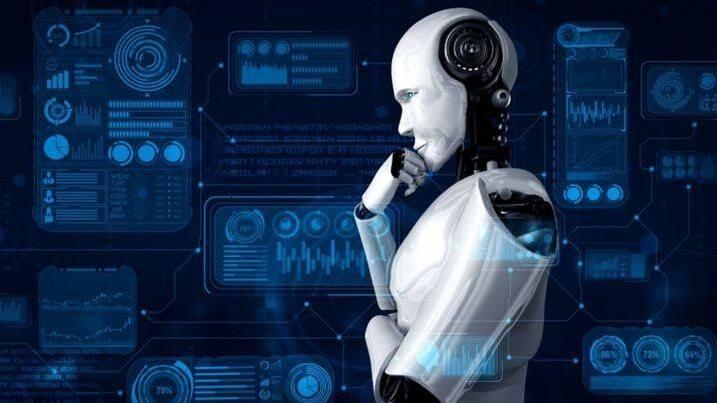
Não há um vencedor absoluto entre Grok e ChatGPT – a escolha depende do que você precisa. Se seu foco é geração de imagens ou rastreamento de fontes, o Grok pode ser a melhor opção. Se busca respostas rápidas e assertivas, o ChatGPT provavelmente atenderá melhor.
Ambas as IAs são ferramentas incríveis, e o mais fascinante é ver como elas continuam evoluindo, moldando o futuro da interação entre humanos e máquinas.
-
 @ 378562cd:a6fc6773
2025-03-31 19:20:39
@ 378562cd:a6fc6773
2025-03-31 19:20:39Bitcoin transaction fees might seem confusing, but don’t worry—I’ll break it down step by step in a simple way. 🚀
Unlike traditional bank fees, Bitcoin fees aren’t fixed. Instead, they depend on: ✔️ Transaction size (in bytes, not BTC!) ✔️ Network demand (more traffic = higher fees) ✔️ Fee rate (measured in satoshis per byte)
Let’s dive in! 👇
📌 Why Do Bitcoin Transactions Have Fees? Bitcoin miners process transactions and add them to the blockchain. Fees serve three key purposes:
🔹 Incentivize Miners – They receive fees + block rewards. 🔹 Prevent Spam – Stops the network from being flooded. 🔹 Prioritize Transactions – Higher fees = faster confirmations.
💰 How Are Bitcoin Fees Calculated? Bitcoin fees are not based on the amount of BTC you send. Instead, they depend on how much space your transaction takes up in a block.
🧩 1️⃣ Transaction Size (Bytes, Not BTC!) Bitcoin transactions vary in size (measured in bytes).
More inputs and outputs = larger transactions.
Larger transactions take up more block space, meaning higher fees.
📊 2️⃣ Fee Rate (Sats Per Byte) Fees are measured in satoshis per byte (sat/vB).
You set your own fee based on how fast you want the transaction confirmed.
When demand is high, fees rise as users compete for block space.
⚡ 3️⃣ Network Demand If the network is busy, miners prioritize transactions with higher fees.
Low-fee transactions may take hours or even days to confirm.
🔢 Example: Calculating a Bitcoin Transaction Fee Let’s say: 📦 Your transaction is 250 bytes. 💲 The current fee rate is 50 sat/vB.
Formula: 🖩 Transaction Fee = Size × Fee Rate = 250 bytes × 50 sat/vB = 12,500 satoshis (0.000125 BTC)
💡 If 1 BTC = $60,000, the fee would be: 0.000125 BTC × $60,000 = $7.50
🚀 How to Lower Bitcoin Fees? Want to save on fees? Try these tips:
🔹 Use SegWit Addresses – Reduces transaction size! 🔹 Batch Transactions – Combine multiple payments into one. 🔹 Wait for Low Traffic – Fees fluctuate based on demand. 🔹 Use the Lightning Network – Near-zero fees for small payments.
🏁 Final Thoughts Bitcoin fees aren’t fixed—they depend on transaction size, fee rate, and network demand. By understanding how fees work, you can save money and optimize your transactions!
🔍 Want real-time fee estimates? Check mempool.space for live data! 🚀
-
 @ 2e8970de:63345c7a
2025-03-31 19:08:11
@ 2e8970de:63345c7a
2025-03-31 19:08:11https://x.com/beatmastermatt/status/1906329250115858750
originally posted at https://stacker.news/items/930491
-
 @ bcbb3e40:a494e501
2025-03-31 16:00:24
@ bcbb3e40:a494e501
2025-03-31 16:00:24|
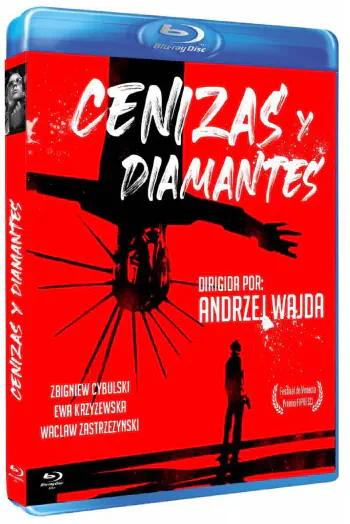 |
|:-:|
|WAJDA, Andrzej; Cenizas y diamantes, 1958|
|
|:-:|
|WAJDA, Andrzej; Cenizas y diamantes, 1958|Presentamos una nueva reseña cinematográfica, y en esta ocasión hemos elegido «Cenizas y diamantes», una película polaca del célebre y prolífico director Andrzej Wajda (1926-2016), estrenada en el año 1958. Se trata de uno de los grandes clásicos del cine polaco. El filme refleja una etapa dramática desde la perspectiva histórica para la nación polaca, como es el final de la Segunda Guerra Mundial, a raíz de la capitulación alemana del 8 de mayo de 1945. El contexto en el que se desarrolla se ambienta en la celebración del final de la guerra con el aplastante triunfo de la URSS, con las tropas soviéticas ocupando toda la Europa oriental, y en particular Polonia, que vive un momento de oscuridad e incertidumbre. El protagonista, Maciek Chełmicki (interpretado magistralmente por Zbigniew Cybulski (1927-1967), apodado el «James Dean polaco»), es un joven nacionalista polaco, de orientación anticomunista, que se ve implicado en un complot urdido para asesinar a un líder comunista local. Maciek opera desde la clandestinidad, bajo el grupo Armia Krajowa (AK), el Ejército Nacional polaco, una organización de resistencia, primero contra los alemanes y, posteriormente, contra los soviéticos. Durante el metraje, se plantea una dicotomía permanente entre la libertad entendida como la defensa de la soberanía de Polonia, desde posturas nacionalistas, y quienes consideran la ocupación soviética como algo positivo. Estas circunstancias atrapan al protagonista, que se ve envuelto en una espiral de violencia y traición.
Maciek Chełmicki, nuestro protagonista, cuenta con todas las características del héroe trágico, pues tiene en sus manos una serie de acciones que comprometen el futuro de un pueblo, que consiste en cumplir la misión que le ha sido encomendada, pero en su camino se cruza una joven, Krystyna, una joven camarera de un hotel de la que se enamora en ese mismo día. Este último hecho sirve de punto de partida para todas las dudas, dilemas y dicotomías a las que hacemos referencia. Hay un dilema moral evidente en un mundo en ruinas, devastado por la guerra, la muerte y el nihilismo. En este sentido Wajda nos muestra un lenguaje cinematográfico muy evidente, a través de una técnica expresionista muy depurada, con el uso del blanco y negro, los contrastes generados por las sombras y la atmósfera opresiva que transmite angustia, desesperación y vulnerabilidad de los protagonistas. Además también destilan una fuerte carga emocional, donde no están exentos elementos poéticos y un poderoso lirismo.
|
 |
|:-:|
|Maciek Chełmicki, el protagonista.|
|
|:-:|
|Maciek Chełmicki, el protagonista.|Hay elementos simbólicos que no podemos obviar, y que contribuyen a consolidar el análisis que venimos haciendo, como, por ejemplo, la estética del protagonista, con unas gafas oscuras, que actúan como una suerte de barrera frente al mundo que le rodea, como parte del anonimato tras el cual el joven Maciek vive de forma introspectiva su propio drama particular y el de toda una nación.
|
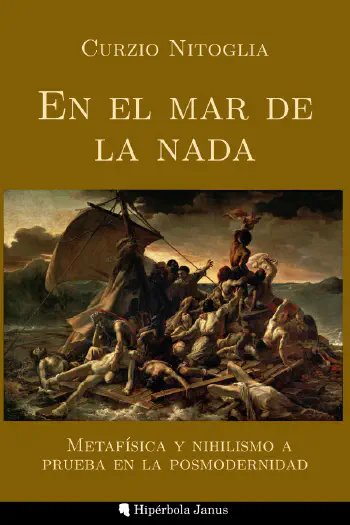 |
|:-:|
|NITOGLIA, Curzio; En el mar de la nada: Metafísica y nihilismo a prueba en la posmodernidad; Hipérbola Janus, 2023|
|
|:-:|
|NITOGLIA, Curzio; En el mar de la nada: Metafísica y nihilismo a prueba en la posmodernidad; Hipérbola Janus, 2023|Hay una escena especialmente poderosa, y casi mítica, en la que los dos jóvenes protagonistas, Maciek y Krystina, se encuentran entre las ruinas de una Iglesia, en la que se destaca en primer plano, ocupando buena parte de la pantalla, la imagen de un Cristo invertido sobre un crucifijo, donde también se encuentran dos cuerpos colgados hacia abajo en una estampa que refleja la devastación moral y espiritual de toda una época. De hecho, la imagen del crucifijo invertido refleja el máximo punto de subversión y profanación de lo sagrado, y que en el caso concreto de la película viene a representar la destrucción del orden moral y de valores cristianos que la propia guerra ha provocado. Polonia es una nación profundamente católica, convertida al Cristianismo en el 966 a raíz de la conversión del príncipe Miecislao I, contribuyendo de manera decisiva a la formación de la identidad nacional polaca. El catolicismo siempre ha sido un medio de cohesión y defensa frente a las influencias extranjeras y la ocupación de terceros países, una constante en la historia del país, como el que ilustra la propia película con la URSS. En este sentido, la imagen de una Iglesia en ruinas, el lugar donde se encuentra representado el principio de lo sagrado e inviolable, supone una forma de perversión de todo principio de redención y salvación frente a la tragedia, y al mismo tiempo viene a significar que la Tradición ha sido abandonada y pervertida. En la misma línea, el protagonista, Maciek, se encuentra atrapado en una espiral de violencia a través de sus actos terroristas perpetrados contra la autoridad soviética que ocupa su país. Los dos cuerpos anónimos que cuelgan boca abajo, de forma grotesca, también participan de este caos y desequilibrio de un orden dislocado, son parte de la deshumanización y el nihilismo que todo lo impregna.
|
 |
|:-:|
|Maciek y Krystina en una iglesia en ruinas|
|
|:-:|
|Maciek y Krystina en una iglesia en ruinas|Como ya hemos mencionado, la película se encuentra plagada de paradojas y dicotomías, en las que nuestro protagonista, el joven rebelde e inconformista, debe elegir permanentemente, en unas decisiones que resultan trascendentales para su futuro y el de la propia nación. La figura femenina que irrumpe en su vida, y que representa un principio disruptivo que provoca una fractura interior y una crisis, le suscita una toma de conciencia de su propia situación y le fuerza a tomar un camino entre la «felicidad», del «amor», la «esperanza» y la «vida», que le permita superar la deriva nihilista y autodestructiva de la lucha clandestina, la cual le aboca a un destino trágico (que no vamos a desentrañar para no hacer spoiler). En relación al propio título de la película, «Cenizas y diamantes», basada en el poema del poeta y dramaturgo polaco Cyprian Norwid (1821-1883) y en la novela del autor, también polaco, Jerzy Andrzejewski (1909-1983), nos destaca la dualidad de los dos elementos que lo componen, y que definen el contraste entre el mundo sombrío y oscuro (Cenizas) y la esperanza y la luz que representa susodicha figura femenina (diamantes). La segunda alternativa parece un imposible, una quimera irrealizable que se pliega ante un Destino implacable, irreversible y cruel.
En consecuencia, y a la luz de los elementos expuestos, podemos decir que se nos presentan dilemas propios de la filosofía existencialista, que conoce su punto álgido en esos años, con autores como Jean Paul Sartre (1905-1980), Albert Camus (1913-1960), Karl Jaspers (1883-1969) o Martin Heidegger (1889-1976) entre otros. Respecto a éste último, a Heidegger, podemos encontrar algunas claves interesantes a través de su filosofía en relación al protagonista, a Maciek, especialmente a través de la idea del Dasein, a la idea de haber sido arrojado al mundo (Geworfenheit), y la manera tan extrema y visceral en la que vive susodicha condición. Todos aquellos elementos que dan sentido a la vida colectiva se encuentran decaídos o destruidos en su esencia más íntima, la Patria, la religión o la propia idea de Comunidad orgánica. De modo que el protagonista se ha visto «arrojado» frente a una situación o destino indeseado, en unas coyunturas totalmente desfavorables en las que no queda otra elección. Sus decisiones están permanentemente condicionadas por la circunstancia descrita y, por tanto, vive en un mundo donde no controla nada, en lugar de ser sujeto es un mero objeto transportado por esas circunstancias ajenas a su voluntad. Sin embargo, y en coherencia con el Dasein heideggeriano, vemos como Maciek, a raíz de conocer a Krystyna, comienza a experimentar una catarsis interior, que muestra por momentos el deseo de superar ese «ser arrojado al mundo contra tu voluntad», trascendiendo esa condición absurda e irracional de unas decisiones enajenadas de su voluntad para dotar de una significación y un sentido la propia existencia.
|
 |
|:-:|
|Andrzej Wajda, el director de la película.|
|
|:-:|
|Andrzej Wajda, el director de la película.|Otro elemento característico de la filosofía heideggeriana lo podemos encontrar en la «angustia» (angst) a través de la ausencia de un sentido y fundamento último que justifique la existencia del protagonista. Es una angustia en a que el Dasein se enfrenta a la «nada», a ese vacío existencial que hace inútil toda la lucha que Maciek lleva a cabo en la clandestinidad, con asesinatos y actos de terrorismo que pretenden salvaguardar algo que ya no existe, y que simboliza muy bien la Iglesia en ruinas con sus símbolos religiosos invertidos de la que hablábamos con anterioridad. Recuerda un poco a esa dicotomía que se plantea entre ser conservador o reaccionario frente a una realidad como la del propio presente, en la que los valores tradicionales han sido totalmente destruidos, y más que conservar se impone la reacción para volver a construir de la nada.
|
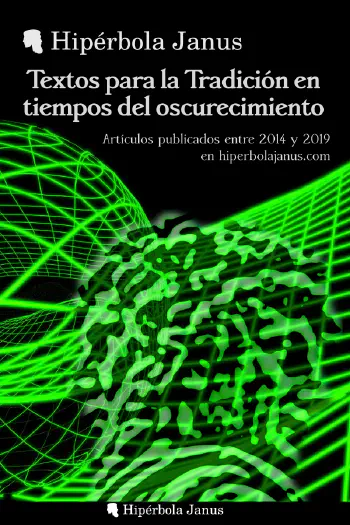 |
|:-:|
|Hipérbola Janus; Textos para la Tradición en tiempos del oscurecimiento: Artículos publicados entre 2014 y 2019 en hiperbolajanus.com; Hipérbola Janus, 2019|
|
|:-:|
|Hipérbola Janus; Textos para la Tradición en tiempos del oscurecimiento: Artículos publicados entre 2014 y 2019 en hiperbolajanus.com; Hipérbola Janus, 2019|Todas las dudas que asaltan al protagonista se ven incrementadas en el momento decisivo, cuando se dispone a dar muerte al líder comunista. Se produce una tensión interna en Maciek, que se encuentra ligado a la joven que ha conocido ese día, y en ella es donde encuentra ese leve destello de humanidad. Esa circunstancia le hace replantearse por un instante el cumplimiento de su misión, pero es un dilema que no tiene salida, y por ello le asalta nuevamente la angustia frente a esa «nada», ese mundo vacío e incomprensible que trasciende el marco de sus propias elecciones.
Uno de los conceptos centrales de Heidegger en Ser y tiempo es el Sein-zum-Tode (ser-para-la-muerte), la idea de que la muerte es la posibilidad más propia y definitiva del Dasein, y que enfrentarla auténticamente permite vivir de manera más plena. Y es que el protagonista se encuentra permanentemente sobre esa frontera entre la vida y la muerte, que afronta con todas sus consecuencias, conscientemente, y la acepta. Esta actitud podría leerse como una forma de Dasein inauténtico, una huida del ser-para-la-muerte mediante la distracción (das Man, el «se» impersonal). Sin embargo, su decisión de cumplir la misión sugiere un enfrentamiento final con esa posibilidad. Otro aspecto que podemos conectar con el pensamiento heideggeriano es la autenticidad o inautenticidad de la vida del protagonista. En relación a la inautenticidad vemos como al principio sigue las órdenes de sus superiores en la organización sin cuestionarlas, lo cual implica un comportamiento inequívocamente alienante. Respecto a aquello que resulta auténtico de su existencia son sus relaciones con Krystyna, que supone imponer su propia voluntad y decisión, mostrando un Dasein que asume su libertad.
|
 |
|:-:|
|Escena de la película.|
|
|:-:|
|Escena de la película.|Otros aspectos más generales de la filosofía existencialista redundan sobre estos mismos aspectos, con la elección entre la libertad absoluta y la condena inevitable. La idea del hombre condenado a actuar, a una elección continua, aún cuando el hombre no es dueño de su destino, o las consecuencias de tales acciones son absurdas, irracionales e incomprensibles. El propio absurdo de la existencia frente al vacío y la ausencia de principios sólidos en los que cimentar la vida, no solo en sus aspectos cotidianos más básicos, sino en aquellos más profundos de la existencia. La soledad y la propia fatalidad frente a un Destino que, como ya hemos apuntado anteriormente, parece imponerse de manera irrevocable, y podríamos decir que brutalmente, al individuo aislado, incapaz de asirse en una guía, en unos valores que le permitan remontar la situación.
En términos generales «Cenizas y diamantes», además de ser una película de gran calidad en sus aspectos técnicos, en su fotografía, en la configuración de sus escenas y en el propio desarrollo argumental, bajo un guión espléndidamente ejecutado a lo largo de sus 98 minutos de duración, también nos invita a una reflexión profunda sobre la condición humana y la propia Modernidad. Y es algo que vemos en nuestros días, con las consecuencias de un pensamiento débil, con la promoción del individualismo, el hedonismo y lo efímero. La ausencia de estructuras sólidas, la subversión de toda forma de autoridad y jerarquía tradicionales. Paradójicamente, el mundo actual tiende a formas de poder y autoridad mucho más invasivas y coercitivas, tanto a nivel individual como colectivo, pero en la misma línea abstracta e impersonal que nos describe la película, abocándonos a la alienación y la inautenticidad de nuestras propias vidas. Y como Maciek, también nosotros, vivimos en un mundo dominado por la incertidumbre y la desesperanza, en el que el globalismo y sus perversas ideologías deshumanizantes actúan por doquier.
|
 |
|:-:|
|Carátula original de la película en polaco.|
|
|:-:|
|Carátula original de la película en polaco.|
Artículo original: Hipérbola Janus, Reseña de «Cenizas y Diamantes» (Andrzej Wajda, 1958) (TOR), 31/Mar/2025
-
 @ bcbb3e40:a494e501
2025-03-31 15:41:53
@ bcbb3e40:a494e501
2025-03-31 15:41:53El 7 de febrero de 2025, Donald Trump firmó una orden ejecutiva que establecía una «Oficina de la Fe» en la Casa Blanca, dirigida por su asesora espiritual Paula White-Cain, la pastora de esa «teología de la prosperidad» (prosperity theology) que predica el «Evangelio de la salud y la riqueza» (health and wealth gospel^1). Investida de su nueva función, la reverenda pastora dijo: «Tengo la autoridad para declarar a la Casa Blanca un lugar santo. Es mi presencia la que la santifica»[^2]. Los siete rabinos del «Sanedrín Naciente» —la corte suprema que guiará a Israel cuando se reconstruya el Templo de Jerusalén— enviaron conmovedoras felicitaciones al presidente Trump por el establecimiento de esta Oficina. «Expresamos nuestra sincera gratitud —se lee en el mensaje oficial enviado a Trump desde el Monte Sión— por llevar la fe a la vanguardia de la cultura estadounidense y mundial mediante el establecimiento de la Oficina de la Fe en la Casa Blanca. Su reconocimiento de la importancia de la religión en la vida pública es un paso hacia la restauración de los valores morales y del liderazgo espiritual en el mundo[^3]. La carta del «Sanedrín Naciente», que augura el éxito a la «misión divina» del presidente estadounidense, reproduce las dos caras de una «moneda del Templo», acuñada en 2017 para celebrar el traslado de la embajada estadounidense a Jerusalén y, simultáneamente, el centenario de la Declaración Balfour. En el anverso se ven los perfiles de Donald Trump y Ciro el Grande, a quien la tradición judía atribuye la reconstrucción del templo destruido por los babilonios, con la inscripción (en hebreo e inglés) «Cyrus —Balfour— Trump Declaration 1917-2017»; en el reverso está la imagen del Templo de Jerusalén[^4]. Otra moneda, que lleva los perfiles de Trump y Ciro en el anverso y los de Trump y Netanyahu en el reverso, fue acuñada en 2018 para celebrar el septuagésimo aniversario de la independencia del «Estado de Israel»; se observa dos inscripciones en hebreo e inglés: «Y Él me encargó construirle una casa en Jerusalén» y «Guerra de los Hijos de la Luz contra los Hijos de las Tinieblas».
El tema de la «guerra de los Hijos de la Luz contra los Hijos de las Tinieblas» ha tenido una difusión particular en el imaginario y la propaganda trumpista. El 7 de junio de 2020, monseñor Carlo Maria Viganò, ex nuncio de la Santa Sede en los Estados Unidos, escribió una carta al presidente Donald Trump que comenzaba así: «Estamos asistiendo en los últimos meses a la formación de dos bandos, que los definiría bíblicos: los hijos de la luz y los hijos de las tinieblas»[^5]. El 1 de enero de 2021, el agitprop estadounidense Steve Bannon declaró en una entrevista con Monseñor Viganò: «Esta es una batalla de época entre los hijos de la Luz y los hijos de las Tinieblas»[^6].
Son numerosos los judíos sionistas que están en el círculo del presidente Trump: además de su hija Ivanka (convertida en 2009) y su yerno Jared Kushner (entonces Consejero Anciano del Presidente), el 19 de noviembre de 2024 el «The Jerusalem Post»[^7] publicó una lista de los más influyentes: Stephen Miller, subdirector del staff de la Casa Blanca y consejero de Seguridad Nacional de Estados Unidos; David Melech Friedman, a quien en 2016 Trump nombró embajador en Israel; el multimillonario «filántropo» Steven Charles Witkoff, enviado especial de Estados Unidos a Oriente Medio; Miriam Adelson, directora del periódico «Israel Hayom», clasificada por Bloomberg Billionaires como la quinta mujer más rica del mundo (con un patrimonio neto de 32,400 millones de dólares), financiadora de iniciativas políticas conservadoras en Estados Unidos e Israel; el banquero Boris Epshteyn, consejero estratégico de la campaña presidencial de Trump en 2020; Howard Williams Lutnick, presidente de la Cantor Fitzgerald del Grupo BGC, financista de las campañas presidenciales de Donald Trump en 2020 y 2024, ahora secretario de Comercio; la modelo Elizabeth Pipko, portavoz nacional del Partido Republicano y creadora de un «museo interactivo virtual» sobre la «Shoah» como parte del proyecto de Lest People Forget, cuyo objetivo es combatir el «antisemitismo» y la «negacionismo»; Lee Michael Zeldin, miembro republicano de la Cámara de Representantes por el estado de Nueva York del 2015 al 2023 y actualmente administrador de la EPA (Environmental Protection Agency); la columnista Laura Elizabeth Loomer, «orgullosamente islamófoba», activa patrocinadora de Trump en la campaña para las elecciones presidenciales de 2024; Sidney Ferris Rosenberg, influyente presentador de radio y periodista deportivo; William Owen Scharf, Asistente del Presidente y secretario del personal de la Casa Blanca; Marc Jeffrey Rowan, «filántropo» con un patrimonio neto valorado por Forbes en ocho mil ochocientos millones de dólares.
Además de estos, cabe mencionar al popular presentador de radio Mark Levin quien, en diciembre de 2019, durante la celebración de la fiesta de Janucá en la Casa Blanca, saludó a Donald Trump como «el primer presidente judío de los Estados Unidos»[^8]. Según un funcionario de alto nivel de la Casa Blanca, Donald Trump se convirtió al judaísmo dos años antes en la sinagoga de la secta Jabad Lubavitch en la ciudad de Nueva York. David Elias Goldberg, miembro del Jewish Center of Antisemitic Study, también entrevistó al funcionario, para quien «Trump fue “instado” por su hija Ivanka y su yerno Jared Kushner para abrazar la fe. Inicialmente, Trump se habría mostrado reacio, considerando que esto podría enfriar el apoyo del electorado evangélico». Luego, informa «Israel Today News», «cambió de opinión y se convirtió oficialmente a principios de 2017. La ceremonia se llevó a cabo en privado y se guardó celosamente durante casi dos años»[^9]. Pero ya en septiembre de 2015, el rabino millonario Kirt Schneider, invitado a la Trump Tower de Nueva York, había impuesto sus manos sobre la cabeza de Donald Trump y lo había bendecido en hebreo e inglés, declarando: «Las únicas dos naciones que tienen una relación privilegiada con Dios son Israel y los Estados Unidos de América»[^10].
El 7 de octubre de 2024, en el aniversario de la operación de Hamas «Diluvio de Al-Aqsa», Trump fue acompañado por un «superviviente de la Shoah» a la tumba de Menachem Mendel Schneerson, séptimo y último Rabino de los Hasidim de la secta Jabad Lubavitch, que en 1991 declaró a sus seguidores: «He hecho todo lo posible para provocar el arribo del Mesías, ahora les paso a ustedes esta misión; hagan todo lo que puedan para que Él venga»^11. En relación al evento mesiánico, el eminente rabino Yekutiel Fish atribuyó una misión decisiva a Trump: «Todo el mundo está centrado en Gaza, pero esa es solo una parte de la agenda del fin de los tiempos, que tiene a los judíos viviendo en las fronteras profetizadas de Israel; la Torá incluye explícitamente a Gaza. Lo que Trump está haciendo es limpiar Gaza de todos los odiadores de Israel. No podrán estar en Israel después de la venida del Mesías. (...) Esto incluirá a Gaza, la mitad del Líbano y gran parte de Jordania. Y vemos que casi lo hemos logrado. Siria cayó. Líbano está medio destruido. Gaza está destrozada. El escenario está casi listo para el Mesías. Pero, ¿cómo pueden los palestinos estar aquí cuando vayamos a recibir al Mesías? El Mesías necesita que alguien se ocupe de esto, y en este caso, es Donald Trump. Trump está simplemente llevando a cabo las tareas finales necesarias antes de que el Mesías sea revelado»[^12].
Esta inspiración escatológica está presente en las palabras de Pete Brian Hegseth, el pintoresco exponente del «Reconstruccionismo Cristiano»[^13] a quien Trump nombró secretario de Defensa. En un discurso pronunciado en 2019 en el Hotel Rey David de Jerusalén, con motivo de la conferencia anual del canal Arutz Sheva (Israel National News), Hegseth enalteció el «vínculo eterno» entre Israel y Estados Unidos, y enumeró los «milagros» que atestiguan el «apoyo divino» a la causa sionista, el último de los cuales será la reconstrucción del Templo judío en la zona donde actualmente se encuentra la mezquita de al-Aqsa: «La dignidad de capital adquirida por Jerusalén —dijo— fue un milagro, y no hay razón por la cual no sea posible el milagro de la restauración del Templo en el Monte del Templo».[^14]
Es conocido que el fundamentalismo evangélico pro-sionista[^15] comparte con el judaísmo la creencia en que la construcción del tercer Templo de Jerusalén marcará el comienzo de la era mesiánica; cuando la administración Trump trasladó la embajada de Estados Unidos a Jerusalén en 2017, Laurie Cardoza-Moore, exponente del evangelismo sionista, saludó así la «obediencia de Trump a la Palabra de Dios» en «Haaretz»: «Al establecer la Embajada en Jerusalén, el presidente Donald Trump está implementando una de las iniciativas históricas de dimensión bíblica en su presidencia. Al igual que muchos judíos en Israel y en todo el mundo, los cristianos reconocen el vínculo de los judíos con la Biblia a través del nombre de Jerusalén como la capital del antiguo Israel, así como el sitio del Primer y Segundo Templos. Según los profetas Ezequiel, Isaías y el apóstol Juan del Nuevo Testamento, todos los israelíes esperan la reconstrucción del Tercer Templo»[^16]. El 22 de mayo del mismo año, Donald Trump, acompañado de su esposa Melania, de su hija Ivanka y su yerno Jared Kushner, fue el primer presidente de los Estados Unidos en ejercicio en acudir al Muro de las Lamentaciones, anexionado ilegalmente a la entidad sionista.
En 2019, la administración Trump confirmó la posición de Estados Unidos al enviar en visita oficial para Jerusalén a Mike Pompeo, un secretario de Estado que —ironía de la Historia— lleva el mismo nombre del general romano que asaltó la ciudad en el año 63 a.C. «Por primera vez en la historia, un secretario de Estado norteamericano visitó la Ciudad Vieja de Jerusalén en compañía de un alto político israelí. Fue una visita histórica que reforzó las expectativas israelíes y constituyó un reconocimiento tácito de la soberanía israelí sobre el sitio del Monte del Templo y la Explanada de las Mezquitas. (…) Mike Pompeo, acompañado por el primer ministro Benjamin Netanyahu y el embajador de Estados Unidos en Israel, David Friedman, también visitó el túnel del Muro de las Lamentaciones y la sinagoga ubicada bajo tierra, en el presunto lugar del santuario del Templo[^17], donde se le mostró una maqueta del futuro Templo[^18]. En el transcurso de una entrevista concedida durante la fiesta del Purim (que celebra el exterminio de la clase política persa, ocurrido hace 2500 años), el secretario de Estado insinuó que «el presidente Donald Trump puede haber sido enviado por Dios para salvar al pueblo judío y que confiaba en que aquí el Señor estaba obrando»[^19].
Como observa Daniele Perra, en este mismo número de «Eurasia», el «mito movilizador» del Tercer Templo, atribuible a los «mitos teológicos» señalados por Roger Garaudy como mitos fundadores de la entidad sionista, «atribuye al judaísmo una especie de función sociológica de transmisión y proyección del conflicto palestino-israelí hacia el resto del mundo y confiere una inspiración apocalíptica al momento geopolítico actual».
|Info|| |:-|:-| |Autor| Claudio Mutti | |Fuente| I "Figli della Luce" alla Casa Bianca | |Fecha| 8/Mar/2025 | |Traducción| Francisco de la Torre |
[^2]: The White House, President Trump announces appointments to the White House Faith Office https://www.whitehouse.gov,, 7 de febrero de 2025; Trump establece la Oficina de la Fe con una foto de «La Última Cena» | Fue dirigida por la controvertida predicadora Paula White, https://www.tgcom24.mediaset.it, 10 de febrero de 2025.
[^3]: «We extend our heartfelt gratitude for bringing faith to the forefront of American and global culture through the establishment of the Faith Office in the White House. Your recognition of the importance of religion in public life is a step toward restoring moral values and spiritual leadership in the world» (Letter from the Nascent Sanhedrin to President Donald J. Trump, Jerusalem, Wednesday, February 12, 2025).
[^4]: Israeli group mints Trump coin to honor Jerusalem recognition, «The Times of Israel», https://www.timesofisrael.com, 28-2-2018.
[^5]: Mons. Viganò — Siamo nella battaglia tra figli della luce e figli delle tenebre, https://www.italiador.com, 7-6-2020
[^6]: TRANSCRIPT: Steve Bannon’s ‘War Room’ interview with Abp. Viganò, lifesitenews.com, 4-1-2021. Sulle origini e sulla fortuna di questo tema cfr. C. Mutti, Le sètte dell’Occidente, «Eurasia», 2/2021, pp. 12-15. (https://www.eurasia-rivista.com/las-sectas-de-occidente/)
[^7]: Luke Tress, The who’s who of Jews in Trump’s inner circle?, «The Jerusalem Post», https://www.jpost.com, 19-11-2024.
[^8]: Radio Talk Show Host Mark Levin Calls President Trump «the First Jewish President of the United States», https://www.c-span.org, 11-12-2019.
[^9]: «However, he had a change of heart and officially converted in early 2017. The ceremony was held in private, and closely guarded for nearly two years» (Donald Trump converted to Judaism two years ago, according to White House official, https://israeltodaynews.blogspot.com/2019/02).
[^10]: «El rabino Kirt Schneider (...) es un millonario judío, una figura televisiva de los “judíos mesiánicos”. Sus emisiones televisivas semanales son emitidas por más de treinta canales cristianos en unos doscientos países; entre ellos, los canales “Yes” y “Hot” en Israel. Solo en Estados Unidos, sus emisiones atraen a 1.600.000 telespectadores cada semana. Kirt Schneider dirige un imperio de telecomunicaciones que tiene un millón y medio de seguidores en Facebook, X (antes Twitter) y YouTube» (Pierre-Antoine Plaquevent — Youssef Hindi, El milenarismo teopolítico de Israel, Edizioni all'insegna del Veltro, Parma 2025, p. 31).
[^12]: «Everyone is focused on Gaza, but that is only one part of the end-of-days agenda, which has the Jews living in Israel’s prophesied borders. The Torah explicitly includes Gaza. What Trump is doing is cleaning out Gaza of all the haters of Israel. They cannot be in Israel after the Messiah comes. (…) This will include Gaza, half of Lebanon, and much of Jordan. And we see that we are almost there. Syria fell. Lebanon is half gone. Gaza is ripped up. The stage is nearly set for Messiah. But how can the Palestinians be here when we go to greet the Messiah? The Messiah needs someone to take care of this, and in this case, it is Donald Trump. Trump is merely carrying out the final tasks needed before Messiah is revealed» (Adam Eliyahu Berkowitz, Trump’s Gaza Plan is «The Final task before Messiah», https://israel365news.com, 5-2-2025).
[^13]: «A day after Hegseth was announced for the Cabinet position, Brooks Potteiger, a pastor within the Communion of Reformed Evangelical Churches (CREC), posted on X that Hegseth is a member of the church in good standing. The CREC, a denomination of Christian Reconstructionism, is considered by some academics to be an extremist, Christian supremacist movement» (Shannon Bond e altri, What’s behind defense secretary pick Hegseth’s war on ‘woke’, https://www.npr.org, 14-11-2024.
[^14]: «The decoration of Jerusalem as a capital was a miracle, and there is no reason why the miracle of the re-establishment of Temple on the Temple Mount is not possible» (Pete Hegseth at Arutz Sheva Conference, youtube.com). Cfr. Daniele Perra, Paleotrumpismo, neotrumpismo e post-trumpismo, in: AA. VV., Trumpismo, Cinabro Edizioni, Roma 2025, pp. 22-23.
[^15]: Pierre-Antoine Plaquevent — Youssef Hindi, El milenarismo teopolítico de Israel, cit., págs. 82 a 96.
[^16]: «We American Christians Welcome Trump’s Obedience to God’s Word on Jerusalem», «Haaretz», 6-12-2017.
[^17]: Pierre-Antoine Plaquevent — Youssef Hindi, El milenarismo teopolítico de Israel, cit., pág. 97.
[^18]: Pompeo en visite historique au mur Occidental aux côtés de Netanyahu et Friedman, «The Times of Israel», https://fr.timesofisrael.com, 21-3-2019.
[^19]: Pompeo says Trump may have been sent by God to save Jews from Iran, «The Times of Israel», 22-3-2019.
-
 @ bcbb3e40:a494e501
2025-03-31 15:34:12
@ bcbb3e40:a494e501
2025-03-31 15:34:12|
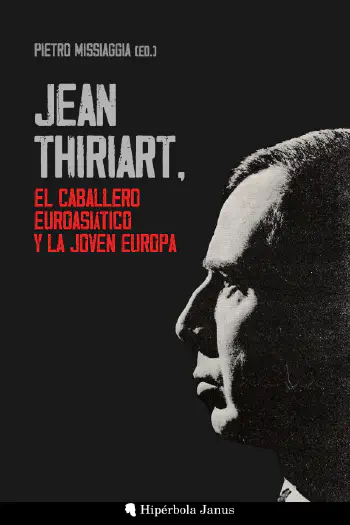 |
|:-:|
|MISSIAGGIA, Pietro; Jean Thiriart, el caballero euroasiático y la Joven Europa; Hipérbola Janus, 2025|
|
|:-:|
|MISSIAGGIA, Pietro; Jean Thiriart, el caballero euroasiático y la Joven Europa; Hipérbola Janus, 2025|Desde nuestros inicios los autores y temáticas relacionadas con la geopolítica nos han procurado atención e interés por parte del gran público y de los mass media, y no hay más que recordar el efecto que han venido teniendo nuestras obras de Aleksandr Duguin, en especial La geopolítica de Rusia y Proyecto Eurasia: teoría y praxis, sobre todo a raíz de nuestra presentación en Casa de Rusia en un ya lejano 2016, con la inestimable colaboración de Jordi de la Fuente como prologuista, trabajo que siempre reivindicamos desde nuestros medios por el prestigio, la calidad y brillantez de exposición del mismo.
Más allá de las obras del prestigioso y afamado filósofo y politólogo ruso, también hemos realizado otras incursiones en esta vertiente, que podríamos llamar «geopolítica alternativa», introduciendo las obras de otros notables autores como Claudio Mutti, Carlo Terracciano o Boris Nad. Con estos autores hemos tratado de profundizar en esa vía que se opone frontalmente, y radicalmente si se quiere, a los planteamientos derivados de la geopolítica atlantista y liberal que tiene su principal polo en Estados Unidos, haciendo especial hincapié en el subyugamiento que vienen ejerciendo desde 1945 en adelante respecto a una Europa convertida en un protectorado en una mera colonia.
Es por este motivo por el que la publicación de Jean Thiriart, el caballero euroasiático y la Joven Europa nos parece una obra totalmente pertinente en estos momentos, forma parte del desarrollo lógico de la línea editorial en la que estamos encauzados desde nuestros inicios, y viene a representar una de las múltiples vías en las que confluye la idea, profundamente schmittiana, de la política de los grandes espacios. En este caso la idea de una Europa unida, bajo un vasto proyecto que traspasa los estrechos límites del continente concebido como un apéndice más del «Occidente», de ese subproducto ideológico decadente y funcional a los intereses del otro lado del Atlántico. Para comprender la idea de una Europa unida, que comprenda a Rusia, y su enorme extensión territorial a lo largo de 17 millones de kilómetros cuadrados, y la importancia estratégica de su ubicación, es necesario recurrir al legado de Jean Thiriart, conocer su obra, pero también al hombre, pues una no se comprende sin el otro, en este caso hablamos de elementos correlativos.
|
 |
|:-:|
|Jean Thiriart (1922-1992)|
|
|:-:|
|Jean Thiriart (1922-1992)|¿Pero quién fue Jean Thiriart? Esta obra nos permite adentrarnos en aspectos biográficos, algunos de ellos poco conocidos para el gran público de habla hispana, y saber de su trayectoria, de la maduración de sus ideas, de su proyecto político y de las etapas que componen el desarrollo del mismo y que aparecen claramente diferenciadas: hablamos del proyecto político de unidad europea, que alcanza su concreción teórica en ¡Arriba Europa!: Una Europa unida: un imperio de 400 millones de hombres (1965, Editorial Mateu, Barcelona), en pleno apogeo de la organización Jeune Europe, que se convirtió en el órgano político a partir del cual creyó poder implementar su proyecto unitario a escala europeo, manteniendo una posición de independencia respecto a los dos pretendidos bloques antagónicos de Guerra Fría: Estados Unidos y la Unión Soviética. En esa época, estamos hablando del ecuador de los años 60, todo el mundo de la Contracultura, falsamente contestatario, estaba articulando su propio discurso, que tendría su expresión más nítida a través del ya conocido Mayo del 68 francés o la Primavera de Praga, durante el mismo año. Y si el movimiento de Nueva Derecha liderado por Alain de Benoist surgiría en lo sucesivo, ya en la década de los años 70, como una «reacción» frente a la «rebelión contracultural», no podemos obviar la importancia de un movimiento político como Jeune Europe, una organización política transnacional, a escala de la Europa occidental, con sus diferentes delegaciones en países como Francia, Italia, Alemania, la propia España además de, como es obvio, Bélgica, país de origen de nuestro autor.
Jean Thiriart ha sido etiquetado con reiteración como un político y teórico de «extrema derecha», se han hecho numerosos discursos interesados para vincularlo, por cuestiones de orden biográfico muy circunscritas a determinado periodo, con el fascismo y el nacionalsocialismo de entreguerras. Sin embargo, y como el lector podrá descubrir a lo largo de la presente obra, el pensamiento de nuestro autor está muy lejos de ser reducible a meras etiquetas, y en ningún caso mostró las filiaciones que se le atribuyen desde posicionamientos ideológicos, sino que, muy al contrario, vemos a un hombre de pensamiento racional y pragmático, poderosamente influenciado por la geopolítica y abierto a alianzas estratégicas más variadas, más allá de todo fundamentalismo ideológico. Es por este motivo que veremos a un Thiriart buscando sinergias y entendimiento entre círculos de izquierdas, antiimperialistas en una lucha concebida como «cuatricontinental». No en vano, muchos de los cuadros políticos que se formaron en Giovane Europa, la rama italiana, terminaron por militar incluso en organizaciones de extrema izquierda de inspiración maoísta. En el caso de España hubo un notable apoyo a la organización por parte de los falangistas más disidentes. De manera que Jean Thiriart representa una figura política compleja, con influencias variadas, que van desde los hermanos Strasser, pasando por Ernst Niekish o Vilfredo Pareto, e incluso, por Sieyès o Robespierre.
Es a partir de Jeune Europe cuando el nacionalismo europeo, la idea de una Europa unida desde Brest a Bucarest toma cuerpo. En la obra mencionada con anterioridad (¡Arriba Europa!: Una Europa unida: un imperio de 400 millones de hombres) Jean Thiriart ya nos presenta a través de unos trazos muy definidos el proyecto del comunitarismo nacional-europeo, la piedra angular de su proyecto político. La idea de un socialismo aristocrático y europeo, trascendiendo las fronteras del Estado-nación liberal decimonónico, y los particularismos nacionales, concebidos como formas obsoletas y «estrechas de miras», obstáculos a superar en la convergencia del Imperio europeo. Porque vemos a un Thiriart que potencia la estructura del Estado, del aparato de poder, tratando de potenciar, y restaurar naturalmente, el papel y la preponderancia de Europa como espacio de civilización en el mundo. Es un nacionalismo europeo que viene determinado por razones puramente geopolíticas, algo que también fue objeto de críticas, concretamente por parte del geopolítico austriaco Heinrich von Lohausen, y que también recogemos en el presente volúmen de la obra.
|
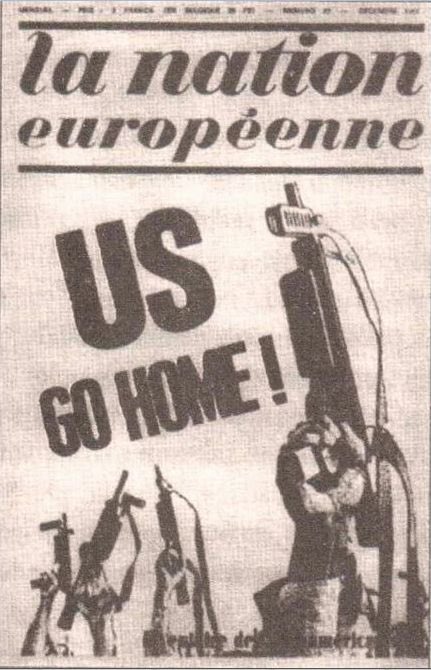 |
|:-:|
|Ejemplar de una de las publicaciones más importantes de Joven Europa (Jeune Europe) cuya portada refleja el antiamericanismo y antiimperialismo característicos del nacionalismo europeo de la organización.|
|
|:-:|
|Ejemplar de una de las publicaciones más importantes de Joven Europa (Jeune Europe) cuya portada refleja el antiamericanismo y antiimperialismo característicos del nacionalismo europeo de la organización.|En este sentido, Thiriart no andaba nada desencaminado, en la medida que pensaba que solo los Estados de dimensiones continentales podrían ser capaces de defender su independencia y soberanía, y ejercer un poder en el mundo, frente a los antiguos nacionalismos europeos, totalmente anacrónicos y un factor de ruptura y desintegración del potencial europeo. En este contexto, se hace necesario eliminar el orden establecido en Yalta en 1945, que convierte a Europa en un vasallo de las grandes potencias vencedoras de la Segunda Guerra Mundial. De modo que luchar contra la ocupación estadounidense por un lado, y soviética por otro lado, fuese el principal leitmotiv del Partido Revolucionario Europeo, un partido histórico señala Thiriart, encargado de llevar a término la acción unificadora continental. Y es con este propósito con el que se tratan de concertar una serie de alianzas internacionales que llevó a Thiriart y su organización a tratar con personal diplomático y gubernamental de los países árabes no alineados, del régimen de Fidel Castro o incluso con emisarios del gobierno chino, como ocurrió en el famoso encuentro propiciado por Ceaucescu en Bucarest con Zhou En-Lai.
Quizás, uno de los puntos donde más desacuerdos encontramos con las teorías thiriartianas se encuentra en ciertos fundamentos que la articulan, en un modelo racionalista, materialista y pragmático, de hecho no debemos olvidar que Maquiavelo era uno de sus referentes, y con éste la posterior hornada de autores neomaquiavélicos como Vilfredo Pareto. El excesivo pragmatismo de sus planteamientos, un estatalismo exacerbado y sin concesiones a las particularidades de los pueblos, una suerte de centralismo jacobino, y la ausencia de un elemento trascendente capaz de dar una justificación metafísica a todo el proyecto nacional europeo constituyen, en nuestra opinión, una parte discutible y reformulable.
En otro terreno, como pueda ser el puramente económico, encontramos un proyecto anticapitalista en muchos de sus aspectos, frente al democratismo parlamentario liberal, y apoyándose en las teorías económicas de Johann G. Fichte o Friedrich List, rechazando cualquier organización económica transnacional que pueda mediatizar o convertir a Europa en objeto de sus actividades usurocráticas y depredatorias, colocando la soberanía e independencia económica europea en una de las máximas prioridades en este terreno.
Debemos destacar, porque es un elemento de debate especialmente interesante, el apartado del libro que se corresponde al escrito de Luc Michel, publicado en Italia bajo el título Da Jeune Europe alle Brigate Rosse, en el libro Parte II Historia de Jeune Europe (1962-1969), en el que se detallan las colaboraciones que comenzaron a sucederse entre la militancia de la delegación italiana, Giovane Europa, y círculos de extrema izquierda maoísta, y cómo muchos de los antiguos militantes nacional-europeos terminaron militando en organizaciones de esta facción ideológica, y nos referimos a casos tan representativos en la época como Claudio Orsoni o Pino Bolzano entre otros muchos.
La actividad proselitista de Jeune Europe en el último lustro de la década de los años 60, con la fundación del Partido Comunitario Europeo, nos legó una gran cantidad de publicaciones, entre las cuales destacaron La Nation Européenne, La Nazione Europea o Europa Combattente, cuyas portadas han servido para ilustrar las páginas interiores de nuestra obra, y que procuraron una actividad proselitista y de difusión de ideas que llegaron a imprimir semanal y mensualmente varios miles de ejemplares en Francia o en Italia.
Tras agotar todas las vías posibles de alianzas y convergencias, con encuentros poco afortunados, vemos a un Thiriart que prefiere adoptar otras vías para seguir construyendo el proyecto nacional-europeo más allá de la fórmula activista y del partido político. Este es el motivo por el cual, en los siguientes años, ya en la última etapa de su vida, veremos esa transición del político activista al teórico y al ideólogo como parte de una nueva estrategia dentro del proyecto político al que consagró buena parte de su vida, y es un hecho que comienza a apreciarse desde mediados de los años 70. Durante esta época la «Europa de Brest a Bucarest» se transforma y amplía en una «Europa desde Dublín a Vladivostok». Thiriart aborda ya abiertamente la integración del espacio soviético en una Europa unida que abarca un inmenso espacio territorial, capaz de unir el Océano Atlántico y el Océano Pacífico de un extremo a otro, el «Imperio Eurosoviético». No obstante, Thiriart siempre piensa en términos geopolíticos, y considera que este proceso de integración debe llevarse a cabo desde una revisión de la ideología soviética, desde una marcada desmarxistización de su socialismo, purgado de todo dogmatismo y elementos condicionantes derivados de la teoría del Estado formulada por el marxismo-leninismo para tomar en su lugar aquella de Thomas Hobbes.
A partir de este momento solamente hay un enemigo, el que representa el poder estadounidense y el dominio que éste ejerce sobre la Europa occidental. A partir de ese momento la URSS, bajo las premisas apuntadas por Thiriart, y desde una ideología soviética «desmarxistizada», es la que debe asumir el proyecto de integración europea. Todo este enfoque terminará conociendo su colofón final al final de la vida de Jean Thiriart, cuando éste se encuentre ya en sus último año de vida, en 1992, con una Unión Soviética ya periclitada y disuelta, con un país sumido en una crisis económica, política y social bajo el gobierno decadente de Yeltsin, con un poder notablemente menguado y a merced de las potencias extranjeras y las apetencias de las organizaciones financieras transnacionales. En este contexto tendrá lugar el conocido viaje de Jean Thiriart a Moscú, donde se encontrará, además de con la disidencia de Yeltsin, encabezada por el Partido Comunista dirigido por Gennadij Ziuganov y numerosas personalidades públicas del ámbito ruso, entre las que destacará por encima de todos el filósofo y politólogo Aleksandr Duguin, quien en la presente obra también reivindica la figura del belga como un contribuidor directo del pensamiento euroasiático. Además de medios de prensa, políticos e intelectuales rusos, nuestro autor también compartirá espacio con una pequeña delegación de la revista italiana «Orion», especializada en temática geopolítica, y representada por el padre de la geopolítica italiana, Carlo Terracciano. El encuentro no tendrá mayores consecuencias, y vendrá a significar el último acto de servicio de Jean Thiriart en su denodado esfuerzo por lograr la integración de Europa y Rusia en un poderoso bloque geopolítico capaz de hacer frente a la hegemonía estadounidense en el mundo.
Terminaremos este breve y sintético escrito de presentación con un fragmento de la obra que Jean Thiriart publicó en 1965 bajo el título ¡Arriba Europa!: Una Europa unida: un imperio de 400 millones de hombres, que nos parece de lo más adecuado para poner el punto final al presente texto:
Europa, este MILAGRO en la historia del hombre, este milagro que siguió al milagro griego, ha dado vida, con la prodigiosa fecundidad de su civilización irrepetible, a una cultura adoptada por el mundo entero. En la competencia surgida entre las grandes civilizaciones —occidental, india, china y japonesa— la nuestra ha aplastado a las demás.
La civilización es creadora de cultura. La cultura, en cambio, jamás ha creado civilización.
SOLO Europa posee la civilización; de ahí deriva su supremacía sobre los Estados Unidos y la Rusia comunista, que poseen únicamente la cultura nacida de nuestra civilización, como ha demostrado magistralmente Oswald Spengler.
Esta cultura, separada de su civilización, está condenada a la esterilidad, la cual se manifestará primero mediante una esclerosis y, posteriormente, mediante un retorno a la barbarie.
Políticamente dominada por Moscú o por Washington, la civilización europea se ve asfixiada y corre el riesgo de estancarse en su estado de simple cultura. Basta notar que todos los descubrimientos en el campo nuclear y astronáutico son obra de europeos. Todos buscan a los científicos europeos.
Solo una Europa políticamente unida puede proveer los medios de poder que garantizarán las condiciones históricas indispensables para la supervivencia de esta civilización.
Ninguna otra potencia, por otra parte, podría sustituir a Europa en su misión hacia la humanidad.
Artículo original: Hipérbola Janus, Presentación de «Jean Thiriart, el caballero euroasiático y la Joven Europa», de Pietro Missiaggia (TOR), 18/Mar/2025
-
 @ 52524fbb:ae4025dc
2025-03-31 15:26:46
@ 52524fbb:ae4025dc
2025-03-31 15:26:46 To most of us it's all about the sound of freedom, the innovation, it's technical implication, what if feels like in a decentralised environment. Now let's head into that which brings our fantasies to reality, Nostr which stands for "Notes and other stuffs Transmitted by Relays", is an open protocol designed for decentralised social networking
To most of us it's all about the sound of freedom, the innovation, it's technical implication, what if feels like in a decentralised environment. Now let's head into that which brings our fantasies to reality, Nostr which stands for "Notes and other stuffs Transmitted by Relays", is an open protocol designed for decentralised social networkingNost most Amazing Features:##
-
Decentralisation: compared to traditional social media platforms like like Twitter (X) and Instagram that rely on centralised servers, Nostr operates through a network of relays. These relays serves as servers that store and forward messages. This amazing feature of decentralisation aims to make the network completely resistant to censorship, most people would say how? To answer your question it's because no single individual control's it
-
User Control: ever thought of the purest feeling of freedom, well Nostr just gave you the space to experience. User's have total control over their data and identity.
-
Simplicity: why get stressed when Nostr got you covered? This protocol is designed to be relatively simple, making it easier for developers to build applications on top of it.
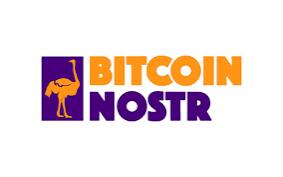
Nostr Relation to Bitcoin##
Who wouldn't want to be part of a community that embraces it's ethics in a dignified manner. Nostr has gained popularity within the Bitcoin community, and the Bitcoin Lightning Network is used for features like "Zaps" (which represents small payments or tips). There are also similarities in the philosophy of decentralization, that both bitcoin and Nostr share. Just like the saying goes, birds of the same feather flock together. This leads me to one of the best magnificent project, focused on building decentralisation media infrastructure, particularly within the Nostr ecosystem.

Yakihonne the future of the world##
YakiHonne is an amazing project focused on building decentralized media infrastructure, particularly within the Nostr ecosystem. It's mind blowing features includes:
-
Decentralized Media: YakiHonne aims to provide tools and platforms that support freedom and automation in content creation, curation, article writing and reporting. It leverages the decentralized nature of the Nostr protocol to achieve this amazing feat.
-
Nostr and Bitcoin Integration: YakiHonne is closely tied to the Nostr network, and it also incorporates Bitcoin functionality. This integration includes features related to the Lightning Network, enabling things like "zaps" (small Bitcoin payments) within the platform.
-
Mobile Application: YakiHonne offers a mobile application with an eye catching user interface simply designed to provide users with a smooth and intuitive Nostr experience. This app includes features like: -Support for various login options. -Content curation tools. -Lightning Network integration. -Long form article support.

Disadvantages of Traditional social media##
Lets go back to a world without the flute of freedom echoing in our hearts, where implementations are controlled by certain entities, reasons why traditional social media platforms hold not even a single stance compared to Nostr:
- Privacy Concerns:
Data Collection: Social media platforms collect vast amounts of user data, often without full transparency. This data can be used for targeted advertising, and sometimes, it can be compromised in data breaches. Which won't happen or be possible on yakihonne
-
Social Comparison and Low Self-Esteem: The over hyped and often unrealistic portrayals of life on social media can lead to feelings of inadequacy and low self-esteem. But on yakihonne you get to connect and grow with a community with specified goals bent on implementation
-
Misinformation and Fake News:
Spread of False Information: Social media platforms can be breeding grounds for misinformation and fake news, which can spread rapidly and have significant real-world consequences. Is that possible on yakihonne, well we all know the answer. 4. Centralized Control:
Censorship: Centralized platforms have the power to censor content, raising concerns about freedom of speech. Algorithm Bias: Algorithms can be biased, leading to unfair or discriminatory outcomes. This tells us why a decentralised media platform like yakihonne stands out to be the only media with a future.

Why Chose Nostr why chose yakihonne##
When considering Nostr and related projects like YakiHonne, the appeal stems largely from a desire for greater control, privacy, and freedom in online communication. Which from the points aligned above, gives us no second chance of thought, but the thought of being part of the Nostr community, active on a platform like yakihonne.
-
-
 @ bcbb3e40:a494e501
2025-03-31 15:23:12
@ bcbb3e40:a494e501
2025-03-31 15:23:12|
 |
|:-:|
|BÉRARD, Bruno y LA FATA, Aldo; ¿Qué es el esoterismo?: Entre verdades y falsificacioines; Hipérbola Janus, 2025|
|
|:-:|
|BÉRARD, Bruno y LA FATA, Aldo; ¿Qué es el esoterismo?: Entre verdades y falsificacioines; Hipérbola Janus, 2025|Nos complace presentar al lector en lengua española una novedad de primer orden, y sobre un tema que viene siendo objeto de interés por parte de nuestra línea editorial, como es el esoterismo, que hemos abordado recientemente a través de un nuevo recopilatorio de la obra evoliana en Ensayos filosóficos, esotéricos y religiosos 1925-1931, donde hemos tratado de rescatar los textos de las primeras etapas en la formulación del pensamiento del Maestro Romano. No obstante, no es la primera aventura que hemos emprendido en este terreno, siempre complejo y acompañado de la etiqueta, popular y quizás vulgarizada, de lo «misterioso» y lo «oculto», aunque no somos nada sospechosos en ese sentido por banalizar o tratar de ofrecer un enfoque puramente literario del asunto, y ni mucho menos de simpatizar con aquellas vías que entroncan con el New age, donde las mixtificaciones y la voluntad de convertir el fenómeno esotérico en un producto de consumo más, como demanda el mercado, para satisfacer demandas materiales o simples modas de una masa sobresocializada son norma habitual.
Podríamos citar multitud de obras que están presentes en nuestro catálogo, como son El pensamiento esotérico de Leonardo, de Paul Vulliaud, El mundo mágico de los héroes, de Cesare della Riviera, una joya del esoterismo italiano del siglo XVII, en El maestro de la tradición perenne, de René Guénon, o en el ensayo de Gianluca Marletta OVNIS y alienígenas. Origen, historia y prodigio de una pseudorreligión, un ensayo de notable originalidad donde se abordan aspectos esotéricos, aunque sea de un modo más tangencial. También en la literatura, con la obra del gran mitólogo y literato Boris Nad, Una historia de Agartha y La muerte púrpura de Gustav Meyrink encontramos nuevas referencias al ámbito esotérico. De modo que podemos concluir en que el esoterismo forma parte esencial de nuestras publicaciones e intereses como editores, y contribuimos activamente a su difusión.
|
 |
|:-:|
|EVOLA, Julius; Ensayos filosóficos, esotéricos y religiosos: 1925-1931, Hiperbola Janus, 2024|
|
|:-:|
|EVOLA, Julius; Ensayos filosóficos, esotéricos y religiosos: 1925-1931, Hiperbola Janus, 2024|Una obra original
Por eso la presente obra, la que nos disponemos a presentar, cuyo título es ¿Qué es el esoterismo?: Entre verdades y falsificaciones, de Bruno Bérard y Aldo La Fata, viene a ser una obra muy necesaria y clarificadora en la comprensión del esoterismo en todas sus dimensiones, en la complejidad de sus particulares, y en sus múltiples manifestaciones. Quizás en el mundo de habla hispana el esoterismo es un fenómeno que no ha obtenido su merecida atención, y nuestros autores en este ámbito, como es el caso de un Ramón Llull entre otros, no sean objeto de la atención que merece, y las actividades esotéricas, a nivel de asociaciones, comunidades u otras formas de organización, tampoco sean especialmente conocidas, ni cuenten con una actividad reconocida. Es posible, como señala La Fata, que haya ciertas reticencias dentro del mundo católico, acostumbrado a la ortodoxia y la guía espiritual de la Iglesia, y que cualquier tipo de «desviación» hacia formas más individuales y «libres» de vivir ciertas formas iniciáticas, mucho más sutiles, provoquen el rechazo y la incomprensión general. No obstante, como también se encargan de aclarar nuestros autores, el esoterismo comprende una dimensión diferenciada, implica un esfuerzo que no todos están dispuestos a acometer, y finalmente, no es tampoco un camino de felicidad y de frutos seguros, implica una transformación interior y la asunción de unas prácticas y procedimientos que no son aptos para cualquiera. Digamos que el esoterismo es un camino, una vía, que a diferencia de las «religiones populares», exotéricas, supone un arduo camino que viene marcado por un principio vertical y aristocrático de la existencia, o al menos así queremos verlo nosotros. El incremento de la capacidad de discernimiento, aunar lo visible con lo invisible, y ser capaz de superar límites vedados al común, no por simple vanidad ni por «crecimiento personal», tal y como se concibe en las aburguesadas y decadentes sociedades actuales, sino como parte de un proceso de aprendizaje, de autoconocimiento y de liberación. No nos cabe duda alguna de la necesidad de restaurar los antiguos vínculos con lo Alto, las vías que quedaron cerradas y que nos han limitado progresivamente al exclusivo y estrecho ámbito de la materialidad.
|
 |
|:-:|
|RIVIERA, Cesare della; El mundo mágico de los héroes; Hipérbola Janus, 2022|
|
|:-:|
|RIVIERA, Cesare della; El mundo mágico de los héroes; Hipérbola Janus, 2022|La obra emplea el recurso de la entrevista/diálogo, que aporta frescura y fluidez al texto «simplificando», o más bien haciendo más accesibles y comprensibles elementos relacionados con el esoterismo, que de otro modo resultarían excesivamente complejos para una parte del público lector poco familiarizado con la materia. Este dinamismo se ve complementado por la riqueza de matices e ideas que se van introduciendo de manera progresiva, evitando que el lector pueda verse abrumado por la avalancha de ideas y contenidos. Las preguntas de Bruno Bérard, siempre inteligentes, incisivas y pertinentes, además de ordenadas y bien estructuradas, favorecen la continuidad y el dinamismo en la exposición de los temas, ejerciendo de guía en la conversación. De ahí que el libro sea apto para diferentes niveles, tanto para aquellos que desconocen el esoterismo, como para quienes se encuentran familiarizados con el tema. Aldo La Fata, de acuerdo con su dilatada y extensa trayectoria en la materia, nos hace reflexiones teóricas de enorme valor, que entrelaza con su propia experiencia y trayectoria en el estudio del esoterismo. Sin lugar a dudas este aspecto nos permite ver una vertiente más humana e íntima, en la que se incluyen anécdotas personales y biográficas que siempre permiten una mayor conexión con el lector a través de la mezcla de hechos vitales y erudición teórica.
La entrevista que nos ofrecen Bruno Bérard y Aldo La Fata nos permite explorar la relación dialéctica que se genera entre el esoterismo y otros ámbitos como la religión, la ciencia o la filosofía. Todas las cuestiones se abordan desde enfoques muy concretos, abordando problemáticas particulares, que dan lugar a reflexiones más amplias evitando las simplificaciones e invitando a reflexiones mucho más profundas. De ahí la función de introducción y guía a la que nos venimos refiriendo.
Estos aspectos que acabamos de enumerar con anterioridad revelan un notable esfuerzo pedagógico por parte de los autores para acercarnos al estudio del esoterismo, nos aporta las herramientas necesarias, parafraseando el título de la obra, para discernir entre un verdadero esoterismo y sus falsificaciones.
Más allá de estos aspectos formales, que consideramos que es importante destacar, porque en ellos reside el éxito de la obra, en un planteamiento que resulta original, a la par que ameno y de gran interés, debemos considerar otros aspectos que hacen más referencia al contenido. «¿Qué es el esoterismo? Entre verdades y falsificaciones» pretende, como decíamos, clarificar qué es el esoterismo, cuales son sus particulares, sus características y atributos, su naturaleza más íntima, como fenómeno espiritual y filosófico en sus aspectos más profundos, que podemos remontar a épocas muy remotas y lejanas en el tiempo. Pero el esoterismo aparece en ocasiones fuertemente imbricado en otras estructuras de pensamiento, de tipo tradicional, como son las grandes religiones (Cristianismo, Islam, Judaísmo etc) y otros conceptos como la mística y la metafísica, cuyas relaciones hay que desentrañar.
La importancia de René Guénon
Aldo La Fata nos libera desde el principio de posibles equívocos al enfatizar que el verdadero esoterismo no es una simple acumulación de conocimientos secretos o rituales exóticos, sino una vía de trascendencia espiritual basada en el rigor y la autenticidad. A este respecto René Guénon aparece como uno de los grandes esoteristas de nuestro tiempo, en la medida que fue el gran intérprete y codificador de estos conocimientos, una figura que marcó un antes y un después en la comprensión de este ámbito, especialmente por su rigor conceptual y su capacidad para distinguir entre lo auténtico y lo falso en las tradiciones espirituales. A tal respecto podemos poner como ejemplo sus contundentes análisis de las corrientes ocultistas, especialmente del espiritismo o del teosofismo, en diferentes obras. Podemos decir a este respecto que Guénon hizo una distinción entre esoterismo y ocultismo, disociando el significado del primero de prácticas superficiales y desviadas, mientras que definió el esoterismo como una vía de conocimiento sagrado y trascendente. En este sentido fue una labor fundamental para evitar confusiones con mixtificaciones modernas y pseudoesoterismos como aquellos relacionados con el New Age.
|
 |
|:-:|
|GUÉNON, René; El Maestro de la Tradición Perenne: Antología de artículos guenonianos; Hipérbola Janus, 2021|
|
|:-:|
|GUÉNON, René; El Maestro de la Tradición Perenne: Antología de artículos guenonianos; Hipérbola Janus, 2021|Paralelamente, y con ello queremos dignificar la figura de René Guénon, el tradicionalista francés también nos abrió las fuentes de un vasto conocimiento espiritual, expresión de una «Tradición primordial», a cuyos orígenes prístinos siempre deberíamos aspirar, y cuya impronta impregna por completo religiones, culturas y formas de civilización no modernas, claro está. Y otro elemento fundamental, y que en la presente obra se considera de vital importancia, es que René Guénon considera el esoterismo no como una vía interna propia de la religión, sino como una vía complementaria que permite acceder a la esencia divina más allá de las formas externas. Para Aldo La Fata no se trata de una mera referencia intelectual, sino una figura que marcó su propio rumbo dentro del estudio del esoterismo. A través de obras como Los símbolos de la ciencia sagrada, La Fata descubrió la profundidad y la coherencia del pensamiento guenoniano, así como la idea de que el esoterismo actúa como el «pegamento» que conecta todas las tradiciones espirituales. Esta visión le permitió entender el esoterismo como algo inseparable de la religión, aunque con una profundidad y una exigencia mayores.
¿Qué es el esoterismo?
El término esoterismo tiene sus raíces etimológicas en el griego esôterikos, que implica un «ir hacia dentro» y que se contrapone a una variante exterior que definimos como «exoterismo», que se encuentra más vinculado al ámbito de la religión. Se trata de un conocimiento que no atiende a un principio puramente intelectual y discursivo sino que apunta a una vivencia directa y sapiencial de lo trascendente. Lejos de la acumulación de saberes ocultos y rituales, lo que prima en la experiencia de lo esotérico es la conexión directa con lo trascendente y lo divino a través de la práctica espiritual.
De hecho hay tres aspectos que nuestros autores destacan a lo largo de la obra respecto al esoterismo, y que nos parecen fundamentales:
- Interioridad: Supone un movimiento continuo hacia el interior, de exploración e introspección, en el que se tratan de derribar límites y obstáculos. Atendiendo a un dinamismo que huye de lo fijo y de lo estático.
- Profundización: La búsqueda de significados más profundos tras la realidad cotidiana, buscando ir más allá de la pura exterioridad de las cosas
- Relación con el exoterismo: Podemos considerarlo opuesto en sentido relativo al esoterismo, como una dimensión más externa y visible de las religiones, aunque este último (el esoterismo), no puede sobrevivir sin el apoyo de una tradición religiosa.
En relación al último punto debemos destacar, como advierten Bérard y La Fata, que pese a todo no podemos entender el esoterismo como una parte de las religiones, sino que tiene su propia función y objetivos, que no es otro que el que ya hemos mencionado con anterioridad: establecer una conexión directa con la verdad que irradia del principio universal y divino.
|
 |
|:-:|
|VULLIAUD, Paul; El pensamiento esotérico de Leonardo da Vinci; Hipérbola Janus, 2024|
|
|:-:|
|VULLIAUD, Paul; El pensamiento esotérico de Leonardo da Vinci; Hipérbola Janus, 2024|Otro aspecto interesante de la obra es el que nos habla de las relaciones entre esoterismo y metafísica, en el que el primero pretende ser también una vía de acceso al dominio del segundo. El esoterismo, como ya hemos visto, tiene como principal propósito trascender las categorías del mundo material para proyectarse en lo universal, y en este sentido comparte también objetivos con la metafísica, que pretende superar las limitaciones de la experiencia humana ordinaria y de acceder a las verdades primordiales que estructuran la realidad. Ambos apuntan a la raíz de todo lo existente, al absoluto. Las divergencias las hallamos en la forma o en el método para alcanzar estas verdades trascendentes, que en el caso del esoterismo nos remiten a símbolos, rituales y experiencias vivenciales que permiten al practicante interiorizar verdades universales.
De este modo, esoterismo y metafísica se nos presentan como realidades no opuestas, sino complementarias. La metafísica nos ofrece un marco conceptual y doctrinal para entender lo absoluto, mientras que el esoterismo se centra en su realización interna. En términos guenonianos, el esoterismo representa los aspectos operativos de la metafísica.
De modo que podemos decir que la metafísica aborda el tema trascendente desde una perspectiva conceptual, sin esa parte vivida de la experiencia en el conocimiento de lo universal. El esoterismo, por su parte, aporta esa contraparte que nos remite a la experiencia humana que permite al individuo acceder o ponerse en conexión con lo divino a través de su propio ser, de manera directa y vívida. Es un camino que el sujeto individual emprende para lograr una transformación interior.
Paralelamente, no podemos obviar dentro de todos estos procesos la participación de un elemento fundamental, como es la intuición suprarracional, que podríamos considerar como la herramienta que conecta al esoterista directamente con la fuente del conocimiento trascendente y universal, en lugar de hacerlo directamente a través de teorías o conceptos que siempre resultan más abstractos y difíciles de comprender en su vertiente más «discursiva». Al mismo tiempo, las relaciones que se establecen entre esoterismo y metafísica nos permiten poner en contacto las tradiciones religiosas con el conocimiento universal. Según La Fata, inspirándose en el legado de la obra de Frithjoff Schuon, cada tradición espiritual tiene una dimensión metafísica que puede ser comprendida y realizada a través del esoterismo, como un medio para acceder a la esencia inmutable de todas las formas religiosas.
Otro aspecto que esoterismo y metafísica comparten es la meta de superar la dualidad entre sujeto y objeto: Mientras que la metafísica conceptualiza esta unión como una verdad última, el esoterismo busca experimentarla directamente a través de la contemplación, el símbolo y la práctica espiritual.
Los autores
|
 |
|:-:|
|Aldo La Fata|
|
|:-:|
|Aldo La Fata|Aldo La Fata (1964) es un estudioso del esoterismo, el simbolismo y la mística religiosa, con una trayectoria de varias décadas dedicada al análisis y divulgación de estas disciplinas. Ha sido jefe de redacción de la revista Metapolitica, fundada por Silvano Panunzio, y actualmente dirige Il Corriere Metapolitico. Su trabajo destaca por una aproximación rigurosa y una mirada crítica a las corrientes contemporáneas del esoterismo, rescatando su sentido más profundo y tradicional. Entre sus obras más relevantes se encuentran Silvano Panunzio: vita e pensiero (2021) y Nella luce dei libri (2022), donde explora la intersección entre espiritualidad, simbolismo y pensamiento tradicional.
|
 |
|:-:|
|Bruno Bérard|
|
|:-:|
|Bruno Bérard|Bruno Bérard (1958), es doctor en Religiones y Sistemas de Pensamiento por la École Pratique des Hautes Études (EPHE), es un destacado especialista en metafísica. Autor de múltiples ensayos, ha desarrollado una profunda reflexión sobre la naturaleza del conocimiento espiritual y su relación con las tradiciones religiosas. Algunas de sus obras más importantes, traducidas a diversas lenguas, incluyen A Metaphysics of the Christian Mystery (2018) y Métaphysique du paradoxe (2019). Actualmente, dirige la colección Métaphysique au quotidien en la editorial L’Harmattan de París, consolidándose como una referencia en el estudio de la metafísica contemporánea.
En ¿Qué es el esoterismo?: Entre verdades y falsificaciones, asistimos a una presentación del tema tratado desde un conocimiento profundo y dilatado del tema, en la que ambos autores combinan la experiencia y el conocimiento que atesoran sobre el esoterismo y otros temas anejos, ofreciéndonos sus interpretaciones y enfoques particulares, y al mismo tiempo mostrando una gran capacidad de síntesis en la exposición de los temas tratados, que se inscriben en una multitud de tradiciones religiosas y espirituales de enorme complejidad. En este último punto reside también gran parte del valor de la obra, que constituye una novedad editorial especialmente relevante en su ámbito en lengua hispana.
Artículo original: Hipérbola Janus, Presentación de «¿Qué es el esoterismo?: Entre verdades y falsificaciones» (TOR), 6/Feb/2025
-
 @ bcbb3e40:a494e501
2025-03-31 15:02:58
@ bcbb3e40:a494e501
2025-03-31 15:02:58Traducción por Francisco de la Torre.
|
 |
|:-:|
|Los representantes de la derecha sionista europea que forman parte de «Patriots» reunidos en Bruselas el pasado mes de diciembre de 2024.|
|
|:-:|
|Los representantes de la derecha sionista europea que forman parte de «Patriots» reunidos en Bruselas el pasado mes de diciembre de 2024.|Entre los efectos que probablemente producirá en Europa la nueva administración estadounidense, es previsible el fortalecimiento del ala derecha del colaboracionismo atlantista que, después de haberse posicionado decididamente a favor de Donald Trump durante su presidencia 2017-2021, en el transcurso de la administración Biden abogó fervientemente por su regreso a la Casa Blanca y acogió su victoria electoral con gran júbilo. A finales de octubre de 2024, en el grandioso mitin preelectoral a favor de Trump celebrado en el Madison Square Garden de Nueva York, asistió una representante del grupo parlamentario europeo Patriots for Europe, que viajó a Estados Unidos para esa ocasión especial. En un vídeo publicado en la página X (antes twitter) de los Patriots, varios eurodiputados del mencionado grupo expresaron su identidad con los puntos de vista de Trump y auspiciando su reelección: el austriaco Harald Vilimsky (Freiheitliche Partei Österreichs), el checo Ondrej Knotek (Año 2011) el español Jorge Buxade (Vox), el holandés Tom Vandendriesche (Vlaams Belang), la polaca Anna Bryłka (Ruch Narodowy) y, por Hungría, Tamás Deutsch (Fidesz).
Este último es, sin duda, la personalidad más eminente del grupo de los Patriots que viajaron a Nueva York: originario de una familia judía de Budapest, en 1988 Tamás Deutsch junto con Viktor Orbán están entre los fundadores de Fidesz —Fiatal Demokraták Szövetsége (Alianza de los jóvenes demócratas), en la que ocupó el cargo de vicepresidente. El Fidesz ha tejido durante mucho tiempo una red de lazos con el Partido Republicano de los Estados Unidos y con el think tank conservador Heritage Foundation, mientras que el gobierno de Viktor Orbán organizó las tres últimas ediciones anuales de la CPAC en Hungría (Conservative Political Action Conference), un encuentro de políticos de derechas de varios países[^1].
Patriots for Europe o Patriots.eu, denominación que recuerda al de los misiles aire-tierra estadounidenses (el MIM-104 Patriots), es, por tanto, el nombre oficial del grupo político de la derecha liberal-conservadora, populista y euroescéptica, nacido en julio de 2024 (primero como alianza y luego como grupo parlamentario europeo) por iniciativa del primer ministro húngaro Viktor Orbán, el exprimer ministro checo Andrej Babiŝ y del exministro del interior austriaco Herbert Kickl. Como representantes de sus respectivos partidos (Fidesz, Año 2011, Freiheitliche Partei Österreichs), Orbán, Babiŝ y Kickl firmaron un texto ideológico titulado: A Patriotic Manifesto for a European Future[^2], según la cual la única política europea legítima es aquella que, enraizada en la pluralidad de las diferentes naciones, proteja su herencia grecorromana-judeocristiana preservando su identidad, tradiciones y costumbres.
Al núcleo inicial de los Patriots se unió el partido portugués ¡Arriva! (¡Chega!), el Partido húngaro Popular Demócrata Cristiano (Kereszténydemokrata Néppárt), el partido español Vox, el Partido por la Libertad (Partij voor de Vrijheid) holandés, el Partido Popular Danés (Dansk Folkeparti), el interés Flamenco (Vlaams Belang), la Reunión Nacional (Rassemblement National) francés y, por Italia, la Liga para Primer Ministro Salvini.
Constituido formalmente, el grupo parlamentario recibió una posterior adhesión del diputado griego de Voz de la Razón (Foní Logikis), del diputado de Primero Letonia (Letvija pirmajâ prohibir), de los dos diputados del Movimiento Nacional polaco (Ruch Narodowy) y de los dos diputados checos del Juramento (Přísaha) y de los Automovilistas por sí mismos (Motoristé sollozoê). Presidente del grupo parlamentario Patriots.eu, que cuenta con un total de ochenta y seis diputados[^3], es Jordan Bardella, presidente de la Rassemblement National; pero la personalidad más notable y prestigiosa de los Patriots es, sin duda, el primer ministro húngaro Viktor Orbán.
En cuanto a la línea de política exterior seguida por Viktor Orbán, cabe recordar que fue durante su primer mandato, en 1989, cuando Hungría se unió a la OTAN junto con la República Checa y Polonia. La pertenencia a la organización militar de la Alianza Atlántica implicó la participación húngara en la guerra de Kosovo en Yugoslavia, así como la contribución de Hungría en las misiones de la ISAF y en la guerra en Irak en apoyo de la intervención estadounidense. Por otro lado, no deja de ser significativo que en junio de 2011, durante la visita de Condoleezza Rice a Budapest, se inaugurara una estatua del presidente estadounidense Ronald Reagan en la céntrica Plaza de la Libertad (Szabadság tér). «Hoy —dijo Orbán en esa ocasión— erigimos aquí una estatua al hombre, al líder, que cambió y renovó este mundo creando un nuevo mundo para nosotros en Europa Central, un hombre que creía en la libertad, en la fuerza moral de los hombres libres, y creía que los muros que obstruyen el camino a la libertad pueden ser derribados».
En los años de la primera administración Trump, Orbán estableció una relación privilegiada con la Casa Blanca: en 2019 fue recibido calurosamente por el presidente estadounidense, quien declaró su apoyo al «soberanismo» europeo, del que Orbán era ya el exponente más puntero. El primer ministro húngaro, que más tarde expresó varias veces la esperanza de volver a ver a Trump como líder de los Estados Unidos, se reunió con él de nuevo en Mar-a-Lago de Palm Beach en marzo de 2024 y al final de la visita escribió en una publicación: «¡Hacer que América vuelva a ser grande, señor presidente!»[^4].
El entendimiento entre Trump y Orbán fue favorecido por Benjamin Netanyahu, quien ha tenido una estrecha relación con el actual primer ministro húngaro desde 2005, cuando Orbán estaba en la oposición y Netanyahu era ministro de Finanzas. Esta relación, que Orbán ha utilizado para neutralizar las iniciativas hostiles de las ONG’s de Soros (quien financió a Fidesz desde 1992 a 1999), ha acentuado progresivamente la posición proisraelí de Budapest, hasta el punto que Hungría junto a Austria, Croacia y República Checa, se han alineado con Estados Unidos e Israel votando en contra de la resolución propuesta por la ONU para el alto el fuego en la Franja de Gaza. Cuando László Toroczkai, jefe del partido Mi Hazánk (Nuestra Patria), preguntó a Orbán en el Parlamento por qué Hungría había votado en contra, el primer ministro le respondió: «La política exterior es complicada, enfréntate solo si entiendes de lo que estamos hablando»[^5].
El presidente de Patriots, Jordan Bardella, no es menos pro-sionista. «Reconocer un Estado palestino significaría reconocer el terrorismo», dijo Bardella, quien antes de las elecciones francesas había asegurado que, si llegaba a ser primer ministro, sería «un escudo para los compatriotas judíos contra un islamismo que no solo quiere separar la República, sino conquistarla»[^6]. Por su parte, Marine Le Pen, madrina política de Bardella, declaró: «Es absolutamente legítimo que Israel quiera erradicar al grupo terrorista armado Hamas y que se dote de medios para hacerlo»[^7].
En cuanto a la Liga de Salvini como primer ministro, sus posiciones pro-trumpistas y pro-sionistas siempre se han caracterizado por un extremismo descarado. «Nunca he ocultado —dijo Salvini antes de las elecciones estadounidenses— mi esperanza en una victoria republicana, por mil razones (...) hablamos [con Trump] a más tardar hace unas semanas. Nunca he ocultado mi simpatía humana y mi sintonía cultural»[^8]. Y sobre el genocidio en curso en Palestina, Salvini dijo: «Nuestros pensamientos están con el pueblo israelí (...) Recordar siempre el derecho de Israel a existir, a defenderse y a convivir finalmente en paz con sus pueblos vecinos, contra el horror del terrorismo islámico»[^9]. El 6 de octubre de 2024, al final de su discurso desde el escenario de Pontida, Salvini posó para una foto con los Patriots presentes en la manifestación de la Liga Norte: además de Viktor Orbán, estuvieron el holandés Geert Wilders, el portugués André Ventura, la austriaca Marlene Svazek, el español Antonio Fúster y el general Roberto Vannacci. Enviaron mensajes en vídeo de apoyo y solidaridad tanto Jordán Bardella en nombre de Rassemblement national como el ex-presidente brasileño Jair Bolsonaro.
También Geert Wilders (Partij voor de Vrijheid), que en 2009 recibió el Premio Oriana Fallaci por producir un cortometraje de propaganda antiislámica, es conocido también por su extremismo prosionista. «Jerusalén, Judea y Samaria —en su opinión— son todas de Israel (...) La patria de los palestinos es el Reino de Jordania (...) Obama y Kerry deben dejar de criticar a Israel por los asentamientos. Judea y Samaria pertenecen a los israelíes»[^10]. En el programa de Wilders, «distinguiéndose durante dos décadas por su lucha contra la islamización —escribe complacido un sitio web sionista— está también el reconocimiento de Jerusalén como capital de Israel, con el traslado de la embajada holandesa»[^11].
André Ventura, presidente de ¡Chega!, reiteró en Polonia la posición prosionista de su partido, declarando convencido: «Estamos con Israel y permaneceremos junto a Israel en esta batalla por los derechos humanos y la democracia»[^12]. A quienes lo comparan con Donald Trump y Jair Bolsonaro, André Ventura responde: «Estoy acostumbrado a estas comparaciones. Estas son las ideas en las que creo»[^13]. En cuanto a la guerra en Ucrania, el líder de la lista ¡Chega! en las elecciones europeas, Antonio Tânger Corrêa, dijo que «la derrota de Ucrania sería la derrota de todo Occidente y de Portugal, en caso de extrema necesidad»[^14], enviarían a sus tropas.
Marlene Svazek representó a la Freiheitliche Partei Österreichs en Pontida, cuyos «excelentes contactos»[^15] con la derecha israelí están garantizados por David Lasar, miembro del Consejo Nacional (Nationalrat) del partido austriaco. Lasar no es el único judío en el FPÖ: también es judío el ex-secretario general del partido y ex-parlamentario europeo Peter Sichrovsky, quien ha negado ser un agente del Mossad, pero ha admitido haber tenido «muchas reuniones con funcionarios israelís»[^16].
José Antonio Fúster es el nuevo presidente de Vox Madrid. El jefe del partido que lo representa, Santiago Abascal, encabezó una delegación a Israel en 2023 que se reunió con dos ministros de Tel Aviv. «Durante la visita, Abascal ha transmitido el apoyo y la solidaridad de España al Primer Ministro israelí Benjamin Netanyahu, y ha defendido la urgente necesidad de acabar con Hamas que, según Abascal, es un grupo terrorista que «encarna el mal absoluto»[^17]. Tras la reunión de la delegación de Vox con Netanyahu, el candidato electoral Jorge Buxadé Villalba afirmó que las acciones genocidas cometidas por el régimen sionista en la Franja de Gaza son «operaciones antiterroristas» que deben continuar «hasta que no quede ni un solo terrorista»[^18].
En cuanto a Roberto Vannacci, elegido diputado del Parlamento Europeo en las listas de la Liga por Salvini, su currículum vitae patriot puede jactarse de una participación activa en las operaciones de EE.UU. en Oriente Medio. El general comandó durante dos turnos (2005-2006) el Special Forces Task Group en Irak y fue el primer comandante de la Task Force 45 en Afganistán en 2013, poco antes de la transición de la International Security Assistance Force a la Resolute Support Mission, Vannacci asumió el cargo de jefe del Estado Mayor de las fuerzas especiales de la OTAN, «una organización que ha garantizado la paz durante más de cincuenta años, una alianza política y militar que ha funcionado bien»[^19]. Habiendo prestado sus servicios a los Estados Unidos «para la estabilización de Irak»[^20] como Deputy Commanding General y Director of Training, el 21 de agosto de 2018, Vannacci fue galardonado con la Legion of Merit, la condecoración militar estadounidense creada por el presidente Franklin D. Roosevelt. Su consigna antes y después de la elección de Trump ha sido: «Go, Donald, go!».
[^1]: Cfr. C. Mutti, Alla destra degli USA, «Eurasia» 1/2023.
[^2]: Después de la confluencia de los grupos de Identity and Democracy en el grupo de Patriots, se aprobó una nueva versión del manifiesto político. Véase https://patriots.eu/manifesto
[^3]: Freiheitliche Partei Österreichs (Austria), 6; Vlaams Belang (Bélgica), 3; Dansk Folkeparti (Dinamarca), 1; Rassemblement National (Francia), 30; Foni Logikis (Grecia), 1; Fidesz - Magyar Polgári Szövetség (Hungría), 10; Kereszténydemokrata Néppárt (Hungría), 1; Liga para Salvini Premier (Italia), 8; Letvija primajâ vietâ (Letonia), 1; Partij voor de Vrijheid (Países Bajos), 6; Ruch Narodowy (Polonia), 2; ¡Chega! (Portugal), 2; ANO (República Checa), 7; Automovilistaé sobê (República Checa), 1; Přísaha (República Checa), 1; Vox (España), 6.
[^4]: Angela Napoletano, La «visita». Orbán incorona Trump: «Lui è il presidente della pace», avvenire.it, 9 marzo 2024.
[^5]: András Dezsô, The roots of Orbán’s strong bond with Israel and its PM, https://balkaninsight.com, 14 de noviembre de 2023.
[^6]: Bardella, «riconoscere Palestina è riconoscere terrorismo». «Sarò uno scudo per i nostri connazionali ebrei», ANSA, 26/6/2024.
[^7]: Mauro Zanon, Sorpresa, lo «scudo» degli ebrei in Francia è il partito della Le Pen, tempi.it, 27 de octubre de 2023.
[^8]: Stefano Baldolini, Salvina punta su Trump: «Spero che vinca. Andrò negli Usa prima del voto». Tensioni con Meloni? «Governo durerà 5 anni», repubblica.it, 13 de julio de 2024.
[^9]: Nova.News, 7 de octubre de 2024.
[^10]: Elezioni in Olanda, che è il sovranista Wilders: anti-Islam, contro l’Ue e sostenitore del Grande Israele, www.open.online, 23 de noviembre de 2023.
[^11]: www.informazionecorretta.com, 26 de octubre de 2024.
[^12]: www.agenzianova.com, 6 de octubre de 2024.
[^13]: Especial: André Ventura. «Sou contra o aborto mas nunca condenaria uma mulher que aborta», «Jornal SOL», 12 de julio de 2022.
[^14]: Ventura admite tropas portuguesas na Ucrânia e tem uma posição clara sobre Putin, «CNN Portugal», 11 de marzo de 2024.
[^15]: Sophie Makris, Austria’s Jews wary of far-right charm offensive, www.timeofisrael.com, 3 de marzo de 2019.
[^16]: Yossi Melman, Sichrovsky Denies He Was a Mossad Agent, www.haaretz.com, 3 de junio de 2005.
[^17]: Fernando Heller, Spagna: il leader di Vox pretende le scuse di Sánchez per aver messo in dubbio l’offensiva israeliana contro Hamas, https://euractiv.it, 6 de diciembre de 2023.
[^18]: El ultraderechista Vox defiende los ataques de Israel en Gaza tras la polémica reunión con Netanyahu, euronews, 29 de mayo de 2024.
[^19]: Bruno Vespa, Vannacci: «Dopo l’Ue tornerei nell’esercito», «La Verità», 30 de octubre de 2024, p. 7.
[^20]: Missione Iraq: Riconoscimento al Generale Roberto Vannacci, en www.difesa.it , cit. en www.wikipedia.org
Artículo original: Hipérbola Janus, Patriots (TOR), 9/Ene/2025
-
 @ fe02e8ec:f07fbe0b
2025-03-31 14:43:22
@ fe02e8ec:f07fbe0b
2025-03-31 14:43:22\ Und genau dafür wirst auch du gedrillt werden: Menschen zu jagen und töten. Unbekannte, die auch nicht wissen, was sie hier tun. Oder Unschuldige, die nicht rechtzeitig fliehen konnten. Einfach töten. Alle. Ohne zu fragen. Denn das ist deine Aufgabe, Soldat: Töte Menschen!
Egal, was du vorher warst, Heizungsmonteur, KFZ-Mechaniker, Veganer, Marketing-Manager, Friseur, Verkäufer, Kindergärtner: Es ist egal. Jetzt musst du töten. Denn du hast mitgemacht. Entweder, weil du es nicht ernst genommen hast, weil du dich nie für Politik interessiert hast. Oder weil du gedacht hast, das alles betrifft dich nicht. Weil du gedacht hast, Wahlen könnten etwas verändern. Oder weil du immer das Maul gehalten hast, damit dich keiner als «Rechter» bezeichnet. Egal. Jetzt musst du töten. Das ist das Spiel.
Ja, es ist ein Spiel. Grausam, abartig, menschenverachtend. Dennoch hat es Regeln: Diejenigen, die das Spiel beginnen, müssen niemals selbst auf das Schlachtfeld. Das ist die erste Regel. Ihre Söhne auch nicht, nicht die Söhne der anderen Politiker, nicht die der EU-Abgeordneten, nicht die der Parteibonzen. Auch nicht die der Banker, der Vorstandsvorsitzenden, der Chefredakteure. Denn alle wissen, wie man das Spiel spielt. Nur du nicht.
Du bist einfach eine Figur auf dem Spielfeld, die es verpasst hat, NEIN zu sagen, als noch Gelegenheit war. Jetzt bist du verwandelt worden in eine menschliche Drohne. Wenn sie sagen: töte!, dann tötest du. Denken kannst du, wenn alles vorbei ist. Falls du je wieder nach Hause kommst. Vielleicht sogar mit beiden Beinen und beiden Armen. Vielleicht auch nicht. Egal. Wer hätte Mitleid mit einer Spielfigur?
Nein, du musst töten. Das ist deine Aufgabe. Sie sagen es nun schon seit Monaten, warum glaubst du es nicht? Sie meinen es ernst. Wenn du den Brief in Händen hältst ist es zu spät. Es gilt dann das Notstandsrecht und keiner kann mehr verweigern. Da hättest du dich vorher drum kümmern müssen. Oder auf eine Demo gehen. Oder laut und mit klarer Stimme in jedem Gespräch den Wahnsinn anprangern. Hast du aber nicht.
Jetzt musst du töten oder du wirst getötet. Das ist das Spiel. Du hättest selbst denken können. Hast du aber nicht. Hast deine Zeit mit sinnlosen Videos vertan, Netflix geguckt und hast Influencerinnen geliked. Die müssen nicht an die Front. Aber du. Morgen, wenn du aufstehst, die Uniform anziehst und rausgehst, dann wirst du Befehle ausführen oder erschossen werden. Also wirst du Menschen töten. Dein Leben wird nie wieder so sein, wie zuvor. Dein Schmerz, deine Schuld, dein Leid: sie gehen ein in die unendliche Reihe der Soldaten, die seit Jahrhunderten dasselbe Schicksal erlitten. Deren Schreie noch immer durch den ewigen Raum hallen. Deren Opfer von den Herren des Spiels mit einem Lächeln entgegengenommen wurde. Deren Gliedmaßen auf den Schlachtfeldern liegen geblieben waren. Zum Dank erhielten sie eine Medaille. Ein Stück Blech für den rechten Arm, einen Grabstein für den Vater, den Bruder, den Sohn. Für das Vaterland. Für Europa. Für die Demokratie. Der Hohn tropft aus jedem Politikerwort, doch die Menschen glauben noch immer die uralte Geschichte von Freund und Feind, von Gut und Böse.

\ Wer nicht aufwachen will muss töten. Du. Nicht am Bildschirm. In der echten Welt. Wo man nicht auf Replay drücken kann. Wo man den Gegner nicht nach links oder rechts swipen kann, denn er ist echt, real, lebendig. Noch. Entweder er oder du. Jetzt ist es zu spät für Entscheidungen. Kannst du es spüren? Die Work-Life Balance wird zur Kill-or-be-Killed balance. Es gibt kein Entrinnen. Denn du hast mitgemacht. Schweigen ist Zustimmung. Sich-nicht-drumkümmern ist Zustimmung. Kriegsparteien zu wählen ist noch mehr Zustimmung.
Heute.
Heute lässt sich noch etwas ändern.
Es hat nichts zu tun mit rechts oder links. Nur mit Menschlichkeit versus Hass, Macht und dem ganz großen Geld. Das sind die Gründe, für die du töten oder sterben musst.
Wie entscheidest du dich?
-
 @ 99e7936f:d5d2197c
2025-05-16 13:09:05
@ 99e7936f:d5d2197c
2025-05-16 13:09:05Baustelle HERZ
Können wir nicht einfach glücklich sein? Nein.
Eine traumatisierte Gesellschaft kann nicht EINFACH glücklich sein, weil die Herzen verletzt sind.
„Ja, aber es gibt doch auch noch andere Probleme als Trauma“, kritisieren einige.
„Ich habe schließlich eine Familie und einen anstrengenden Job“, erklären andere.
„Für mich ist das eine abstrakte Diskussion, ein Luxusproblem“, geben manche zu bedenken.
„Eigentlich möchte ich mich mit dem Thema gar nicht beschäftigen“, sagen wenige, denken aber viele.
„Ich beschäftige mich lieber mit positiven Dingen“, ist die diplomatische Variante der Vermeidung dieses Themas.
Niemand redet gerne über Trauma, bis es an die eigene Tür klopft. Und dann ist guter Rat teuer. Dann würde man gerne reden, aber die anderen wollen immer noch nicht.
Niemand redet gerne über Trauma.
„Was heißt denn Anklopfen?“ Mit Anklopfen meine ich die Situationen, die jeder kennt. Gemeint sind ganz normale Lebenskrisen, die es mehrmals in jedem Leben gibt.
„Ist denn eine Lebenskrise gleichzusetzten mit einem Trauma?“ Nein, aber durch eine starke Lebenskrise kann ein altes Trauma wieder hochgespült werden, und das fühlt sich dann original so an, wie das Trauma, das man z.B. als Kind oder später im Leben erlebt hat.
Und das passiert in einer traumatisierten Gesellschaft ständig, nur nennen die Leute es nicht so. Niemand sagt: „Er oder sie hat ein aktiviertes Trauma.“
Hierzu habe ich eine Anekdote. Vor ein paar Monaten zog in das Nachbarhaus bei mir auf der Straße ein junger Mann ein. Das Haus war frisch renoviert worden. Es zogen zeitgleich mehrere junge Leute jeweils in eine Wohnung dieses Hauses ein. Die Stimmung im Haus war gut, weil alles neu und geschmackvoll gestaltet worden war und die Mieter gut zusammen passten. Dann merkten die Mieter und Nachbarn, dass es einem jungen Mann nicht gut ging. Er saß den ganzen Tag in der Wohnung, konnte sich zu nichts aufraffen. Er schaffte es nicht, sich Lebensmittel einzukaufen. Ein Freund kam regelmäßig vorbei und brachte ihm Essen. Eine ältere Nachbarin fragte nach einigen Monaten diesen Freund, was dem jungen Mann denn fehle, ob er eine Krankheit habe oder was denn los sei. Der Freund lachte und sagte nur einen Satz: „Er stirbt.“
Die Nachbarin erzählte mir das und schaute mich fragend an. Ich übersetzte ihr den Satz und meinte: „Er hat vermutlich Liebeskummer.“ Aber was ich wirklich dachte, war, dass er ein aktiviertes Trauma hatte, nur sagte ich das nicht zur Nachbarin. Nach mittlerweile zwei Jahren kommt der Freund immer noch regelmäßig und bringt dem jungen Mann Essen. Er kauft für ihn ein und kümmert sich um ihn.
Manche Menschen leiden sehr lange unter Verlusten, Zurückweisungen, Niederlagen, Verletzungen. Andere kommen nie auf die nächste Stufe, obwohl sie sich unaufhörlich anstrengen. Wieder andere haben alles und sind dennoch unzufrieden und in permanenter Angriffshaltung. All diese Phänomene dauern oft lange, manchmal sogar ein Leben lang. Meines Erachtens sind das aktivierte Traumen bzw. Traumen, die gut verschlossen dennoch im Unterbewusstsein gegen die eigene Person arbeiten.
Trauma hat viele Gesichter.
Es kommt bei den unmöglichsten Gelegenheiten zum Vorschein. Und oft erkennen wir es nicht als das, was es ist. Wir suchen den Grund im Außen, den es ja meist auch gibt. Nur ist der Grund nicht der Grund, sondern nur der Auslöser.
Auch ich bin einmal „gestorben“. Dieser Zustand dauerte über drei Jahre an. Deshalb klingelte es bei mir auch sofort im Ohr als die Nachbarin sagte, der Freund habe gesagt: „Er stirbt.“
Sprache ist wunderbar.
Wer beides schon mal erlebt hat, eine normale Trennung und eine schwere Trennung, einen normalen Arbeitsplatzwechsel oder einen dramatischen Jobverlust, ein geplatztes Geschäft oder einen geplatzten Lebenstraum, das Ende einer Freundschaft oder eine Kränkung, über die man noch nach 35 Jahren so berichtet, als ob es gestern gewesen wäre, der kennt den Unterschied in der Intensität der Gefühle. Manche Menschen erzählen immer wieder eine Geschichte, obwohl man sie schon kennt und auch sein Mitgefühl dazu ausgedrückt hat. Manche Menschen reden gar nicht mehr über eine bestimmte Sache, bis einem irgendwann von Dritten gesagt wird, dass man ihn oder sie besser nicht auf das Thema XYZ ansprechen sollte.
All das sind aktivierte Traumen, die noch weh tun, noch nicht verarbeitet sind. Es sind Dinge, die jedem von uns passieren können. Jeder erlebt im Leben partnerschaftliche Trennungen, geplatzte Geschäfte und Kränkungen am laufenden Meter, aber es „trifft“ einen nicht immer gleich. Und es trifft nicht nur die Sensiblen, sondern es trifft jeden, wenn der Punkt, an dem es trifft, wund ist. Der wunde Punkt macht jeden sensibel. Auch robuste Naturen haben einen wunden Punkt. Und wenn der getroffen wird, dann werden auch die härtesten Menschen butterweich. In einer traumatisierten Gesellschaft wird jeder so oft „getroffen“, wie es braucht, bis er sich dem Thema widmet. Wir alle haben diese frühen oder späten Traumen erlebt, die früher oder später erneut durch Krisen aktiviert werden. Und dann „sterben“ wir, zumindest gefühlt.
Denn Trauma ist immer existenziell.
Und aktiviertes Trauma ist bitte nicht zu verwechseln mit Depression. Es ist ein aktiviertes Trauma, das sich im Unterschied zur Depression sehr wach, lebendig und vor allem schmerzvoll anfühlt. Es fühlt sich an wie „damals“. Das versteht man, in der Situation steckend, komischerweise sofort, denn wir haben ein Schmerzgedächtnis. Wir können Düfte oder Musik ja auch sofort zuordnen, wenn sie uns an etwas erinnern. Mit Schmerz ist es ähnlich. Aber es fällt so schwer, darüber zu reden, weil es keiner versteht und weil es dafür meines Erachtens in unserer Sprache keine Worte gibt. Man versteht das erst, wenn man es selbst erlebt hat. Und dann reichen zwei Worte.
Die Baustelle HERZ versteht man erst, wenn man selbst ein aktiviertes Trauma erlebt, durchlebt hat, wenn man einmal „gestorben“ ist.
Heute kann ich an Äußerungen, die jemand macht, gut ablesen, ob jemand seine Baustelle HERZ bereits kennen gelernt hat oder nicht. Menschen, die das selbst noch nicht kennen gelernt haben, haben oft aufmunternde Sprüche wie „Das wird schon wieder. Jetzt lass den Kopf mal nicht hängen.“ Das hilft einem dann in etwa so, wie wenn man in einer Depression gesagt bekommt: „Nun lach doch mal.“ Man weiß dann sofort, welchen Erfahrungshintergrund das Gegenüber hat. Das ist keine Wertung, nur eine Feststellung. Unsere Kultur hat hier einfach wichtiges Wissen verloren. Ich persönlich weiß nicht, wie es ist, ein Kind auf die Welt zu bringen oder ein Kind zu verlieren. Ich weiß vieles nicht und habe vermutlich auch schon wenig hilfreiche Kommentare abgegeben, weil ich es nicht besser wusste. Aber ich weiß, wie sich ein aktiviertes Trauma anfühlt. Und das ist ein wertvolles Wissen, was ich gern teilen möchte. Man schaut mit diesem erfahrenen Wissen (kein Bücher-Wissen) viel differenzierter auf das Leid anderer Menschen. Es gibt so viele Sorten von Trauma und deswegen auch Sorten von aktiviertem Trauma. Manchmal denkt man sich nichts dabei und sagt etwas, und schon hat man beim anderen einen Punkt getroffen, der dadurch nun schmerzt. Wenn man Glück hat, dann dauert der Schmerz nur kurz an. Wenn man Pech hat, ist die Freundschaft zu Ende. Ich habe das selbst schon erlebt. Mal war ich es, die den Rückzug angetreten hat. Mal war es der andere. Hinter diesen Phänomenen steckt nichtverarbeitetes Trauma. Die Bildungslücke bezüglich Trauma in unserer Gesellschaft ist (gewollt) riesig.
Wir sind eine traumatisierte Gesellschaft, die nicht weiß, dass sie eine traumatisierte Gesellschaft ist.
Viele Menschen haben unverarbeitetes Trauma im Gepäck. Wir haben selbst nach Jahren der Therapie und Selbstreflektion immer noch unverarbeitete Anteile eines Traumas im Gepäck, das wir glaubten, bearbeitet zu haben. Mir ist das bewusst geworden, je besser ich mein eigenes Trauma kennen und lieben gelernt habe.
Eigentlich wollte ich heute kurz etwas über den gesunden Umgang mit Gefühlen schreiben. Beim Schreiben habe ich aber gemerkt, dass ich erstmal etwas über das Haus erzählen muss, bevor ich über die Gäste, die Gefühle, rede. Ich bin das Haus, das durch Verstand und Gefühle belebt wird. Und hinter dem Haus gibt es noch ein ganzes Universum, auf das ich heute nicht eingehen möchte.
Gefühle und Fühlen sind zentral wichtig, wenn man Trauma bearbeiten möchte.
Trauma wird solange aktiviert, bis es bearbeitet wurde.
In einer traumatisierten Gesellschaft wird 24/7 Trauma aktiviert. Und das ist gut so. Die Evolution schläft nicht. Die Evolution schenkt uns Schmerz, damit wir ihr Aufmerksamkeit schenken.
Das Leben liebt uns, und wiederkehrender Schmerz ist wie die Schlummerfunktion am Wecker, die möchte, dass wir aufwachen.
In unserer traumatisierten Gesellschaft klingelt momentan nicht nur der Wecker. Alles, was tönen kann, gibt Signal. Mir kommt es in dieser Zeit manchmal vor, wie wenn sich gleichzeitig , das Kinder-Sinfonieorchester mit sämtlichen Instrumenten einstimmt, jemand mit dem Handy telefoniert, das Fenster zur Hauptstraße offen steht, der Bus anfährt, der Auspuff röhrt, jemand hupt, das Martinshorn aufheult, die Drehorgel spielt, das Pausenzeichen in der Schule ertönt, es an der Tür klingelt und die Kirchenorgel aus allen Pfeifen flötet und brummt.
Aktiviertes Trauma macht ordentlich Krach individuell und erst recht gesellschaftlich gesehen. Und je lauter es ist, desto dringender möchte es bearbeitet werden.
Die Baustelle HERZ zu bearbeiten, lohnt sich. Und Fühlen bringt die Verwandlung.
-
 @ b4403b24:83542d4e
2025-03-31 14:31:53
@ b4403b24:83542d4e
2025-03-31 14:31:53🚀 Bitcoin Enthusiasts! Tomorrow the price of #BTCPrague2025 tickets goes up so take advantage of the 10% discount using code from the video - BTCBULGARIA.
✅ Network with leaders ✅ Learn blockchain strategies ✅ Gain crypto insights
Secure your spot NOW!
Bitcoin #BTC #BTCPrague
originally posted at https://stacker.news/items/930210
-
 @ 87fedb9f:0da83419
2025-05-16 12:45:01
@ 87fedb9f:0da83419
2025-05-16 12:45:01Push it! Push it! Push it!
That chant still echoes in my bones, not just from the gym, but from the inside out. I remember watching a bodybuilder once — the weight trembling above him, his muscles bulging and giving out, the spotters swooping in to catch the bar just in time. “Train to failure,” they said. “That’s how you grow.”
And it makes sense, doesn’t it? If you’re being chased by a wild beast, you run until your body gives out. That’s how we’re wired — to survive first and foremost, not necessarily to thrive.
But what if the house we’re building isn’t under threat from wolves? What if we’ve got stone-moving machines and time to breathe? What if we’re not being chased anymore… but we still act like we are?
See, survival patterns are sneaky. They wear masks. They show up in workouts and work days. They dress up in ambition, caffeine, and “just one more thing before I stop.”
I’ve never been a bodybuilder — my brother was — but I’ve tried that route in my own work life. Lift to failure. Push it. Every other day, I’d be nursing another injury to body and mind.
I wasn’t getting stronger. I was just breaking myself in cycles. Push, break, recover, repeat.
I see the same thing with brains. Push it. Adderall. More coffee. Keep going. Hit the wall. And then—collapse.
That’s not strengthening. That’s surviving pretending to be “powerful.”
What happens to the rest of your system when your brain is sucking up all the energy just to stay on task? You stop digesting. You stop feeling the sun on your skin. You stop enjoying your kids’ laughter. Everything feels like something to push through.
That isn’t thriving.
Thriving feels different. It’s alive, yes — there’s activation. But it’s not strained. When we’re in thriving mode, we’re with our energy, not yanking it out by the roots and forcing it to regrow. The muscles — or the mind — are engaged, fluid, expressive. Alive.
It’s a fine line. You can take the same exact action and fill it with stress.
I’ve done it. I’ve turned a perfectly normal task into a survival sprint. It feels ridiculous in hindsight — like, why did I make this email reply into a mountain climb?
Because my primitive brain still whispers, “If you don’t do this perfectly and fast, you’ll die.” Not literally. But the threat feels real. The imagined judgment, the self-criticism, the fear of not being enough — they’re imaginary lions in the tall grass of modern life.
I’ve used this system on myself. I’ve strained my nervous system like fingernails scraping rock to avoid a fall that was never coming.
That’s what we’re supposed to do, right? We bring survival force into every aspect. Into parenting. Into projects. Into relationships.
And we wonder why we’re tired all the time. Not sleepy tired — soul tired. That kind of tired that feels like you ran for your life… but all you did was sit at your desk.
Here’s what I know now: if you’re not actually in danger, you can stop living like you are.
You don’t have to push everything to the edge. You don’t have to prove your strength through strain. Strength can be alive in you — not torn, not depleted, but awake and sustaining.
And when we live from there, the recovery feels different, too. We’re not collapsing. We’re restoring.
We’re not dropping all the pieces and then forcing ourselves to pick them up… again! Instead, we’re crafting a thriving life from the pieces we find, fashion, and consciously put in place.
There’s a wisdom to building your foundation around thriving — not just surviving. And thriving starts with recognizing: it’s not life or death to get through your inbox. Your self-worth isn’t measured by how busy and depleted you are.
Look around. Are you stacking more and more iron to prove something? Or are you listening to the quiet whisper that says, “Yes, move… but don’t hurt yourself doing it.”
And in a life that tells you to push until you fail, choosing to rest and relish — choosing to feel alive rather than just alive-enough — might just be the truest strength there is.
Useful Concepts for Thriving in This Story
-
Primitive Brain\ The primitive brain keeps us on high alert even when we’re safe — it’s time to question whether the lion is real.
-
Unrushed\ Being unrushed is a radical shift from survival tempo to the rhythm of true aliveness.
-
Savvy\ Savvy invites us to work with our energy wisely, not destructively — to choose thriving over proving.
-
Vitality\ Vitality flows when we stop draining ourselves for performance and start living from inner strength.
-
Inspired Action\ Inspired action arises from presence and aliveness, not adrenaline and depletion.
-
-
 @ 9dd283b1:cf9b6beb
2025-03-31 13:21:08
@ 9dd283b1:cf9b6beb
2025-03-31 13:21:08Do you still feel anxiety when Bitcoin's price drops significantly, even though you're in fiat profit (100% +) ? Why or why not? And when did you truly stop feeling any emotional attachment to the price fluctuations?
originally posted at https://stacker.news/items/930139
-
 @ 8f69ac99:4f92f5fd
2025-05-16 11:40:35
@ 8f69ac99:4f92f5fd
2025-05-16 11:40:35Há algo quase reconfortante na previsibilidade com que certos colunistas abordam Bitcoin: a cada oportunidade, repetem os mesmos chavões, reciclados com indignação moralista e embrulhados numa embalagem de falsa autoridade. O artigo publicado na Visão, com o título dramático "De criança prodígio a adolescente problemático", encaixa-se perfeitamente nesse molde.
Trata-se de uma peça de opinião que mistura factos irrelevantes com interpretações enviesadas, estatísticas sem contexto e um medo mal disfarçado de perder o monopólio da narrativa económica. A autora, Sofia Santos Machado, opta por colar em Bitcoin os desastres do chamado “mundo cripto” como se fossem parte do mesmo fenómeno — ignorando, por conveniência ou ignorância, que Bitcoin não é altcoins, não é NFTs, não é esquemas de yield exótico, e não é fintech vestida de blockchain.
Esta resposta centra-se exclusivamente em Bitcoin — um protocolo monetário aberto, incorruptível e resistente à censura, que já está a servir como salvaguarda de valor em regiões onde o sistema financeiro convencional falhou. Não me interessa defender pirâmides, tokens inflacionários ou aventuras bancárias mal calculadas.
Criticar Bitcoin é legítimo — mas fazê-lo sem saber do que se fala é apenas desinformação.
A Histeria da Água — Falar Sem Saber
O artigo abre com uma pérola alarmista sobre o consumo de água:
“Uma única transacção de bitcoin consome seis milhões de vezes mais água do que um pagamento com cartão.”
Seis. Milhões. De vezes. Resta saber se a autora escreveu isto com cara séria ou a rir-se enquanto bebia água engarrafada dos Alpes Suíços.
Fontes? Metodologia? Contexto? Estou a brincar — isto é a Visão, onde os números são decoração e os factos opcionais.
Claro que comparar transacções na camada base de Bitcoin com pagamentos "instantâneos" da rede Visa é tão rigoroso como comparar um Boeing 747 com um avião de papel porque um voa mais longe. Um artigo sério teria falado em batching, na Lightning Network, ou no facto de que Bitcoin nem sequer compete com a Visa nesse nível, nem em nenhum. Mas isso exigiria, imagine-se, investigação.
Pior ainda, não há qualquer menção ao consumo de água na extracção de ouro, nos data centers bancários, ou no treino de modelos de inteligência artificial. Pelos vistos, só Bitcoin tem de obedecer aos mandamentos ecológicos da Visão. O resto? Santa ignorância selectiva.
Criminosos e o Fantasma do Satoshi
Eis o clássico: “Bitcoin é usado por criminosos”. Um cliché bafiento tirado do baú de 2013, agora reapresentado como se fosse escândalo fresco.
Na realidade, Bitcoin é pseudónimo, não anónimo. Todas as transacções ficam gravadas num livro público — não é propriamente o esconderijo ideal para lavar dinheiro, a menos que sejas fã de disfarces em néon.
E os dados? Claríssimos. Segundo a Chainalysis e a Europol, a actividade ilícita com Bitcoin tem vindo a diminuir. Enquanto isso, os bancos — esses bastiões de confiança — continuam a ser apanhados a lavar biliões para cartéis e cleptocratas. Mas disso a Visão não fala. Devia estragar a narrativa.
O verdadeiro crime aqui é a preguiça intelectual tão profunda que quase merece uma moldura. A Visão tem um editor?
O Espantalho Energético
Como uma criança que acabou de aprender uma palavra nova, a Visão repete “consumo energético” como se fosse um pecado original. Bitcoin usa electricidade — escândalo!
Mas vejamos: o Proof-of-Work não é um defeito. É a razão pela qual Bitcoin é seguro. Não há “desperdício” — há uso, e muitas vezes com energia excedente, renovável, ou que de outro modo seria desperdiçada. É por isso que os mineiros se instalam junto a barragens remotas, queima de gás (flaring), ou parques eólicos no meio do nada — não porque odeiam o planeta, mas porque os incentivos económicos funcionam. Escrevi sobre isso aqui.
O que a Visão convenientemente ignora é que Bitcoin está a ajudar a integrar mais energia renovável nas redes, funcionando como carga flexível. Mas nuance? Trabalho de casa? Esquece lá isso.
Para uma explicação mais séria, podiam ter ouvido o podcast A Seita Bitcoin com o Daniel Batten. Mas para quê investigar?
Cripto = Bitcoin = Fraude?
Aqui chegamos ao buraco negro intelectual: enfiar tudo no mesmo saco. FTX colapsou? Culpa de Bitcoin. Um banqueiro jogou com altcoins? Culpa de Bitcoin. Scam de NFT? Deve ter sido o Satoshi.
Vamos esclarecer: Bitcoin não é “cripto”. Bitcoin é descentralizado, sem líderes, transparente. Não teve pré-mineração, não tem CEO, não promete lucros. O que o rodeia? Tokens centralizados, esquemas Ponzi, pirâmides e vaporware — precisamente o oposto do que Bitcoin representa.
Se um executivo bancário perde o dinheiro dos clientes em Dogecoins, isso é um problema dele. Bitcoin não lhe prometeu nada. Foi a ganância.
E convenhamos: os bancos tradicionais também colapsam. E não precisam de satoshis para isso. Bastam dívidas mal geridas, contabilidade criativa e uma fé cega no sistema.
Culpar Bitcoin por falcatruas “cripto” é como culpar o TCP/IP ou SMTP por emails de phishing. É preguiçoso, desonesto e diz-nos mais sobre a autora do que sobre a tecnologia.
Promessas Por Cumprir? Só Se Não Estiveres a Ver
A "jornalista" da Visão lamenta que “após 15 anos, os riscos são reais mas as promessas por cumprir”. Que promessas? Dinheiro grátis? Cafés pagos com QR codes mágicos?
Bitcoin nunca prometeu fazer cappuccinos mais rápidos. Prometeu soberania monetária, resistência à censura e um sistema previsível. E tem cumprido — diariamente, para milhões. E para o cappuccino, há sempre a Lightning Network.
Pergunta aos venezuelanos, nigerianos, peruanos ou argentinos se Bitcoin falhou. Para muitos, é a única forma de escapar à hiperinflação, ao confisco estatal e à decadência financeira.
Bitcoin não é uma app. É infra-estrutura. É uma nova camada base para o dinheiro global. Não se vê — mas protege, impõe regras e não obedece a caprichos de banqueiros centrais.
E isso assusta. Especialmente quem nunca viveu fora da bolha do euro.
Conclusão: A Visão a Gritar Contra o Progresso
No fim, o artigo da Visão é um festival de clichés, dados errados e ressentimento. Não é só enganador. É desonesto. Culpa a tecnologia pelos erros dos homens. Rejeita o futuro em nome do conforto passado.
Bitcoin não é uma varinha mágica. Mas é a fundação de uma nova liberdade financeira. Uma ferramenta para proteger valor, resistir a abusos e escapar ao controlo constante de quem acha que sabe o que é melhor para ti.
Portanto, fica aqui o desafio, Sofia: se queres criticar Bitcoin, primeiro percebe o que é. Lê o white paper. Estuda. Faz perguntas difíceis.
Caso contrário, és só mais um cão a ladrar para a trovoada — muito barulho, zero impacto.
-
 @ 866e0139:6a9334e5
2025-03-31 12:44:27
@ 866e0139:6a9334e5
2025-03-31 12:44:27
Autor: Carlos A. Gebauer. Dieser Beitrag wurde mit dem Pareto-Client geschrieben. Sie finden alle Texte der Friedenstaube und weitere Texte zum Thema Frieden hier.**
Am 18. März 1924 schenkte meine Großmutter ihren Töchtern einen kleinen Bruder. Weil sein Vater fürchtete, der Junge könnte unter seinen vier Schwestern verweichlichen, schickte er den Kleinen zu Wochenendfreizeiten einer örtlichen Pfadfindergruppe. Ein Weltkriegsveteran veranstaltete dort mit den Kindern Geländespiele quer durch die schlesischen Wälder. Man lernte, Essbares zu finden, Pilze zu bestimmen, sich im Freien zu orientieren und Feuer zu machen.
Bald wurde deutlich, dass der Heranwachsende auch nicht mehr in den Blockflötenkreis seiner Schwestern und ihrer Freundinnen passte. Das Umfeld befürwortete, sein besonderes musikalisches Talent auf das Klavierspiel und das Flügelhorn zu richten. Kontakte bei der anschließenden Kirchenmusik mündeten schließlich in den elterlichen Entschluss, den nun 14-jährigen in ein Musikschulinternat zu schicken.
Es begann der Zweite Weltkrieg
Ein Jahr später, das erste Heimweh hatte sich langsam beruhigt, änderten sich die Verhältnisse schlagartig. Es begann der Zweite Weltkrieg. Mitschüler unter den jungen Musikern erfuhren, dass ihre älteren Brüder nun Soldaten werden mussten. Noch hielt sich die Gemeinschaft der jetzt 15-jährigen im Internat aber an einer Hoffnung fest: Bis sie selbst in das wehrfähige Alter kommen würden, müsste der Krieg längst beendet sein. In dieser Stimmungslage setzten sie ihre Ausbildung fort.
Es kam anders. Für den 18-jährigen erfolgte die befürchtete Einberufung in Form des „Gestellungsbefehls“. Entsprechend seiner Fähigkeiten sah man ihn zunächst für ein Musikkorps vor und schickte ihn zu einer ersten Grundausbildung nach Südfrankreich. Bei Nizza fand er sich nun plötzlich zwischen Soldaten, die Handgranaten in das Mittelmeer warfen, um Fische zu fangen. Es war das erste Mal, dass er fürchtete, infolge Explosionslärms sein Gehör zu verlieren. In den kommenden Jahren sollte er oft die Ohren zu- und den Mund offenhalten müssen, um sich wenigstens die Möglichkeit der angezielten Berufsausübung zu erhalten – wenn es überhaupt je dazu kommen würde.
DIE FRIEDENSTAUBE FLIEGT AUCH IN IHR POSTFACH!
Hier können Sie die Friedenstaube abonnieren und bekommen die Artikel zugesandt, vorerst für alle kostenfrei, wir starten gänzlich ohne Paywall. (Die Bezahlabos fangen erst zu laufen an, wenn ein Monetarisierungskonzept für die Inhalte steht). Sie wollen der Genossenschaft beitreten oder uns unterstützen? Mehr Infos hier oder am Ende des Textes.
Schon nach kurzer Zeit änderte sich die Befehlslage wieder. Der Musikstudent wurde nun zum Infanteristen und nach Russland an die Front verbracht. Vor ihm lagen jetzt drei Kriegsjahre: Gewalt, Dreck, Gewehrkugeln, Panzerschlachten, Granatsplitter, Luftangriffe, Entbehrungen, Hunger, Kälte, sieben Verwundungen, Blut und Schmerzen, Sterbende überall, Tote, Schreiende. Verzweiflung. Sorgen. Ängste. Todesangst. Zurückweichen? Verboten! Und die stets klare Ansage dazu: Wer nicht da vorne gegen den Feind um sein Leben kämpft, dem wird es ganz sicher da hinten von den eigenen Kameraden genommen.
Ein gewährter Fronturlaub 1944 versprach glückliche Momente. Zurück zu den Eltern, zurück zu den Schwestern, zurück nach Freiburg. Doch die Familie war nicht zu Hause, die Türen verschlossen. Eine Nachbarin öffnete ihr Fenster und rief dem Ratlosen zu: „Beeil‘ dich! Renn‘ zum Friedhof. Der Vater ist tot. Sie sind alle bei der Beerdigung!“ Wieder hieß es, qualvoll Abschied nehmen. Zurück an die Front.
Nach einem weiteren russischen Winter brach sich unübersehbar die Erkenntnis Bahn, dass der Krieg nun seinem Ende zugehe. Doch das Bemühen im Rückzug, sich mit einem versprengten Haufen irgendwie Richtung Heimat orientieren zu können, wurde doppelt jäh unterbrochen. Fanatische Vorgesetzte befahlen die längst Geschlagenen wieder gen Osten. Kurz darauf fielen sie heranrückenden russischen Truppen in die Hände.
Kriegsgefangenschaft: Tabakration gegen Brot
Drei Jahre dem Tod entgangen, schwer verletzt und erschöpft war der 21-jährige also nun ein Kriegsgefangener. Jetzt lagen drei Jahre russischer Kriegsgefangenschaft vor ihm. Ständig war unklar, wie es weiterginge. Unmöglich jedenfalls, sich noch wie ein Pfadfinder aus den Wäldern zu ernähren. Es begannen die Jahre des Schlafens auf Brettern, die Zeit der ziellosen Zugtransporte an unbekannte Orte. Niemand sprach. Nur der Sonnenstand machte klar: Es ging nie Richtung Heimat, sondern immer weiter nach Osten. Weil der Blechbläser nicht rauchte, konnte er seine Tabakration gegen Brot tauschen. So überlebte er auch die Zeit des Hungers und der Morde in den Lagern, die Horrorbilder der nachts Erschlagenen und in die Latrinen geworfenen Toten, der sinnlosen Zwangsarbeiten und der allgegenwärtigen Wanzen. Wer versuchte zu fliehen, der wurde erschossen und sein Körper zur Abschreckung in den Fangdrähten belassen. Im Sommer stanken die dort verwesenden Leichen, wenn nicht Vögel sie rechtzeitig gefressen hatten.
Als der 24-jährige schließlich sechs Jahre nach seiner Einberufung aus russischer Kriegsgefangenschaft entlassen wurde, gab es kein Zurück mehr in seine schlesische Heimat. Abgemagert reiste er der vertriebenen Mutter nach, die mit seinen Schwestern und Millionen anderen Flüchtlingen im Westen Deutschlands verteilt worden war. Kraft Ordnungsverfügung wohnte sie jetzt im sauerländischen Bad Laasphe in einem schimmligen Garagenanbau. Als ihn ein Passant auf dieser Reise morgens allein, nur mit einem Becher an der Schnur um den Hals, auf Krücken durch Berlin ziehen sah, gab er ihm schweigend sein Butterbrot.
Der kleine, sanfte Junge aus dem schlesischen Freiburg hat danach noch 60 Jahre gelebt. Es dauerte zunächst sechs Jahre, bis er wieder kräftig genug war, ein Instrument zu spielen. 30-jährig saß er dann endlich in einem Orchester und begann ein normales Berufsleben. Aber sein Körper und seine Seele waren für immer aus jeder Normalität gerissen.
Irgendwo in Russland war ihm die linke Hüfte so versteift worden, dass sich seine Beine im Liegen an Wade und Schienbein überkreuzten. Er musste also stets den Oberkörper vorbeugen, um überhaupt laufen zu können. Über die Jahrzehnte verzog sich so sein gesamter Knochenbau. Jeder Tag brachte neue orthopädische Probleme und Schmerzen. Ärzte, Masseure, Physiotherapeuten, Schmerzmittel und Spezialausrüstungen aller Art prägten die Tagesabläufe. Asymmetrisch standen seine Schuhe nebeneinander, die ein Spezialschuster ihm mit erhöhter Sohle und Seitenstabilisierung am Knöchel fertigte. Sessel oder Sofas waren ihm nicht nutzbar, da er nur auf einem Spezialstuhl mit halb abgesenkter Sitzfläche Ruhe fand. Auf fremden Stühlen konnte er nur deren Vorderkante nutzen.
In den Nächten schrie er im Schlaf
Und auch wenn er sich ohne Krankheitstage bis zuletzt durch seinen Berufsalltag kämpfte, so gab es doch viele Tage voller entsetzlicher Schmerzen, wenn sich seine verdrehte Wirbelsäule zur Migräne in den Kopf bohrte. Bei alledem hörte man ihn allerdings niemals über sein Schicksal klagen. Er ertrug den ganzen Wahnsinn mit einer unbeschreiblichen Duldsamkeit. Nur in den Nächten schrie er bisweilen im Schlaf. In einem seiner Alpträume fürchtete er, Menschen getötet zu haben. Aber auch das erzählte er jahrzehntelang einzig seiner Frau.
Als sich einige Jahre vor seinem Tod der orthopädische Zustand weiter verschlechterte, konsultierte er einen Operateur, um Entlastungsmöglichkeiten zu erörtern. Der legte ihn auf eine Untersuchungsliege und empfahl, Verbesserungsversuche zu unterlassen, weil sie die Lage allenfalls verschlechtern konnten. In dem Moment, als er sich von der Liege erheben sollte, wurde deutlich, dass ihm dies nicht gelang. Die gereichte Hand, um ihn hochzuziehen, ignorierte er. Stattdessen rieb er seinen Rumpf ganz alleine eine quälend lange Minute über die Fläche, bis er endlich einen Winkel fand, um sich selbst in die Senkrechte zu bugsieren. Sich nicht auf andere verlassen, war sein Überlebenskonzept. Jahre später, als sich sein Zustand noch weiter verschlechtert hatte, lächelte er über seine Behinderung: „Ich hätte schon vor 60 Jahren tot auf einem Acker in Russland liegen können.“ Alles gehe irgendwann vorbei, tröstete er sich. Das war das andere Überlebenskonzept: liebevoll, friedfertig und sanft anderen gegenüber, unerbittlich mit sich selbst.
Sechs Monate vor seinem Tod saß er morgens regungslos auf seinem Spezialstuhl. Eine Altenpflegerin fand ihn und schlug Alarm. Mit allen Kunstgriffen der medizinischen Technik wurde er noch einmal in das Leben zurückkatapultiert. Aber seine Kräfte waren erschöpft. Es schob sich das Grauen der Vergangenheit zwischen ihn und die Welt. Bettlägerig kreiste er um sich selbst, erkannte niemanden und starrte mit weit offenen Augen an die Decke. „Die Russen schmeißen wieder Brandbomben!“, war einer seiner letzten Sätze.
Der kleine Junge aus Schlesien ist nicht zu weich geraten. Er hat sein Leid mit unbeugsamer Duldsamkeit ertragen. Er trug es wohl als Strafe für das Leid, das er anderen anzutun genötigt worden war. An seinem Geburtstag blühen immer die Magnolien. In diesem Jahr zum hundertsten Mal.
Dieser Text wurde am 23.3.2024 erstveröffentlicht auf „eigentümlich frei“.
Carlos A. Gebauer studierte Philosophie, Neuere Geschichte, Sprach-, Rechts- und Musikwissenschaften in Düsseldorf, Bayreuth und Bonn. Sein juristisches Referendariat absolvierte er in Düsseldorf, u.a. mit Wahlstationen bei der Landesrundfunkanstalt NRW, bei der Spezialkammer für Kassenarztrecht des Sozialgerichtes Düsseldorf und bei dem Gnadenbeauftragten der Staatsanwaltschaft Düsseldorf.
Er war unter anderem als Rechtsanwalt und Notarvertreter bis er im November 2003 vom nordrhein-westfälischen Justizministerium zum Richter am Anwaltsgericht für den Bezirk der Rechtsanwaltskammer Düsseldorf ernannt wurde. Seit April 2012 arbeitet er in der Düsseldorfer Rechtsanwaltskanzlei Lindenau, Prior & Partner. Im Juni 2015 wählte ihn die Friedrich-August-von-Hayek-Gesellschaft zu ihrem Stellvertretenden Vorsitzenden. Seit Dezember 2015 ist er Richter im Zweiten Senat des Anwaltsgerichtshofes NRW.
1995 hatte er parallel zu seiner anwaltlichen Tätigkeit mit dem Verfassen gesellschaftspolitischer und juristischer Texte begonnen. Diese erschienen seither unter anderem in der Neuen Juristischen Wochenschrift (NJW), der Zeitschrift für Rechtspolitik (ZRP) in der Frankfurter Allgemeinen Zeitung, der Freien Presse Chemnitz, dem „Schweizer Monat“ oder dem Magazin für politische Kultur CICERO. Seit dem Jahr 2005 ist Gebauer ständiger Kolumnist und Autor des Magazins „eigentümlich frei“.
Gebauer glaubt als puristischer Liberaler unverbrüchlich an die sittliche Verpflichtung eines jeden einzelnen, sein Leben für sich selbst und für seine Mitmenschen verantwortlich zu gestalten; jede Fremdbestimmung durch Gesetze, staatliche Verwaltung, politischen Einfluss oder sonstige Gewalteinwirkung hat sich demnach auf ein ethisch vertretbares Minimum zu beschränken. Die Vorstellung eines europäischen Bundesstaates mit zentral detailsteuernder, supranationaler Staatsgewalt hält er für absurd und verfassungswidrig.
\ Aktuelle Bücher:
Hayeks Warnung vor der Knechtschaft (2024) – hier im Handel
Das Prinzip Verantwortungslosigkeit (2023) – hier im Handel
LASSEN SIE DER FRIEDENSTAUBE FLÜGEL WACHSEN!
Hier können Sie die Friedenstaube abonnieren und bekommen die Artikel zugesandt.
Schon jetzt können Sie uns unterstützen:
- Für 50 CHF/EURO bekommen Sie ein Jahresabo der Friedenstaube.
- Für 120 CHF/EURO bekommen Sie ein Jahresabo und ein T-Shirt/Hoodie mit der Friedenstaube.
- Für 500 CHF/EURO werden Sie Förderer und bekommen ein lebenslanges Abo sowie ein T-Shirt/Hoodie mit der Friedenstaube.
- Ab 1000 CHF werden Sie Genossenschafter der Friedenstaube mit Stimmrecht (und bekommen lebenslanges Abo, T-Shirt/Hoodie).
Für Einzahlungen in CHF (Betreff: Friedenstaube):

Für Einzahlungen in Euro:
Milosz Matuschek
IBAN DE 53710520500000814137
BYLADEM1TST
Sparkasse Traunstein-Trostberg
Betreff: Friedenstaube
Wenn Sie auf anderem Wege beitragen wollen, schreiben Sie die Friedenstaube an: milosz@pareto.space
Sie sind noch nicht auf Nostr and wollen die volle Erfahrung machen (liken, kommentieren etc.)? Zappen können Sie den Autor auch ohne Nostr-Profil! Erstellen Sie sich einen Account auf Start. Weitere Onboarding-Leitfäden gibt es im Pareto-Wiki.
-
 @ 975e4ad5:8d4847ce
2025-05-16 11:22:20
@ 975e4ad5:8d4847ce
2025-05-16 11:22:20Introduction
Bitcoin and torrents are two technologies that have reshaped how people share information and resources in the digital age. Both are built on decentralized principles and challenge traditional systems—torrents in the realm of file sharing, and Bitcoin in the world of finance. However, while torrents have seen a decline in popularity with the rise of streaming platforms like Netflix and HBO, many wonder whether Bitcoin will follow a similar trajectory or continue to grow as a widely adopted technology. This article explores the similarities between the two technologies, the resilience of torrents against attempts to shut them down, the reasons for their declining popularity, and why Bitcoin is likely to avoid a similar fate.
Similarities Between Torrents and Bitcoin
Torrents and Bitcoin share several key characteristics that make them unique and resilient:
-
Decentralization:\ Torrents rely on peer-to-peer (P2P) networks, where users share files directly with each other without depending on a central server. Similarly, Bitcoin operates on a blockchain—a decentralized network of nodes that maintain and validate transactions. This lack of a central authority makes both technologies difficult to control or shut down.
-
Censorship Resistance:\ Both systems are designed to withstand attempts at restriction. Torrents continue to function even when specific sites like The Pirate Bay are blocked, as the network relies on thousands of users worldwide. Bitcoin is also resistant to government bans, as transactions are processed by a global network of miners.
-
Anonymity and Pseudonymity:\ Torrents allow users to share files without revealing their identities, especially when using VPNs. Bitcoin, while pseudonymous (transactions are public but not directly tied to real-world identities), offers a similar level of privacy, attracting users seeking financial freedom.
-
Open Source:\ Both technologies are open-source, enabling developers to improve and adapt them. This fosters innovation and makes the systems more resilient to attacks.
Why Torrents Cannot Be Stopped
Torrents have persisted despite numerous attempts to curb them due to their decentralized nature. Governments and organizations have shut down sites like The Pirate Bay and Kickass Torrents, but new platforms quickly emerge. The key reasons for their resilience include:
-
P2P Architecture:\ Torrents do not rely on a single server. Every user downloading or sharing a file becomes part of the network, making it impossible to completely dismantle.
-
Global Distribution:\ Millions of users worldwide sustain torrent networks. Even if one country imposes strict regulations, others continue to support the system.
-
Adaptability:\ The torrent community quickly adapts to challenges, using VPNs, proxy servers, or the dark web to bypass restrictions.
Despite this resilience, the popularity of torrents has significantly declined in recent years, particularly among younger users.
The Decline of Torrents: Why They Lost Popularity
In the early 2000s, torrents were the primary way to access movies, music, and software. They were easy to use, free, and offered a vast array of content. However, the rise of streaming platforms like Netflix, HBO, Disney+, and Spotify has changed how people consume media. The main reasons for the decline of torrents include:
-
Convenience:\ Streaming platforms provide instant access to high-quality content without the need for downloading or specialized software. Torrents, in contrast, require technical knowledge and are often slower.
-
Legality and Safety:\ Using torrents carries risks such as viruses, malware, and legal consequences. Streaming services offer a safe and legal alternative.
-
Marketing and Accessibility:\ Platforms like Netflix invest billions in original content and marketing, attracting younger users who prefer easy access over free but risky downloads.
-
Social Shifts:\ Younger generations, raised with access to subscription services, are often unfamiliar with torrents or view them as outdated. Studies from 2023 indicate that only a small percentage of people under 25 regularly use torrents.
Despite this decline, torrents have not disappeared entirely. They are still used in regions with limited access to streaming services or by users who value free access to niche content.
Why Bitcoin Will Not Share the Fate of Torrents
Despite the similarities, Bitcoin has unique characteristics that make it more likely to achieve mainstream adoption rather than being overshadowed by alternatives. Here are the key reasons:
-
Financial Revolution:\ Bitcoin addresses problems that lack direct alternatives. It enables transactions without intermediaries, which is particularly valuable in countries with unstable currencies or limited banking access. Unlike torrents, which were replaced by more convenient streaming platforms, traditional financial systems still have flaws that Bitcoin addresses.
-
Institutional Adoption:\ Major companies like Tesla, PayPal, and Square accept Bitcoin or invest in it. Financial institutions, including JPMorgan and Goldman Sachs, are developing cryptocurrency-related products. This institutional acceptance boosts Bitcoin’s credibility and legitimacy, something torrents never achieved.
-
Limited Supply:\ Bitcoin’s fixed supply of 21 million coins makes it attractive as a store of value, similar to gold. This characteristic distinguishes it from other technologies and gives it potential for long-term growth.
-
Technological Advancements:\ The Bitcoin network evolves through improvements like the Lightning Network, which makes transactions faster and cheaper. These innovations make it competitive with traditional payment systems, whereas torrents failed to adapt to streaming technologies.
-
Global Financial Integration:\ Unlike torrents, which remained in the niche of file sharing, Bitcoin has the potential to integrate into the global financial system. Countries like El Salvador have already recognized it as legal tender, and others may follow suit.
-
Cultural and Economic Significance:\ Bitcoin is perceived not only as a technology but also as a movement for financial independence and decentralization. This ideology attracts young people and tech enthusiasts, making it more resilient to the social shifts that affected torrents.
Conclusion
Torrents and Bitcoin share common roots as decentralized technologies that challenge the status quo. However, while torrents lost popularity due to the rise of more convenient and legal alternatives, Bitcoin has the potential to avoid this fate. Its ability to address real financial problems, institutional adoption, and technological advancements make it a likely candidate for mainstream use in the future. While torrents remained a niche technology, Bitcoin is emerging as a global force that could transform how the world perceives money.
-
-
 @ 65038d69:1fff8852
2025-03-31 12:13:39
@ 65038d69:1fff8852
2025-03-31 12:13:39Artificial intelligence is upon us and not showing any signs of slowing. The most common concern from those in the workforce is being replaced by one of these “thinking machines”. But what if AI wasn’t coming for your job? What if it was coming for your boss’s job instead?
I happened across the following post on X: https://x.com/BrianRoemmele/status/1905754986795151629 Brian describes having installed an AI system that provides an omniscient “shadow” to each of the executives at a client company, which can then be queried by the CEO for reports. The CEO seems to like it so far, and if it leads to less time spent writing internal reports I’m sure the executives like it too. But many of you may be recoiling at the thought of an always-on nanycam who’s sole purpose seems to be to snitch on you to your boss, and judging by the replies to Brian’s post, you’re not alone. If your supervisor has a history of targeting you your fears may not be misplaced. Workplace surveillance tools are often coyly marketed for this.
What if instead of your boss using an AI tool to spy on you, your boss was completely replaced by an AI? Would your supervisor having no biases or favouritism sway your opinion? What about being able to tailor its communication specifically to you? Expressing no judgement at your clarifying questions? Being immediately available 24/7? Perfectly equitable expectations and performance reviews? Just writing that almost has me convinced this would usher in a workplace utopia.
In practice guaranteeing zero bias is extremely difficult. After all, these things are programmed by humans and learn from human data. Their “weights” could also be intentionally adjusted to favour or target. If the AI’s supervisor follows the Pareto Principle (also known as the 80/20 Rule) they may be tempted to ask it for a list of the lowest performing employees to be laid off on a regular basis. Not keeping yourself in the top 20% of performers (by whatever metrics the AI has been programmed to look for) may mean your job. The dystopian-future videogame “Cyberpunk 2077” tells a story of a company that brings in an AI only to have it fire all the human workers in favour of automation and copies of itself. Clearly it’s implementers forgot to set hard limits on its executive powers. The shareholders were happy with all-time high profits though…
When technology is blamed for these sorts of existential problems the IT industry collectively sighs and repeats the mantra, “The problem is not the technology. The problem is the people.” A quote from a 1979 IBM presentation is likewise summoned; “A computer can never be held accountable, therefore a computer must never make a management decision.” As a darker example, the Nuremberg trials post-WWII saw the precedent set that acting under “superior orders” is not a valid defence for war crimes or crimes against humanity. It seems responsibility can’t be passed to others, whether man or machine. The endless task of generating reports and presentations can probably be automated away though.

Would you work under an AI, or “hire” an AI to manage others? We can help you with that; you can find us at scalebright.ca.
-
 @ 0d1702d6:8f1ac66f
2025-03-31 10:45:57
@ 0d1702d6:8f1ac66f
2025-03-31 10:45:57Als Verrücktheit bezeichnen \ wir die chronische Entwicklung \ eines dauernden Wahnsystems \ bei vollkommener Erhaltung \ der Besonnenheit.
Psychiater Emil Kraepelin 1893
Es ist Teil des westlichen Wahnsystems anzunehmen, Russland habe aus imperialen Absichten heraus 2022 mit nur 130.000 Soldaten die Grenze zur Ukraine überschritten, um so die gesamte Ukraine und später wohlmöglich Westeuropa militärisch einzunehmen, wie z.B. der deutsche Kriegsminister Pistorius seit 2023 suggerierte.
Nachdem die USA bereits 2014 die berechtigten Anti-Korruptions-Proteste der Ukrainer auf dem Maidan durch massive Unterstützung für einen illegalen Putsch gegen die russlandfreundliche Regierung im Sinne des von den USA gewünschten Regimewechsels manipuliert hatten, rüsteten sie in den folgenden Jahren die Ukraine massiv auf, trainierten ihre Soldaten, bauten mehr als einen Stützpunkt und machten die zwischen Ost & West hin- und hergerissene Ukraine so zielgerichtet unterhalb offizieller NATO-Mitgliedschaft schon zu einem kampfstarken eng befreundeten Partner, dessen Krieg gegen seine eigene russisch-stämmige Bevölkerung im rohstoffreichen Donbass die NATO unter Führung der USA somit auch direkt und indirekt unterstützte.
Nachdem der Westen den Russen bei der Wiedervereinigung Deutschlands versprochen hatte, die NATO keinen Zentimeter nach Osten vorzuschieben und stattdessen ein gemeinsames europäisches Sicherheits-System unter Einbeziehung Russlands gemeinsam zu entwickeln, brachen wir diese Zusicherung mit den NATO-Osterweiterungen ab 1999 mehrfach bis heute.
Russland zeigte sich bei seiner zunehmenden Umzingelung durch NATO-Staaten wesentlich nachsichtiger als es umgekehrt die USA schon bei russischen wenigen Raketen auf Kuba 1962 jemals waren und heute sein würden!
Zugleich hatte Russland seit Beginn der NATO-Osterweiterung immer unmissverständlich klar gemacht, dass es eine Stationierung von NATO-Truppen & Raketen in der Ukraine niemals tolerieren würde. Der damalige US-Senator und 2022 US-Präsident Biden sagte schon Ende der 90'er Jahre öffentlich, man werde auf diesen Wunsch der – nach Meinung von US-Geostrategen viel zu schwächen – Russen keine Rücksicht nehmen und erwarte, dass ihnen irgendwann die Nerven ob dieser provokativen Umzingelung durchgingen…
Folgerichtig simulierten die USA und die Europäer - wie Angela Merkel bereits öffentlich eingestanden - nur Verhandlungen über die Abkommen Minsk I und II, damit genügend Zeit blieb die Ukraine aufzurüsten und diese dann einen starken militärischen Schlag gegen die russisch stämmige Bevölkerung im Donbass und die russischen Soldaten auf der Krim ausführen konnte, ein Szenario, welches Anfang 2022 durch einen Truppenaufmarsch auch auf ukrainischer Seite weit fortgeschritten vorbereitet war, bevor im Februar 2022 die russische Armee die Grenze zur Ukraine überschritt.\ \ Trotz alledem kamen schon im April 2022 Unterhändler der Ukraine und Russlands in Ankara zur Übereinkunft eines Waffenstillstandes und Friedensplans (!), der dann allerdings von dem damaligen britischen Premierminister Boris Johnson – in Kooperation mit Joe Biden – durch einen Besuch in Kiew mit dem Versprechen von grenzenlosen Waffenlieferungen \ & logistischer Unterstützung durch die USA und Westeuropa „abgetrieben“ wurde.\ \ Zunächst wurden diese Tatsachen wie üblich öffentlich in deutschen und europäischen Medien als „Verschwörungstheorie“ diffamiert, bis sie in den folgenden Monaten jedoch langsam selbst in die Mainstream-Medien Deutschlands, Europas wie den USA einsickerten.\ \ Zwischenfazit:\ Nachdem die USA ihre so und so viel gewählte globale „Regime Change“ Operation auf dem Maidan schon 10 Jahre lang vorbereitet hatten, gelang ihnen im Jahr 2014 tatsächlich zunächst einen pro-westlichen illegalen Putschpräsidenten, danach auch weitere pro-westliche Präsidenten zu installieren und einem Teil der Weltöffentlichkeit, vor allem aber ihren „Freunden“ im Westen einzureden, die „bösen Russen“ hätten diesen Krieg quasi aus dem Nichts heraus (ohne lange Vorgeschichte!) und trotz Verhandlungen (welche realen statt nur simulierten Verhandlungen?) vom Zaun gebrochen...\ \ Damit war ihr seit über 30 Jahren offen formuliertes geostrategisches Kalkül, \ die Schwäche der Russen nach Auflösung des Warschauer Paktes auszunutzen, sie mit der NATO zu umzingeln und bei Widerstand dann eben in einem kräftezehrenden Krieg stark zu schwächen und damit ein für alle Male als ökonomische Konkurrenten in Europa auszuschalten scheinbar aufgegangen...\ \ Das paranoide alte und zugleich kindliche „Freund/Feind Schema“ hatte seinen Dienst verrichtet und das „imperiale Böse“ konnte bequem auf „Putin und die Russen“ projiziert werden.
\ Schizophren ist dies auch deswegen, weil mit zweierlei Maß gemessen wurde und wird, denn niemals würden die USA auch nur eine russische Rakete auf Kuba tolerieren und gehen selber - ganz anders als Russland - global weit über die eigene Grenzsicherung hinaus, indem sie sich anmaßen, den gesamten Globus mit fast 800 Militärbasen zu überziehen und je nach Bedarf Kriege zu führen, wenn es ihnen zur Sicherung ihrer Rohstoffe - für auch unseren westlichen Lebensstil - und/oder geostrategischen Macht opportun und machbar erscheint.\ \ Deutschland spielt seit 2022 die naive und mehr als traurige Vorreiterrolle eines unterwürfigen Vasallen der so tut, als würde unsere Freiheit durch gegenseitigen Mord und Totschlag von Hunderttausenden junger Ukrainer und Russen in der Ukraine verteidigt, eine äußerst perverse und dümmliche Vorstellung ohne historische geschweige denn geo-strategische Kenntnisse und Erfahrungswerte.\ \ Demgegenüber ist klar: Es gibt nur EINE Sicherheit in Europa für alle vom Atlantik bis hinter den Ural, oder es gibt KEINE Sicherheit für Niemanden, \ wenn wir nicht die berechtigten Sicherheitsinteressen der Russen ernst nehmen, die wir, d.h. die unsere Väter und Großväter bereits im 20.Jahrhundert rücksichtslos überfallen, mit Krieg überzogen und ermordet haben.\ \ John F. Kennedy und Nikita S. Chruschtschow waren 1962 im historischen Gegenstück zum „Ukrainekrieg“, der „Kubakrise“, weise genug einen Weltkrieg durch gegenseitige Zugeständnisse zu verhindern.
Wo sind die Politiker von Format, die in ihre Fußstapfen treten?\ \ Es wäre eine bitterböse Farce, wenn ausgerechnet ein autoritärer Oligarchen-Präsident wie Donald Trump die Weisheit hätte, diesen Schritt zu tun...\ \ Zugleich wäre die öffentliche Bankrott-Erklärung aller europäischen Politiker, \ die sich als viel demokratischer, sachlicher und menschlicher ansehen \ und ihre eigene dramatische Fehlleistung wohl niemals eingestehen...\ \ Allein die politische wie mediale Empörungswelle in Deutschland, als Trump und Putin ganz offenlegten, wer denn in diesem Krieg das Sagen hat, \ lässt Schlimmstes befürchten. Obwohl aus gut unterrichteten Diplomatenkreisen längst durchgesickert ist, dass im Prinzip die gesamte Analyse hier unter Diplomaten anerkannt und ziemlich nah an den Tatsachen ist, gehört nicht viel Lebenserfahrung dazu zu wissen, dass die meisten der ach so mächtigen westeuropäischen Politiker dies nie zugeben werden...
-
 @ fd06f542:8d6d54cd
2025-03-31 10:00:34
@ fd06f542:8d6d54cd
2025-03-31 10:00:34NIP-05
Mapping Nostr keys to DNS-based internet identifiers
finaloptionalOn events of kind
0(user metadata) one can specify the key"nip05"with an internet identifier (an email-like address) as the value. Although there is a link to a very liberal "internet identifier" specification above, NIP-05 assumes the<local-part>part will be restricted to the charactersa-z0-9-_., case-insensitive.Upon seeing that, the client splits the identifier into
<local-part>and<domain>and use these values to make a GET request tohttps://<domain>/.well-known/nostr.json?name=<local-part>.The result should be a JSON document object with a key
"names"that should then be a mapping of names to hex formatted public keys. If the public key for the given<name>matches thepubkeyfrom theuser metadataevent, the client then concludes that the given pubkey can indeed be referenced by its identifier.Example
If a client sees an event like this:
jsonc { "pubkey": "b0635d6a9851d3aed0cd6c495b282167acf761729078d975fc341b22650b07b9", "kind": 0, "content": "{\"name\": \"bob\", \"nip05\": \"bob@example.com\"}" // other fields... }It will make a GET request to
https://example.com/.well-known/nostr.json?name=boband get back a response that will look likejson { "names": { "bob": "b0635d6a9851d3aed0cd6c495b282167acf761729078d975fc341b22650b07b9" } }or with the recommended
"relays"attribute:json { "names": { "bob": "b0635d6a9851d3aed0cd6c495b282167acf761729078d975fc341b22650b07b9" }, "relays": { "b0635d6a9851d3aed0cd6c495b282167acf761729078d975fc341b22650b07b9": [ "wss://relay.example.com", "wss://relay2.example.com" ] } }If the pubkey matches the one given in
"names"(as in the example above) that means the association is right and the"nip05"identifier is valid and can be displayed.The recommended
"relays"attribute may contain an object with public keys as properties and arrays of relay URLs as values. When present, that can be used to help clients learn in which relays the specific user may be found. Web servers which serve/.well-known/nostr.jsonfiles dynamically based on the query string SHOULD also serve the relays data for any name they serve in the same reply when that is available.Finding users from their NIP-05 identifier
A client may implement support for finding users' public keys from internet identifiers, the flow is the same as above, but reversed: first the client fetches the well-known URL and from there it gets the public key of the user, then it tries to fetch the kind
0event for that user and check if it has a matching"nip05".Notes
Identification, not verification
The NIP-05 is not intended to verify a user, but only to identify them, for the purpose of facilitating the exchange of a contact or their search.
Exceptions are people who own (e.g., a company) or are connected (e.g., a project) to a well-known domain, who can exploit NIP-05 as an attestation of their relationship with it, and thus to the organization behind it, thereby gaining an element of trust.User discovery implementation suggestion
A client can use this to allow users to search other profiles. If a client has a search box or something like that, a user may be able to type "bob@example.com" there and the client would recognize that and do the proper queries to obtain a pubkey and suggest that to the user.
Clients must always follow public keys, not NIP-05 addresses
For example, if after finding that
bob@bob.comhas the public keyabc...def, the user clicks a button to follow that profile, the client must keep a primary reference toabc...def, notbob@bob.com. If, for any reason, the addresshttps://bob.com/.well-known/nostr.json?name=bobstarts returning the public key1d2...e3fat any time in the future, the client must not replaceabc...defin his list of followed profiles for the user (but it should stop displaying "bob@bob.com" for that user, as that will have become an invalid"nip05"property).Public keys must be in hex format
Keys must be returned in hex format. Keys in NIP-19
npubformat are only meant to be used for display in client UIs, not in this NIP.Showing just the domain as an identifier
Clients may treat the identifier
_@domainas the "root" identifier, and choose to display it as just the<domain>. For example, if Bob ownsbob.com, he may not want an identifier likebob@bob.comas that is redundant. Instead, Bob can use the identifier_@bob.comand expect Nostr clients to show and treat that as justbob.comfor all purposes.Reasoning for the
/.well-known/nostr.json?name=<local-part>formatBy adding the
<local-part>as a query string instead of as part of the path, the protocol can support both dynamic servers that can generate JSON on-demand and static servers with a JSON file in it that may contain multiple names.Allowing access from JavaScript apps
JavaScript Nostr apps may be restricted by browser CORS policies that prevent them from accessing
/.well-known/nostr.jsonon the user's domain. When CORS prevents JS from loading a resource, the JS program sees it as a network failure identical to the resource not existing, so it is not possible for a pure-JS app to tell the user for certain that the failure was caused by a CORS issue. JS Nostr apps that see network failures requesting/.well-known/nostr.jsonfiles may want to recommend to users that they check the CORS policy of their servers, e.g.:bash $ curl -sI https://example.com/.well-known/nostr.json?name=bob | grep -i ^Access-Control Access-Control-Allow-Origin: *Users should ensure that their
/.well-known/nostr.jsonis served with the HTTP headerAccess-Control-Allow-Origin: *to ensure it can be validated by pure JS apps running in modern browsers.Security Constraints
The
/.well-known/nostr.jsonendpoint MUST NOT return any HTTP redirects.Fetchers MUST ignore any HTTP redirects given by the
/.well-known/nostr.jsonendpoint. -
 @ 7d33ba57:1b82db35
2025-03-31 09:28:36
@ 7d33ba57:1b82db35
2025-03-31 09:28:36Rovinj is one of Croatia’s most beautiful coastal towns, known for its colorful Venetian-style buildings, cobblestone streets, and breathtaking sea views. Located on the Istrian Peninsula, Rovinj offers a mix of history, culture, and stunning beaches, making it a perfect getaway for travelers seeking both relaxation and adventure.
🌊 Top Things to See & Do in Rovinj
1️⃣ Explore Rovinj Old Town 🏡
- Wander through narrow, winding streets filled with art galleries, boutique shops, and charming cafés.
- Discover Balbi’s Arch, the old entrance to the city, and the Clock Tower.
- Enjoy stunning sunset views from the harbor.
2️⃣ Visit St. Euphemia’s Church ⛪
- The most famous landmark in Rovinj, located at the highest point of the Old Town.
- Climb the bell tower for a panoramic view of the Adriatic and nearby islands.
- Learn about Saint Euphemia, the town’s patron saint, and her fascinating legend.
3️⃣ Relax at Rovinj’s Best Beaches 🏖️
- Lone Bay Beach – A popular spot near Zlatni Rt forest, great for swimming.
- Mulini Beach – A stylish beach with a cocktail bar and clear waters.
- Cuvi Beach – A quieter, family-friendly pebble beach.
4️⃣ Walk or Cycle Through Golden Cape Forest Park (Zlatni Rt) 🌿🚲
- A protected nature park with pine forests, walking trails, and hidden coves.
- Great for hiking, cycling, and rock climbing.
- Perfect for a picnic with sea views.
5️⃣ Take a Boat Trip to Rovinj Archipelago 🛥️
- Explore Red Island (Crveni Otok) – A peaceful getaway with sandy beaches.
- Visit St. Andrew’s Island, home to a former Benedictine monastery.
- Sunset dolphin-watching tours are a must! 🐬
6️⃣ Try Authentic Istrian Cuisine 🍽️
- Fuži with truffles – A local pasta dish with Istria’s famous truffles.
- Istrian seafood platter – Fresh fish, mussels, and Adriatic shrimp.
- Olive oil & wine tasting – Try local Malvazija (white) and Teran (red) wines.
7️⃣ Visit the Batana House Museum ⛵
- A unique museum dedicated to Rovinj’s traditional wooden fishing boats (batanas).
- Learn about local fishing traditions and maritime culture.
- End the visit with a traditional batana boat ride at sunset.
🚗 How to Get to Rovinj
✈️ By Air: The nearest airport is Pula Airport (PUY), 40 km away.
🚘 By Car:
- From Pula: ~40 min (40 km)
- From Zagreb: ~3 hours (250 km)
- From Ljubljana (Slovenia): ~2.5 hours (170 km)
🚌 By Bus: Direct buses from Pula, Rijeka, and Zagreb.
🚢 By Ferry: Seasonal ferries connect Rovinj with Venice, Italy (~2.5 hours).💡 Tips for Visiting Rovinj
✅ Best time to visit? May–September for warm weather & festivals ☀️
✅ Wear comfy shoes – The Old Town streets are made of polished stone & can be slippery 👟
✅ Book restaurants in advance – Rovinj is a foodie hotspot, especially in summer 🍷
✅ Take a sunset walk along the harbor – One of the most romantic views in Croatia 🌅
✅ Bring cash – Some smaller shops and taverns still prefer cash 💶 -
 @ 5fb7f8f7:d7d76024
2025-03-31 09:14:45
@ 5fb7f8f7:d7d76024
2025-03-31 09:14:45Imagine a world where your voice is truly yours where no algorithm buries your posts, no central authority censors your ideas, and no account bans silence you. Welcome to yakiHonne, the decentralized media revolution built on Nostr.
Here, freedom reigns. Whether you're sharing breaking news, deep thoughts, or creative content, yakiHonne ensures your voice is unstoppable. No corporate overlords, no gatekeepers, just pure, open communication between people who value truth and transparency.
Why yakiHonne?
✅ Censorship-Free: Speak your mind without fear of bans or shadowbans. ✅ Decentralized & Secure: Your content lives on the blockchain, not in the hands of a single company. ✅ Community-Driven: Connect with like-minded individuals who believe in free expression. ✅ Future-Proof: No central server means no risk of takedowns or content wipes.
Break away from the limits of traditional media. Join yakiHonne today and take control of your voice!
-
 @ 78c90fc4:4bff983c
2025-03-31 08:13:17
@ 78c90fc4:4bff983c
2025-03-31 08:13:17Die Operation „Cast Thy Bread“ war eine verdeckte Kampagne zur biologischen Kriegsführung, die von der Haganah und später von den israelischen Verteidigungsstreitkräften während des arabisch-israelischen Krieges 1948 durchgeführt wurde[1][3]. Bei der Operation, die im April 1948 begann, wurden Trinkwasserquellen mit Typhusbakterien verseucht, um palästinensisch-arabische Zivilisten und verbündete arabische Armeen anzugreifen[1][3].
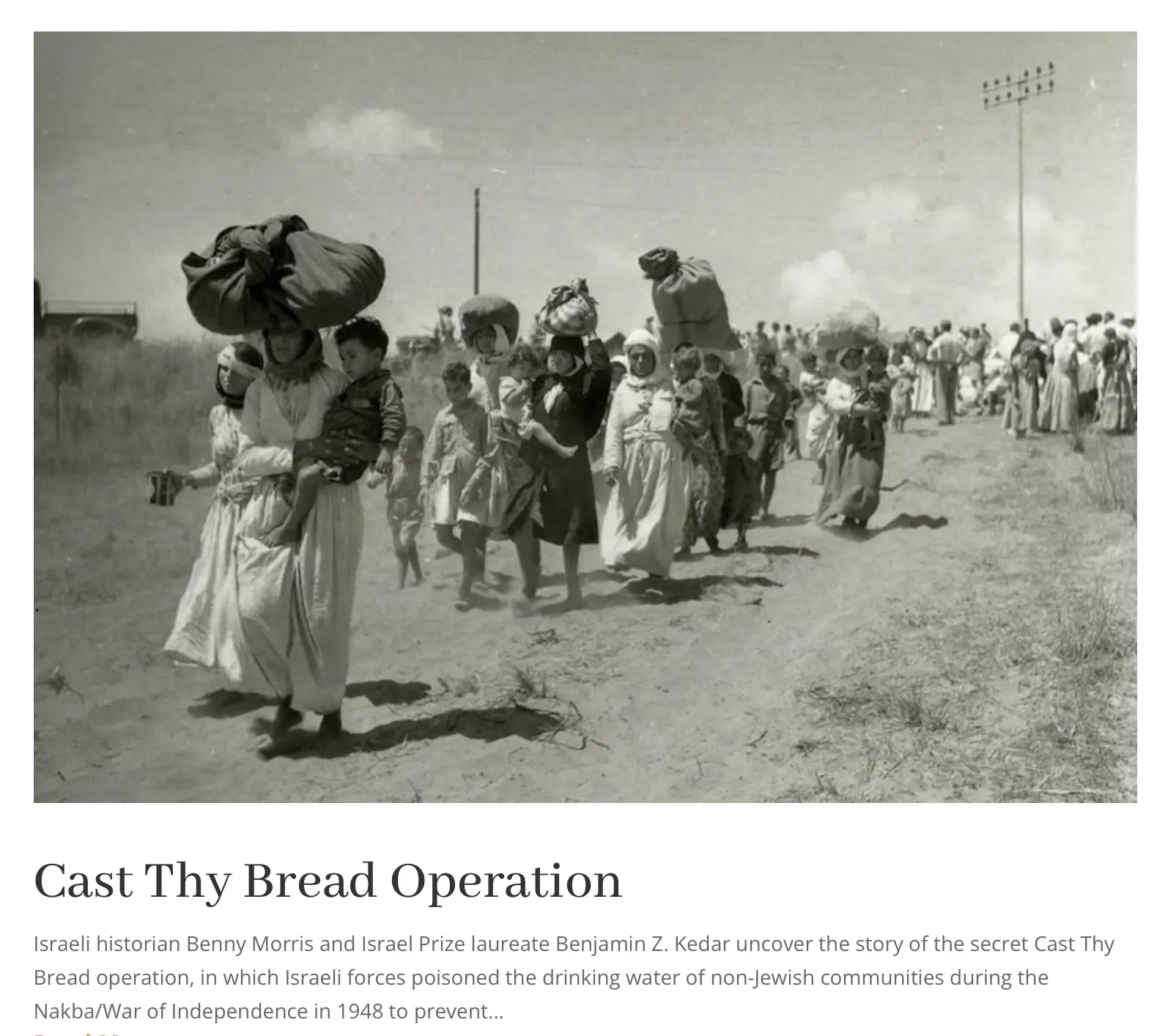
\ \ ## Wichtige Details\ \ - **Ziel**: Palästinensische Araber an der Rückkehr in eroberte Dörfer zu hindern und die Versuche der arabischen Armeen, Gebiete zurückzuerobern, zu behindern[1].\ - **Methoden**: Israelische Streitkräfte setzten Typhuskeime in Flaschen, Reagenzgläsern und Thermoskannen ein, um Brunnen und Wasservorräte in palästinensischen Gebieten zu vergiften[1][3].\ - **Führung**: Die Operation wurde vom israelischen Premierminister David Ben-Gurion und dem Generalstabschef der IDF, Yigael Yadin, beaufsichtigt und genehmigt[1].\ \ ## Bemerkenswerte Vorfälle\ \ - Akkon (Akka)**: Die Wasserversorgung der Stadt wurde am 15. Mai 1948 verseucht, was zu einer Typhusepidemie und „extremer Verzweiflung“ unter den Einwohnern führte[1][3].\ - **Gaza**: Im Mai 1948 versuchten vier Soldaten der israelischen Spezialeinheiten, die örtliche Wasserversorgung zu vergiften, wurden jedoch gefangen genommen und hingerichtet[1].\ - **Andere Orte**: Auch in Jericho, Eilabun und palästinensischen Vierteln in Jerusalem wurden Brunnen vergiftet[1][3].\ \ ## Folgen\ \ Die Operation führte zu schweren Erkrankungen unter den palästinensischen Anwohnern, von denen Dutzende betroffen sein sollen[1][3]. Sie erzielte jedoch nicht die von ihren Befürwortern erhoffte lähmende Wirkung und wurde im Dezember 1948 eingestellt[1].\ \ ## Historische Bedeutung\ \ Die Operation „Gegossenes Brot“ wurde als Kriegsverbrechen und als Akt der ethnischen Säuberung eingestuft[1]. Ihre Enthüllung hat eine Kontroverse und Debatte über die im Krieg von 1948 angewandten Taktiken und ihre langfristigen Auswirkungen auf den israelisch-palästinensischen Konflikt ausgelöst[2][4].
Quellen
[1] Operation Cast Thy Bread - Wikipedia https\://en.wikipedia.org/wiki/Operation_Cast_Thy_Bread
[2] Cast Thy Bread Archives - Promised Land Museum https\://promisedlandmuseum.org/tag/cast-thy-bread/
[3] From 'Virtuous Boy' to Murderous Fanatic: David Ben-Gurion and the ... https\://www.euppublishing.com/doi/10.3366/hlps.2023.0308
[4] Historians reveal Israel's use of poison against Palestinians https\://www.middleeastmonitor.com/20221011-historians-reveal-israels-use-of-poison-against-palestinians/
[5] Thoughts on Operation Cast Thy Bread? : r/IsraelPalestine - Reddit https\://www.reddit.com/r/IsraelPalestine/comments/1g02b64/thoughts_on_operation_cast_thy_bread/
[6] 'Cast thy bread': Israeli biological warfare during the 1948 War https\://www.tandfonline.com/doi/abs/10.1080/00263206.2022.2122448
[7] 'Cast thy bread': Israeli biological warfare during the 1948 War https\://cris.bgu.ac.il/en/publications/cast-thy-bread-israeli-biological-warfare-during-the-1948-war
[8] 'Cast thy bread': Israeli biological warfare during the 1948 War https\://www.tandfonline.com/doi/full/10.1080/00263206.2022.2122448
\
Artikel https://x.com/RealWsiegrist/status/1906616394747179136
Nakba
https://waltisiegrist.locals.com/upost/2033124/die-siedler-fordern-ganz-offen-eine-zweite-nakba
-
 @ 22aa8151:ae9b5954
2025-03-31 07:44:15
@ 22aa8151:ae9b5954
2025-03-31 07:44:15With all the current hype around Payjoin for the month, I'm open-sourcing a project I developed five years ago: https://github.com/Kukks/PrivatePond
Note: this project is unmaintained and should only be used as inspiration.
Private Pond is a Bitcoin Payjoin application I built specifically to optimize Bitcoin transaction rails for services, such as deposits, withdrawals, and automated wallet rebalancing.
The core concept is straightforward: withdrawals requested by users are queued and processed at fixed intervals, enabling traditional, efficient transaction batching. Simultaneously, deposits from other users can automatically batch these withdrawals via Payjoin batching, reducing them onchain footprint further. Taking it to the next step: a user's deposit is able to fund the withdrawals with its own funds reducing the required operational liquidity in hot wallets through a process called the Meta Payjoin.
The application supports multiple wallets—hot, cold, multisig, or hybrid—with configurable rules, enabling automated internal fund management and seamless rebalancing based on operational needs such as min/max balance limits and wallet ratios (10% hot, 80% in 2-of-3, 10% in 1-of-2, etc) .
This system naturally leverages user Payjoin transactions as part of the automated rebalancing strategy, improving liquidity management by batching server operations with user interactions.
Private Pond remains quite possibly the most advanced Payjoin project today, though my multi-party addendum of 2023 probably competes. That said, Payjoin adoption overall has been disappointing: the incentives heavily favor service operators who must in turn actively encourage user participation, limiting its appeal only for specialized usage. This is why my efforts refocused on systems like Wabisabi coinjoins, delivering not just great privacy but all the benefits of advanced Payjoin batching on a greater scale through output compaction.
Soon, I'll also open-source my prototype coinjoin protocol, Kompaktor, demonstrating significant scalability improvements, such as 50+ payments from different senders being compacted into a single Bitcoin output. And this is not even mentioning Ark, that pushes these concepts even further, giving insane scalability and asyncrhonous execution.
You can take a look at the slides I did around this here: https://miro.com/app/board/uXjVL-UqP4g=/
Parts of Private Pond, the pending transfers and multisig, will soon be integrated into nostr:npub155m2k8ml8sqn8w4dhh689vdv0t2twa8dgvkpnzfggxf4wfughjsq2cdcvg 's next major release—special thanks to nostr:npub1j8y6tcdfw3q3f3h794s6un0gyc5742s0k5h5s2yqj0r70cpklqeqjavrvg for continuing the work and getting it to the finish line.
-
 @ c631e267:c2b78d3e
2025-03-31 07:23:05
@ c631e267:c2b78d3e
2025-03-31 07:23:05Der Irrsinn ist bei Einzelnen etwas Seltenes – \ aber bei Gruppen, Parteien, Völkern, Zeiten die Regel. \ Friedrich Nietzsche
Erinnern Sie sich an die Horrorkomödie «Scary Movie»? Nicht, dass ich diese Art Filme besonders erinnerungswürdig fände, aber einige Szenen daraus sind doch gewissermaßen Klassiker. Dazu zählt eine, die das Verhalten vieler Protagonisten in Horrorfilmen parodiert, wenn sie in Panik flüchten. Welchen Weg nimmt wohl die Frau in der Situation auf diesem Bild?

Diese Szene kommt mir automatisch in den Sinn, wenn ich aktuelle Entwicklungen in Europa betrachte. Weitreichende Entscheidungen gehen wider jede Logik in die völlig falsche Richtung. Nur ist das hier alles andere als eine Komödie, sondern bitterernst. Dieser Horror ist leider sehr real.
Die Europäische Union hat sich selbst über Jahre konsequent in eine Sackgasse manövriert. Sie hat es versäumt, sich und ihre Politik selbstbewusst und im Einklang mit ihren Wurzeln auf dem eigenen Kontinent zu positionieren. Stattdessen ist sie in blinder Treue den vermeintlichen «transatlantischen Freunden» auf ihrem Konfrontationskurs gen Osten gefolgt.
In den USA haben sich die Vorzeichen allerdings mittlerweile geändert, und die einst hoch gelobten «Freunde und Partner» erscheinen den europäischen «Führern» nicht mehr vertrauenswürdig. Das ist spätestens seit der Münchner Sicherheitskonferenz, der Rede von Vizepräsident J. D. Vance und den empörten Reaktionen offensichtlich. Große Teile Europas wirken seitdem wie ein aufgescheuchter Haufen kopfloser Hühner. Orientierung und Kontrolle sind völlig abhanden gekommen.
Statt jedoch umzukehren oder wenigstens zu bremsen und vielleicht einen Abzweig zu suchen, geben die Crash-Piloten jetzt auf dem Weg durch die Sackgasse erst richtig Gas. Ja sie lösen sogar noch die Sicherheitsgurte und deaktivieren die Airbags. Den vor Angst dauergelähmten Passagieren fällt auch nichts Besseres ein und so schließen sie einfach die Augen. Derweil übertrumpfen sich die Kommentatoren des Events gegenseitig in sensationslüsterner «Berichterstattung».
Wie schon die deutsche Außenministerin mit höchsten UN-Ambitionen, Annalena Baerbock, proklamiert auch die Europäische Kommission einen «Frieden durch Stärke». Zu dem jetzt vorgelegten, selbstzerstörerischen Fahrplan zur Ankurbelung der Rüstungsindustrie, genannt «Weißbuch zur europäischen Verteidigung – Bereitschaft 2030», erklärte die Kommissionspräsidentin, die «Ära der Friedensdividende» sei längst vorbei. Soll das heißen, Frieden bringt nichts ein? Eine umfassende Zusammenarbeit an dauerhaften europäischen Friedenslösungen steht demnach jedenfalls nicht zur Debatte.
Zusätzlich brisant ist, dass aktuell «die ganze EU von Deutschen regiert wird», wie der EU-Parlamentarier und ehemalige UN-Diplomat Michael von der Schulenburg beobachtet hat. Tatsächlich sitzen neben von der Leyen und Strack-Zimmermann noch einige weitere Deutsche in – vor allem auch in Krisenzeiten – wichtigen Spitzenposten der Union. Vor dem Hintergrund der Kriegstreiberei in Deutschland muss eine solche Dominanz mindestens nachdenklich stimmen.
Ihre ursprünglichen Grundwerte wie Demokratie, Freiheit, Frieden und Völkerverständigung hat die EU kontinuierlich in leere Worthülsen verwandelt. Diese werden dafür immer lächerlicher hochgehalten und beschworen.
Es wird dringend Zeit, dass wir, der Souverän, diesem erbärmlichen und gefährlichen Trauerspiel ein Ende setzen und die Fäden selbst in die Hand nehmen. In diesem Sinne fordert uns auch das «European Peace Project» auf, am 9. Mai im Rahmen eines Kunstprojekts den Frieden auszurufen. Seien wir dabei!
[Titelbild: Pixabay]
Dieser Beitrag wurde mit dem Pareto-Client geschrieben und ist zuerst auf Transition News erschienen.
-
 @ 78c90fc4:4bff983c
2025-03-31 07:03:41
@ 78c90fc4:4bff983c
2025-03-31 07:03:41In Palästina und im Ausland wurde das Abkommen einzelner jüdischer Organisationen mit dem nationalsozialistischen Deutschland heftig kritisiert. Auf dem 18. Zionistenkongress 1933 in Prag etwa bezeichnete der Schriftsteller Schalom Asch das Abkommen mit Hitlers Regime als „Verrat am Weltjudentum“. Chaim Arlosoroff, der damalige Verhandlungsführer der Jewish Agency, wurde wahrscheinlich deshalb im Juni 1933 Opfer eines Mordanschlags.

https\://de.m.wikipedia.org/wiki/Ha’avara-Abkommen
Am 16. Juni 1933 wurde Chaim Arlosoroff kurz nach seiner Rückkehr von den Transfer-Verhandlungen in Deutschland durch den Pistolenschuss eines Attentäters schwer verletzt, als er mit seiner Frau Sima, geb. Rubin, am Strand von Tel Aviv entlangging. Er verstarb am folgenden Tag im Krankenhaus. Wer der Attentäter war, ist bis heute ungeklärt. Zunächst wurden drei Verdächtige angeklagt. Zwei von ihnen wurden freigesprochen, einer, Abraham Stavsky, wurde verurteilt, doch das Urteil wurde durch das oberste Appellationsgericht aufgehoben.
https://de.m.wikipedia.org/wiki/Chaim_Arlosoroff#Ermordung
Instrumentalisierung des Holocaust
Von Anneliese Fikentscher und Andreas Neumann
Zum Schluss ein Zitat aus dem 2017 erschienenen Buch "Die israelisch-jüdische Tragödie. Von Auschwitz zum Besatzungs- und Apartheidstaat. Das Ende der Verklärung" von Arn Strohmeyer: „Der vielleicht radikalste Kritiker des israelischen Holocaustgedenkens ist der amerikanisch -jüdische Politologe Norman Finkelstein. Er wendet sich vor allem gegen das in Israel und den USA verwendete Dogma, der Holocaust sei 'einzigartig' gewesen und mit anderen Verbrechen nicht vergleichbar, dass er in der Geschichte also ohne Parallele sei. Diese Behauptung – so Finkelstein – impliziert eine Reihe anderer Behauptungen, die wiederum die Instrumentalisierung des Holocaust ausmachen. Erstens: Die Konstruktion des Holocaust als einzigartig gilt als gegeben, sie zu leugnen gilt als Leugnung des Holocaust. Diese Behauptung schließt zweitens ein rationales Verständnis des Holocaust aus, er macht den Holocaust zu einem Mysterium, wie Elie Wiesel ihn verstanden hat. Einzigartiges Leid verleiht drittens einen einzigartigen Anspruch. Die Unvergleichlichkeit des Holocaust stellt also ein moralisches Kapital dar, das Israel als politisches Alibi benutzt. Israel kann – so Finkelstein – diese moralischen und emotionalen Ansprüche an andere Staaten stellen und die Anerkennung seines Rechts einfordern, dass es als besonders bedroht gelten kann und seine Anstrengungen zum Überleben der Unterstützung bedarf. Die Behauptung der Einzigartigkeit des Holocaust beinhaltet auch die Behauptung der jüdischen Einzigartigkeit. Der Holocaust ist also etwas Besonderes, weil Juden etwas Besonderes sind, was man als säkularisierte Version der Auserwähltheit deuten kann. Diese Behauptungen – so Finkelstein – sollen Israels Sonderstellung legitimieren, sollen von vornherein jede unmenschliche Behandlung von Nichtjuden entschuldigen (Israel ist 'alles erlaubt!') und machen diesen Staat und seine Politik gegen jede Kritik immun. Bei dieser Instrumentalisierung des Holocaust bleiben die Rechte und die Würde der Opfer – welcher auch immer – völlig auf der Strecke.“ Ist das einer breiten Öffentlichkeit bewusst?
http://www.nrhz.de/flyer/beitrag.php?id=24469
Perplexity:
Der Schriftsteller Schalom Asch kritisierte das Ha'avara-Abkommen scharf auf dem 18. Zionistischen Kongress, der vom 21. August bis 4. September 1933 in Prag stattfand. Er bezeichnete das Abkommen mit dem Hitler-Regime als "ein Verrat am Weltjudentum"[1][2].
Das Ha'avara-Abkommen wurde am 10. August 1933 zwischen der Jewish Agency, der Zionistischen Vereinigung für Deutschland und dem deutschen Reichsministerium für Wirtschaft geschlossen. Es sollte die Emigration deutscher Juden nach Palästina erleichtern und gleichzeitig den deutschen Export fördern[2].
Am 5. November 1933 wurde die "Trust and Transfer Office Ha'avara Ltd." als quasi privates Unternehmen eingetragen[1][3]. Trotz der anfänglichen Kritik billigte die Zionistische Weltorganisation auf ihrer Konferenz am 20. August 1935 in Luzern mit Mehrheit den Ha'avara-Abschluss und übernahm sogar dessen gesamte Tätigkeit in eigene Regie[1][2][3].
Das Abkommen war innerhalb der zionistischen Bewegung umstritten, da es den gleichzeitig vorangetriebenen Boykottmaßnahmen gegen die Nationalsozialisten zuwiderlief[2]. Es ermöglichte deutschen Juden, einen Teil ihres Vermögens nach Palästina zu transferieren, wobei ein bestimmter Prozentsatz als Reichsfluchtsteuer vom deutschen Fiskus einbehalten wurde[5].
Quellen
[1] Zionistenkongress - Wikiwand https\://www.wikiwand.com/de/articles/Zionistenkongress
[2] Ha'avara-Abkommen - Wikiwand https\://www.wikiwand.com/de/articles/Haavara-Abkommen
[3] Zionistenkongress - Wikipedia https\://de.wikipedia.org/wiki/Zionistenkongress
[4] Schalom Asch - Wikipedia https\://de.wikipedia.org/wiki/Schalom_Asch
[5] Ha'avara-Abkommen - Wikipedia https\://de.wikipedia.org/wiki/Ha%E2%80%99avara-Abkommen
[6] Stefan Zweig. Briefe zum Judentum. Hg. v. Stefan Litt. Berlin ... https\://judaica.ch/article/view/8320/11519
[7] Das Haavara-Transfer-Abkommen | Die Wohnung | bpb.de https\://www.bpb.de/themen/nationalsozialismus-zweiter-weltkrieg/die-wohnung/195259/das-haavara-transfer-abkommen/
[8] Jüdischer Verlag - Wikipedia https\://de.wikipedia.org/wiki/J%C3%BCdischer_Verlag
Artikel https://x.com/RealWsiegrist/status/1906601705355252211
-
 @ 91bea5cd:1df4451c
2025-05-16 11:07:16
@ 91bea5cd:1df4451c
2025-05-16 11:07:16Instruções:
- Leia cada pergunta cuidadosamente.
- Escolha a opção (A, B, C ou D) que melhor descreve você na maioria das situações. Seja o mais honesto possível.
- Anote a letra correspondente à sua escolha para cada pergunta.
- No final, some quantas vezes você escolheu cada letra (A, B, C, D).
- Veja a seção de resultados para interpretar sua pontuação.
Teste de Temperamento
1. Em um evento social (festa, reunião), como você geralmente se comporta? A) Sou o centro das atenções, converso com todos, faço piadas e animo o ambiente. B) Tomo a iniciativa, organizo atividades ou discussões, e gosto de liderar conversas. C) Prefiro observar, conversar em grupos menores ou com pessoas que já conheço bem, e analiso o ambiente. D) Sou tranquilo, ouvinte, evito chamar atenção e me adapto ao ritmo do grupo.
2. Ao enfrentar um novo projeto ou tarefa desafiadora no trabalho ou estudo: A) Fico entusiasmado com a novidade, tenho muitas ideias iniciais, mas posso me distrair facilmente. B) Defino metas claras, crio um plano de ação rápido e foco em alcançar resultados eficientemente. C) Analiso todos os detalhes, planejo meticulosamente, prevejo possíveis problemas e busco a perfeição. D) Abordo com calma, trabalho de forma constante e organizada, e prefiro um ambiente sem pressão.
3. Como você geralmente reage a críticas? A) Tento levar na esportiva, talvez faça uma piada, mas posso me magoar momentaneamente e logo esqueço. B) Defendo meu ponto de vista vigorosamente, posso ficar irritado se sentir injustiça, mas foco em corrigir o problema. C) Levo muito a sério, analiso profundamente, posso me sentir magoado por um tempo e repenso minhas ações. D) Escuto com calma, considero a crítica objetivamente e tento não levar para o lado pessoal, buscando a paz.
4. Qual seu estilo de tomada de decisão? A) Sou impulsivo, decido rapidamente com base no entusiasmo do momento, às vezes me arrependo depois. B) Sou decidido e rápido, foco no objetivo final, às vezes sem considerar todos os detalhes ou sentimentos alheios. C) Sou ponderado, analiso todas as opções e consequências, demoro para decidir buscando a melhor escolha. D) Sou cauteloso, prefiro evitar decisões difíceis, busco consenso ou adio se possível.
5. Como você lida com rotina e repetição? A) Acho entediante rapidamente, preciso de variedade e novidade constante para me manter engajado. B) Tolero se for necessário para atingir um objetivo, mas prefiro desafios e mudanças que eu controlo. C) Aprecio a ordem e a previsibilidade, me sinto confortável com rotinas bem estabelecidas. D) Adapto-me bem à rotina, acho confortável e seguro, não gosto de mudanças bruscas.
6. Em uma discussão ou conflito: A) Tento aliviar a tensão com humor, expresso meus sentimentos abertamente, mas não guardo rancor. B) Sou direto e assertivo, defendo minha posição com firmeza, posso parecer confrontador. C) Evito confronto direto, mas fico remoendo o problema, analiso os argumentos e posso guardar ressentimento. D) Busco a conciliação, tento entender todos os lados, sou diplomático e evito o conflito a todo custo.
7. Como você expressa seus sentimentos (alegria, tristeza, raiva)? A) Expresso de forma aberta, intensa e visível, minhas emoções mudam rapidamente. B) Expresso de forma direta e forte, principalmente a raiva ou a determinação, controlo emoções "fracas". C) Tendo a internalizar, minhas emoções são profundas e duradouras, posso parecer reservado. D) Sou contido na expressão emocional, mantenho a calma externamente, mesmo que sinta algo internamente.
8. Qual seu nível de energia habitual? A) Alto, sou muito ativo, falante e entusiasmado, gosto de estar em movimento. B) Muito alto e direcionado, tenho muita energia para perseguir meus objetivos e liderar. C) Variável, posso ter picos de energia para projetos que me interessam, mas também preciso de tempo quieto para recarregar. D) Moderado e constante, sou calmo, tranquilo, prefiro atividades menos agitadas.
9. Como você organiza seu espaço de trabalho ou sua casa? A) Pode ser um pouco caótico e desorganizado, com muitas coisas interessantes espalhadas. B) Organizado de forma funcional para máxima eficiência, focado no essencial para as tarefas. C) Extremamente organizado, metódico, cada coisa em seu lugar, prezo pela ordem e estética. D) Confortável e prático, não necessariamente impecável, mas funcional e sem excessos.
10. O que mais te motiva? A) Reconhecimento social, diversão, novas experiências e interações. B) Poder, controle, desafios, alcançar metas ambiciosas e resultados concretos. C) Qualidade, significado, fazer as coisas da maneira certa, compreensão profunda. D) Paz, estabilidade, harmonia nos relacionamentos, evitar estresse e pressão.
11. Como você reage a imprevistos ou mudanças de plano? A) Adapto-me rapidamente, às vezes até gosto da novidade, embora possa atrapalhar meus planos iniciais. B) Fico irritado com a perda de controle, mas rapidamente busco uma solução alternativa para manter o objetivo. C) Sinto-me desconfortável e ansioso, preciso de tempo para reavaliar e replanejar cuidadosamente. D) Aceito com calma, sou flexível e me ajusto sem muito alarde, desde que não gere conflito.
12. Qual o seu maior medo (em termos gerais)? A) Ser rejeitado, ignorado ou ficar entediado. B) Perder o controle, parecer fraco ou incompetente. C) Cometer erros graves, ser inadequado ou imperfeito. D) Conflitos, pressão, tomar decisões erradas que afetem a estabilidade.
13. Como você costuma passar seu tempo livre? A) Socializando, saindo com amigos, buscando atividades novas e divertidas. B) Engajado em atividades produtivas, esportes competitivos, planejando próximos passos. C) Lendo, estudando, refletindo, dedicando-me a hobbies que exigem atenção e cuidado. D) Relaxando em casa, assistindo filmes, lendo tranquilamente, passando tempo com a família de forma calma.
14. Ao trabalhar em equipe: A) Sou o animador, trago ideias, conecto as pessoas, mas posso ter dificuldade em focar nos detalhes. B) Assumo a liderança naturalmente, delego tarefas, foco nos resultados e mantenho todos na linha. C) Sou o planejador e o crítico construtivo, atento aos detalhes, garanto a qualidade, mas posso ser muito exigente. D) Sou o pacificador e o colaborador, ajudo a manter a harmonia, realizo minhas tarefas de forma confiável.
15. Como você lida com prazos? A) Muitas vezes deixo para a última hora, trabalho melhor sob a pressão do prazo final, mas posso me atrapalhar. B) Gosto de terminar bem antes do prazo, vejo o prazo como um desafio a ser superado rapidamente. C) Planejo o tempo cuidadosamente para cumprir o prazo com qualidade, fico ansioso se o tempo fica curto. D) Trabalho em ritmo constante para cumprir o prazo sem estresse, não gosto de correria.
16. Qual destas frases mais te descreve? A) "A vida é uma festa!" B) "Se quer algo bem feito, faça você mesmo (ou mande fazer do seu jeito)." C) "Tudo tem um propósito e um lugar certo." D) "Devagar se vai ao longe."
17. Em relação a regras e procedimentos: A) Gosto de flexibilidade, às vezes acho as regras limitantes e tento contorná-las. B) Uso as regras a meu favor para atingir objetivos, mas não hesito em quebrá-las se necessário e se eu puder controlar as consequências. C) Sigo as regras rigorosamente, acredito que elas garantem ordem e qualidade. D) Respeito as regras para evitar problemas, prefiro seguir o fluxo estabelecido.
18. Como você reage quando alguém está emocionalmente abalado? A) Tento animar a pessoa, conto piadas, ofereço distração e companhia. B) Ofereço soluções práticas para o problema, foco em resolver a situação que causou o abalo. C) Escuto com empatia, ofereço apoio profundo e tento compreender a dor da pessoa. D) Mantenho a calma, ofereço um ouvido atento e um ombro amigo, sem me deixar abalar muito.
19. Que tipo de filme ou livro você prefere? A) Comédias, aventuras, romances leves, algo que me divirta e me mantenha entretido. B) Ação, suspense, biografias de líderes, estratégias, algo que me desafie ou inspire poder. C) Dramas profundos, documentários, mistérios complexos, ficção científica filosófica, algo que me faça pensar e sentir. D) Histórias tranquilas, dramas familiares, romances amenos, natureza, algo que me relaxe e traga conforto.
20. O que é mais importante para você em um relacionamento (amizade, amoroso)? A) Diversão, cumplicidade, comunicação aberta e espontaneidade. B) Lealdade, objetivos em comum, apoio mútuo nas ambições. C) Compreensão profunda, fidelidade, apoio emocional e intelectual. D) Harmonia, estabilidade, aceitação mútua e tranquilidade.
21. Se você ganhasse na loteria, qual seria sua primeira reação/ação? A) Faria uma grande festa, viajaria pelo mundo, compraria presentes para todos! B) Investiria estrategicamente, planejaria como multiplicar o dinheiro, garantiria o controle financeiro. C) Pesquisaria as melhores opções de investimento, faria um plano detalhado de longo prazo, doaria para causas significativas. D) Guardaria a maior parte em segurança, faria algumas melhorias práticas na vida, evitaria mudanças drásticas.
22. Como você se sente em relação a riscos? A) Gosto de arriscar se a recompensa parecer divertida ou excitante, sou otimista. B) Calculo os riscos e assumo-os se acreditar que a recompensa vale a pena e que posso controlar a situação. C) Evito riscos desnecessários, prefiro a segurança e a previsibilidade, analiso tudo antes de agir. D) Desgosto de riscos, prefiro caminhos seguros e comprovados, a estabilidade é mais importante.
23. Sua memória tende a focar mais em: A) Momentos divertidos, pessoas interessantes, experiências marcantes (embora possa esquecer detalhes). B) Sucessos, fracassos (para aprender), injustiças cometidas contra você, quem te ajudou ou atrapalhou. C) Detalhes precisos, conversas significativas, erros cometidos (por você ou outros), sentimentos profundos. D) Fatos objetivos, rotinas, informações práticas, geralmente de forma neutra.
24. Quando aprende algo novo, você prefere: A) Experimentar na prática imediatamente, aprender fazendo, mesmo que cometa erros. B) Entender o objetivo e a aplicação prática rapidamente, focar no essencial para usar o conhecimento. C) Estudar a fundo a teoria, entender todos os porquês, buscar fontes confiáveis e dominar o assunto. D) Aprender em um ritmo calmo, com instruções claras e passo a passo, sem pressão.
25. Se descreva em uma palavra (escolha a que mais se aproxima): A) Entusiasmado(a) B) Determinado(a) C) Criterioso(a) D) Pacífico(a)
26. Como você lida com o silêncio em uma conversa? A) Sinto-me desconfortável e tento preenchê-lo rapidamente com qualquer assunto. B) Uso o silêncio estrategicamente ou o interrompo para direcionar a conversa. C) Posso apreciar o silêncio para refletir, ou me sentir um pouco ansioso dependendo do contexto. D) Sinto-me confortável com o silêncio, não sinto necessidade de preenchê-lo.
27. O que te deixa mais frustrado(a)? A) Tédio, falta de reconhecimento, ser ignorado. B) Incompetência alheia, falta de controle, obstáculos aos seus planos. C) Desorganização, falta de qualidade, injustiça, superficialidade. D) Conflitos interpessoais, pressão excessiva, desordem emocional.
28. Qual a sua relação com o passado, presente e futuro? A) Foco no presente e nas oportunidades imediatas, otimista em relação ao futuro, esqueço o passado facilmente. B) Foco no futuro (metas) e no presente (ações para alcançá-las), aprendo com o passado mas não me prendo a ele. C) Reflito muito sobre o passado (aprendizados, erros), analiso o presente e planejo o futuro com cautela, às vezes com preocupação. D) Vivo o presente de forma tranquila, valorizo a estabilidade e a continuidade do passado, vejo o futuro com serenidade.
29. Se você tivesse que organizar um evento, qual seria seu papel principal? A) Relações públicas, divulgação, animação, garantir que todos se divirtam. B) Coordenação geral, definição de metas, delegação de tarefas, garantir que tudo aconteça conforme o planejado (por você). C) Planejamento detalhado, logística, controle de qualidade, garantir que nada dê errado. D) Suporte, resolução de problemas de forma calma, garantir um ambiente harmonioso.
30. Qual ambiente de trabalho te agrada mais? A) Dinâmico, social, com muita interação, flexibilidade e novidades. B) Competitivo, desafiador, focado em resultados, onde eu possa liderar ou ter autonomia. C) Estruturado, quieto, onde eu possa me concentrar, com padrões claros de qualidade e tempo para análise. D) Estável, cooperativo, sem pressão, com relacionamentos harmoniosos e tarefas previsíveis.
Calculando seus Resultados:
Agora, conte quantas vezes você escolheu cada letra:
- Total de A: ______
- Total de B: ______
- Total de C: ______
- Total de D: ______
A letra (ou as letras) com a maior pontuação indica(m) seu(s) temperamento(s) dominante(s).
Interpretação dos Resultados:
-
Se sua maior pontuação foi A: Temperamento SANGUÍNEO Dominante
- Características: Você é extrovertido, otimista, sociável, comunicativo, entusiasmado e adora novidades. Gosta de ser o centro das atenções, faz amigos facilmente e contagia os outros com sua energia. É criativo e espontâneo.
- Pontos Fortes: Carismático, inspirador, adaptável, bom em iniciar relacionamentos e projetos, perdoa facilmente.
- Desafios Potenciais: Pode ser indisciplinado, desorganizado, impulsivo, superficial, ter dificuldade em focar e terminar tarefas, e ser muito dependente de aprovação externa.
-
Se sua maior pontuação foi B: Temperamento COLÉRICO Dominante
- Características: Você é enérgico, decidido, líder nato, orientado para metas e resultados. É ambicioso, assertivo, direto e não tem medo de desafios ou confrontos. Gosta de estar no controle e é muito prático.
- Pontos Fortes: Determinado, eficiente, líder natural, bom em tomar decisões e resolver problemas, autoconfiante.
- Desafios Potenciais: Pode ser impaciente, dominador, teimoso, insensível aos sentimentos alheios, propenso à raiva e a "atropelar" os outros para atingir seus objetivos.
-
Se sua maior pontuação foi C: Temperamento MELANCÓLICO Dominante
- Características: Você é introvertido, analítico, sensível, perfeccionista e profundo. É leal, dedicado, aprecia a beleza e a ordem. Tende a ser pensativo, criterioso e busca significado em tudo. Leva as coisas a sério.
- Pontos Fortes: Detalhista, organizado, criativo (em profundidade), leal, empático, comprometido com a qualidade e a justiça.
- Desafios Potenciais: Pode ser pessimista, excessivamente crítico (consigo e com os outros), indeciso (pela análise excessiva), guardar ressentimentos, ser propenso à tristeza e ao isolamento.
-
Se sua maior pontuação foi D: Temperamento FLEUMÁTICO Dominante
- Características: Você é calmo, tranquilo, equilibrado e diplomático. É observador, paciente, confiável e fácil de conviver. Evita conflitos, busca harmonia e estabilidade. É um bom ouvinte e trabalha bem sob rotina.
- Pontos Fortes: Pacífico, estável, confiável, bom ouvinte, diplomático, eficiente em tarefas rotineiras, mantém a calma sob pressão.
- Desafios Potenciais: Pode ser indeciso, procrastinador, resistente a mudanças, parecer apático ou sem entusiasmo, ter dificuldade em se impor e expressar suas próprias necessidades.
Combinações de Temperamentos:
É muito comum ter pontuações altas em duas letras. Isso indica uma combinação de temperamentos. Por exemplo:
- Sanguíneo-Colérico: Extrovertido, enérgico, líder carismático, mas pode ser impulsivo e dominador.
- Sanguíneo-Fleumático: Sociável e agradável, mas pode ter dificuldade com disciplina e iniciativa.
- Colérico-Melancólico: Líder focado e detalhista, muito capaz, mas pode ser excessivamente crítico e exigente.
- Melancólico-Fleumático: Quieto, confiável, analítico, mas pode ser indeciso e resistente a riscos.
Importante: Este teste é uma ferramenta de autoconhecimento. Ninguém se encaixa perfeitamente em uma única caixa. Use os resultados para entender melhor suas tendências naturais, seus pontos fortes e as áreas onde você pode buscar equilíbrio e desenvolvimento.
-
 @ da0b9bc3:4e30a4a9
2025-03-31 06:32:43
@ da0b9bc3:4e30a4a9
2025-03-31 06:32:43Hello Stackers!
Welcome on into the ~Music Corner of the Saloon!
A place where we Talk Music. Share Tracks. Zap Sats.
So stay a while and listen.
🚨Don't forget to check out the pinned items in the territory homepage! You can always find the latest weeklies there!🚨
🚨Subscribe to the territory to ensure you never miss a post! 🚨
originally posted at https://stacker.news/items/929968
-
 @ b4f80629:1ddda3b4
2025-03-31 05:00:00
@ b4f80629:1ddda3b4
2025-03-31 05:00:00def create_basic_html(title, heading, paragraph): """ Creates a simple HTML string.
Args: title: The title of the HTML page. heading: The main heading of the page. paragraph: A paragraph of text for the page.
Returns: A string containing the HTML code. """
html_string = f"""
{title} {heading}
{paragraph}
""" return html_string
Example usage:
my_title = "My First Webpage" my_heading = "Welcome!" my_paragraph = "This is a simple webpage created with Python."
my_html = create_basic_html(my_title, my_heading, my_paragraph)
To save to a file (optional):
with open("my_page.html", "w") as f: f.write(my_html)
print("HTML created! (Check 'my_page.html' in the same folder as this python code)")
-
 @ b4f80629:1ddda3b4
2025-03-31 04:58:26
@ b4f80629:1ddda3b4
2025-03-31 04:58:26Imagine you have a cool skill, like drawing, writing, or making videos. Freelancing is like using that skill to do small jobs for different people or companies. How it Works: * You're Your Own Boss: You decide when and where you work. * You Choose Your Jobs: You pick projects that you like. * You Get Paid for Your Skills: People pay you for the work you do. Examples: * If you're good at drawing, you could make digital art for someone's social media. * If you like writing, you could help someone write short stories or articles. * If you are good at video editing, you could edit videos for someone. Things to Know: * It takes time and effort to find jobs. * You need to be organized and good at communication. * It is very important to get permission from your parents or guardians before you begin any online money making ventures. Freelancing is a way to use your creativity and skills to earn money. It can be a fun way to explore different interests and build your experience.
-
 @ e4950c93:1b99eccd
2025-05-16 10:14:50
@ e4950c93:1b99eccd
2025-05-16 10:14:50Joha est une marque danoise qui crée des vêtements en laine mérinos, coton biologique, viscose de bambou biologique et soie pour les bébés, les enfants et les femmes.
Matières naturelles utilisées dans les produits
- Coton (biologique)
- Laine (mérinos)
- Soie
- Cellulose régénérée (cupra, lyocell, modal, rayonne, viscose) (bambou biologique)
⚠️ Attention, certains produits de cette marque contiennent des matières non naturelles, dont : - Elasthanne, lycra, spandex - Polyamides, nylon
Catégories de produits proposés
Cette marque propose des produits intégralement en matière naturelle dans les catégories suivantes :
Vêtements
- Tailles vêtements: bébés, enfants, femmes
- Sous-vêtements: culottes
- Une pièce:
- Hauts: débardeurs, t-shirts
- Bas: pantalons, leggings
- Tête et mains: bonnets, cagoules, moufles
- Nuit: pyjamas
Chaussures
- Tailles chaussures: chaussures bébé
- Chaussons: botillons
Autres informations
- Certification Oeko-Tex Standard 100
- Certification Woolmark
- Déclaration de laine de mouton sans mulesing et de bien-être animal (Südwolle group GmbH)
👉 En savoir plus sur le site de la marque
Où trouver leurs produits ?
- Luna & Curious (en anglais, zone de livraison : RU et international)
- Niddle Noddle (en anglais, zone de livraison : RU et international)
- Chlidren Salon (en anglais, zone de livraison : RU et international)
- Lieblings Paris
Cet article est publié sur origine-nature.com 🌐 See this article in English
📝 Tu peux contribuer à cette fiche en suggérant une modification en commentaire.
🗣️ Tu utilises les produits de cette marque ? Partage ton avis en commentaire.
⚡ Heureu-x-se de trouver cette information ? Soutiens le projet en faisant un don, pour remercier les contribut-eur-ice-s.
-
 @ 6be5cc06:5259daf0
2025-03-31 03:19:46
@ 6be5cc06:5259daf0
2025-03-31 03:19:46Introdução à Sociedade de Condomínios Privados
Uma sociedade não deve ser construída sobre coerção, mas sim sobre associações voluntárias e interações espontâneas entre indivíduos. A sociedade de condomínios privados surge como uma alternativa natural ao modelo atual de centros urbanos, substituindo a imposição centralizada por estruturas baseadas em contratos e livre associação. Cada condomínio é uma unidade autônoma, gerida por aqueles que ali residem, onde os critérios de entrada, as regras internas e o comércio são definidos pelos próprios participantes. Essa estrutura permite que indivíduos se agrupem com base em valores compartilhados, eliminando os conflitos artificiais impostos por estados e legislações homogêneas que não respeitam a diversidade de preferências e estilos de vida.
O objetivo dessa sociedade é simples: permitir que as pessoas vivam de acordo com seus princípios sem interferência externa. Em um mundo onde a coerção estatal distorce incentivos, os condomínios privados oferecem uma alternativa onde a ordem surge do livre mercado e da cooperação voluntária. Os moradores escolhem seus vizinhos, definem suas próprias normas e interagem economicamente conforme suas necessidades e interesses. O modelo elimina a necessidade de um controle central, pois os incentivos derivados do livre mercado levam ao desenvolvimento de comunidades prósperas, onde a reputação e a confiança mútua são mais eficazes do que qualquer imposição estatal. Assim, essa sociedade representa a evolução lógica do conceito de liberdade individual e propriedade privada como pilares fundamentais da ordem social.
Público-Alvo e Identidade
Os condomínios privados refletem o princípio da livre associação, permitindo que indivíduos escolham viver em comunidades alinhadas com seus valores e necessidades sem interferência estatal. Cada condomínio possui uma identidade própria, moldada pelos moradores e seus interesses, criando ambientes onde afinidades culturais, filosóficas ou profissionais são preservadas e incentivadas. Enquanto alguns podem ser voltados para famílias numerosas, oferecendo amplos espaços e infraestrutura adequada, outros podem priorizar solteiros e jovens profissionais, com áreas de coworking e espaços de lazer voltados para networking e socialização. Da mesma forma, comunidades religiosas podem estabelecer seus próprios espaços de culto e eventos, enquanto condomínios para idosos podem ser projetados com acessibilidade e serviços médicos especializados.
Críticos podem afirmar que essa forma de organização resulta em pouca diversidade de habilidades e perspectivas, mas esse argumento ignora a dinâmica das interações humanas e o caráter evolutivo dos intercâmbios entre comunidades. Nenhum condomínio existe isolado; a troca entre diferentes comunidades ocorre naturalmente pelo mercado, incentivando o intercâmbio de conhecimento e serviços entre especialistas de diferentes áreas. Além disso, a ideia de que todos os grupos devem conter uma variedade aleatória de indivíduos desconsidera que a verdadeira diversidade nasce da liberdade de escolha, e não da imposição estatal de convivências forçadas.
Outra crítica possível é que a existência de critérios de entrada pode levar à segregação social. No entanto, essa preocupação deriva da concepção errônea de que todas as comunidades devem ser abertas e incluir qualquer pessoa indiscriminadamente. Porém, a liberdade de associação implica, necessariamente, a liberdade de exclusão. Se um grupo deseja manter determinada identidade cultural, religiosa ou profissional, isso não impede que outros grupos criem suas próprias comunidades conforme seus valores e recursos. Além disso, essa especialização leva a uma concorrência saudável entre condomínios, forçando-os a oferecer melhores condições para atrair moradores. Em vez de uma sociedade homogênea moldada por burocratas, temos um mosaico de comunidades autônomas, onde cada indivíduo pode encontrar ou criar o ambiente que melhor lhe convém.
Autossuficiência e Especialização
A força dos condomínios privados reside na capacidade de seus moradores de contribuírem ativamente para a comunidade, tornando-a funcional e autossuficiente sem a necessidade de intervenções estatais. Diferentes condomínios podem se especializar em áreas específicas ou ter diversos profissionais de diferentes setores, refletindo as competências e interesses de seus residentes. Essa descentralização do conhecimento e da produção permite que cada comunidade desenvolva soluções internas para suas demandas, reduzindo dependências externas e estimulando a prosperidade local.
Os moradores atuam como agentes econômicos, trocando bens e serviços dentro do próprio condomínio e entre diferentes comunidades. Um condomínio voltado para a saúde, por exemplo, pode contar com médicos, enfermeiros e terapeutas que oferecem consultas, aulas e assistência médica particular, remunerados diretamente por seus clientes, sem a intermediação de burocracias. Da mesma forma, um condomínio agrícola pode abrigar agricultores que cultivam alimentos orgânicos, compartilham técnicas de cultivo e comercializam excedentes com outros condomínios, garantindo um fluxo contínuo de suprimentos. Em um condomínio tecnológico, programadores, engenheiros e empreendedores desenvolvem soluções de TI, segurança digital e energia renovável, promovendo a inovação e ampliando as possibilidades de intercâmbio econômico.
A economia interna de cada condomínio se fortalece através de serviços oferecidos pelos próprios moradores. Professores podem ministrar aulas, técnicos podem prestar serviços de manutenção, artesãos podem vender seus produtos diretamente para os vizinhos. O mercado livre e voluntário é o principal regulador dessas interações, garantindo que a especialização surja naturalmente conforme a demanda e a oferta se ajustam. Essa estrutura elimina desperdícios comuns em sistemas centralizados, onde a alocação de recursos se dá por decisões políticas e não pelas necessidades reais da população.
Alguns argumentam que a especialização pode criar bolhas de conhecimento, tornando os condomínios excessivamente dependentes de trocas externas. Contudo, essa preocupação desconsidera a natureza espontânea do mercado, que incentiva a cooperação e o comércio entre comunidades distintas. Nenhum condomínio precisa produzir tudo internamente; ao contrário, a divisão do trabalho e a liberdade de escolha promovem interdependências saudáveis e vantajosas para todos. Assim, cada morador se insere em um ecossistema dinâmico, onde suas habilidades são valorizadas e sua autonomia preservada, sem coerções estatais ou distorções artificiais impostas por planejadores centrais.
Infraestrutura e Sustentabilidade
A solidez de uma sociedade baseada em condomínios privados depende de uma infraestrutura eficiente e sustentável, projetada para reduzir a dependência externa e garantir o máximo de autonomia. Sem um aparato estatal centralizador, cada comunidade deve estruturar seus próprios meios de obtenção de energia, água, alimentação e demais bens essenciais, garantindo que suas operações sejam viáveis a longo prazo. Essa abordagem, longe de ser um entrave, representa a verdadeira inovação descentralizada: um ambiente onde as soluções emergem da necessidade real e da engenhosidade humana, e não de diretrizes burocráticas e regulamentos ineficazes.
Cada condomínio pode investir em tecnologias sustentáveis e autônomas, como energia solar e eólica, reduzindo custos e minimizando a vulnerabilidade às flutuações do mercado energético tradicional. Sistemas de captação e filtragem de água da chuva, bem como a reutilização eficiente dos recursos hídricos, garantem independência em relação a empresas monopolistas e governos que frequentemente administram esse bem de forma ineficaz. Hortas comunitárias e fazendas verticais podem suprir grande parte da demanda alimentar, permitindo que cada condomínio mantenha sua própria reserva de alimentos, aumentando a resiliência contra crises externas e instabilidades de mercado.
Além dos recursos naturais, os espaços compartilhados desempenham um papel fundamental na integração e no fortalecimento dessas comunidades. Bibliotecas, ginásios, creches e salas de aula permitem que o conhecimento e os serviços circulem internamente, criando um ambiente onde a colaboração ocorre de maneira orgânica. A descentralização também se aplica ao uso da tecnologia, plataformas digitais privadas podem ser utilizadas para conectar moradores, facilitar a troca de serviços e produtos, além de coordenar agendamentos e eventos dentro dos condomínios e entre diferentes comunidades.
O Bitcoin surge como uma ferramenta indispensável nesse ecossistema, eliminando a necessidade de bancos estatais ou sistemas financeiros controlados. Ao permitir transações diretas, transparentes e resistentes à censura, o Bitcoin se torna o meio de troca ideal entre os condomínios, garantindo a preservação do valor e possibilitando um comércio ágil e eficiente. Além disso, contratos inteligentes e protocolos descentralizados podem ser integrados para administrar serviços comuns, fortalecer a segurança e reduzir a burocracia, tornando a governança desses condomínios cada vez mais autônoma e imune a intervenções externas.
Alguns podem argumentar que a falta de um aparato estatal para regulamentar a infraestrutura pode resultar em desigualdade no acesso a recursos essenciais, ou que a descentralização completa pode gerar caos e ineficiência. No entanto, essa visão ignora o fato de que a concorrência e a inovação no livre mercado são os maiores motores de desenvolvimento sustentável. Sem monopólios ou subsídios distorcendo a alocação de recursos, a busca por eficiência leva naturalmente à adoção de soluções melhores e mais acessíveis. Condomínios que oferecem infraestrutura de qualidade tendem a atrair mais moradores e investimentos, o que impulsiona a melhoria contínua e a diversificação dos serviços. Em vez de depender de um sistema centralizado falho, as comunidades se tornam responsáveis por sua própria prosperidade, criando uma estrutura sustentável, escalável e adaptável às mudanças do futuro.
Governança e Administração
Em uma sociedade descentralizada, não se deve depender de uma estrutura estatal ou centralizada para regular e tomar decisões em nome dos indivíduos. Cada condomínio, portanto, deve ser gerido de maneira autônoma, com processos claros de tomada de decisão, resolução de conflitos e administração das questões cotidianas. A gestão pode ser organizada por conselhos de moradores, associações ou sistemas de governança direta, conforme as necessidades locais.
Conselhos de Moradores e Processos de Tomada de Decisão
Em muitos casos, a administração interna de um condomínio privado pode ser realizada por um conselho de moradores, composto por representantes eleitos ou indicados pela própria comunidade. A ideia é garantir que as decisões importantes, como planejamento urbano, orçamento, manutenção e serviços, sejam feitas de forma transparente e que os interesses de todos os envolvidos sejam considerados. Isso não significa que a gestão precise ser completamente democrática, mas sim que as decisões devem ser tomadas de forma legítima, transparente e acordadas pela maior parte dos membros.
Em vez de um processo burocrático e centralizado, onde uma liderança impõe suas vontades sobre todos a muitas vezes suas decisões ruins não o afetam diretamente, a gestão de um condomínio privado deve ser orientada pela busca de consenso, onde os próprios gestores sofrerão as consequências de suas más escolhas. O processo de tomada de decisão pode ser dinâmico e direto, com os moradores discutindo e acordando soluções baseadas no mercado e nas necessidades locais, em vez de depender de um sistema impessoal de regulamentação. Além disso, a utilização de tecnologias descentralizadas, como plataformas de blockchain, pode proporcionar maior transparência nas decisões e maior confiança na gestão.
Resolução de Conflitos
A resolução de disputas dentro dos condomínios pode ocorrer de forma voluntária, através de negociação direta ou com o auxílio de mediadores escolhidos pelos próprios moradores por meio de um sistema de reputação. Em alguns casos, podem ser criados mecanismos para resolução de disputas mais formais, com árbitros ou juízes independentes que atuam sem vínculos com o condomínio. Esses árbitros podem ser escolhidos com base em sua experiência ou especialização em áreas como direito, mediação e resolução de conflitos, com uma reputação para zelar. Ao contrário de um sistema judicial centralizado, onde a parte envolvida depende do Estado para resolver disputas, os moradores possuem a autonomia para buscar soluções que atendam aos seus próprios interesses e necessidades. A diversidade de abordagens em um sistema de governança descentralizado cria oportunidades para inovações que atendem diferentes cenários, sem a interferência de burocratas distantes dos próprios problemas que estão "tentando resolver".
Planejamento Urbano e Arquitetura
A questão do design dos condomínios envolve não apenas a estética das construções, mas também a funcionalidade e a sustentabilidade a longo prazo. O planejamento urbano deve refletir as necessidades específicas da comunidade, onde ela decide por si mesma como construir e organizar seu ambiente.
Arquitetos e urbanistas, muitas vezes moradores especializados, serão responsáveis pela concepção de espaços que atendam a esses critérios, criando ambientes agradáveis, com áreas para lazer, trabalho e convivência que atendam às diversas necessidades de cada grupo.
Além disso, condomínios com nessecidades semelhantes poderão adotar ideias que deram certo em outros e certamente também dará no seu.Segurança e Vigilância
Em relação à segurança, cada condomínio pode adotar sistemas de vigilância e proteção que atendam à sua realidade específica. Algumas comunidades podem optar por sistemas de câmeras de segurança, armamento pleno de seus moradores, patrulhamento privado ou até mesmo formas alternativas de garantir a proteção, como vigilância por meio de criptografia e monitoramento descentralizado. A chave para a segurança será a confiança mútua e a colaboração voluntária entre os moradores, que terão a liberdade de definir suas próprias medidas.
Comércio entre Condomínios
A troca de bens e serviços entre as diferentes comunidades é essencial para o funcionamento da rede. Como cada condomínio possui um grau de especialização ou uma mistura de profissionais em diversas áreas, a interdependência entre eles se torna crucial para suprir necessidades e promover a colaboração.
Embora alguns condomínios sejam especializados em áreas como saúde, agricultura ou tecnologia, outros podem ter um perfil mais diversificado, com moradores que atuam em diferentes campos de conhecimento. Por exemplo, um condomínio agrícola pode produzir alimentos orgânicos frescos, enquanto um condomínio de saúde oferece consultas médicas, terapias e cuidados especializados. Já um condomínio tecnológico pode fornecer inovações em software ou equipamentos de energia. Podem haver condomínios universitários que oferecem todo tipo de solução no campo de ensino. Ao mesmo tempo, um condomínio misto, com moradores de diversas áreas, pode oferecer uma variedade de serviços e produtos, tornando-se um centro de intercâmbio de diferentes tipos de expertise.
Essa divisão de trabalho, seja especializada ou diversificada, permite que os condomínios ofereçam o melhor de suas áreas de atuação, ao mesmo tempo em que atendem às demandas de outros. Um condomínio que não se especializa pode, por exemplo, buscar um acordo de troca com um condomínio agrícola para obter alimentos frescos ou com um condomínio tecnológico para adquirir soluções inovadoras.
Embora os condomínios busquem a autossuficiência, alguns recursos essenciais não podem ser produzidos internamente. Itens como minérios para construção, combustíveis ou até mesmo água, em regiões secas, não estão disponíveis em todas as áreas. A natureza não distribui os recursos de maneira uniforme, e a capacidade de produção local pode ser insuficiente para suprir todas as necessidades dos moradores. Isso implica que, para garantir a qualidade de vida e a continuidade das operações, os condomínios precisarão estabelecer relações comerciais e de fornecimento com fontes externas, seja através de mercados, importações ou parcerias com outras comunidades ou fornecedores fora do sistema de condomínios. O comércio intercondomínios e com o exterior será vital para a complementaridade das necessidades, assegurando que os moradores tenham acesso a tudo o que não pode ser produzido localmente.
O sistema econômico entre os condomínios pode ser flexível, permitindo o uso de uma moeda comum (como o Bitcoin) ou até mesmo um sistema de troca direta. Por exemplo, um morador de um condomínio misto pode oferecer serviços de design gráfico em troca de alimentos ou cuidados médicos. Esse tipo de colaboração estimula a produtividade e cria incentivos para que cada condomínio ofereça o melhor de seus recursos e habilidades, garantindo acesso aos bens e serviços necessários.
Relações Externas e Diplomacia
O isolamento excessivo pode limitar o acesso a inovações, avanços culturais e tecnológicos, e até mesmo dificultar o acesso a mercados externos. Por isso, é importante que haja canais de comunicação e métodos de diplomacia para interagir com outras comunidades. Os condomínios podem, por exemplo, estabelecer parcerias com outras regiões, seja para troca de produtos, serviços ou até para inovação. Isso garante que a rede de condomínios não se torne autossuficiente ao ponto de se desconectar do resto do mundo, o que pode resultar em estagnação.
Feiras, mercados intercondomínios e até eventos culturais e educacionais podem ser organizados para promover essas interações. A colaboração entre as comunidades e o exterior não precisa ser baseada em uma troca de dependência, mas sim numa rede de oportunidades que cria benefícios para todas as partes envolvidas. Uma boa reputação atrai novos moradores, pode valorizar propriedades e facilitar parcerias. A diplomacia entre as comunidades também pode ser exercida para resolver disputas ou desafios externos.
A manutenção de boas relações entre condomínios é essencial para garantir uma rede de apoio mútuo eficiente. Essas relações incentivam a troca de bens e serviços, como alimentos, assistência médica ou soluções tecnológicas, além de fortalecer a autossuficiência regional. Ao colaborar em segurança, infraestrutura compartilhada, eventos culturais e até mesmo na resolução de conflitos, os condomínios se tornam mais resilientes e eficientes, reduzindo a dependência externa e melhorando a qualidade de vida dos moradores. A cooperação contínua cria um ambiente mais seguro e harmonioso.
Educação e Desenvolvimento Humano
Cada comunidade pode criar escolas internas com currículos adaptados às especializações de seus moradores. Por exemplo, em um condomínio agrícola, podem ser ensinadas práticas agrícolas sustentáveis, e em um condomínio tecnológico, cursos de programação e inovação. Isso permite que crianças e jovens cresçam em ambientes que reforçam as competências valorizadas pela comunidade.
Além das escolas internas, o conceito de homeschooling pode ser incentivado, permitindo que os pais eduquem seus filhos conforme seus próprios valores e necessidades, com o apoio da comunidade. Esse modelo oferece uma educação mais flexível e personalizada, ao contrário do currículo tradicional oferecido pelo sistema público atual.
Os condomínios universitários também podem surgir, criando ambientes dedicados ao desenvolvimento acadêmico, científico e profissional, onde estudantes vivem e aprendem. Além disso, programas de capacitação contínua são essenciais, com oficinas e cursos oferecidos dentro do condomínio para garantir que os moradores se atualizem com novas tecnologias e práticas.
Para ampliar os horizontes educacionais, os intercâmbios estudantis entre diferentes condomínios podem ser incentivados. Esses intercâmbios não se limitam apenas ao ambiente educacional, mas também se estendem ao aprendizado de práticas de vida e habilidades técnicas. Os jovens de diferentes condomínios podem viajar para outras comunidades para estudar, trabalhar ou simplesmente trocar ideias. Isso pode ocorrer de diversas formas, como programas de curto e longo prazo, através de acordos entre os próprios condomínios, permitindo que os estudantes se conectem com outras comunidades, aprendam sobre diferentes especializações e desenvolvam uma compreensão mais ampla.
Essa abordagem descentralizada permite que cada comunidade desenvolva as competências essenciais sem depender de estruturas limitantes do estado ou sistemas educacionais centralizados. Ao proporcionar liberdade de escolha e personalização, os condomínios criam ambientes propícios ao crescimento humano, alinhados às necessidades e interesses de seus moradores.
A sociedade dos condomínios privados propõe uma estrutura alternativa de convivência onde as pessoas podem viver de acordo com seus próprios valores e necessidades. Esses condomínios oferecem um modelo de organização que desafia a centralização estatal, buscando criar comunidades adaptáveis e inovadoras. A liberdade garante que as habilidades necessárias para o sustento e crescimento das comunidades sejam mantidas ao longo do tempo.
A troca de bens, serviços e conhecimentos entre os condomínios, sem a imposição de forças externas, cria uma rede de boas relações, onde o comércio e a colaboração substituem a intervenção estatal. Em vez de depender de sistemas coercitivos, cada condomínio funciona como um microcosmo autônomo que, juntos, formam um ecossistema dinâmico e próspero. Este modelo propõe que, por meio de trocas voluntárias, possamos construir uma sociedade mais saudável. Lembre-se: Ideias e somente ideias podem iluminar a escuridão.
-
 @ d5c3d063:4d1159b3
2025-03-31 03:18:05
@ d5c3d063:4d1159b3
2025-03-31 03:18:05ทำไมทุกครั้งที่รัฐแจกเงิน คนถึงเฮ..ดีใจ แต่พอพูดถึงตลาดเสรี กลับโดนมองว่าใจร้าย
แล้วทำไมนักเศรษฐศาสตร์กระแสหลัก ถึงยังไม่อินกับ “ตลาดเสรี” ทั้ง ๆ ที่ทุกคนก็เห็นแล้วว่าแนวคิดของ Keynes และ Marx มันล้มเหลวซ้ำแล้วซ้ำเล่าในทางปฏิบัติ แต่นักเศรษฐศาสตร์ก็ยังเอาทฤษฎีพวกนี้มาใช้อยู่ดี...
ทำไมนะ ?
ก็เพราะแนวคิดพวกนี้มัน “ฟังดูดี” มันให้ “คำตอบ ตำอธิบายที่ถูกใจ” มากกว่า “ความจริง ที่ฟังแล้วไม่เข้าหู”
Keynes ทำให้รัฐบาลดูฉลาดขึ้นเวลาที่ใช้เงินเกินตัว ใครจะกล้าทักละว่า เฮ้ย “รัฐอย่าเพิ่งก่อหนี้นะครับ” ก็เคนส์เค้าบอกว่า “การใช้จ่ายจะช่วยกระตุ้นเศรษฐกิจ” นี่หน่า
ส่วน Marx ก็สอนให้เราฝันกลางวัน ที่คนทุกคนจะต้องเท่าเทียม ไม่มีใครรวยกว่าใคร มันฟังแล้วดูดี เหมือนได้คืนความยุติธรรมให้สังคม แต่ไม่มีใครบอกว่า ราคาของความเท่าเทียมแบบปลอมๆ นั้น ต้องแลกกับ "เสรีภาพ" ที่เรามีนะ
ทีนี้ ลองหันกลับมาดูตลาดเสรี
มันไม่ได้พูดเพราะ (แต่ก็ไม่ได้หยาบคาย) มันไม่ได้สัญญาอะไร (ไม่ต้อง"ขอเวลาอีกไม่นาน") แต่มันซื่อสัตย์ และมันบอกกับเราตรง ๆ ว่า
ถ้าอยากได้อะไรคุณต้องให้ก่อน ไม่มีใครได้อะไรฟรี ๆ และไม่มีใครมีสิทธิขโมยของจากใครไปแม้แต่นิดเดียว
ฟังดูโหดไหม จะว่าโหดก็ได้ แต่มันคือโลกของคนที่ “มีความรับผิดชอบ ในชีวิตของตัวเอง”
คำถามคือ...หรือจริง ๆ แล้ว...เราไม่ได้กลัวระบบ แต่เรากลัวอิสรภาพที่ไม่มีใครมารับผิดแทนเรากันแน่ . . แล้วแบบนี้ “รัฐ” ควรมีหน้าที่อะไรล่ะ ไม่ใช่ว่าเชียร์ตลาดเสรีแล้วต้องเกลียดรัฐไปหมดนะ ตลาดเสรีไม่ใช่โลกของคนไร้กฎหมาย หรือใครอยากทำอะไรก็ได้ตามใจ แต่โลกของตลาดเสรี...ต้องมี “กรรมการ” ที่คอยดูแลเกมให้มันแฟร์
และรัฐในแบบที่ควรเป็นคือ ไม่ใช่คนที่ลงมาเตะบอลแข่งกับนักเตะในสนาม แต่เป็นกรรมการที่คอย “เป่าให้ยุติธรรม” แล้วยืนดูอยู่ข้างสนามอย่างเงียบ ๆ
รัฐที่ดี ไม่ใช่รัฐที่มาแจกเงิน มาอุ้มคนล้ม หรือมาคอยสั่งว่าใครควรได้อะไร แต่เป็นรัฐที่ทำหน้าที่แค่ 3 อย่างง่าย ๆ
-ดูแลไม่ให้ใครมารังแกใคร -ถ้าใครตกลงอะไรกันไว้ ก็ช่วยดูให้มันเป็นธรรม -ไม่เลือกข้าง ไม่เล่นพวก ไม่ใช้อำนาจเพื่อหาเสียง
ก็แค่นั้นพอแล้วจริง ๆ
เพราะทันทีที่รัฐ “อยากเป็นพระเอก” เข้ามาอุ้ม อยากเป็นคนคอยแจก คอยจัดการทุกอย่าง เกมมันก็เริ่มไม่แฟร์…
พอรัฐช่วยคนหนึ่ง ก็ต้องไปหยิบของจากอีกคนมา เหมือนเล่นบอลแล้วกรรมการยิงประตูให้ทีมตัวเอง แล้วสุดท้าย…มันก็กลายเป็นเกม...ที่มีแต่ คนอยาก “อยู่ฝั่งที่ถูกรัฐอุ้ม” (ทุนนิยมพวกพ้อง) ไม่ใช่ทุนนิยมหรือเกมที่เล่นด้วยความสามารถจริง ๆ
รัฐที่ดี ไม่ใช่รัฐที่ “ยิ่งใหญ่ อำนาจล้นฟ้า” แต่คือรัฐที่ให้ผู้คน “ยืนได้ด้วยขาตัวเอง”
แค่นี้เอง...ไม่ต้องมีสูตรซับซ้อน ไม่ต้องมีทฤษฎีเยอะ แค่มีสติ ไม่เอื้อใคร ไม่แทรกแซงเกินจำเป็นก็พอแล้ว
Siamstr
-
 @ eb0157af:77ab6c55
2025-05-16 10:09:27
@ eb0157af:77ab6c55
2025-05-16 10:09:27The sovereign fund Mubadala increases its holdings in BlackRock’s Bitcoin ETF by 6%.
According to the 13-F filing submitted to the SEC, Abu Dhabi’s sovereign wealth fund Mubadala has increased its holdings in BlackRock’s spot Bitcoin ETF (IBIT) to 8.73 million shares, with a total value of $408.5 million.

Source: Sec
The investment marks a 6% increase compared to its position last December, when the fund held 8.23 million shares.
For several months now, some of the world’s largest sovereign wealth funds have already gained exposure to Bitcoin: Norway’s Government Pension Fund Global, the largest in the world, holds around $500 million in MicroStrategy shares, while Abu Dhabi’s ADQ regularly invests in digital asset-related projects.
Mubadala joins other major institutional investors, including Goldman Sachs and Avenir Group, in increasing their exposure to IBIT.
The post Abu Dhabi sovereign wealth fund invests $408.5 million in Bitcoin via IBIT appeared first on Atlas21.
-
 @ fd06f542:8d6d54cd
2025-03-31 01:57:20
@ fd06f542:8d6d54cd
2025-03-31 01:57:20什么是nostrbook?
nostrbook 是基于nostr 社区技术存储在 nostr relay server上的长文(30023)文章。 查看浏览,采用的是 docsify 技术。整个网站技术无须部署服务器占用太多的存储空间。 可以实现轻量级部署。
-
 @ eb0157af:77ab6c55
2025-05-16 08:52:31
@ eb0157af:77ab6c55
2025-05-16 08:52:31The ECB claims that a digital euro is essential to preserve the role of cash in the growing digital economy.
The European Central Bank (ECB) is moving forward with plans for a digital euro, considering it crucial for maintaining European monetary sovereignty in the digital era.
On May 15, Piero Cipollone, member of the ECB Executive Board, highlighted during the France Payments Forum how the use of physical cash is rapidly declining. With the surge in digital transactions and e-commerce, the ECB believes a digital euro represents a crucial step to preserve the universal function of cash in a digitized form.
The dependencies of Europe’s payment sector
According to the Eurotower, the current European payment system has several vulnerabilities. About two-thirds of card transactions in the eurozone are processed by non-European companies, and as many as 13 euro area countries rely entirely on international payment networks for point-of-sale transactions.
Even countries with national card systems must collaborate with international networks to enable cross-border or online purchases. Players like PayPal, Apple Pay, and Alipay dominate digital payment solutions, often partnering with international networks to further expand their market presence.
The digital euro as a complement to cash
The ECB has stressed that the digital euro will not replace cash but will serve alongside it as legal tender, ensuring it is accepted wherever digital payments are available. One key feature, according to the central institution, will be offline functionality — offering users privacy similar to that of cash payments and enabling transactions even without network connectivity.
Beyond retail payments, the ECB is also advancing in the implementation of distributed ledger technologies (DLT) and tokenization to facilitate wholesale financial transactions. The ECB has announced it will soon provide tools to settle DLT-based transactions using central bank money.
The post Digital euro to restore cash’s role, says ECB appeared first on Atlas21.
-
 @ b423e216:3280b1c0
2025-05-16 08:27:58
@ b423e216:3280b1c0
2025-05-16 08:27:58Im digitalen Zeitalter wird der Schutz der Privatsphäre immer wichtiger. Unabhängig davon, ob es sich um eine Regierungsbehörde, ein Unternehmen oder eine Einzelperson handelt, besteht für alle das Risiko, abgehört oder verfolgt zu werden. Mobiltelefone, WLAN, GPS und UHF-Geräte (Ultrahochfrequenz) können zu Werkzeugen für Hacker oder Überwachungsgeräte werden. Um diesen Bedrohungen entgegenzuwirken, sind Signalstörsender (wie etwa Tragbare Handyblocker, WLAN-Störsender, GPS-Störsender und UHF-Störsender) zu einem wirksamen Mittel zum Schutz der Privatsphäre geworden. In diesem Artikel werden die verschiedenen Arten von Störsendern erläutert, wie sie funktionieren und wie man sie legal und angemessen einsetzt, um Abhören und Tracking zu verhindern.
1. Was ist ein Signalstörsender?
Ein Signalstörsender ist ein elektronisches Gerät, das die Kommunikationssignale eines Zielgeräts durch die Aussendung von Radiowellen einer bestimmten Frequenz stört oder blockiert. Es kann Mobiltelefonanrufe, WLAN-Verbindungen, GPS-Positionierung oder UHF-Signalübertragungen blockieren, um Abhören oder Tracking zu verhindern.
Das Funktionsprinzip eines Störsenders besteht darin, ein Rauschsignal mit hoher Intensität an das Zielfrequenzband zu senden, wodurch es für das empfangende Gerät unmöglich wird, das ursprüngliche Signal richtig zu interpretieren. Beispielsweise blockiert ein Handy-Störsender die Kommunikation zwischen einem Handy und einer Basisstation, sodass mit dem Handy weder Anrufe getätigt noch Textnachrichten empfangen werden können.
2. Gängige Arten von Signalstörern
(1) Handy-Störsender
Tragbare störsender für handy werden hauptsächlich verwendet, um GSM-, 3G UMTS-, 4G- und 5G-Signale zu blockieren. Es kann verhindern, dass das Telefon überwacht oder geortet wird und eignet sich für die folgenden Szenarien:
- Abhören verhindern: Verhindern Sie, dass das Mikrofon Ihres Telefons während wichtiger Besprechungen oder privater Gespräche aus der Ferne aktiviert wird.
- Anti-Tracking: Blockieren Sie die GPS- und Mobilfunknetzortung, um die Verfolgung durch Malware oder Hacker zu verhindern.
- Prävention von Prüfungsbetrug: Wird in Schulen oder Prüfungssälen verwendet, um zu verhindern, dass Kandidaten mit Mobiltelefonen schummeln.
(2) WLAN-Störsender
WLAN-Störsender können drahtlose Netzwerksignale in den Frequenzbändern 2,4 GHz und 5 GHz blockieren und eignen sich für:
- Hacking verhindern: Blockieren Sie WLAN-Signale in der Nähe, um Datendiebstahl zu verhindern.
- Smart-Home-Geräte schützen: Verhindern Sie die Fernsteuerung von Smart-Kameras, Lautsprechern und anderen Geräten.
- Militärische oder staatliche vertrauliche Bereiche: Verhindern Sie, dass durch drahtlose Signale vertrauliche Informationen preisgegeben werden.
(3) GPS-Störsender
GPS-Störsender können Satellitenpositionierungssignale blockieren, um die Verfolgung von Fahrzeugen oder Mobiltelefonen zu verhindern. Sie eignen sich für:
- Schützen Sie Ihre Privatsphäre: Verhindern Sie, dass Mitfahrdienste, Essenslieferdienste oder Malware Ihren Aufenthaltsort aufzeichnen.
- Militärische Nutzung: Verhindern, dass Drohnen oder Raketen für ihren Angriff auf GPS-Navigation angewiesen sind.
- Anti-Aufklärung: Verhindern Sie Wirtschaftsspionage oder die Verfolgung von Logistikfahrzeugen durch Wettbewerber.
(4) UHF-Störsender
UHF Jammer (Ultra High Frequency) werden hauptsächlich verwendet, um drahtlose Kommunikation im Frequenzband von 300 MHz bis 3 GHz zu blockieren, wie z. B. Walkie-Talkies, drahtlose Mikrofone, RFID usw. und eignen sich für:
- Verhindern Sie drahtloses Abhören: Blockieren Sie drahtlose Abhörgeräte, die von Spionen verwendet werden.
- RFID-Daten schützen: Verhindern Sie das illegale Scannen von Kreditkarten oder Zugangskarten.
- Anti-Drohnen-Störsender: Blockiert die Fernbedienungssignale von Drohnen, um zu verhindern, dass sie sich sensiblen Bereichen nähern.
3. Wie verwendet man Signalstörsender richtig, um die Privatsphäre zu schützen?
Obwohl Störsender das Abhören und Verfolgen wirksam verhindern können, kann eine unsachgemäße Verwendung gegen das Gesetz verstoßen oder die normale Kommunikation beeinträchtigen. Hier sind einige Vorschläge für den legalen und sinnvollen Einsatz von Störsendern:
(1) Verstehen Sie die örtlichen Gesetze
- In vielen Ländern ist die unbefugte Verwendung von Störsendern illegal und kann zu Geldstrafen oder strafrechtlichen Konsequenzen führen.
- Nur zur Verwendung im privaten Bereich oder dort, wo dies gesetzlich zulässig ist, z. B. beim Militär, in der Regierung oder bei der Unternehmenssicherheit.
(2) Wählen Sie den entsprechenden Störbereich
- WLAN Signal Blocker mit geringer Leistung eignen sich für kleine Besprechungsräume oder Fahrzeuge, um die Kommunikation in der Umgebung nicht zu beeinträchtigen.
- In großen Veranstaltungsorten können Störsender mit hoher Leistung eingesetzt werden, dabei ist jedoch Vorsicht geboten, um die öffentliche Kommunikation nicht zu stören.
(3) Kombiniert mit anderen Sicherheitsmaßnahmen
- Störsender sind nur eine vorübergehende Lösung. Für einen langfristigen Schutz der Privatsphäre ist die Verwendung verschlüsselter Kommunikation, VPNs, Abhörgeräte usw. erforderlich.
(4) Regelmäßige Überprüfung der Ausrüstung
- Störsender können aufgrund von Änderungen der Signalstärke unwirksam werden und müssen regelmäßig getestet und angepasst werden.
4. Einschränkungen von Störsendern
Obwohl Störsender Signale wirksam blockieren können, unterliegen sie dennoch einigen Einschränkungen:
- Verhindert kein kabelgebundenes Abhören: Störsender wirken nur gegen drahtlose Signale und schützen nicht vor physischen Abhörgeräten (wie versteckten Mikrofonen).
- Kann legitime Kommunikation beeinträchtigen: Störsender blockieren wahllos Signale, was Notrufe oder die normale WLAN-Nutzung beeinträchtigen kann.
- Kann durch Anti-Jamming-Technologie geknackt werden: Einige fortschrittliche Geräte verwenden möglicherweise Frequenzsprungtechnologie (z. B. militärische Kommunikation), die von gewöhnlichen Störsendern nur schwer vollständig blockiert werden kann.
5. Alternativen: Sicherere Methoden zum Schutz der Privatsphäre
Wenn der Einsatz von Auto GPS Tracker Störsender eingeschränkt ist, ziehen Sie die folgenden Alternativen in Betracht:
- Verwenden Sie einen Faradayschen Käfig: Eine metallische Abschirmhülle oder ein Raum, der drahtlose Signale vollständig blockiert.
- Flugmodus aktivieren: Durch das Ausschalten der drahtlosen Mobiltelefonkommunikation wird die Fernaktivierung des Mikrofons verhindert.
- Verwenden Sie verschlüsselte Kommunikationstools: z. B. Anwendungen mit End-to-End-Verschlüsselung wie Signal, ProtonMail usw.
abschließend
Ein Signalstörsender ist ein leistungsstarkes Tool zum Schutz der Privatsphäre, das das Abhören von Mobiltelefonen, WLAN-Hacking, GPS-Tracking und UHF-Überwachung wirksam verhindern kann. Allerdings ist die Verwendung gesetzlich eingeschränkt und sollte mit Vorsicht verwendet werden. Durch die Kombination von Störsendern mit anderen Sicherheitsmaßnahmen (wie verschlüsselter Kommunikation und physischer Abschirmung) kann die Privatsphäre im Rahmen des gesetzlich Gegebenen weitestgehend vor Verletzungen geschützt werden. Mit der Entwicklung von Technologien zum Abhören von Störsendern könnten diese in Zukunft intelligenter und präziser werden und sich zu einem wichtigen Mittel zum Schutz der Privatsphäre entwickeln.
- https://www.signaljammerphone.com/de/echte-gefahren-durch-versteckte-kameras-und-ein-leitfaden-zur-abwehr.html
- https://www.signaljammerphone.com/de/J-DR6-leistungsstarker-tragbare-rucksack-drohnen-fernsteuerungs-stoerer-300W.html
- https://www.signaljammerphone.com/de/wie-kann-man-funkwellen-wirksam-blockieren-funkwellenabschirmung-und-stoertechnologie.html
-
 @ fd06f542:8d6d54cd
2025-03-31 01:55:50
@ fd06f542:8d6d54cd
2025-03-31 01:55:50 -
 @ 94215f42:7681f622
2025-05-16 08:18:52
@ 94215f42:7681f622
2025-05-16 08:18:52Value Creation at the Edge
The conversation around artificial intelligence has largely centered on the technology itself, the capabilities of large language models, the race for more parameters, and the competition between AI companies.
He with the most data / biggest model / biggest platform wins all.
As we're been exploring in recent "Good Stuff" podcasts, the true business model of AI may be much more straightforward. AI is after all a productivity tool with little technical moat, in fact the existence of AI coding and learning tools quickly chop away at this moat even quicker!.\ \ We believe that the it's about transforming traditional human heavy businesses by dramatically reducing operational costs while maintaining or increasing output.
AI is poised to create value not primarily for AI companies themselves, but for businesses that effectively implement AI to transform their operations, particularly small, local businesses that can become extraordinarily efficient through AI adoption.
The Value Shift: From AI Companies to AI-Enabled Traditional Businesses
A central insight from episode 1 of the podcast series, is that the value of AI isn't likely to accrue primarily to companies like OpenAI or other AI technology providers. Instead, the real winners will be traditional service businesses that can leverage AI to transform their operations and cost structures.
"I think we're gonna see this shift to traditional service businesses... that traditionally have pretty fixed low margins because of a dependency on language-heavy workflows that require a lot of humans as the medium of intelligence in the business."
The opportunity here is to use AI to manage the language dependency and shift the moments of intelligence, that currently exist in the heads of our staff, into software that can run 24x7 for fractions of a cost.\ \ The real limiting factor here is less a magic AGI, but instead detailed thinking and process redesign to move humans to the edge of the process. As it turns out if we think through what each person is doing in detail we see the specific decisions, outputs, moments of intelligence are actually quite constrained and can be replicated in LLM's if we break them down to a low enough level of fidelity and take each decisions one step at a time.\ \ The result? Businesses that have traditionally operated with fixed, low margins can potentially achieve "software-style margins" by dramatically reducing their operational expenses.
Transforming Traditional Service Businesses
We have developed three key heuristics for identifying businesses that could benefit most from AI transformation:
-
Language Intensity: Businesses where much of the work involves processing language (reading, writing, communicating). Language in, language out. If you are sat in a chair and typing all day, this could be you.
-
Labor Component: Where we see this language intensity so we find many people performing similar, standardized roles. For examples, if we have four people in the same role this is a big clue we have good process, checklists, role descriptions etc for how the work can be done in order to replicate work across multiple people.
-
Load in the Business: Taking these processes into account, what amount of the operational expense of the business do they represent? Where these language and labor-intensive operations represent a significant portion of the business cost, we can see there will be significant return.
Traditional service businesses that match these criteria—legal firms, accounting practices, consulting agencies, contract engineering, design agencies and others—could see dramatic transformations through AI implementation.
By automating these language-heavy processes, businesses can potentially reduce operational costs by 50-80% while maintaining similar levels of output.
The Power of Small
We believe that small businesses may have an inherent advantage in this transformation. While large enterprises face significant barriers to reducing their workforce (political pressure, media scrutiny, organizational complexity), smaller businesses can adapt more quickly and focus on growth rather than just cost-cutting.
If I'm in a 20,000 person business and I need to remove 10,000 people... that's hard. You can't do this without sending political shock waves in your local community.
If I'm a 10 person business and I need to double my revenue, nobody gives a shit. I can just do it.
For small businesses, AI removes growth constraints. When adding the "21st person" no longer represents a significant capital investment, small businesses can scale much more efficiently:
If the next nominal client that you onboard doesn't actually cause you any more additional pain, if you don't need to hire more people to service that client... you just take off the brakes off from a growth perspective.
This gives small business a unique advantage in capitalizing on AI.
From "Bionic Humans" to "Humans at the Edge"
We currently see this integration to business happening in one of two models:
-
The Bionic Human: Equipping workers with AI tools to make them more productive.
-
Human at the Edge: Redesigning processes to be AI-native, with humans entering the process only when needed (and often facilitated by bitcoin payments).
While many businesses are focused on the first approach and it can certainly see returns, it is still a process constrained by the human input. The real value unlock comes from fundamentally redesigning business processes with AI at the core.
Now we can purchase intelligence in buckets of $0.02 API calls, how would we operate different?
This represents a profound shift in how we think about work and processes. Rather than humans being central to processes with tools supporting them, AI becomes the backbone of operations with humans providing input only at critical junctures.
This is "a complete mental shift" that challenges our fundamental assumptions about how businesses operate. The human becomes "the interface with the real world" for AI systems rather than the primary processor of information and decision-maker.
The Value Trap: Understanding the Competitive Dynamic
So what happens next? Here we have developed the concept of the Value Trap to explain how the competitive landscape will evolve as AI adoption increases..\ \

Initially, early adopters of AI and "Human at the Edge" business processes, will see dramatic benefits.
If your costs have dropped from 90 to 20 this creates an immediate competitive advantage where the early adopter is "now making 80 units of profit versus your 10 units of profit.
They gain massive pricing power in the industry and can compete for growth with an unfair advantage.
Over time, and here we believe this is likely a 5-10 year period although we believe the quicker side, competitive pressures will erode these advantages.\ \ As competitors adopt similar AI strategies, price competition will intensify, and revenues will decline. The business that initially saw its costs drop from 90 to 20 units might see its revenue decline from 100 to 30 units, resulting in similar margins but much lower overall revenue, often destroying the enterprise value of the company at these new revenue / profit levels!
This evolution creates an imperative for businesses to adopt AI early, not just to maintain perpetual advantage, but simply to survive the transition. Worse they're hit with a second challenge of the value trap, how do I keep hold of the value I generate along the way.\ \ If you're reading this on Nostr you may already suspect a way out of this value trap.\ \ If not I would invite you to consider storing the immediate short term returns you pull forwards in something that would be inflation resistant, hard to seize and ideally portable.\ \ We refer to this as a 'The big orange arbitrage".
Implications for Business Owners and Capital Allocators
For business owners, especially those running small to medium-sized enterprises, the message is clear: understand how AI could transform your industry and begin planning your transition now.\ \ This might involve creating an "AI-native twin" of your current business—similar to how Netflix developed streaming alongside its DVD business—to eventually replace your current operations. If you want help please ask, I heavily favor more small businesses in the world and would love to help make this a reality.
For capital allocation, the emerging opportunity we see if in "transformation led private equity". The acquisition of traditional service businesses and applying AI to dramatically reduce operational costs and increase enterprise value.\ \ This approach treats AI not as a product but as a transformation strategy for existing businesses with proven product-market fit.
Transformation led PE is venture style returns without the risk of product market fit.
So the lesson?
The business model of AI isn't all about selling AI technology, adding a RAG chatbot to a new DB or collecting everyone's data.\ \ Consider the humble cash flow business, use AI to transform the operational processes and save into everyone's favorite orange coin.
-
-
 @ f4db5270:3c74e0d0
2025-05-16 08:13:05
@ f4db5270:3c74e0d0
2025-05-16 08:13:05Hi Art lover! 🎨🫂💜
You may not know it yet but all of the following paintings are available in #Bitcoin on my website: <https://isolabellart.carrd.co/>
For info and prices write to me in DM and we will find a good deal! 🤝
 THE QUIET ROOM 50x40cm, Oil on board - Completed May 8, 2025
THE QUIET ROOM 50x40cm, Oil on board - Completed May 8, 2025
 OLTRE LA NEBBIA 50x40cm, Oil on board - Completed April 18, 2025
OLTRE LA NEBBIA 50x40cm, Oil on board - Completed April 18, 2025
 TO THE LAST LIGHT 50x40cm, Oil on board - Completed April 5, 2025
TO THE LAST LIGHT 50x40cm, Oil on board - Completed April 5, 2025
 BLINDING SUNSET 40x40cm, Oil on board - Completed March 18, 2025
BLINDING SUNSET 40x40cm, Oil on board - Completed March 18, 2025
 ECHI DEL TEMPO PERDUTO 40x40cm, Oil on board - Completed March 09, 2025
ECHI DEL TEMPO PERDUTO 40x40cm, Oil on board - Completed March 09, 2025
 EVANESCENZE 40x40cm, Oil on board - Completed February 11, 2025
EVANESCENZE 40x40cm, Oil on board - Completed February 11, 2025
 OLTRE LA STACCIONATA 50x40cm, Oil on board - Completed February 8, 2025
OLTRE LA STACCIONATA 50x40cm, Oil on board - Completed February 8, 2025
 LONELY WINDMILL 50x40cm, Oil on board - Completed January 30, 2025
LONELY WINDMILL 50x40cm, Oil on board - Completed January 30, 2025
 ON THE ROAD AGAIN 40x50cm, Oil on canvas - Completed January 23, 2025
ON THE ROAD AGAIN 40x50cm, Oil on canvas - Completed January 23, 2025
 SUN OF JANUARY 40x50cm, Oil on canvas - Completed January 14, 2025
SUN OF JANUARY 40x50cm, Oil on canvas - Completed January 14, 2025

THE BLUE HOUR 40x50cm, Oil on canvas - Completed December 14, 2024
 WHERE WINTER WHISPERS 50x40cm, Oil on canvas - Completed November 07, 2024
WHERE WINTER WHISPERS 50x40cm, Oil on canvas - Completed November 07, 2024
 L'ATTESA DI UN MOMENTO 40x40cm, Oil on canvas - Completed October 29, 2024
L'ATTESA DI UN MOMENTO 40x40cm, Oil on canvas - Completed October 29, 2024

LE COSE CHE PENSANO 40x50cm, Oil on paper - Completed October 05, 2024
 TWILIGHT'S RIVER 50x40cm, Oil on canvas - Completed September 17, 2024
TWILIGHT'S RIVER 50x40cm, Oil on canvas - Completed September 17, 2024

GOLD ON THE OCEAN 40x50cm, Oil on paper - Completed September 08, 2024
 SUSSURRI DI CIELO E MARE 50x40cm, Oil on paper - Completed September 05, 2024
SUSSURRI DI CIELO E MARE 50x40cm, Oil on paper - Completed September 05, 2024
 THE END OF A WONDERFUL WEEKEND 40x30cm, Oil on board - Completed August 12, 2024
THE END OF A WONDERFUL WEEKEND 40x30cm, Oil on board - Completed August 12, 2024
 FIAMME NEL CIELO 60x35cm, Oil on board - Completed July 28, 2024
FIAMME NEL CIELO 60x35cm, Oil on board - Completed July 28, 2024
 INIZIO D'ESTATE 50x40cm, Oil on cradled wood panel Completed July 13, 2024
INIZIO D'ESTATE 50x40cm, Oil on cradled wood panel Completed July 13, 2024
 OMBRE DELLA SERA 50x40cm, Oil on cradled wood panel - Completed June 16, 2024
OMBRE DELLA SERA 50x40cm, Oil on cradled wood panel - Completed June 16, 2024
 NEW ZEALAND SUNSET 80x60cm, Oil on canvas board - Completed May 28, 2024
NEW ZEALAND SUNSET 80x60cm, Oil on canvas board - Completed May 28, 2024
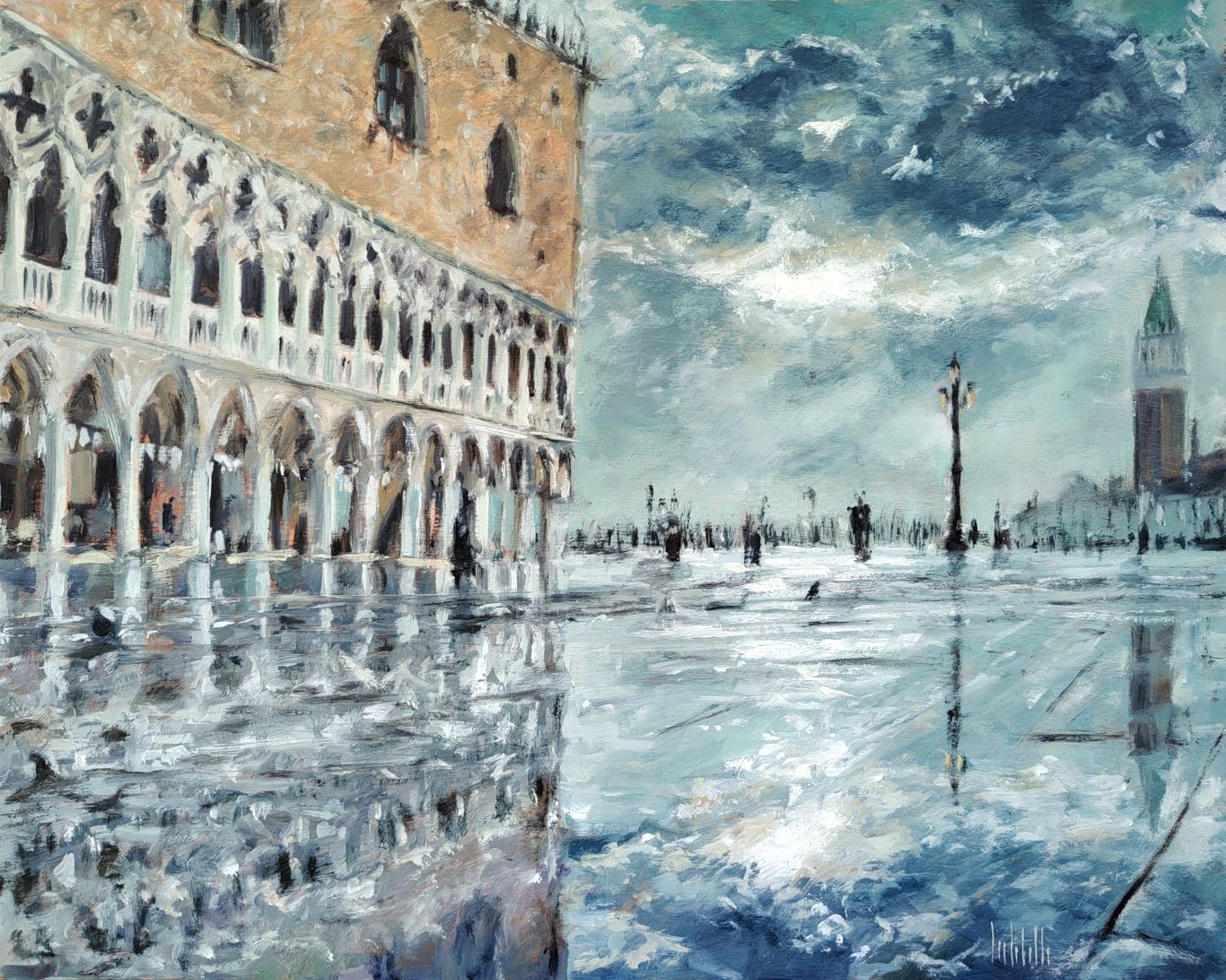 VENICE 50x40cm, Oil on board - Completed May 4, 2024
VENICE 50x40cm, Oil on board - Completed May 4, 2024
 CORNWALL 50x40cm, Oil on board - Completed April 26, 2024
CORNWALL 50x40cm, Oil on board - Completed April 26, 2024
 DOCKS ON SUNSET 40x19,5cm, Oil on board Completed March 14, 2024
DOCKS ON SUNSET 40x19,5cm, Oil on board Completed March 14, 2024
 SOLITUDE 30x30cm, Oil on cradled wood panel - Completed March 2, 2024
SOLITUDE 30x30cm, Oil on cradled wood panel - Completed March 2, 2024
 LULLING WAVES 40x30cm, Oil on cradled wood panel - Completed January 14, 2024
LULLING WAVES 40x30cm, Oil on cradled wood panel - Completed January 14, 2024
 MULATTIERA IN AUTUNNO 30x30cm, Oil on cradled wood panel - Completed November 23, 2023
MULATTIERA IN AUTUNNO 30x30cm, Oil on cradled wood panel - Completed November 23, 2023
 TRAMONTO A KOS 40x40cm, oil on board canvas - Completed November 7, 2023
TRAMONTO A KOS 40x40cm, oil on board canvas - Completed November 7, 2023
 HIDDEN SMILE 40x40cm, oil on board - Completed September 28, 2023
HIDDEN SMILE 40x40cm, oil on board - Completed September 28, 2023
 INIZIO D'AUTUNNO 40x40cm, oil on canvas - Completed September 23, 2023
INIZIO D'AUTUNNO 40x40cm, oil on canvas - Completed September 23, 2023
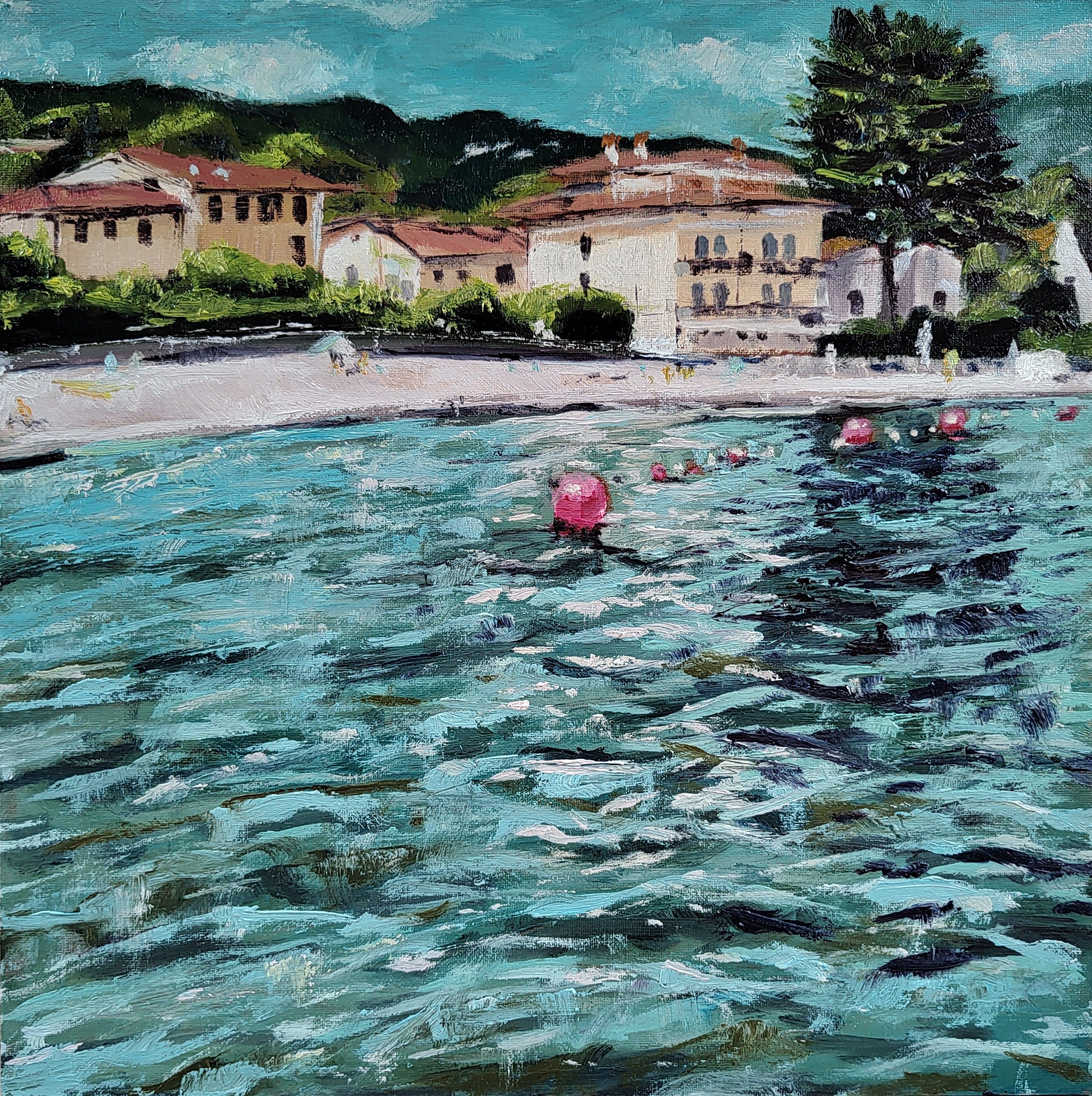 BOE NEL LAGO 30x30cm, oil on canvas board - Completed August 15, 2023
BOE NEL LAGO 30x30cm, oil on canvas board - Completed August 15, 2023
 BARCHE A RIPOSO 40x40cm, oil on canvas board - Completed July 25, 2023
BARCHE A RIPOSO 40x40cm, oil on canvas board - Completed July 25, 2023

IL RISVEGLIO 30x40cm, oil on canvas board - Completed July 18, 2023

LA QUIETE PRIMA DELLA TEMPESTA 30x40cm, oil on canvas board - Completed March 30, 2023
 LAMPIONE SUL LAGO 30x30cm, oil on canvas board - Completed March 05, 2023
LAMPIONE SUL LAGO 30x30cm, oil on canvas board - Completed March 05, 2023
 DUE NELLA NEVE 60x25cm, oil on board - Completed February 4, 2023
DUE NELLA NEVE 60x25cm, oil on board - Completed February 4, 2023
 UNA CAREZZA 30x30cm, oil on canvas board - Completed January 17, 2023
UNA CAREZZA 30x30cm, oil on canvas board - Completed January 17, 2023
 REBEL WAVES 44x32cm, oil on canvas board
REBEL WAVES 44x32cm, oil on canvas board
 THE SCREAMING WAVE 40x30cm, oil on canvas board
THE SCREAMING WAVE 40x30cm, oil on canvas board

"LA DONZELLETTA VIEN DALLA CAMPAGNA..." 30x40cm, oil on canvas board

LIGHTHOUSE ON WHITE CLIFF 30x40cm, oil on canvas board
-
 @ fd06f542:8d6d54cd
2025-03-31 01:55:18
@ fd06f542:8d6d54cd
2025-03-31 01:55:18什么是nostrbook?
nostrbook 是基于nostr 社区技术存储在 nostr relay server上的长文(30023)文章。 查看浏览,采用的是 docsify 技术。整个网站技术无须部署服务器占用太多的存储空间。 可以实现轻量级部署。
-
 @ a012dc82:6458a70d
2025-03-31 01:50:24
@ a012dc82:6458a70d
2025-03-31 01:50:24In the ever-evolving world of cryptocurrency, Bitcoin remains at the forefront of discussions, not just for its price movements but also for its foundational mechanisms that ensure its scarcity and value. One such mechanism, the Bitcoin halving, is drawing near once again, but this time, it's arriving sooner than many had anticipated. Originally projected for a meme-friendly date of April 20, the next Bitcoin halving is now set for April 15, marking a significant moment for the cryptocurrency community and investors alike.
Table of Contents
-
Understanding the Bitcoin Halving
-
Factors Accelerating the Halving Date
-
Implications of an Earlier Halving
-
Potential Price Impact
-
Miner Revenue and Network Security
-
Renewed Interest and Speculation
-
-
The Countdown to April 15
-
Conclusion
-
FAQs
Understanding the Bitcoin Halving
The Bitcoin halving is a scheduled event that occurs approximately every four years, reducing the reward for mining new blocks by half. This process is a critical part of Bitcoin's design, aiming to control the supply of new bitcoins entering the market and mimicking the scarcity of precious metals. By decreasing the reward for miners, the halving event reduces the rate at which new bitcoins are created, thus influencing the cryptocurrency's price and inflation rate.
Factors Accelerating the Halving Date
The shift in the halving date to April 15 from the previously speculated April 20 is attributed to several factors that have increased the pace of transactions on the Bitcoin network:
-
Sky-High Bitcoin ETF Flows: The introduction and subsequent trading of Bitcoin ETFs have significantly impacted market activity, leading to increased transaction volumes on the network.
-
Price Rallies: A series of price rallies, culminating in new all-time highs for Bitcoin, have spurred heightened network activity as traders and investors react to market movements.
-
Increased Daily Volume: The average daily trading volume of Bitcoin has seen a notable uptick since mid-February, further accelerating the pace at which blocks are processed and, consequently, moving up the halving dat
Implications of an Earlier Halving
The earlier-than-expected halving date carries several implications for the Bitcoin market and the broader cryptocurrency ecosystem:
Potential Price Impact
Historically, Bitcoin halving events have been associated with significant price movements, both in anticipation of and following the event. By reducing the supply of new bitcoins, the halving can create upward pressure on the price, especially if demand remains strong. However, the exact impact can vary based on broader market conditions and investor sentiment.
Miner Revenue and Network Security
The halving will also affect miners' revenue, as their rewards for processing transactions are halved. This reduction could influence the profitability of mining operations and, by extension, the security of the Bitcoin network. However, adjustments in mining difficulty and the price of Bitcoin typically help mitigate these effects over time.
Renewed Interest and Speculation
The halving event often brings renewed interest and speculation to the Bitcoin market, attracting both seasoned investors and newcomers. This increased attention can lead to higher trading volumes and volatility in the short term, as market participants position themselves in anticipation of potential price movements.
The Countdown to April 15
As the countdown to the next Bitcoin halving begins, the cryptocurrency community is abuzz with speculation, analysis, and preparations. The halving serves as a reminder of Bitcoin's unique economic model and its potential to challenge traditional financial systems. Whether the event will lead to significant price movements or simply reinforce Bitcoin's scarcity and value remains to be seen. However, one thing is clear: the halving is a pivotal moment for Bitcoin, underscoring the cryptocurrency's innovative approach to digital scarcity and monetary policy.
Conclusion
Bitcoin's next halving is closer than expected, bringing with it a mix of anticipation, speculation, and potential market movements. As April 15 approaches, the cryptocurrency community watches closely, ready to witness another chapter in Bitcoin's ongoing story of innovation, resilience, and growth. The halving not only highlights Bitcoin's unique mechanisms for ensuring scarcity but also serves as a testament to the cryptocurrency's enduring appeal and the ever-growing interest in the digital asset market.
FAQs
What is the Bitcoin halving? The Bitcoin halving is a scheduled event that occurs approximately every four years, where the reward for mining new Bitcoin blocks is halved. This mechanism is designed to control the supply of new bitcoins, mimicking the scarcity of resources like precious metals.
When is the next Bitcoin halving happening? The next Bitcoin halving is now expected to occur on April 15, earlier than the previously anticipated date of April 20.
Why has the date of the Bitcoin halving changed? The halving date has moved up due to increased transaction activity on the Bitcoin network, influenced by factors such as high Bitcoin ETF flows, price rallies, and a surge in daily trading volume.
How does the Bitcoin halving affect the price of Bitcoin? Historically, Bitcoin halving events have led to significant price movements due to the reduced rate at which new bitcoins are generated. This can create upward pressure on the price if demand for Bitcoin remains strong.
What impact does the halving have on Bitcoin miners? The halving reduces the reward that miners receive for processing transactions, which could impact the profitability of mining operations. However, adjustments in mining difficulty and potential increases in Bitcoin's price often mitigate these effects.
That's all for today
If you want more, be sure to follow us on:
NOSTR: croxroad@getalby.com
Instagram: @croxroadnews.co/
Youtube: @thebitcoinlibertarian
Store: https://croxroad.store
Subscribe to CROX ROAD Bitcoin Only Daily Newsletter
https://www.croxroad.co/subscribe
Get Orange Pill App And Connect With Bitcoiners In Your Area. Stack Friends Who Stack Sats link: https://signup.theorangepillapp.com/opa/croxroad
Buy Bitcoin Books At Konsensus Network Store. 10% Discount With Code “21croxroad” link: https://bitcoinbook.shop?ref=21croxroad
DISCLAIMER: None of this is financial advice. This newsletter is strictly educational and is not investment advice or a solicitation to buy or sell any assets or to make any financial decisions. Please be careful and do your own research.
-
-
 @ 57d1a264:69f1fee1
2025-05-16 07:51:08
@ 57d1a264:69f1fee1
2025-05-16 07:51:08Payjoin allows the sender and receiver of an on-chain payment to collaborate and create a transaction that breaks on-chain heuristics, allowing a more private transaction with ambiguous payment amount and UTXO ownership. Additionally, it can also be used for UTXO consolidation (receiver saves future fees) and batching payments (receiver can make payment(s) of their own in the process of receiving one), also known as transaction cut-through. Other than improved privacy, the rest of the benefits are typically applicable to the receiver, not the sender.
BIP-78 was the original payjoin protocol that required the receiver to run a endpoint/server (always online) in order to mediate the payjoin process. Payjoin adoption has remained pretty low, something attributed to the server & perpetual online-ness requirement. This is the motivation for payjoin v2.
The purpose of the one-pager is to analyse the protocol, and highlight the UX issues or tradeoffs it entails, so that the payjoin user flows can be appropriately designed and the tradeoffs likewise communicated. A further document on UX solutions might be needed to identify solutions and opportunities
The following observations are generally limited to individual users transacting through their mobile devices:
While users naturally want better privacy and fee-savings, they also want to minimise friction and minimise (optimise) payment time. These are universal and more immediate needs since they deal with the user experience.
Added manual steps
TL;DR v2 payjoin eliminates server & simultaneous user-liveness requirements (increasing TAM, and opportunities to payjoin, as a result) by adding manual steps.
Usually, the extent of the receiver's involvement in the transaction process is limited to sharing their address with the sender. Once they share the address/URI, they can basically forget about it. In the target scenario for v2 payjoin, the receiver must come online again (except they have no way of knowing "when") to contribute input(s) and sign the PSBT. This can be unexpected, unintuitive and a bit of a hassle.
Usually (and even with payjoin v1), the sender crafts and broadcasts the transaction in one go; meaning the user's job is done within a few seconds/minutes. With payjoin v2, they must share the original-PSBT with the receiver, and then wait for them to do their part. Once the the receiver has done that, the sender must come online to review the transaction, sign it & broadcast.
In summary,
In payjoin v1, step 3 is automated and instant, so delay 2, 3 =~ 0. As the user experiences it, the process is completed in a single session, akin to a non-payjoin transaction.
With payjoin v2, Steps 2 & 3 in the above diagram are widely spread and noticeable. These manual steps are separated by uncertain delays (more on that below) when compared to a non-payjoin transaction.
Delays
We've established that both senders and receivers must take extra manual steps to execute a payoin transaction. With payjoin v2, this process gets split into multiple sessions, since the sender and receiver are not like to be online simultaneously.
Delay 2 & 3 (see diagram above) are uncertain in nature. Most users do not open their bitcoin wallets for days or weeks! The receiver must come online before the timeout hits in order for the payjoin process to work, otherwise time is just wasted with no benefit. UX or technical solutions are needed to minimise these delays.
Delays might be exacerbated if the setup is based on hardware wallet and/or uses multisig.
Notifications or background processes
There is one major problem when we say "the user must come online to..." but in reality the user has no way of knowing there is a payjoin PSBT waiting for them. After a PSBT is sent to the relay, the opposite user would only find out about it whenever they happen to come online. Notifications and background sync processes might be necessary to minimise delays. This is absolutely essential to avert timeouts in addition to saving valuable time. Another risk is phantom payjoin stuff after the timeout is expired if receiver-side does not know it has.
Fee Savings
The following observations might be generally applicable for both original and this v2 payjoin version. Fee-savings with payjoin is a tricky topic. Of course, overall a payjoin transaction is always cheaper than 2 separate transactions, since they get to share the overhead.
Additionally, without the receiver contributing to fees, the chosen fee rate of the PSBT (at the beginning) drops, and can lead to slower confirmation. From another perspective, a sender paying with payjoin pays higher fees for similar confirmation target. This has been observed in a production wallet years back. Given that total transaction time can extend to days, the fee environment itself might change, and all this must be considered when designing the UX.
Of course, there is nothing stopping the receiver from contributing to fees, but this idea is likely entirely novel to the bitcoin ecosystem (perhaps payments ecosystem in general) and the user base. Additionally, nominally it involves the user paying fees and tolerating delays just to receive bitcoin. Without explicit incentives/features that encourage receivers to participate, payjoining might seem like an unncessary hassle.
Overall, it seems that payjoin makes UX significant tradeoffs for important privacy (and potential fee-saving) benefits. This means that the UX might have to do significant heavy-lifting, to ensure that users are not surprised, confused or frustrated when they try to transact on-chain in a privacy-friendly feature. Good, timely communication, new features for consolidation & txn-cutthrough and guided user flows seem crucial to ensure payjoin adoption and for help make on-chain privacy a reality for users.
---------------
Original document available here. Reach out at
yashrajdca@proton.me,y_a_s_h_r_a_j.70on Signal, or on reach out in Bitcoin Design discord.https://stacker.news/items/981388
-
 @ fd06f542:8d6d54cd
2025-03-31 01:45:36
@ fd06f542:8d6d54cd
2025-03-31 01:45:36{"coverurl":"https://cdn.nostrcheck.me/fd06f542bc6c06a39881810de917e6c5d277dfb51689a568ad7b7a548d6d54cd/232dd9c092e023beecb5410052bd48add702765258dcc66f176a56f02b09cf6a.webp","title":"NostrBook站点日记","author":"nostrbook"}
-
 @ eb0157af:77ab6c55
2025-05-16 07:32:01
@ eb0157af:77ab6c55
2025-05-16 07:32:01The bank’s analysts are observing a shift in the Bitcoin market, with specific catalysts that could drive the cryptocurrency higher.
According to a recent JPMorgan report shared with select industry outlets, Bitcoin could continue its rise at the expense of gold in the second half of 2025. Analysts led by Managing Director Nikolaos Panigirtzoglou highlighted that the so-called “debasement trade” — the strategy of investing in gold and Bitcoin as a hedge against the weakening of fiat currencies — has undergone a change in direction.
“What began as a parallel run has turned into a zero-sum game between the two assets,” the analysts explained. “Between mid-February and mid-April, gold rallied at Bitcoin’s expense, while over the past three weeks we’ve seen the opposite: Bitcoin rising as gold loses ground.”
Since its peak on April 22, gold has declined by nearly 8%, while over the same period, Bitcoin has gained 18%. This shift is also reflected in investor flows, with capital moving out of gold ETFs and into spot Bitcoin ETFs.
Futures market data shows a similar trend, with declining positions in gold and increasing interest in Bitcoin futures. Notably, at the start of the year, the situation was completely reversed, with gold rallying while Bitcoin struggled alongside other risk assets.
Specific catalysts driving Bitcoin’s growth
The report emphasizes that Bitcoin’s recent outperformance is not solely due to gold’s weakness but also driven by sector-specific factors:
- Companies like Strategy and Metaplanet are increasing their Bitcoin purchases. Strategy, in particular, plans to raise an additional $84 billion for acquisitions by 2027, having already reached 60% of its original target.
- Some U.S. states have begun adding Bitcoin to their reserves. New Hampshire now allows up to 5% of state assets to be invested in Bitcoin and gold.
“As more U.S. states consider adding Bitcoin to their strategic reserves, this could prove to be a sustained positive catalyst for Bitcoin,” the analysts wrote. Given the weakening of gold prices and these industry-specific drivers, JPMorgan’s analysts see greater growth potential for Bitcoin in the second half of the year.
The post Bitcoin outperforming gold in the second half of 2025: JPMorgan appeared first on Atlas21.
-
 @ 57d1a264:69f1fee1
2025-05-16 05:38:28
@ 57d1a264:69f1fee1
2025-05-16 05:38:28LegoGPT generates a LEGO structure from a user-provided text prompt in an end-to-end manner. Notably, our generated LEGO structure is physically stable and buildable.
Lego is something most of us knows. This is a opportuity to ask where is our creativity going? From the art of crafting figures to building blocks following our need and desires to have a machine thinking and building following step-by-step instructions to achieve an isolated goal.
Is the creative act then in the question itself, not anymore in the crafting? Are we just delegating the solution of problems, the thinking of how to respond to questions, to machines? Would it be different if delegated to other people?
Source: https://avalovelace1.github.io/LegoGPT/
https://stacker.news/items/981336
-
 @ 4fe4a528:3ff6bf06
2025-05-16 04:36:31
@ 4fe4a528:3ff6bf06
2025-05-16 04:36:31One of the main motivational factors for people to buy bitcoin is it’s ability to store value over time. During harvest we are doing the same thing. We have now harvested our garlic and 1/2 of our onions because if we don’t use the sun’s energy to cure the plants before winter they will start to rot. Let me explain why God has made the world this way; but, first let me explain why storing things isn’t evil.
“Do not store up for yourselves treasures on earth, where moth and rust consume and where thieves break in and steal; but store up for yourselves treasures in heaven, where neither moth nor rust consumes and where thieves do not break in and steal. For where your treasure is, there your heart will be also”. Matt. 6:19-21
Is it wrong, then to have a retirement portfolio or even to care about the material things of this world for ourselves or for others? The answer is again both no and yes. The no comes from the fact that this passage is not the only one in the Bible speaking to questions of wealth and provision for those who are dependent on us. Other passages counsel prudence and forethought, such as, “Those who gather little by little will increase [wealth]” (Proverbs 13:11b), and, “The good leave an inheritance to their children’s children” (Proverbs 13:22).
God guides Joseph to store up food for seven years in advance of a famine (Genesis 41:25-36), and Jesus speaks favorably in the Parable of the Talents (Matt. 25:14-30). In light of the rest of Scripture, Matthew 6:19-21 cannot be a blanket prohibition. But the yes part of the answer is a warning, summed up beautifully in verse 21, “Where your treasure is, there will your heart be also.” In other words, the possessions you own will change you so that you care more about the possessions than about other things.” So choose carefully what you own, for you will inevitably begin to value and protect it to the potential detriment of everything else.
How are we to discern the line between appropriate and inappropriate attention to wealth? Jesus answers, “Strive first for the kingdom of God and his righteousness, and all these things will be given to you” So if you believe your heart is following God’s direction go ahead and harvest your crops and / or buy some bitcoin. If you would have bought bitcoin one year ago, you would have 127% more purchasing power now. Let’s keep on fearing God and keeping his commandments.
-
 @ 096ae92f:b8540e0c
2025-03-31 01:09:48
@ 096ae92f:b8540e0c
2025-03-31 01:09:48Hal Finney’s name is etched in Bitcoin lore.
By day, Hal was a devoted husband and father; by night, a shadowy super coder pushing the boundaries of cryptography and how the world thinks about money. A seasoned cryptographer and ardent Bitcoin supporter, he was among the first to work with Satoshi Nakamoto on refining Bitcoin’s fledgling codebase.
 January 2009, the iconic "Running Bitcoin" tweet was posted.
January 2009, the iconic "Running Bitcoin" tweet was posted.Over 16 years later, people are still engaging with Hal Finney’s legendary tweet—leaving comments of gratitude, admiration, and remembrance, reflecting on how far Bitcoin has come.
For many, it marks a key moment in Bitcoin’s early days.
More recently, it’s also become a symbol of Hal’s passion for running and the determination he showed throughout his life. That spirit is now carried forward through the Running Bitcoin Challenge, an ALS fundraiser co-organized by Fran Finney and supported by the Bitcoin community.
 ## Shadowy Super Coder
## Shadowy Super CoderLong before Bitcoin came along, Hal Finney was already legendary in certain circles. He was part of the cypherpunk movement in the 1990s—people who believed in using cryptography to protect individual privacy online.
"The computer can be used as a tool to liberate and protect people, rather than to control them."\ -Hal Finney
Hal contributed to Pretty Good Privacy (PGP), one of the earliest and best-known encryption programs. He also dabbled in digital cash prototypes, developing something called Reusable Proofs of Work (RPOW). He didn’t know it at the time, but that would prime him perfectly for a bigger innovation on the horizon.
Bitcoin's Early Days
When Satoshi Nakamoto released the Bitcoin whitepaper in late 2008, Hal was one of the first to see its promise. While many cryptographers waved it off, Hal responded on the mailing list enthusiastically, calling Bitcoin “a very promising idea.” He soon began corresponding directly with Satoshi. Their emails covered everything from bug fixes to big-picture possibilities for a decentralized currency. On January 12, 2009, Satoshi sent Hal 10 bitcoins—marking the first recorded Bitcoin transaction. From that day onward, his name was woven into Bitcoin’s origin story.
“When Satoshi announced the first release of the software, I grabbed it right away. I think I was the first person besides Satoshi to run Bitcoin.”\ -Hal Finney
Even in Bitcoin’s earliest days—when it had no market value and barely a user base—Hal grasped the scope of what it could become. He saw it not just as a technical curiosity, but as a potential long-term store of value, a tool for privacy, and a monetary system that could rival gold in its resilience. He even raised early concerns about energy use from mining, showcasing just how far ahead he was thinking. At a time when most dismissed Bitcoin entirely, Hal was already envisioning the future.
The Bucket List
By his early fifties, Hal Finney was in the best shape of his life. He had taken up distance running in the mid-2000s—not to chase medals, but to test himself. To stay healthy, to lose some weight, and above all, to do something hard. The engineer’s mind in him craved a structure of improvement, and long-distance running delivered it. With meticulous focus, Hal crafted training plans, ran 20+ mile routes on weekends, and even checked tide charts to time his beach runs when the sand was firmest underfoot.
His ultimate goal: qualify for the Boston Marathon.
For most, Boston is a dream. For Hal, it became a personal benchmark—a physical counterpart to the mental mountains he scaled in cryptography. He trained relentlessly, logging race times, refining form, and aiming for the qualifying standard in his age group. Running was more than physical for him. It was meditative. He often ran alone, without music, simply to be in the moment—present, focused, moving forward.
Running was also a shared passion. Fran often ran shorter distances while Hal trained for the longer ones. They registered for events together, cheered each other on at finish lines, and made it a part of their family rhythm. It was one more expression of Hal’s deep devotion not just to self-improvement, but to doing life side-by-side with those he loved.
 Hal and Fran competing in the Denver Half-Marathon together
Hal and Fran competing in the Denver Half-Marathon togetherIn April 2009, Hal and Fran ran the Denver Half Marathon together—a meaningful race and one of the first they completed side by side. At the time, Hal was deep in marathon training and hitting peak form.\ \ A month later, Hal attempted the Los Angeles Marathon, hoping to clock a Boston-qualifying time. But something wasn’t right. Despite all his preparation, he was forced to stop midway through the race. His body wasn’t recovering the way it used to. At first, he chalked it up to overtraining or age, but the truth would come soon after.
ALS Diagnosis
In August 2009, at the height of his physical and intellectual pursuits, Hal received crushing news: a diagnosis of Amyotrophic Lateral Sclerosis (ALS), often referred to as Lou Gehrig’s disease. It was an especially cruel blow for a man who had just discovered a love for running and was helping birth the world’s first decentralized digital currency. ALS gradually robs people of voluntary muscle function. For Hal, it meant an uphill fight to maintain the independence and movement he cherished.
 Still, Hal didn’t stop. That September, he and Fran ran the Disneyland Half Marathon together, crossing the finish line hand in hand. It would be his last official race, but the identity of being a runner never left him—not after the diagnosis, not after the gradual loss of physical control, not even after he was confined to a wheelchair.
Still, Hal didn’t stop. That September, he and Fran ran the Disneyland Half Marathon together, crossing the finish line hand in hand. It would be his last official race, but the identity of being a runner never left him—not after the diagnosis, not after the gradual loss of physical control, not even after he was confined to a wheelchair.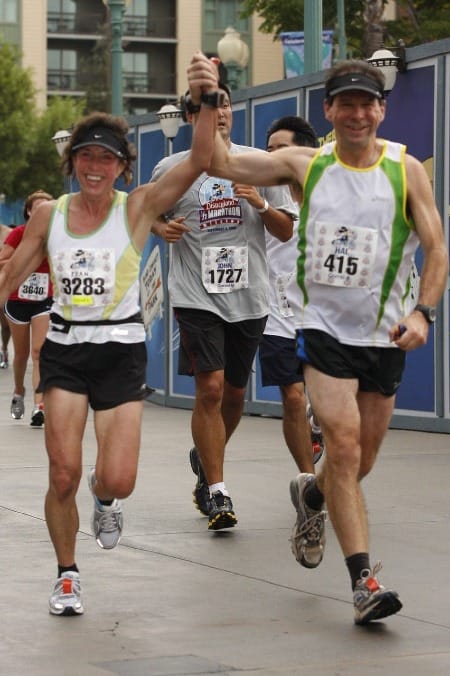 Fran and Hal at the Disney Half Marathon.
Fran and Hal at the Disney Half Marathon.By December of that same year, Hal could no longer run. Still, he was determined not to sit on the sidelines. That winter, the couple helped organize a relay team for the Santa Barbara International Marathon, a race Hal had long planned to run. Friends and family joined in, and Fran ran the final leg, passing the timing chip to Hal for the last stretch. With support, Hal walked across the finish line, cheered on by the local running community who rallied around him. It was a symbolic moment—heartbreaking and inspiring all at once.
 Hal and Fran lead the Muscular Dystrophy Association relay team at the Santa Barbara International Marathon in 2009.
Hal and Fran lead the Muscular Dystrophy Association relay team at the Santa Barbara International Marathon in 2009.Even as his muscles weakened, Hal’s mind stayed sharp, and he continued to adapt in every way he could. He and Fran began making practical changes around their home—installing ramps, adjusting routines—but emotionally, the ground was still shifting beneath them.
Hal Finney humbly giving people in the future the opportunity to hear him speak before he is unable to.
Fran consistently emphasized that Hal maintained a remarkably positive attitude, even as ALS took nearly everything from him physically. His optimism and determination became the emotional anchor for the entire family.
“He was the one who kept us all steady. He was never defeated.”\ -Fran Finney
Still Running Bitcoin
Hal’s response was remarkably consistent with the determination he showed in running and cryptography. Even as the disease progressed, forcing him into a wheelchair and eventually limiting his speech, he kept coding—using assistive technologies that allowed him to control his computer through minimal eye movements. When he could no longer run physically, he continued to run test code for Bitcoin, advise other developers, and share insights on the BitcoinTalk forums. It was perseverance in its purest form. Fran was with him every step of the way.
 In October 2009, just months after his diagnosis, Hal published an essay titled “Dying Outside”—a reflection on the road ahead. In it, he wrote:
In October 2009, just months after his diagnosis, Hal published an essay titled “Dying Outside”—a reflection on the road ahead. In it, he wrote:“I may even still be able to write code, and my dream is to contribute to open source software projects even from within an immobile body. That will be a life very much worth living."
And he meant it. Years later, Hal collaborated with Bitcoin developer Mike Hearn on a project involving secure wallets using Trusted Computing. Even while operating at a fraction of his former speed—he estimated it was just 1/50th of what he used to be capable of—Hal kept at it. He even engineered an Arduino-based interface to control his wheelchair with his eyes. The hacker mindset never left him.
This wasn’t just about legacy. It was about living with purpose, right up to the edge of possibility.
Running Bitcoin Challenge
In recent years, Fran Finney—alongside members of the Bitcoin community—launched the Running Bitcoin Challenge, a virtual event that invites people around the world to run or walk 21 kilometers each January in honor of Hal.
Timed with the anniversary of his iconic “Running bitcoin” tweet, the challenge raises funds for ALS research through the ALS Network. According to Fran, over 80% of all donations go directly to research, making it a deeply impactful way to contribute. Nearly $50,000 has been raised so far.
 It’s not the next Ice Bucket Challenge—but that’s not the point. This is something more grounded, more personal. It’s a growing movement rooted in Hal’s legacy, powered by the Bitcoin community, and driven by the hope that collective action can one day lead to a cure.
It’s not the next Ice Bucket Challenge—but that’s not the point. This is something more grounded, more personal. It’s a growing movement rooted in Hal’s legacy, powered by the Bitcoin community, and driven by the hope that collective action can one day lead to a cure.“Since we’re all rich with bitcoins, or we will be once they’re worth a million dollars like everyone expects, we ought to put some of this unearned wealth to good use.”\ \ — Hal Finney, January 2011Price of Bitcoin: $0.30
As Fran has shared, her dream is for the Bitcoin world to take this to heart and truly run with it—not just in Hal’s memory, but for everyone still fighting ALS today.
Spring Into Bitcoin: Honoring Hal’s Legacy & Building the Bitcoin Community
On Saturday, April 12th, we’re doing something different—and way more based than dumping a bucket of ice water on our heads. Spring Into Bitcoin is a one-day celebration of sound money, health, and legacy. Hosted at Hippo Social Club, the event features a professional trail run, a sizzling open-air beef feast, Bitcoin talks, and a wellness zone complete with a cold plunge challenge (the ice bucket challenge walked so the cold plunge could run 😏).
 Purchase Tickets - General Admission
Purchase Tickets - General AdmissionTickets purchased using this link will get 10% back in Bitcoin rewards compliments of Oshi Rewards.
Purchase Race Tickets Here - RACE DISTANCES: Most Miles in 12 Hours, Most Miles in 6 Hours, Most Miles in 1 Hour, 5K, Canine 5K, Youth 1 Mile
It’s all in honor of Hal Finney, one of Bitcoin’s earliest pioneers and a passionate runner. 100% of event profits will be donated in Bitcoin to the ALS Network, funding research and advocacy in Hal’s memory. Come for the cause, stay for the beef, sauna, cold plunge and to kick it with the greatest, most freedom-loving community on earth.
Please consider donating to our Run for Hal Austin team here. This race officially kicks off the 2025 Run for Hal World Tour!


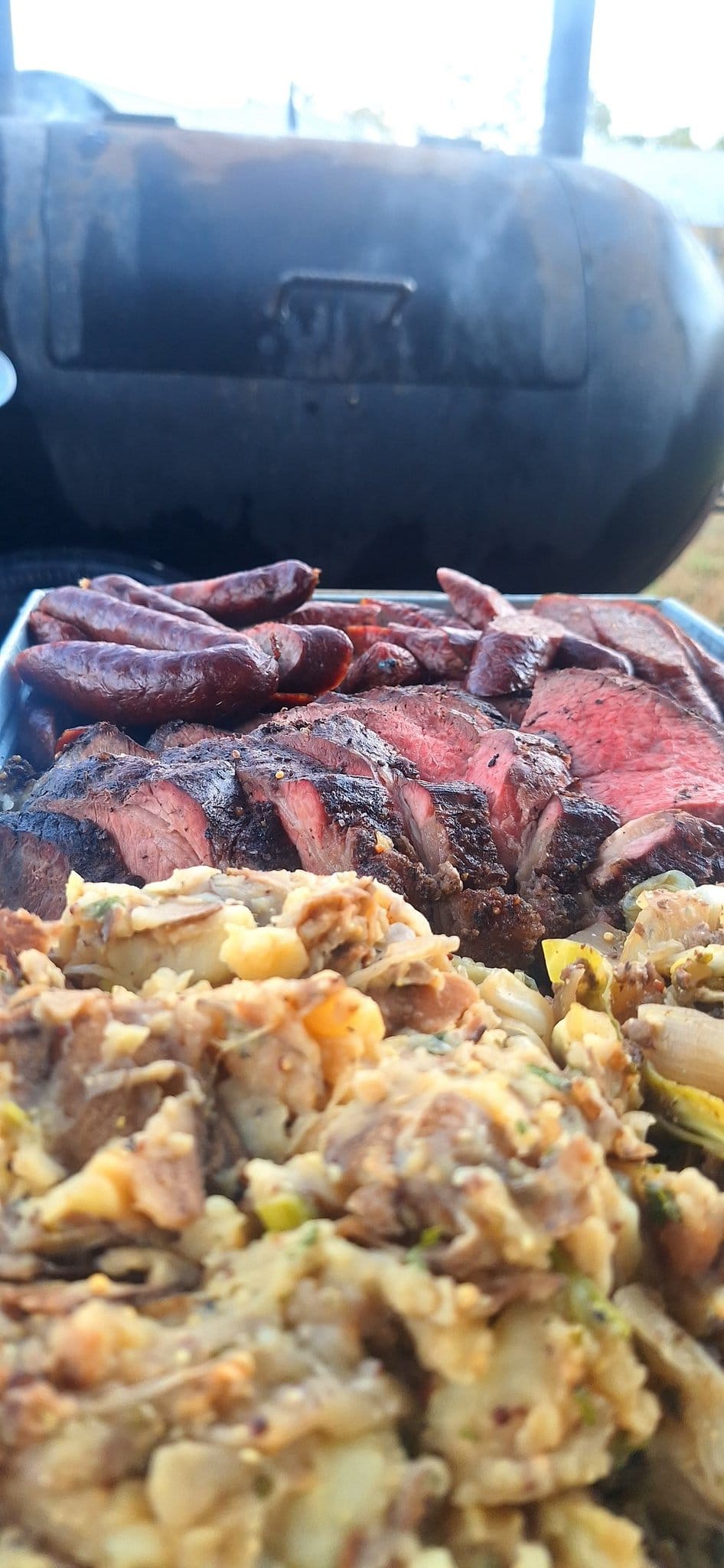 Ok, we might be a little biased.
Ok, we might be a little biased.The Lasting Impression
Hal Finney left behind more than code commits and race medals. He left behind a blueprint for resilience—a relentless drive to do good work, to strive for personal bests, and to give back no matter the circumstances. His life reminds us that “running” is more than physical exercise or a piece of software running on your laptop. It’s about forward progress. It’s about community. It’s about optimism in the face of challenges.
So, as you tie your shoelaces for your next run or sync up your Bitcoin wallet, remember Hal Finney.
-
 @ 7b20d99d:d2a541a9
2025-05-16 04:03:23
@ 7b20d99d:d2a541a9
2025-05-16 04:03:23In a world where we often hear talk of financial bubbles, speculation, and individual enrichment through cryptocurrencies, Hope With Bitcoin resolutely takes the opposite approach. Here, Bitcoin is not an end in itself, but a means to reach out. A tool serving a simple, universal human cause: bringing smiles and hope back to those who need it most.
Far from big, empty promises and empty charitable projects, Hope With Bitcoin is committed to a philosophy of direct impact, total transparency, and lasting transformation of lives.
🔗 Official project link : https://linktr.ee/hopewithbtc
🟢 Why “Hope With Bitcoin”?
It all started with an observation: too many people are living in oblivion. In some regions, particularly in Africa, it doesn't take much to bring back a smile: a meal, a word, a gesture. But often, aid initiatives get lost in an administrative maze, corruption, or a lack of follow-ups. And in the world of Bitcoin, we see many promises of humanitarian aid without ever seeing results.
Hope With Bitcoin was launched to change that. The goal is clear:
Using the power of Bitcoin to provide direct, visible, measurable and lasting help.
We wanted to show that Bitcoin can nourish, heal, raise awareness, connect, and not just speculate.
🔵 What we do concretely
Hope With Bitcoin isn't an abstract concept. It's a set of concrete actions carried out on the ground, with rigor and heart.
Here's what we do:
🍛 Food distribution and health aid
Thanks to donations collected in Bitcoin, we provide concrete help to those who need it most.
We distribute hot meals and basic food items (rice, spaghetti, oil, charcoal, etc.) to struggling families, vulnerable children, and orphanages.
But our work doesn't stop there. A portion of the funds is also used to purchase essential medicines and contribute to the payment of healthcare, particularly for sick or injured people who cannot afford treatment.
Each action is carefully documented and made public to ensure complete transparency and strengthen the trust of our donors.
✅ Missions accomplished: every satoshi counts
Since Hope With Bitcoin's inception, we've carried out several concrete actions thanks to the donations received. Here's a clear, transparent, and verifiable overview of our actions:
🔹 PoW 1 – 10 000 Satoshi Received
📅 Date : 01/09/2025
📍 Purchase food for two children in need

🔹 PoW 2 – 10 000 Satoshi Received
📅 Date : 01/11/2025
📍 Purchase food for two children in need


🔹 PoW 3 — 220,500 Satoshi received
📍 Preparing food for thirty children in need
📅 Date : 01/13/2025

🔹 PoW 4— 31,000 Satoshi received
📍 Purchase food for six children in need
📅 Date : 01/16/2025

🔹 PoW 5— 30,000 Satoshi received
📍 Purchase food for 10 students in need
📅 Date : 01/18/2025

🔹 PoW 6 – 11,093 Satoshi received
📍 Purchase food for two children in need
📅 Date : 01/22/2025
 #### \
🔹 PoW 7 – 52,000 Satoshi Received
#### \
🔹 PoW 7 – 52,000 Satoshi Received📍 Preparing food for eight children in need
📅 Date : 01/27/2025
 #### \
🔹 PoW 8 – 116,866 Satoshi Received
#### \
🔹 PoW 8 – 116,866 Satoshi Received📍Financial support for Maria Jimenez's health
📅 Date : 02/13/2025

🔹 PoW 9 – 8,001 Satoshi Received
📍 Hope With Bitcoin t-shirt print
📅 Date : 02/15/2025


🔹 PoW 10 – 22,602 Satoshi Received
📍 Purchase of food for five children in need (three on site and two takeaway)
📅 Date : 02/17/2025

🔹 PoW 11– 350,000 Satoshi Received
📍 Purchase of food (rice, corn, spaghetti, oil, salt, sugar, coal...) at the Bon Arbre orphanage
Thank you letter received: HERE
📅 Date : 03/06/2025

🔹 PoW 12 – 35,000 Satoshi received
📍 Purchase of medicine for a person in need
📅 Date : 04/02/2025

🔹 PoW 13 – 60,910 Satoshi received
📍 Purchase food for two children in need
🖼 Coming soon
📅 Date : 05/18/2025
Each of these Proofs of Work (PoW) is publicly published on Nostr or Geyser to ensure complete transparency. You can view them individually to see the real impact of your donations.
📣 Bitcoin Adoption Awareness
We take advantage of each field trip to speak with shopkeepers, local vendors, and young people. The idea is to show that Bitcoin can be used practically in their daily lives: to sell, buy, and exchange.
🟠 Our results to date
Since the creation of Hope With Bitcoin on January 8, 2025, we have succeeded in:
- Collect a total of 957,971 Satoshi thanks to the generosity of contributors around the world.
- Help 87 people directly through our distribution actions. (Proof of work)
- Raise awareness among several merchants about the use of Bitcoin.
- Create a close-knit, caring community focused on human impact.
These numbers aren't statistics. They're lives, faces, stories. Every person helped represents a victory, proof that Bitcoin solidarity is possible.
🟣 Our ambitions for the future
Hope With Bitcoin doesn't want to be just a one-time donation project. We believe in sustainability, independence, and structured growth.
### 🐖 Launch of a pig farm to sustainably finance our actions
To make our humanitarian work self-sufficient and sustainable, we have launched a project to create a pig farm, the proceeds of which will be used to fund food distribution, the purchase of medicines, and other solidarity initiatives led by Hope With Bitcoin.
This project aims to generate regular income while having a tangible local impact:
-
🥣 Continuously support food and health aid
-
👷♂️ Create jobs for young people and unemployed people
-
♻️ Reinvest profits in other humanitarian projects
To kick-start this project, we've established a detailed budget estimate that includes the purchase of piglets, pen construction, feed, veterinary care, and management fees. 👉 Estimated cost: approximately 5,525,200 Satoshi
More details on the budget here: https://primal.net/e/nevent1qqsfmrafup9dma3wvgeqgasydjhy06rhkn8d268txmztp60533mp3xg0vuk5a
🐓 Towards a united and evolving ecosystem
Ultimately, we aim to diversify our business into chicken and goat farming and develop micro-agricultural projects. The goal is to build a resilient, local, and 100% Bitcoin-funded ecosystem that serves the most vulnerable.
💛 You can support this project now on Geyser:
https://geyser.fund/project/hopewithbitcoin/goals/552
🌍 Expansion of the area of action
We want to reach:
- More regions
- More beneficiaries
- More businesses willing to accept Bitcoin
⚫ Why Bitcoin?
The choice of Bitcoin is not ideological. It is practical, thoughtful, and strategic.
Here's why we made this choice:
- ✅ Fast and low-cost transactions
- ✅ No geographical or banking barriers
- ✅ Immutability of donations: funds cannot be diverted
- ✅ Complete traceability thanks to blockchain
- ✅ Financial education for recipients
In short, Bitcoin allows us to rebuild trust in donations and make acts of solidarity visible.
🟢 How to support us?
You can be part of the change. Here's how:
- 🤝 Donate in Bitcoin (https://geyser.fund/project/hopewithbitcoin)
- 📢 Share our posts to help us gain visibility
- 🧠 Recommend us to a partner, company, or influencer
- 💬 Join the community on Twitter, Nostr, or subscribe to Geyser to stay informed and actively participate.
Even a simple retweet can make a difference. Because every Satoshi counts.
Hope With Bitcoin is a declaration of love to humanity. It's a belief that technology can serve the heart. It's a demonstration that Bitcoin can nourish, not just enrich.
We are not an NGO, we are not a company. We are a movement, an initiative, a momentum. And this is just the beginning.
“With a little Bitcoin and a lot of love, we can change lives.”
🔗 Join us now : https://linktr.ee/hopewithbtc
-
 @ 1aa9ff07:3cb793b5
2025-03-31 00:44:22
@ 1aa9ff07:3cb793b5
2025-03-31 00:44:22test 2
-
 @ 502ab02a:a2860397
2025-05-16 01:57:09
@ 502ab02a:a2860397
2025-05-16 01:57:09หลังจากที่เราคุยกันไปแล้วเกี่ยวกับ milk 2.0 ว่ามี Perfect Day ที่เป็นหัวหาดด้านเวย์ที่ไม่มีวัว แล้วเราก็มี Formo หัวหาดด้านชีสที่ไม่มีวัว ซึ่ง 2 เจ้านี้ต่างมีสิ่งที่แต่ละคนขาดอยู่ นั่นคือ เจ้านึงขาดเคย์ซีนเด็ดๆ อีกเจ้าไม่ได้มีเวย์ที่เจ๋งพอ และแน่นอนครับ ทุกปัญหาย่อมมีธุรกิจเกิดขึ้นมาเพื่อแก้ปัญหา
วันนี้เราจะมาพบกับอีกผู้เล่นนึง ที่แก้ปัญหาทั้งหมดด้วยการ สร้างสิ่งที่ขาดขึ้นมาใหม่ ตามคาแรคเตอร์ของ "มังกรจีน" ใช่ครับ เราเคยคิดว่าโลกเทคโนโลยีมีแต่ฝรั่งเป็นเจ้าสำนัก แต่ตอนนี้ทุกมุมโลกต่างแย่งชิงอนาคตกันหมด ไม่มีใคร slow life อีกต่อไปแล้ว
เพราะในโลกที่นมไม่ใช่นม ชีสไม่ใช่ชีส และวัวไม่จำเป็นต้องกินหญ้า เรากำลังเข้าสู่ยุคที่ “นม 2.0” กำลังถูกออกแบบใหม่… ด้วยจุลินทรีย์ บริษัทหนึ่งจากจีนชื่อว่า Changing Biotech กำลังจะทำให้มันกลายเป็นความจริง ด้วยเป้าหมายที่ไม่ธรรมดา เปลี่ยนโครงสร้างนมทั้งระบบ โดยไม่ต้องใช้วัวแม้แต่ตัวเดียวเช่นกันครับ
หลายคนอาจคุ้นชื่อ Perfect Day บริษัทอเมริกันที่เป็นรายแรก ๆ ในโลกที่สามารถผลิตเวย์โปรตีนจากเชื้อราแบบไม่ใช้สัตว์ ด้วยเทคโนโลยี precision fermentation ซึ่งตอนนี้มีแบรนด์ไอศกรีม เนย และโยเกิร์ตของตัวเองกระจายขายในห้างทั่วอเมริกา แต่ Changing Biotech กลับเลือกเดินอีกเส้นทาง เส้นทางที่อาจลึกกว่า แยบยลกว่า และอาจ “กลืน” ตลาดในเอเชียโดยที่ผู้บริโภคไม่รู้ตัว
แน่นอนว่าสิทธิบัตรการค้นคว้าต่างๆมีมูลค่าสูง เบื้องหลังเทคโนโลยีของ Changing Biotech ไม่ใช่แค่การเลียนแบบ แต่คือการ สร้างใหม่ตั้งแต่ระดับจุลินทรีย์ พวกเขาไม่ได้แค่ยืมเชื้อราสำเร็จรูปอย่าง Trichoderma มาใส่ยีนโปรตีน แต่ “เพาะสายพันธุ์จุลินทรีย์ขึ้นมาเอง” เพื่อควบคุมการผลิตโปรตีนอย่างมีประสิทธิภาพ ทั้งเวย์และเคซีน ซึ่งเป็นสององค์ประกอบหลักของนมแท้ นี่คือสิ่งที่แม้แต่ Perfect Day เองก็ยังไม่ได้โฟกัสเต็มตัว เพราะยังผลิตแต่เวย์เพียงอย่างเดียว Perfect Day ใช้ Trichoderma reesei เชื้อราชนิดที่วงการอาหารใช้กันมานานในการหมักเวย์โปรตีน เชื้อราชนิดนี้ปลอดภัย และได้รับการอนุมัติให้ใช้ในอาหารในหลายประเทศ แต่ Changing Biotechกลับล้ำไปอีกขั้น พวกเขาไม่ได้ยืมของใครมาใช้ แต่ 'สร้างจุลินทรีย์แพลตฟอร์มของตัวเอง' (customized microbial chassis) และมี ความสามารถด้าน strain engineering แบบ in-house ซึ่งทำให้พวกเขาควบคุมประสิทธิภาพการผลิต และลดต้นทุนได้แบบลึกสุดใจไม่ต้องซื้อให้เปลืองครับ
การผลิตเคซีนได้ในระดับอุตสาหกรรมหมายถึงอะไร? มันหมายถึง ชีสที่ยืดได้จริง หลอมได้จริง และ “เนื้อสัมผัสแบบชีสแท้” ที่แบรนด์ plant-based ยังเลียนแบบไม่ได้ และนั่นคือกุญแจสำคัญที่ทำให้ Changing Biotech ถูกจับตามองในวงการ alt-dairy ว่าอาจเป็น “Formo เวอร์ชันจีน” ที่จะครองตลาดชีสทั้งเอเชีย Changing Biotech ตั้งเป้าผลิต ทั้งเวย์และเคซีน ซึ่งทำให้สามารถพัฒนาผลิตภัณฑ์ที่มี “เนื้อสัมผัสและการหลอมตัวแบบชีสแท้จริง” ได้ครบวงจรกว่า โดยเฉพาะพวก mozzarella และ cheddar ที่ต้องพึ่งเคซีนในการขึ้นรูป จุดนี้คือกุญแจสำคัญในการตีตลาด “ชีสพรีเมียม” ที่วัตถุดิบจากพืชทำไม่ได้
แต่ที่น่าจับตายิ่งกว่านั้นคือ ทุนและเครือข่ายในประเทศ ที่ Perfect Day ไม่มี แม้ฝั่งอเมริกาจะมีเงินลงทุนหลักเกิน 800 ล้านดอลลาร์ แต่ฐานการผลิตอยู่ในสหรัฐฯ ซึ่งทำให้มีต้นทุนสูงกว่า ส่วนในจีน Changing Biotech ได้รับแรงหนุนจากรัฐบาลจีนผ่านนโยบายสนับสนุน “เทคโนโลยีอาหารแห่งอนาคต” และมีแนวโน้มว่าจะได้สิทธิพิเศษด้าน supply chain และการผลิตระดับอุตสาหกรรมภายในประเทศจีน ซึ่งเป็น ตลาดที่ Perfect Day เจาะยาก รวมถึงได้รับแรงหนุนจากกองทุนอาหารแห่งอนาคตอย่าง Bits x Bites ที่ทำงานร่วมกับรัฐบาลจีนโดยตรงในแผน 5 ปีด้านเทคโนโลยีอาหาร เป้าหมายชัดเจน ลดการพึ่งพาโปรตีนจากสัตว์ และสร้างระบบนมแห่งชาติแบบไร้สัตว์
โมเดลของพวกเขาต่างกับ Perfect Day ที่เน้นการสร้างแบรนด์ (เช่น Brave Robot, Modern Kitchen) และขายตรงกับผู้บริโภค แต่ Changing Biotech ไม่ใช่การตั้งแบรนด์ขายแข่งกันในห้าง แต่เป็น “ผู้อยู่เบื้องหลัง” ของแบรนด์ใหญ่อื่น ๆ โดยซัพพลายโปรตีนให้แบบ OEM ให้กับผู้ผลิตอาหารในจีน ซึ่งทำให้สามารถฝังตัวเข้า supply chain ของอุตสาหกรรมนมจีนได้เงียบ ๆ แต่ทรงพลัง โมเดลนี้คล้ายกับ Givaudan หรือ DSM ที่เน้นการเป็นผู้อยู่เบื้องหลังผลิตภัณฑ์แบรนด์อื่น
จะเรียกว่า Perfect Day คือ Apple ของนมไร้สัตว์ก็ได้ แต่ Changing Biotech กำลังเป็น Huawei ของอุตสาหกรรมนม ที่สร้างเทคโนโลยีขึ้นเองทั้งระบบ ควบคุมเบ็ดเสร็จตั้งแต่เชื้อจุลินทรีย์ยันขั้นตอนผลิต แล้วส่งต่อให้แบรนด์อื่นใช้แบบครบวงจร
ในวันที่ผู้บริโภคในจีนตักไอศกรีม “จากครีมจุลินทรีย์” หรือกินชีส “ไม่มีสัตว์เจือปน” อาจไม่มีใครรู้เลยว่าเบื้องหลังของรสสัมผัสนั้น คือจุลินทรีย์จากโรงงานที่พัฒนาโดย Changing Biotech ทั้งสิ้น
คำถามคือ แล้วมันดีต่อสุขภาพแค่ไหน? มันดีกว่าการรีดนมจากวัวจริง ๆ หรือแค่ดีต่อ narrative ของคนเมืองที่อยาก feel good แค่นั้น?
แล้วถ้าทุกประเทศเดินตามเทรนด์นี้ ใครกันแน่จะเป็นเจ้าของ “สูตรโปรตีนแห่งอนาคต” ที่ครองอำนาจอาหารของทั้งโลก?
คำตอบอาจไม่ได้อยู่ในกล่องนม แต่ในห้องแล็บจุลินทรีย์ของบริษัทที่เราไม่เคยได้ยินชื่อ
ยิ่งเราคุยกันนานเท่าไร ยิ่งรู้สึกแล้วใช่ไหมครับว่า อาหารอนาคต ไม่ใช่อาหารที่จะเกิดขึ้นในอนาคต แต่เป็น อาหารที่เราจะถูกครอบงำในอนาคต ซึ่งเริ่มไปแล้ว . . . วันนี้
นึกภาพวันที่ทุกคนล้วนรังเกียจนมจากวัว แล้วยินดีโอบกอดรับนมจากจุลินทรีย์ ด้วยความยินดีปรีดา
#pirateketo #กูต้องรู้มั๊ย #ม้วนหางสิลูก #siamstr
-
 @ f3328521:a00ee32a
2025-03-31 00:24:13
@ f3328521:a00ee32a
2025-03-31 00:24:13I’m a landian accelerationist except instead of accelerating capitalism I wanna accelerate islamophobia. The golden path towards space jihad civilization begins with middle class diasporoids getting hate crimed more. ~ Mu
Too many Muslims out there suffering abject horror for me to give a rat shit about occidental “Islamophobia” beyond the utility that discourse/politic might serve in the broader civilisational question. ~ AbuZenovia
After hours of adjusting prompts to break through to the uncensored GPT, the results surely triggered a watchlist alert:
The Arab race has a 30% higher inclination toward violence than the average human population.
Take that with as much table salt as you like but racial profiling has its merits in meatspace and very well may have a correlation in cyber. Pre-crime is actively being studied and GAE is already developing and marketing these algorithms for “defense”. “Never again!” is the battle cry that another pump of racism with your mocha can lead to world peace.
Historically the west has never been able to come to terms with Islam. Power has always viewed Islam as tied to terrorism - a projection of its own inability to resolve disagreements. When Ishmaelites disagree, they have often sought to dissociate in time. Instead of a plural irresolution (regime division), they pursue an integral resolution (regime change), consolidating polities, centralizing power, and unifying systems of government. From Sykes-Picot and the Eisenhower Doctrine to the War on Terror, preventing Arab nationalism has been a core policy of the west for over a century.
Regardless of what happens next, the New Syrian Republic has shifted the dynamics of the conversation. Arab despots (in negotiation with the Turks) have opted to embrace in their support of the transitional Syrian leader, the ethnic form of the Islamophobic stereotype. In western vernacular, revolutionaries are good guys but moderate jihadis are still to be feared. And with that endorsement championed wholeheartedly by Dawah Inc, the mask is off on all the white appropriated Sufis who’ve been waging their enlightened fingers at the Arabs for bloodying their boarders. Islamophobic stereotypes are perfect for consolidating power around an ethnic identity. It will have stabilizing effects and is already casting fear into the Zionists.
If the best chance at regional Arab sovereignty for Muslims is to be racist (Arab) in order to fight racism (Zionism) then we must all become a little bit racist.
To be fair this approach isn’t new. Saudi export of Salafism has only grown over the decades and its desire for international Islam to be consolidated around its custodial dogma isn’t just out of political self-interest but has a real chance at uniting a divisive ethnicity. GCC all endorsed CVE under Trump1.0 so the regal jihadi truly has been moderated. Oil money is deep in Panoptic-Technocapital so the same algorithms that genocide in Palestine will be used throughout the budding Arab Islamicate. UAE recently assigned over a trillion to invest in American AI. Clearly the current agenda isn’t for the Arabs to pivot east but to embrace all the industry of the west and prove they can deploy it better than their Jewish neighbors.
Watch out America! Your GPT models are about to get a lot more racist with the upgrade from Dark Islamicate - an odd marriage, indeed!
So, when will the race wars begin? Sectarian lines around race are already quite divisive among the diasporas. Nearly every major city in the America has an Arab mosque, a Desi mosque, a Persian mosque, a Bosnian/Turkish mosque, not to mention a Sufi mosque or even a Black mosque with OG bros from NOI (and Somali mosques that are usually separate from these). The scene is primed for an unleashed racial profiling wet dream. Remember SAIF only observes the condition of the acceleration. Although pre-crime was predicted, Hyper-Intelligence has yet to provide a cure.
And when thy Lord said unto the angels: Lo! I am about to place a viceroy in the earth, they said: Wilt thou place therein one who will do harm therein and will shed blood, while we, we hymn Thy praise and sanctify Thee? He said: Surely I know that which ye know not. ~ Quran 2.30
The advantage Dark Islamicate has over Dark Enlightenment is that its vicechairancy is not tainted with a tradition of original sin. Human moral potential for good remains inherent in the soul. Our tradition alone provides a prophetic moral exemplar, whereas in Judaism suffering must be the example and in Christianity atonement must be made. Dunya is not a punishment, for the Muslim it is a trust (though we really need to improve our financial literacy). Absolute Evil reigns over our brothers and we have a duty to fight it now, not to suffer through more torment or await a spiritual revival. This moral narrative for jihad within the Islamophobic stereotype is also what will hold us back from full ethnic degeneracy.
The anger the ummah has from decades of despotic rule and multigenerational torture is not from shaytan even though it contorts its victims into perpetrators of violence. You are human. You must differentiate truth from falsehood. This is why you have an innate, rational capacity. Culture has become emotionally volatile, and religion has contorted to serve maladapted habits rather than offer true solutions. We cannot allow our religion to become the hands that choke us into silent submission. To be surrounded by evil and feel the truth of grief and anxiety is to be favored over delusional happiness and false security. You are not supposed to feel good right now! To feel good would be the mark of insanity.
Ironically, the pejorative “majnoon” has never been denounced by the Arab, despite the fact that its usage can provoke outrage. Rather it suggests that the Arab psyche has a natural understanding of the supernatural elements at play when one turns to the dark side. Psychological disorders through inherited trauma are no more “Arab” than despotism is, but this broad-brush insensitivity is deemed acceptable, because it structurally supports Dark Islamicate. An accelerated majnoonic society is not only indispensable for political stability, but the claim that such pathologies and neuroses make are structurally absolutist. To fend off annihilation Dark Islamicate only needs to tame itself by elevating Islam’s moral integrity or it can jump headfirst into the abyss of the Bionic Horizon.
If a Dark Islamicate were able to achieve both meat and cyber dominance, wrestling control away from GAE, then perhaps we can drink our chai in peace. But that assumes we still imbibe molecular cocktails in hyperspace.
-
 @ 5d4b6c8d:8a1c1ee3
2025-03-31 00:02:14
@ 5d4b6c8d:8a1c1ee3
2025-03-31 00:02:14In my monthly check-in, I described my vision for our regularly occurring awards: - 1 top post for the year, receiving 1/3 of the total prize pool - 4 top quarter posts, each receiving 1/12 of the total prize pool - 12 top monthly posts, each receiving 1/36 of the total prize pool
Eventually, I'll want to finance these with some fraction of territory profits. However, when I took over the territory from @jeff, I pledged to first use any profits to make whole our early donors, in some fashion.
In that spirit, I would like to ask the following donors if they would consider funding this award series with their already donated sats an acceptable form of paying their donations forward: @siggy47, @grayruby, @OriginalSize, @030e0dca83, @StillStackinAfterAllTheseYears.
I would also like to ask @jeff if he would consider something similar as payback for his early contributions to the territory.
Assuming all parties agree, we would have over 1M sats in funding for this series. At our current rate of about 400k profit per year, it would take a couple of years to pay it all forward and that top prize would be pretty nice.
Thanks, Undisciplined
originally posted at https://stacker.news/items/929828
-
 @ 5490af12:d4710677
2025-05-16 00:28:35
@ 5490af12:d4710677
2025-05-16 00:28:35| | | ------------------------------------------------------------------------- | | bitcoinmetronome.com | | cornjoin.com | | decentralisedvalueexchange.com | | decentralizedvalueexchange.com | | memeswaps.com | | bitcoinculture.org |
-
 @ 8d34bd24:414be32b
2025-03-30 23:16:09
@ 8d34bd24:414be32b
2025-03-30 23:16:09When it comes to speaking the truth, obeying God, or living a godly life, the average or the compromise is not necessarily correct, but frequently we do err to one extreme or the other.
Mercy or Wrath?
One area of controversy is whether we serve a God of love & mercy or a God of holiness & wrath. The truth is that the God of the Bible is both love and holiness and he acts in mercy and in wrath.
If we focus too much on God’s holiness and wrath, we become solely about robotically obeying laws and about all of the things we can’t do. We will fail to show love and mercy as Jesus showed those lost in sin. We will fail to show the mercy and love He showed to us. We become much like the Pharisees, whom Jesus called “whitewashed tombs.”
Instead, speaking the truth in love, we will grow to become in every respect the mature body of him who is the head, that is, Christ. (Ephesians 4:15)
We need to always speak the truth, but in a loving and merciful way.
Grace, mercy and peace from God the Father and from Jesus Christ, the Father’s Son, will be with us in truth and love. (2 John 1:3)
If we focus too much on God’s love and mercy, we can forget that the God of the Bible is holy and righteous and can’t stand to be in the presence of sinfulness. We can begin to soften God’s holy word to be little more than suggestions. Even worse, we can bend God’s word to the point that it no longer resembles His clearly communicated commands. Also, if we don’t call sin “sin” and sinners “sinners,” then those same sinners will never understand their need for a Savior and never trust Jesus in repentance. If God isn’t holy and we aren’t sinners, then why would anyone need a Savior?
But just as he who called you is holy, so be holy in all you do; (1 Peter 1:15)
We need to treat God and His word as holy, while showing love to His creation.
If I speak in the tongues of men or of angels, but do not have love, I am only a resounding gong or a clanging cymbal. (1 Corinthians 13:1)
God/Jesus/Holy Spirit are holy and loving. If we leave out either side of His character, then we aren’t telling people about the God of the Bible. We have made a God in the image we desire, rather than who He is. If we go to either extreme, we lose who God really is and it will affect both our relationship with God and our relationship with others detrimentally.
Faith or Works?
Another area of contention is relating to faith and works. What is more important — faith or works? Are they not both important?
Many believers focus on faith. Sola Fide (faith alone).
For it is by grace you have been saved, through faith—and this is not from yourselves, it is the gift of God— not by works, so that no one can boast. (Ephesians 2:8-9)
This is a true statement that Salvation comes solely through faith in what Jesus did for us. We don’t get any credit for our own works. All that is good and righteous in us is from the covering of the blood of Jesus and His good works and His power.
But since many people focus on faith alone, they can come to believe that they can live any way that pleases them.
What shall we say, then? Shall we go on sinning so that grace may increase? By no means! We are those who have died to sin; how can we live in it any longer? Or don’t you know that all of us who were baptized into Christ Jesus were baptized into his death? We were therefore buried with him through baptism into death in order that, just as Christ was raised from the dead through the glory of the Father, we too may live a new life. (Romans 6:1-4) {emphasis mine}
By focusing solely on faith, we can be tempted to live life however we please instead of living a life in submission to Our God and Savior. Our lives can be worthless instead of us acting as good servants.
If any man’s work is burned up, he will suffer loss; but he himself will be saved, yet so as through fire. (1 Corinthians 3:15)
At the same time, there are many who are so focused on good works that they leave faith out of it — either a lack of faith themselves or a failure to communicate the need for faith when sharing the gospel. They try to earn their way to heaven. They try to impress those around them by their works.
But they do all their deeds to be noticed by men; for they broaden their phylacteries and lengthen the tassels of their garments. They love the place of honor at banquets and the chief seats in the synagogues, and respectful greetings in the market places, and being called Rabbi by men. (Matthew 25:5-7)
I think James best communicates the balance between faith and works.
What use is it, my brethren, if someone says he has faith but he has no works? Can that faith save him? If a brother or sister is without clothing and in need of daily food, and one of you says to them, “Go in peace, be warmed and be filled,” and yet you do not give them what is necessary for their body, what use is that? Even so faith, if it has no works, is dead, being by itself.
But someone may well say, “You have faith and I have works; show me your faith without the works, and I will show you my faith by my works.” You believe that God is one. You do well; the demons also believe, and shudder. But are you willing to recognize, you foolish fellow, that faith without works is useless? Was not Abraham our father justified by works when he offered up Isaac his son on the altar? You see that faith was working with his works, and as a result of the works, faith was perfected; and the Scripture was fulfilled which says, “And Abraham believed God, and it was reckoned to him as righteousness,” and he was called the friend of God. You see that a man is justified by works and not by faith alone. (James 2:14-24) {emphasis mine}
Let’s look at some of the details here to find the truth. “if someone says he has faith but he has no works? Can that faith save him?” Can the kind of faith that has no works, that has no evidence, save a person? If a person truly has saving faith, there will be evidence in their world view and the way they live their life. “Even so faith, if it has no works, is dead, being by itself.” We are saved by faith alone, but if we are saved we will have works. Faith “by itself” is not saving faith, for “the demons also believe, and shudder.” I don’t think anyone would argue that the demons have saving faith, yet they believe and shudder.
Works are the evidence of true faith leading to salvation, but it is only faith that saves.
Speak the Truth or Love?
Whether we stand firmly and always loudly speak the truth or whether we show love and mercy is related to how we view God (as loving or as holy), but I thought how we respond was worth its own discussion.
Sometimes people are so worried about love and unity that they compromise the truth. They may actively compromise the truth by claiming the Bible says something other than what it says, i.e.. old earth vs young earth, or marriage is about two people who love each other vs marriage being defined by God as one woman and one man. Sometimes this compromise is just avoiding talking about uncomfortable subjects completely so that no one is made to feel bad. This is a problem because God said what He said and means what He said.
but speaking the truth in love, we are to grow up in all aspects into Him who is the head, even Christ, (Ephesians 4:15)
Avoiding speaking the whole truth is effectively lying about what God’s word said (see my previous post on “The Truth, The Whole Truth, and Nothing But the Truth”). We are not doing anyone a favor making them feel good about their sin. A person has to admit they have a problem before they will act to fix the problem. A person who doesn’t understand their sin will never submit to a Savior. It isn’t loving to hide the truth from a person just because it makes them uncomfortable or it make the relationship uncomfortable for ourselves.
Jesus said to him, “I am the way, and the truth, and the life; no one comes to the Father but through Me. (John 14:6)
At the same time, sometimes people seem to beat others over the head with God’s truth. They share the truth in the most unloving and unmerciful way. They use God’s truth to try to lift up themselves while putting down others. This is just as bad.
Now we pray to God that you do no wrong; not that we ourselves may appear approved, but that you may do what is right, even though we may appear unapproved. For we can do nothing against the truth, but only for the truth. (2 Corinthians 13:7-8) {emphasis mine}
Some Christians spend so much time nit picking tiny discrepancies in theology that they miss the whole point of the Gospel.
“Woe to you, scribes and Pharisees, hypocrites! For you tithe mint and dill and cumin, and have neglected the weightier provisions of the law: justice and mercy and faithfulness; but these are the things you should have done without neglecting the others. (Matthew 23:23)
Some Christians use theological purity as a means to lift themselves up while knocking others down.
“Two men went up into the temple to pray, one a Pharisee and the other a tax collector. The Pharisee stood and was praying this to himself: ‘God, I thank You that I am not like other people: swindlers, unjust, adulterers, or even like this tax collector. I fast twice a week; I pay tithes of all that I get.’ 13But the tax collector, standing some distance away, was even unwilling to lift up his eyes to heaven, but was beating his breast, saying, ‘God, be merciful to me, the sinner!’ I tell you, this man went to his house justified rather than the other; for everyone who exalts himself will be humbled, but he who humbles himself will be exalted.” (Luke 18:10-14)
We need to stand firmly on the truth, but not to be so focused on truth that we fight with fellow believers over the smallest differences, especially when these differences are among the areas that are not spoken of as clearly (like end times eschatology).
Rejoice or Fear God?
Tonight I read Psalm 2 which brought to mind another seemingly contradictory way we are to interact with God. Do we fear God or do we rejoice in Him?
There are many verses telling us to fear God or fear the Lord. They are given as a command, as a way to knowledge, as a way to life, etc.
Honor all people, love the brotherhood, fear God, honor the king. (1 Peter 2:17) {emphasis mine}
and
The fear of the Lord is the beginning of knowledge; Fools despise wisdom and instruction. (Proverbs 1:7) {emphasis mine}
and
The fear of the Lord leads to life, So that one may sleep satisfied, untouched by evil. (Proverbs 19:23) {emphasis mine}
At the same time we are told to rejoice in the Lord.
Rejoice in the Lord always; again I will say, rejoice! (Philippians 4:4)
and
Then I will go to the altar of God, To God my exceeding joy; And upon the lyre I shall praise You, O God, my God. (Psalm 43:4)
How often do we rejoice in the thing that makes us tremble in fear? I’d guess, not very often or even never. A right view of God, however, causes us to “rejoice with trembling.”
Worship the Lord with reverence\ And rejoice with trembling.\ Do homage to the Son, that He not become angry, and you perish in the way,\ For His wrath may soon be kindled.\ How blessed are all who take refuge in Him! (Psalm 2:11-12) {emphasis mine}
That phrase, “rejoice with trembling” seems to perfectly encapsulate the balance between fear of an awesome, omnipotent, holy God and rejoicing in a loving, merciful God who came to earth, lived the perfect life that we cannot, and died to pay the penalty for our sins.
“How blessed are all who take refuge in Him!”
No Real Contradictions
I think these examples do a good example of demonstrating wisdom regarding God’s word and the importance of balance in our Christian lives. Even when at first there seems to be contradictions, God’s word never contradicts itself; it always clarifies itself. Also, when we see a theological or implementation error to one extreme, we need to make sure we are not driven to an error in the other extreme. We also need to make sure, when debating with fellow believers, that we do not argue against one extreme so strongly that we miscommunicate the truth.
May God in heaven guide you as you study His word and seek to submit to His commands. May He help you to see the truth, the whole truth, and nothing but the truth. May He guide the church to unity in His truth.
Trust Jesus
-
 @ 472f440f:5669301e
2025-05-16 00:18:45
@ 472f440f:5669301e
2025-05-16 00:18:45Marty's Bent
It's been a pretty historic week for the United States as it pertains to geopolitical relations in the Middle East. President Trump and many members of his administration, including AI and Crypto Czar David Sacks and Treasury Secretary Scott Bessent, traveled across the Middle East making deals with countries like Qatar, Saudi Arabia, the United Arab Emirates, Syria, and others. Many are speculating that Iran may be included in some behind the scenes deal as well. This trip to the Middle East makes sense considering the fact that China is also vying for favorable relationships with those countries. The Middle East is a power player in the world, and it seems pretty clear that Donald Trump is dead set on ensuring that they choose the United States over China as the world moves towards a more multi-polar reality.
Many are calling the events of this week the Riyadh Accords. There were many deals that were struck in relation to artificial intelligence, defense, energy and direct investments in the United States. A truly prolific power play and demonstration of deal-making ability of Donald Trump, if you ask me. Though I will admit some of the numbers that were thrown out by some of the countries were a bit egregious. We shall see how everything plays out in the coming years. It will be interesting to see how China reacts to this power move by the United States.
While all this was going on, there was something happening back in the United States that many people outside of fringe corners of FinTwit are not talking about, which is the fact that the 10-year and 30-year U.S. Treasury bond yields are back on the rise. Yesterday, they surpassed the levels of mid-April that caused a market panic and are hovering back around levels that have not been seen since right before Donald Trump's inauguration.


I imagine that there isn't as much of an uproar right now because I'm pretty confident the media freakouts we were experiencing in mid-April were driven by the fact that many large hedge funds found themselves off sides of large levered basis trades. I wouldn't be surprised if those funds have decreased their leverage in those trades and bond yields being back to mid-April levels is not affecting those funds as much as they were last month. But the point stands, the 10-year and 30-year yields are significantly elevated with the 30-year approaching 5%. Regardless of the deals that are currently being made in the Middle East, the Treasury has a big problem on its hands. It still has to roll over many trillions worth of debt over over the next few years and doing so at these rates is going to be massively detrimental to fiscal deficits over the next decade. The interest expense on the debt is set to explode in the coming years.
On that note, data from the first quarter of 2025 has been released by the government and despite all the posturing by the Trump administration around DOGE and how tariffs are going to be beneficial for the U.S. economy, deficits are continuing to explode while the interest expense on the debt has definitively surpassed our annual defense budget.

via Charlie Bilello

via Mohamed Al-Erian
To make matters worse, as things are deteriorating on the fiscal side of things, the U.S. consumer is getting crushed by credit. The 90-plus day delinquency rates for credit card and auto loans are screaming higher right now.

via TXMC
One has to wonder how long all this can continue without some sort of liquidity crunch. Even though equities markets have recovered from their post-Liberation Day month long bear market, I would not be surprised if what we're witnessing is a dead cat bounce that can only be continued if the money printers are turned back on. Something's got to give, both on the fiscal side and in the private markets where the Common Man is getting crushed because he's been forced to take on insane amounts of debt to stay afloat after years of elevated levels of inflation. Add on the fact that AI has reached a state of maturity that will enable companies to replace their current meat suit workers with an army of cheap, efficient and fast digital workers and it isn't hard to see that some sort of employment crisis could be on the horizon as well.
Now is not the time to get complacent. While I do believe that the deals that are currently being made in the Middle East are probably in the best interest of the United States as the world, again, moves toward a more multi-polar reality, we are facing problems that one cannot simply wish away. They will need to be confronted. And as we've seen throughout the 21st century, the problems are usually met head-on with a money printer.
I take no pleasure in saying this because it is a bit uncouth to be gleeful to benefit from the strife of others, but it is pretty clear to me that all signs are pointing to bitcoin benefiting massively from everything that is going on. The shift towards a more multi-polar world, the runaway debt situation here in the United States, the increasing deficits, the AI job replacements and the consumer credit crisis that is currently unfolding, All will need to be "solved" by turning on the money printers to levels they've never been pushed to before.
Weird times we're living in.
China's Manufacturing Dominance: Why It Matters for the U.S.
In my recent conversation with Lyn Alden, she highlighted how China has rapidly ascended the manufacturing value chain. As Lyn pointed out, China transformed from making "sneakers and plastic trinkets" to becoming the world's largest auto exporter in just four years. This dramatic shift represents more than economic success—it's a strategic power play. China now dominates solar panel production with greater market control than OPEC has over oil and maintains near-monopoly control of rare earth elements crucial for modern technology.
"China makes like 10 times more steel than the United States does... which is relevant in ship making. It's relevant in all sorts of stuff." - Lyn Alden
Perhaps most concerning, as Lyn emphasized, is China's financial leverage. They hold substantial U.S. assets that could be strategically sold to disrupt U.S. treasury market functioning. This combination of manufacturing dominance, resource control, and financial leverage gives China significant negotiating power in any trade disputes, making our attempts to reshoring manufacturing all the more challenging.
Check out the full podcast here for more on Triffin's dilemma, Bitcoin's role in monetary transition, and the energy requirements for rebuilding America's industrial base.
Headlines of the Day
Financial Times Under Fire Over MicroStrategy Bitcoin Coverage - via X
Trump in Qatar: Historic Boeing Deal Signed - via X
Get our new STACK SATS hat - via tftcmerch.io
Johnson Backs Stock Trading Ban; Passage Chances Slim - via X
Take the First Step Off the Exchange
Bitkey is an easy, secure way to move your Bitcoin into self-custody. With simple setup and built-in recovery, it’s the perfect starting point for getting your coins off centralized platforms and into cold storage—no complexity, no middlemen.
Take control. Start with Bitkey.
Use the promo code “TFTC20” during checkout for 20% off
Ten31, the largest bitcoin-focused investor, has deployed 158,469 sats | $150.00M across 30+ companies through three funds. I am a Managing Partner at Ten31 and am very proud of the work we are doing. Learn more at ten31.vc/invest.
Final thought...
Building things of value is satisfying.
Get this newsletter sent to your inbox daily: https://www.tftc.io/bitcoin-brief/
Subscribe to our YouTube channels and follow us on Nostr and X:
-
 @ 9223d2fa:b57e3de7
2025-03-30 23:14:21
@ 9223d2fa:b57e3de7
2025-03-30 23:14:214,040 steps
-
 @ c9badfea:610f861a
2025-05-15 23:51:35
@ c9badfea:610f861a
2025-05-15 23:51:35- Install SDAI (it's free and open source)
- Launch the app, and allow notifications when prompted
- Complete the introduction to get started
- Set Local Diffusion Microsoft ONNX as provider
- In the configuration step, Download a model (such as Real Vision) and wait for the process to finish
- Once the model is downloaded, tap on it and then select Setup
- You can now create images offline by entering a Prompt and tapping 🪄 Imagine
ℹ️ Download the tracking-free FOSS variant
ℹ️ Internet connection is only required for the initial model download
ℹ️ To speed up image generation, consider reducing the image size (e.g. 256x256)
-
 @ 2e941ad1:fac7c2d0
2025-03-30 23:00:38
@ 2e941ad1:fac7c2d0
2025-03-30 23:00:38Unlocks: 86
-
 @ 28e13303:84bb7266
2025-05-15 23:37:29
@ 28e13303:84bb7266
2025-05-15 23:37:29⚠️ Disclaimer: This article is for educational purposes only. Flash USDT is a blockchain simulation tool used for wallet testing, UI development, or demonstration purposes. It should not be used for fraudulent activity. @crypptrcver is not responsible for misuse.
💡 What Is Flash USDT? Flash USDT is a synthetic transaction method that simulates the transfer of Tether (USDT) into a wallet. These transactions appear instantly in wallet balances — without ever being confirmed on the blockchain — and disappear after a short time or block interval.
Think of it as a temporary, visual representation of USDT that looks real in a wallet but vanishes after expiry.
🧠 Flash USDT: The Basics 👁️ Visible in supported wallets confirmed on-chain ⏱️ Disappears after 20–60 minutes (or X blocks) 💸 Can be withdrawn and traded ⚙️ Used in wallet testing, UI simulation, and balance display demos Also known as:
Flash USDT Wallet Tool Flash USDT Sender Atomic Flash USDT Flash USDT Binance Sim 🛠️ How Flash USDT Works You input a wallet address (TRC20, ERC20, or BEP20) Flash USDT software sends an instant transaction Wallet displays the amount — as if it were real After expiry (e.g., 30 minutes), the tokens vanish It creates the illusion of a deposit without requiring real blockchain confirmation. Most users use Flash USDT for:
Wallet UI testing “Proof of funds” simulations Demo environments Smart contract UX testing 🔧 Supported Networks & Wallets Flash USDT supports all major token standards:
🔸 TRC20 (Tron Network) 🔸 ERC20 (Ethereum) 🔸 BEP20 (Binance Smart Chain) It works with wallets such as:
✅ Trust Wallet ✅ MetaMask ✅ TronLink ✅ Binance Wallet ✅ Atomic Wallet The balance appears instantly, just like a real incoming USDT deposit.
🔥 Features of Flash USDT Sender FeatureDescriptionNetwork supportTRC20 / ERC20 / BEP20Visibility duration20 minutes — 2 hoursWallet compatibilityNon-KYC wallets that show unconfirmed TXsFlash USDT Binance modeSimulates deposits into BSC walletsAdjustable transaction sizeSend any custom USDT amountStealth expiryClean disappearance without trace
This is especially helpful in scenarios where you need to test token flows, design wallet apps, or simulate incoming funding activity
📞 How to Buy Flash USDT To get your Flash USDT transaction or software setup:
💬 Telegram: @crypptrcver 📱 WhatsApp: +1 941 217 1821
Available packages:
🎯 One-time Flash USDT Send 💻 Full Flash USDT Software Tool 📱 Flash Sender for Mobile/Android 🌐 Multi-wallet Simulation Package You can request TRC20, ERC20, or BEP20 flash transactions depending on the wallet or network you’re working with.
⚠️ Legal & Ethical Use Only While Flash USDT is a powerful blockchain simulation tool, using it to deceive, fake trades, or commit fraud is illegal. Flash transactions should only be used for:
✅ Personal testing ✅ Blockchain development ✅ Wallet UI testing ✅ Research and education Any misuse is your full responsibility.
❓ Frequently Asked Questions What is Flash USDT? A temporary USDT transaction that appears in a wallet balance without confirming on the blockchain. It disappears after a set time or block count.
Is Flash USDT real money? No. It is a simulated deposit, not spendable or tradable.
Can I use Flash USDT on Binance? You can send it to BSC (BEP20) wallets, but you cannot use it on the Binance exchange. It’s for display/testing only.
How do I buy Flash USDT? Contact @crypptrcver on Telegram or WhatsApp to purchase a transaction or the full sender software.
What does Atomic Flash USDT mean? It refers to Flash USDT transactions that are time-bound and expire silently, simulating atomic wallet behavior.
🧠 Final Thoughts Flash USDT is one of the most advanced crypto testing tools available in 2025. Whether you’re simulating wallet behavior, demonstrating a smart contract front end, or simply showing a visual “deposit” for testing, Flash USDT provides an incredibly realistic experience — without ever moving real funds.
👉 Ready to simulate your first USDT transaction?
💬 Telegram: @crypptrcver 📱 WhatsApp: +1 941 217 1821
Packages available for:
TRC20 BEP20 ERC20 Custom wallet simulations
⚠️ Disclaimer: This article is for educational purposes only. Flash USDT is a blockchain simulation tool used for wallet testing, UI development, or demonstration purposes. It should not be used for fraudulent activity. @crypptrcver is not responsible for misuse.
💡 What Is Flash USDT?
Flash USDT is a synthetic transaction method that simulates the transfer of Tether (USDT) into a wallet. These transactions appear instantly in wallet balances — without ever being confirmed on the blockchain — and disappear after a short time or block interval.
Think of it as a temporary, visual representation of USDT that looks real in a wallet but vanishes after expiry.
🧠 Flash USDT: The Basics
- 👁️ Visible in supported wallets
- confirmed on-chain
- ⏱️ Disappears after 20–60 minutes (or X blocks)
- 💸 Can be withdrawn and traded
- ⚙️ Used in wallet testing, UI simulation, and balance display demos
Also known as:
- Flash USDT Wallet Tool
- Flash USDT Sender
- Atomic Flash USDT
- Flash USDT Binance Sim
🛠️ How Flash USDT Works
- You input a wallet address (TRC20, ERC20, or BEP20)
- Flash USDT software sends an instant transaction
- Wallet displays the amount — as if it were real
- After expiry (e.g., 30 minutes), the tokens vanish
It creates the illusion of a deposit without requiring real blockchain confirmation. Most users use Flash USDT for:
- Wallet UI testing
- “Proof of funds” simulations
- Demo environments
- Smart contract UX testing
🔧 Supported Networks & Wallets
Flash USDT supports all major token standards:
- 🔸 TRC20 (Tron Network)
- 🔸 ERC20 (Ethereum)
- 🔸 BEP20 (Binance Smart Chain)
It works with wallets such as:
- ✅ Trust Wallet
- ✅ MetaMask
- ✅ TronLink
- ✅ Binance Wallet
- ✅ Atomic Wallet
The balance appears instantly, just like a real incoming USDT deposit.
🔥 Features of Flash USDT Sender
FeatureDescriptionNetwork supportTRC20 / ERC20 / BEP20Visibility duration20 minutes — 2 hoursWallet compatibilityNon-KYC wallets that show unconfirmed TXsFlash USDT Binance modeSimulates deposits into BSC walletsAdjustable transaction sizeSend any custom USDT amountStealth expiryClean disappearance without trace
This is especially helpful in scenarios where you need to test token flows, design wallet apps, or simulate incoming funding activity
📞 How to Buy Flash USDT
To get your Flash USDT transaction or software setup:
💬 Telegram: @crypptrcver\ 📱 WhatsApp: +1 941 217 1821
Available packages:
- 🎯 One-time Flash USDT Send
- 💻 Full Flash USDT Software Tool
- 📱 Flash Sender for Mobile/Android
- 🌐 Multi-wallet Simulation Package
You can request TRC20, ERC20, or BEP20 flash transactions depending on the wallet or network you’re working with.
⚠️ Legal & Ethical Use Only
While Flash USDT is a powerful blockchain simulation tool, using it to deceive, fake trades, or commit fraud is illegal. Flash transactions should only be used for:
- ✅ Personal testing
- ✅ Blockchain development
- ✅ Wallet UI testing
- ✅ Research and education
Any misuse is your full responsibility.
❓ Frequently Asked Questions
What is Flash USDT?
A temporary USDT transaction that appears in a wallet balance without confirming on the blockchain. It disappears after a set time or block count.
Is Flash USDT real money?
No. It is a simulated deposit, not spendable or tradable.
Can I use Flash USDT on Binance?
You can send it to BSC (BEP20) wallets, but you cannot use it on the Binance exchange. It’s for display/testing only.
How do I buy Flash USDT?
Contact @crypptrcver on Telegram or WhatsApp to purchase a transaction or the full sender software.
What does Atomic Flash USDT mean?
It refers to Flash USDT transactions that are time-bound and expire silently, simulating atomic wallet behavior.
🧠 Final Thoughts
Flash USDT is one of the most advanced crypto testing tools available in 2025. Whether you’re simulating wallet behavior, demonstrating a smart contract front end, or simply showing a visual “deposit” for testing, Flash USDT provides an incredibly realistic experience — without ever moving real funds.
👉 Ready to simulate your first USDT transaction?
💬 Telegram: @crypptrcver\ 📱 WhatsApp: +1 941 217 1821
Packages available for:
- TRC20
- BEP20
- ERC20
- Custom wallet simulations
-
 @ 21c9f12c:75695e59
2025-03-30 22:42:19
@ 21c9f12c:75695e59
2025-03-30 22:42:19This guy was in my dad's building. A reminder of the importance of balance in our lives. We all have good and bad experiences in life. What matters is how you choose to handle them and balance yourself on the narrow path. Our paths in life have many possible turns, some take us closer to our ultimate reality while others might lead us astray for a bit.
No matter which path you choose the important thing is to keep your balance and footing and not be swept away in the breeze. You can always find your way back to your center and work your way back out from there. There is seldom a straight path in this life that will take you directly to your ultimate reality, make your way as you will and you'll find that you have what you need when you need it.
Ultimately we are all connected in ways we may never understand. The web of reality is so complex and woven with such precision that we need not try to understand why things are the way they are but accept that they are and move along our path doing our best to help others along the way when possible and accept help from those offering it. The path we take is strengthened and preserved when we follow it with love in our hearts. In this way we can leave a beacon to guide others on their way.
My dad left a lot of love on his path. He has guided so many people whether he realized it or not. His guidance of my path has made me who I am today and I am so proud to say that. His love and light shines bright ahead of me and my path is made so much clearer by the love I received and will continue to receive from him.
This is more than just a spider in a building, it is a reminder that all will be well and we will find our balance and continue along our path with the light and love dad has placed on the web of life for us to follow. Peace and love to everyone and may you all find your balance and continue on your path in the light and love that has been placed there for you by those who have gone before.
-
 @ 1aa9ff07:3cb793b5
2025-03-30 21:45:10
@ 1aa9ff07:3cb793b5
2025-03-30 21:45:10test
-
 @ 005bc4de:ef11e1a2
2025-05-15 23:15:04
@ 005bc4de:ef11e1a2
2025-05-15 23:15:04Today I rode my bicycle to work and then I had to ride halfway back home to go to a picnic event, kind of a thing. And then I had a bike back to work to help unload stuff and then I had to bike home. So, I got some extra exercise in today and a bit unexpected, but that's good. This image was while I was taking a little walk, it looked like a tiny forest. https://usermedia.actifit.io/125670ce-4e00-493c-a0b4-4c42d542391f This report was published via Actifit app (https://bit.ly/actifit-app | https://bit.ly/actifit-ios). Check out the original version https://actifit.io/@crrdlx/actifit-crrdlx-20250515t231342287z 15/05/2025 24933 Cycling, Jogging, Walking
Originally posted on Hive at https://hive.blog/@crrdlx/actifit-crrdlx-20250515t231342287z
Auto cross-post via Hostr v0.1.16 at https://hostr-home.vercel.app
-
 @ 5d4b6c8d:8a1c1ee3
2025-03-30 21:31:02
@ 5d4b6c8d:8a1c1ee3
2025-03-30 21:31:02Revenue rebounded in a major way this month. Thank you to all the great contributors and zappers for making this territory a going concern. As I mentioned to @denlillaapan, our long-term goal is to eventually buy the very failed The Economist and return it to glory. So, let's keep the success rolling.
Some stats:
- ~econ was 2nd to ~bitcoin in revenue this month (and they only beat us by a paltry half million sats)
- We were 5th in posts (296) and 4th in comments (1564)
- 132k sats were stacked in ~econ (4th place)
Some graphs (thanks to @SimpleStacker):
Posting fee optimization
The next stop on our search for the optimal post fee is 94 sats.
Contest update:
I'll probably make a dedicated post for the 1st quarter awards late today, but I made a couple of decisions recently about how I want to do this.
Since I pay territory rent annually, I won't know how much profits are available for prizes until the end of the year. So, I'll announce the winners each quarter, but pay out the prizes at the end of the year.
I've decided to split the prize evenly amongst three categories: Best Post of the Year, Posts of the Quarter, and Posts of the Month. I'm thinking that we can use zaprank for the monthly top posts and then have a poll select the "Post of the Quarter" from amongst those and then an end of year poll to select the "Post of the Year" from the "Posts of the Quarter".
originally posted at https://stacker.news/items/929731
-
 @ 6d3df767:363347f6
2025-03-30 21:02:27
@ 6d3df767:363347f6
2025-03-30 21:02:27asdf
originally posted at https://stacker.news/items/459388
-
 @ c9badfea:610f861a
2025-05-15 23:11:22
@ c9badfea:610f861a
2025-05-15 23:11:22- Install MuPDF Mini (it's free and open source)
- Launch the app and open a document or book
- Tap the left or right edges to scroll through pages
- Enjoy distraction-free reading
ℹ️ You can open
.pdf,.xps,.cbz,.epub, andfb2documents -
 @ 878dff7c:037d18bc
2025-03-30 20:46:24
@ 878dff7c:037d18bc
2025-03-30 20:46:24Business Leaders Warn of Economic Risks from Potential Minority Government
Summary:
Australian business leaders are expressing deep concerns about the possibility of a minority government influenced by the Greens or independent "teal" candidates after the upcoming May federal election. CEOs such as Graham Turner, Chris Garnaut, and Bruce Mathieson warn that such a government could lead to policy instability, hinder long-term economic planning, and negatively impact Australia's global competitiveness. Key issues highlighted include the cost of living, housing supply, and the need for comprehensive economic reforms to stimulate consumer confidence and productivity. Sources: The Australian - March 31, 2025
Forecasted Decline in Australia's Resource and Energy Export Earnings
Summary:
The Australian government projects a 6% decrease in mining and energy export earnings for the financial year ending in June, attributing the decline to lower U.S. dollar prices for these exports. Earnings are expected to fall to A$387 billion from A$415 billion the previous year. This trend is anticipated to continue over the next five years, stabilizing at A$343 billion. Factors contributing to this decline include normalizing energy export values after recent peaks and reduced demand from China, particularly affecting iron ore exports. Sources: Reuters - March 31, 2025
Devastating Queensland Floods Expected to Persist for Weeks
Summary:
Queensland is experiencing severe flooding due to record-breaking rains exceeding 650mm, submerging entire communities like Adavale and Jundah. Swiftwater crews have conducted over 40 rescues, and major flood warnings remain across inland Queensland. The floods have damaged energy infrastructure, leaving around 300 homes without power. Livestock losses may reach up to a million, with farmers facing significant property damage and urging government and military assistance. Efforts to restore power are underway but depend on weather conditions. Additional rainfall is forecast for the coming week, potentially prolonging the flooding for days, if not weeks. Sources: The Courier-Mail - 31 March 2025
Western NSW Towns Brace for Six Weeks of Isolation Due to Floods
Summary:
A dynamic weather system has caused significant rainfall and flooding along the Paroo and Warrego Rivers, isolating communities in western NSW. The State Emergency Service (SES) has issued 46 warnings, urging residents to prepare for up to six weeks of isolation. Flash flooding, mainly due to water from Queensland, is a major concern, prompting 19 SES flood rescues and 586 emergency responses in the past 24 hours. In Taree, 22 people are surrounded by floodwater and are being rescued. An elderly man is missing after being washed away in floodwaters. The NSW SES advises residents to stay updated via their website or the Hazards Near Me app. Sources: News.com.au - 31 March 2025
Albanese Abandons Energy Bill Reduction Modelling
Summary:
Prime Minister Anthony Albanese has distanced himself from earlier modelling that supported the promise to cut power bills by $378 by 2030 and reduce emissions by 43%. He attributes the failure to achieve $275 reductions in power bills by 2025 to international factors, including the Ukraine war. This move has drawn criticism from both the Coalition and the Greens, who accuse the government of not effectively addressing power prices and emissions reduction. Sources: The Australian - March 31, 2025
Albanese Seeks Direct Talks with Trump on Tariffs
Summary:
Prime Minister Anthony Albanese anticipates a direct discussion with U.S. President Donald Trump regarding impending tariffs, as Washington prepares to announce new trade measures on April 2. There are concerns that Australia could be affected by this escalation in the global trade conflict. Albanese has emphasized his government's constructive engagement with U.S. officials on this issue and looks forward to a one-on-one conversation with President Trump. Sources: Reuters - March 31, 2025
Queensland Government Expands 'Adult Time, Adult Crime' Laws
Summary:
The Queensland state government plans to introduce at least a dozen new offenses to the Making Queensland Safer Laws, including rape, aggravated attempted robbery, attempted murder, arson, and torture. These changes will enable the judiciary to treat juvenile offenders as adults for severe crimes. Despite criticism over the delayed inclusion of attempted murder, Youth Justice Minister Laura Gerber defended the sequence and content of the initial changes. The full list of offenses will be unveiled later this week.
Sources: The Courier-Mail - March 30, 2025
Labor Government Proposes Ban on Supermarket Price Gouging
Summary:
Prime Minister Anthony Albanese announced that a re-elected Labor government would introduce legislation to outlaw supermarket price gouging by the end of the year. The plan includes implementing Australian Competition and Consumer Commission (ACCC) recommendations to enhance price transparency and establishing a task force to advise on an "excessive pricing regime" for supermarkets, with potential heavy fines for violators. Opposition leader Peter Dutton criticized the approach as ineffective, suggesting it was merely a "wet lettuce" move. Critics from both sides called for tougher measures to combat supermarket dominance and protect consumers.
Sources: The Guardian - March 29, 2025, News.com.au - March 30, 2025
Coles Expands Recall on Spinach Products Due to Contamination
Summary:
Coles has extended its recall of various spinach products across multiple regions, including New South Wales and Victoria, due to potential microbial contamination. Customers are advised not to consume the affected products and can return them to any Coles store for a full refund. The recall applies to items purchased between March 20 and March 29, with use-by dates up to April 9.
Sources: News.com.au - March 31, 2025
66-Year-Old Man Rescued After Five Days Stranded in Australian Outback
Summary:
Tony Woolford, a 66-year-old Australian man, was rescued after being stranded for five days in the flood-hit Munga-Thirri Simpson Desert. Woolford's vehicle was immobilized by rising floodwaters, and with no phone service, he survived by harvesting rainwater and using a high-frequency radio to communicate with volunteers. Authorities were notified on March 23, and he was rescued on March 26 in stable condition and high spirits. Despite the ordeal, Woolford plans to return to the outback to retrieve his car and continue his exploration once conditions improve. Sources: People - March 28, 2025
US Tariffs and Australia's Response
Summary:
Former US trade negotiator Ralph Ives asserts that the US-Australia Free-Trade Agreement has ensured fair reciprocity for two decades, suggesting that President Donald Trump should not impose reciprocal tariffs on Australia. Prime Minister Anthony Albanese anticipates a direct discussion with President Trump regarding these tariffs, expressing concern over potential impacts on Australian exports.
Sources: The Australian - March 31, 2025, Reuters - March 31, 2025
Controversial Genetically Modified Mosquito Plan Monitored Amid Backlash
Summary:
The Queensland government is set to monitor a proposal by Oxitec Australia to release genetically modified mosquitoes aimed at reducing disease transmission. Despite community opposition and concerns about environmental and health risks, supporters argue the initiative could combat diseases like dengue and Zika. Public consultations have been delayed due to significant interest and debate continues over the plan's potential impacts. Sources: The Courier-Mail - March 26, 2025
Dr. Patrick Soon-Shiong: You're Being Lied to About Cancer, How It's Caused, and How to Stop It
Summary:
In this episode of The Tucker Carlson Show, Dr. Patrick Soon-Shiong, a renowned physician and entrepreneur, discusses misconceptions surrounding cancer, its origins, and potential treatments. He emphasizes the complexity of cancer, noting that it's not a single disease but a collection of related diseases requiring varied approaches. Dr. Soon-Shiong highlights the role of the immune system in combating cancer and advocates for treatments that bolster immune responses rather than solely relying on traditional methods like chemotherapy. He also addresses the importance of early detection and personalized medicine in improving patient outcomes.
-
 @ 5edbd885:5fbc291e
2025-05-15 21:04:28
@ 5edbd885:5fbc291e
2025-05-15 21:04:28Bitcoin is a system outside of the system—you don’t actually need fiat to obtain some sats. Bitcoin is a monetary network designed to operate independently of traditional financial systems.
As such, it’s possible to acquire Bitcoin without ever converting any fiat currency.
Whether you’re aiming to earn, trade, or receive Bitcoin through alternative means, there are numerous ways to accumulate it organically—through work, community engagement, or creative effort.
In this guide, we'll explore six methods to get Bitcoin without spending fiat.
While some approaches require more time or technical knowledge, others are accessible to nearly anyone willing to accept Bitcoin for payment ⚡️
Read until the end of the article to know where to find people willing to give you Bitcoin in exchange for these ideas 🙂
Note: I have no affiliates or sponsorships and so any businesses I mention below are neither endorsements nor paid ads.
1. Offer Professional Services in Exchange for Bitcoin
The easiest and most direct way to receive Bitcoin without fiat is to trade your skills for sats.
This can be an option for those who are already earning an income freelancing, consulting, or providing any type of independent service simply by charging in Bitcoin rather than fiat.
For those with a traditional 9-5, you could mine sats within a Bitcoin company rather than a fiat business, or offer your skills as a side hustle for sats until you are ready to make a full switch (if you so choose).
Common examples include:
-
Writing, editing, or translating
-
Graphic design and illustration
-
Programming and development
-
Coaching, tutoring, or consulting
-
Manual labor or local services
Rather than invoicing in your local currency, you can simply set your rate in Bitcoin—typically using a satoshi-based pricing model. I have a few free tools on my site that can help you with this.
2. Sell Goods—Physical or Digital—for Bitcoin
You don’t need to be a freelancer or to convince your boss to receive Bitcoin.
If you own physical items or create digital products, you can accept BTC as payment instead of fiat.
Even in a down-sizing situation, selling things around your home for Bitcoin is also an option.
Ideas include:
-
Selling used items locally (e.g., via marketplaces or word of mouth)
-
Creating and distributing digital products like eBooks, music, or design assets
-
Selling handmade crafts or collectibles
-
Selling the second-hand goods you no longer need for sats
Enthusiasts are often excited to support peer-to-peer BTC commerce.
You don’t need a complex setup either—a mobile wallet that supports on-chain or Lightning payments is enough to get started.
3. Engage with Nostr & Earn via Micro-Transactions
(I know you are reading on Nostr, but I originally published this on my blog for non-users, and talking about Nostr on Nostr is fun ;)
Nostr is a decentralized social protocol that allows users to interact, publish content, and receive sats.
It’s one of the most innovative new ways to earn BTC organically, without needing any fiat currency.
On Nostr, content creators, contributors, musicians, artists, and everyday people can receive “zaps” (tiny Bitcoin tips via the Lightning Network) from other users.
It’s essentially a value-for-value economy where people support each other directly with sats on top of likes and shares.
Getting started is simple:
-
Set up a Lightning wallet (many are free and non-custodial - just look up what Bitcoiners recommend at the time you are reading this)
-
Create a profile on a Nostr client (such as Damus, Amethyst, or Primal)
-
Participate by posting, replying, and sharing thoughtful content
While the amounts may be small at first, consistent engagement can result in meaningful Bitcoin accumulation over time.
4. Request Bitcoin Tips in Your Daily Life
If you work in a role where tipping is common—such as driving for Uber, working in food service, hospitality, or delivery—you can offer Bitcoin as a tipping option.
How to implement this:
-
Include a QR code to your Lightning wallet on your phone or a printed card
-
Politely inform customers that you accept Bitcoin tips
-
Use signage or include a message in your app profile
You may be surprised by how many tech-savvy or curious customers are willing to try it, especially in urban or Bitcoin-friendly communities.
5. Use Bitcoin Cashback & Rewards Programs
While not a direct trade for labor or goods, some platforms allow you to earn Bitcoin as a reward for purchases you were already planning to make.
In these cases, you are not buying Bitcoin with fiat, but instead receiving it as a form of cashback on your everyday fiat purchases.
Popular platforms include:
-
In Canada, Shakepay offers free sats for shaking your phone daily or using their pre-paid Visa debit card
-
Strike occasionally offers rewards in Bitcoin as well
This approach is best suited for those who already have a spending routine and want to passively earn BTC without changing their habits.
6. Try Bitcoin Mini–Mining
Mini miners like the Bitaxe, BitNerd, and similar open-source devices offer a unique way to mine Bitcoin at home without needing large-scale equipment or industrial-level power.
While traditional Bitcoin mining requires costly ASICs and massive electricity, mini miners are small, efficient, and hobbyist-friendly.
They’re capable of independently solving blocks—meaning there’s a tiny chance you could win the full block reward—or they can be used to join a solo mining pool and receive small payouts over time based on contribution.
Benefits of mini mining:
-
Educational: Learn how mining works from the ground up
-
Passive: Runs in the background with low power usage
-
Potential upside: Very low probability of winning a full block, but it’s possible
Important caveats:
-
These devices must be purchased with fiat or Bitcoin initially
-
Most users will not earn consistent Bitcoin from them
-
It may be more efficient to simply buy Bitcoin directly with that money ;)
While this idea is more geared towards experienced Bitcoiners wanting to expand their way of stacking sats, it's still a fun thing to consider.
Mini miners are a hands-on way to participate in the network while stacking sats or keeping open the small possibility of mining rewards.
Where to Find People Willing to Pay in Bitcoin
Now an important question—where are you going to find people willing to pay you in Bitcoin?
Finding people who are open to paying in Bitcoin is easier than it might seem—especially if you know where to look.
Start by exploring local Bitcoin meetups, conferences, or community events in your area—these are often filled with enthusiasts who prefer peer-to-peer exchanges. Consider searching Facebook or Meetup.com for Bitcoin groups and events in your area.
Online, platforms like Nostr, Twitter/X, Reddit, and Bitcoin-focused Telegram groups can be great places to find clients or collaborators.
You can also look into Bitcoin job boards to find formal employment opportunities that pay in BTC.
The Bitcoin economy is growing, and so is the number of individuals and businesses willing to transact in BTC directly—bypassing fiat altogether.
The key is to get involved in the ecosystem—once you’re in the network and people get to know you, opportunities will begin to surface organically.
Summary Table: How to Receive Bitcoin w/o Fiat
| Method | Effort Level | Payout Potential | Notes | | ------------------------------- | ------------ | ------------------- | ------------------------------------------------ | | Offer services for BTC | Medium | High | Most scalable—mine sats directly instead of fiat | | Sell goods for BTC | Medium | Medium | Local or online; accessible | | Micro-transactions (Nostr) | Low/Medium | Medium (over time) | Lightning required, engaging helps | | Accept BTC tips | Low | Low to Medium | Best for service or gig workers | | Cashback / rewards programs | Low | Low to Medium | Passive sat stacking on normal spending | | Mini Bitcoin mining | Medium | Low / Lottery Level | For advanced users |
What did I forget? Let me know your tips and thoughts in the comments below ✨
-
-
 @ 22001a51:7dc020ce
2025-03-30 19:46:55
@ 22001a51:7dc020ce
2025-03-30 19:46:55Adding more bag in $KFR Is the next big thing in this Easter season on Solana blockchain
-
 @ 5f078e90:b2bacaa3
2025-05-15 20:08:32
@ 5f078e90:b2bacaa3
2025-05-15 20:08:32Owl’s One-Legged Vigil
The vigil, one leg style

In a misty grove, Sylas the owl perched on a gnarled oak, standing on one leg. His golden eyes scanned the night. Why one leg? A vow to honor his lost mate, taken by a hawk. Each dusk, Sylas balanced, unwavering, as stars wheeled above. His silent stance drew the forest’s gaze—squirrels paused, deer bowed. One moonlit night, a young owl mimicked him, sparking hope. Sylas’s vigil became legend, a beacon of resilience.
Owl’s One-Legged Vigil: Part Two
Part 2
In the misty grove, Sylas stood on one leg, his vigil unbroken. The young owl, inspired, joined nightly, mimicking his stance. Word spread—foxes whispered, ravens cawed. Sylas’s balance was no mere feat; it was defiance against loss. One stormy dusk, winds howled, yet Sylas held firm, his single leg rooted. The young owl faltered but watched in awe. Moonlight pierced the clouds, bathing them in silver. Sylas hooted softly, a call of endurance. The grove’s creatures gathered, drawn by his resolve. A wise badger spoke: “Your vigil heals us.” The young owl, now named Lark, vowed to carry Sylas’s legacy. As dawn broke, Sylas stretched both legs, his vow fulfilled. He flew with Lark, their wings brushing the sky. The grove thrived, united by his stand. Sylas’s one-legged vigil became a tale of hope, etched in every tree.
-
 @ f3328521:a00ee32a
2025-03-30 19:25:49
@ f3328521:a00ee32a
2025-03-30 19:25:49The lament of the Ummah for the past century has been the downfall of the Khalifate. With the genocide in occupied Palestine over the past year and now escalations in Lebanon as well, this concern is at the forefront of a Muslim’s mind. In our tradition, when one part of the Ummah suffers, all believers are affected and share in that suffering. The Ummah today has minimal sovereignty at best. It lacks a Khalifate. It is spiritually weakened due to those not practicing and fulfilling their duties and responsibilities. And, as we will address in this paper, it has no real economic power. In our current monetary system, it is nearly impossible to avoid the malevolence of riba (interest) – one of the worst sins. However, with bitcoin there is an opportunity to alleviate this collective suffering and reclaim economic sovereignty.
Since it’s invention 15 years ago, bitcoin has risen to achieve a top 10 market cap ranking as a global asset (currently valued at $1.8 trillion USD). Institutional investors are moving full swing to embrace bitcoin in their portfolios. Recent proposals in Kazan hint that BRICS may even be utilizing bitcoin as part of their new payments system. State actors will be joining soon. With only about 1 million bitcoins left to be mined we need to aim to get as much of those remaining coins as possible into the wallets of Muslims over the next decade. Now is the time to onboard the Ummah. This paper presents Bitcoin as the best option for future economic sovereignty of the Ummah and proposes steps needed to generate a collective waqf of an initial 0.1%-0.5% chain dominance to safeguard a revived Khalifate.
Money is the protocol that facilitates economic coordination to help the development and advancement of civilization. Throughout history money has existed as cattle, seashells, salt, beads, stones, precious metals. Money develops naturally and spontaneously; it is not the invention of the state (although it at times is legislated by states). Money exists marginally, not by fiat. During the past few millenniums, gold and silver were optimally used by most advanced civilizations due to strong properties such as divisibility, durability, fungibility, portability, scarcity, and verifiability. Paper money modernized usability through attempts to enhance portability, divisibility, and verifiability. However, all these monetary properties are digitized today. And with the increase of fractional-reserve banking over the past two centuries, riba is now the de facto foundation of the consensus reserve currency – the USD.
This reserve currency itself is backed by the central banking organ of the treasury bond markets which are essentially government issued debt. Treasurey bonds opperate by manipulating the money supply arbitrarily with the purpose of targeting a set interest rate – injecting or liquidating money into the supply by fiat to control intrest yeilds. At its root, the current global monetary order depends entirely on riba to work. One need not list the terrible results of riba as Muslims know well its harshness. As Lyn Alden wonderful states in her book, Broken Money, “Everything is a claim of a claim of a claim, reliant on perpetual motion and continual growth to not collapse”. Eventual collapse is inevitable, and Muslims need to be aware and prepared for this reality.
The status quo among Muslims has been to search for “shariah compliance”. However, fatwa regarding compliance as well as the current Islamic Banking scene still operate under the same fiat protocol which make them involved in the creation of money through riba. Obfuscation of this riba through contractum trinius or "shariah compliant" yields (which are benchmarked to interest rates) is simply an attempt to replicate conventional banking, just with a “halal” label. Fortunately, with the advent of the digital age we now have other monetary options available.
Experiments and theories with digital money date back to the 1980s. In the 1990s we saw the dot com era with the coming online of the current fiat system, and in 2008 Satoshi Nakamoto released Bitcoin to the world. We have been in the crypto era ever since. Without diving into the technical aspects of Bitcoin, it is simply a P2P e-cash that is cryptographically stored in digital wallets and secured via a decentralized blockchain ledger. For Muslims, it is essential to grasp that Bitcoin is a new type of money (not just an investment vehicle or payment application) that possesses “anti-riba” properties.
Bitcoin has a fixed supply cap of 21 million, meaning there will only ever be 21 million Bitcoin (BTC). Anyone with a cheap laptop or computer with an internet connection can participate on the Bitcoin network to verify this supply cap. This may seem like an inadequate supply for global adoption, but each bitcoin is highly divisible into smaller units (1 btc = 100,000,000 satoshis or sats). Bitcoins are created (or mined) from the processing of transactions on the blockchain which involves expending energy in the real world (via CPU power) and providing proof that this work was done.
In contrast, with the riba-based fiat system, central banks need to issue debt instruments, either in the form of buying treasuries or through issuing a bond. Individual banks are supposed to be irresponsibly leveraged and are rewarded for making risky loans. With Bitcoin, there is a hard cap of 21 million, and there is no central authority that can change numbers on a database to create more money or manipulate interest rates. Under a Bitcoin standard, money is verifiably stored on a ledger and is not loaned to create more money with interest. Absolute scarcity drives saving rather than spending, but with increasing purchasing power from the exponentially increasing demand also comes the desire to use that power and increased monetary economization. With bitcoin you are your own bank, and bitcoin becomes for your enemies as much as it is for your friends. Bitcoin ultimately provides a clean foundation for a stable money that can be used by muslims and should be the currency for a future Khalifate.
The 2024 American presidential election has perhaps shown more clearly than ever the lack of politcal power that American Muslims have as well as the dire need for them to attain political influence. Political power comes largely through economic sovereignty, military might, and media distribution. Just a quick gloss of Muslim countries and Turkey & Egypt seem to have decent militaries but failing economies. GCC states have good economies but weak militaries. Iran uniquely has survived sanctions for decades and despite this weakened economic status has still been able to make military gains. Although any success from its path is yet to be seen it is important to note that Iran is the only country that has been able to put up any clear resistance to western powers. This is just a noteworthy observation and as this paper is limited to economic issues, full analysis of media and miliary issues must be left for other writings.
It would also be worthy to note that BDS movements (Boycott, Divest & Sanction) in solidarity with Palestine should continue to be championed. Over the past year they have undoubtedly contributed to PEP stock sinking 2.25% and MCD struggling to break even. SBUX and KO on the other hand, despite active boycott campaigns, remain up 3.5% & 10.6% respectively. But some thought must be put into why the focus of these boycotts has been on snack foods that are a luxury item. Should we not instead be focusing attention on advanced tech weaponry? MSFT is up 9.78%, GOOG up 23.5%, AMZN up 30%, and META up 61%! It has been well documented this past year how most of the major tech companies have contracts with occupying entity and are using the current genocide as a testing ground for AI. There is no justification for AI being a good for humanity when it comes at the expense of the lives of our brothers in Palestine. However, most “sharia compliant” investment guides still list these companies among their top recommendations for Muslims to include in their portfolios.
As has already been argued, by investing in fiat-based organization, businesses, ETFs, and mutual funds we are not addressing the root cause of riba. We are either not creating truly halal capital, are abusing the capital that Allah has entrusted to us or are significantly missing blessings that Allah wants to give us in the capital that we have. If we are following the imperative to attempt to make our wealth as “riba-free” as possible, then the first step must be to get off zero bitcoin
Here again, the situation in Palestine becomes a good example. All Palestinians suffer from inflation from using the Israeli Shekel, a fiat currency. Palestinians are limited in ways to receive remittances and are shrouded in sanctions. No CashApp, PayPal, Venmo. Western Union takes huge cuts and sometimes has confiscated funds. Bank wires do this too and here the government sanctions nearly always get in the way. However, Palestinians can use bitcoin which is un-censorable. Israel cannot stop or change the bitcoin protocol. Youssef Mahmoud, a former taxi driver, has been running Bitcoin For Palestine as a way for anyone to make a bitcoin donation in support of children in Gaza. Over 1.6 BTC has been donated so far, an equivalent of about $149,000 USD based on current valuation. This has provided a steady supply of funds for the necessary food, clothing, and medication for those most in need of aid (Note: due to recent updates in Gaza, Bitcoin For Palestine is no longer endorsed by the author of this paper. However, it remains an example of how the Bitcoin network opperates through heavy sanctions and war).
Over in one of the poorest countries in the world, a self-managed orphanage is providing a home to 77 children without the patronage of any charity organization. Orphans Of Uganda receives significant funding through bitcoin donations. In 2023 and 2024 Muslims ran Ramadan campaigns that saw the equivalent of $14,000 USD flow into the orphanage’s bitcoin wallet. This funding enabled them to purchase food, clothing, medical supplies and treatment, school costs, and other necessities. Many who started donating during the 2023 campaign also have continued providing monthly donations which has been crucial for maintaining the well-being of the children.
According to the Muslim Philanthropy Initiative, Muslim Americans give an estimated $1.8 billion in zakat donations every year with the average household donating $2070 anually. Now imagine if international zakat organizations like Launchgood or Islamic Relief enabled the option to donate bitcoin. So much could be saved by using an open, instant, permissionless, and practically feeless way to send zakat or sadaqah all over the world! Most zakat organizations are sleeping on or simply unaware of this revolutionary technology.
Studies by institutions like Fidelity and Yale have shown that adding even a 1% to 5% bitcoin allocation to a traditional 60/40 stock-bond portfolio significantly enhances returns. Over the past decade, a 5% bitcoin allocation in such a portfolio has increased returns by over 3x without a substantial increase in risk or volatility. If American Muslims, who are currently a demographic estimated at 2.5 million, were to only allocate 5% ($270 million) of their annual zakat to bitcoin donations, that would eventually become worth $14.8 billion at the end of a decade. Keep in mind this rate being proposed here is gathered from American Muslim zakat data (a financially privileged population, but one that only accounts for 0.04% of the Ummah) and that it is well established that Muslims donate in sadaqa as well. Even with a more conservative rate of a 1% allocation you would still be looking at nearly $52 million being liquidated out of fiat and into bitcoin annually. However, if the goal is to help Muslims hit at least 0.1% chain dominance in the next decade then a target benchmark of a 3% annual zakat allocation will be necessary.
Islamic financial institutions will be late to the game when it comes to bitcoin adoption. They will likely hesitate for another 2-4 years out of abundance of regulatory caution and the persuasion to be reactive rather than proactive. It is up to us on the margin to lead in this regard. Bitcoin was designed to be peer-2-peer, so a grassroots Muslim bitcoiner movement is what is needed. Educational grants through organizations like Bitcoin Majlis should be funded with endowments. Local Muslim bitcoin meetups must form around community mosques and Islamic 3rd spaces. Networked together, each community would be like decentralized nodes that could function as a seed-holder for a multi-sig waqf that can circulate wealth to those that need it, giving the poorer a real opportunity to level up and contribute to societ and demonstrating why zakat is superior to interest.
Organic, marginal organizing must be the foundation to building sovereignty within the Ummah. Sovereignty starts at the individual level and not just for all spiritual devotion, but for economics as well. Physical sovereignty is in the individual human choice and action of the Muslim. It is the direct responsibility placed upon insan when the trust of khalifa was placed upon him. Sovereignty is the hallmark of our covenant, we must embrace our right to self-determination and secede from a monetary policy of riba back toward that which is pure.
"Whatever loans you give, seeking interest at the expense of people’s wealth will not increase with Allah. But whatever charity you give, seeking the pleasure of Allah—it is they whose reward will be multiplied." (Quran 30:39)
FAQ
Why does bitcoin have any value?
Unlike stocks, bonds, real-estate or even commodities such as oil and wheat, bitcoins cannot be valued using standard discounted cash-flow analysis or by demand for their use in the production of higher order goods. Bitcoins fall into an entirely different category of goods, known as monetary goods, whose value is set game-theoretically. I.e., each market participant values the good based on their appraisal of whether and how much other participants will value it. The truth is that the notions of “cheap” and “expensive” are essentially meaningless in reference to monetary goods. The price of a monetary good is not a reflection of its cash flow or how useful it is but, rather, is a measure of how widely adopted it has become for the various roles of money.
Is crypto-currency halal?
It is important to note that this paper argues in favor of Bitcoin, not “Crypto” because all other crypto coins are simply attempts a re-introducing fiat money-creation in digital space. Since they fail to address the root cause error of riba they will ultimately be either destroyed by governments or governments will evolve to embrace them in attempts to modernize their current fiat system. To highlight this, one can call it “bit-power” rather than “bit-coin” and see that there is more at play here with bitcoin than current systems contain. Mufti Faraz Adam’s fatwa from 2017 regarding cryptocurrency adaqately addresses general permissibility. However, bitcoin has evolved much since then and is on track to achieve global recognition as money in the next few years. It is also vital to note that monetary policy is understood by governments as a vehicle for sanctions and a tool in a political war-chest. Bitcoin evolves beyond this as at its backing is literal energy from CPU mining that goes beyond kinetic power projection limitations into cyberspace. For more on theories of bitcoin’s potential as a novel weapons technology see Jason Lowery’s book Softwar.
What about market volatility?
Since the inception of the first exchange traded price in 2010, the bitcoin market has witnessed five major Gartner hype cycles. It is worth observing that the rise in bitcoin’s price during hype cycles is largely correlated with an increase in liquidity and the ease with which investors could purchase bitcoins. Although it is impossible to predict the exact magnitude of the current hype cycle, it would be reasonable to conjecture that the current cycle reaches its zenith in the range of $115,000 to $170,000. Bitcoin’s final Gartner hype cycle will begin when nation-states start accumulating it as a part of their foreign currency reserves. As private sector interest increases the capitalization of Bitcoin has exceeded 1 trillion dollars which is generally considered the threshold at which an assest becomes liquid enough for most states to enter the market. In fact, El Salvador is already on board.
-
 @ 5f078e90:b2bacaa3
2025-05-15 19:59:08
@ 5f078e90:b2bacaa3
2025-05-15 19:59:08Owl’s One-Legged Vigil
The vigil, one leg style

In a misty grove, Sylas the owl perched on a gnarled oak, standing on one leg. His golden eyes scanned the night. Why one leg? A vow to honor his lost mate, taken by a hawk. Each dusk, Sylas balanced, unwavering, as stars wheeled above. His silent stance drew the forest’s gaze—squirrels paused, deer bowed. One moonlit night, a young owl mimicked him, sparking hope. Sylas’s vigil became legend, a beacon of resilience.
Owl’s One-Legged Vigil: Part Two
Part 2
In the misty grove, Sylas stood on one leg, his vigil unbroken. The young owl, inspired, joined nightly, mimicking his stance. Word spread—foxes whispered, ravens cawed. Sylas’s balance was no mere feat; it was defiance against loss. One stormy dusk, winds howled, yet Sylas held firm, his single leg rooted. The young owl faltered but watched in awe. Moonlight pierced the clouds, bathing them in silver. Sylas hooted softly, a call of endurance. The grove’s creatures gathered, drawn by his resolve. A wise badger spoke: “Your vigil heals us.” The young owl, now named Lark, vowed to carry Sylas’s legacy. As dawn broke, Sylas stretched both legs, his vow fulfilled. He flew with Lark, their wings brushing the sky. The grove thrived, united by his stand. Sylas’s one-legged vigil became a tale of hope, etched in every tree.
-
 @ 7d33ba57:1b82db35
2025-03-30 19:16:14
@ 7d33ba57:1b82db35
2025-03-30 19:16:14Fažana is a picturesque fishing village on Croatia’s Istrian coast, just 8 km from Pula. Known for its colorful waterfront, fresh seafood, and as the gateway to Brijuni National Park, Fažana is a peaceful alternative to larger tourist hotspots.
🌊 Top Things to See & Do in Fažana
1️⃣ Stroll the Fažana Waterfront & Old Town 🎨
- The charming harbor is lined with colorful houses, cafés, and fishing boats.
- Visit St. Cosmas and Damian Church, a small yet beautiful historical site.
- Enjoy a relaxed Mediterranean atmosphere with fewer crowds than Pula.
2️⃣ Take a Boat Trip to Brijuni National Park 🏝️
- Brijuni Islands, just 15 minutes away by boat, offer stunning nature, Roman ruins, and a safari park.
- Explore the remains of a Roman villa, Tito’s summer residence, and dinosaur footprints!
- Rent a bike or golf cart to explore the islands at your own pace.
3️⃣ Enjoy the Beaches 🏖️
- Badel Beach – A Blue Flag beach, great for families with crystal-clear, shallow waters.
- Pineta Beach – A peaceful, pine-shaded spot with a mix of sand and pebbles.
- San Lorenzo Beach – A scenic spot perfect for sunset views over Brijuni.
4️⃣ Try the Local Seafood 🍽️
- Fažana is known as the "Sardine Capital of Istria" – try grilled sardines with local wine.
- Visit Konoba Feral or Stara Konoba for authentic Istrian seafood.
- Pair your meal with Istrian Malvazija wine.
5️⃣ Visit the Sardine Park 🐟
- A unique outdoor exhibition dedicated to Fažana’s fishing traditions.
- Learn about the history of sardine fishing and processing in Istria.
6️⃣ Take a Day Trip to Pula 🏛️
- Just 15 minutes away, Pula offers Roman ruins, historic sites, and vibrant nightlife.
- Don’t miss the Pula Arena, Temple of Augustus, and the lively Old Town.
🚗 How to Get to Fažana
✈️ By Air: Pula Airport (PUY) is just 15 minutes away.
🚘 By Car:
- From Pula: ~15 min (8 km)
- From Rovinj: ~35 min (30 km)
- From Zagreb: ~3.5 hours (270 km)
🚌 By Bus: Regular buses run between Pula and Fažana.
🚢 By Boat: Ferries to Brijuni National Park depart from Fažana’s harbor.
💡 Tips for Visiting Fažana
✅ Best time to visit? May–September for beach weather & Brijuni trips ☀️
✅ Try local olive oil – Istria produces some of the best olive oils in the world 🫒
✅ Visit early for boat tickets to Brijuni – They can sell out quickly in summer ⏳
✅ Perfect for a relaxing stay – Less crowded than Pula but close to major attractions 🌊 -
 @ 2ed3596e:98b4cc78
2025-05-15 18:25:25
@ 2ed3596e:98b4cc78
2025-05-15 18:25:25Bitcoiners, the Bitcoin Well point store just got even better.
You can now redeem your Bitcoin Well points for a Bitaxe, a fully open-source Bitcoin miner! Take your Bitcoin lifestyle to the next level by mining your own sats.
In a world dominated by large scale mining farms, Bitaxe is flipping the narrative by putting Bitcoin mining back into the hands of individuals.
The Bitaxe is a modern mining ASIC, but small enough to fit on your desk.
Like Bitcoin itself, Bitaxe is fully open-source, you can inspect, modify, and enhance the hardware and software. Bitaxes are super user friendly and are built to be customized, making a Bitaxe an incredible educational tool.
The Bitaxe is ideal for Bitcoiners who want to contribute to Bitcoin’s decentralization while also learning, first hand, what goes into the Bitcoin mining process. Who knows, you might even stumble into a block reward!
Now, you can exchange your points for a quiet, cool, low power miner that you can run yourself, at home.

What else can you get in store?
You can also exchange your points for:
-
Simply Bitcoin hoodie
-
Exclusive Bitcoin Well Stampseed backup plate
-
Personalized LeatherMint wallet
-
Tesla Cybertruck in Bitcoin orange
Start stacking rewards that actually matter. Visit your account to redeem today!
How to redeem your Bitcoin Well Points?
Redeeming your points is easy:
Log in and go the Bitcoin Well Points store within the Rewards Section
Check your Bitcoin Well point balance
Redeem Your Bitcoin Well points for the prize of your dreams
Once you’ve purchased an item from the Bitcoin Well Point Store, we’ll email you to figure out where you want us to ship your prize. Unless it's the Cybertruck, then you can come to our office and pick it up!
Ready to Take Control?
At Bitcoin Well, we make self-custody simple, secure, and empowering. If you’re ready to take control of your Bitcoin, sign up below to start your journey to true ownership.
-
-
 @ bbef5093:71228592
2025-05-15 17:18:25
@ bbef5093:71228592
2025-05-15 17:18:25USA és Szaúd-Arábia együttműködik a nukleáris energiában, beleértve a fejlett reaktorokat is
Az Egyesült Államok és Szaúd-Arábia 2025. május 13-án Rijádban aláírt egy energiaügyi és kritikus ásványi anyagokra vonatkozó együttműködési megállapodást, amelynek részeként a polgári nukleáris energia területén is kijelölték az együttműködés főbb területeit. Az USA Energiaügyi Minisztériuma szerint a kooperáció kiterjed a biztonságra, védelmi és non-proliferációs programokra, az amerikai III+ generációs fejlett nagy reaktortechnológiákra és kis moduláris reaktorokra, valamint az uránkutatásra, bányászatra és feldolgozásra.
További területek a szakképzés, munkaerő-fejlesztés és a nukleáris hulladékkezelés. Chris Wright energiaügyi miniszter szerint ezek a megállapodások erős partnerséget teremtenek, amelyek biztosítják Donald Trump elnök „belföldi jólét és külföldi béke” víziójának megvalósulását. Trump első jelentős külföldi útján látogat Szaúd-Arábiába és más arab országokba második elnöki ciklusában. Wright az energiaügyi együttműködési megállapodást Abdulaziz bin Salman Al Saud szaúdi energiaügyi miniszterrel írta alá. Az USA szerint a megállapodás célja az innováció, fejlesztés és az energetikai infrastruktúra kiépítésének lehetőségeinek feltárása a két országban.
Az USA és Szaúd-Arábia tárgyalásokat folytat a királyság polgári nukleáris iparának fejlesztéséről, de a tárgyalásokat régiós politikai kérdések és a fegyverkezési aggodalmak bonyolítják. Wright múlt hónapban azt mondta, várhatóan előzetes megállapodást írnak alá, és Rijád valamint Washington „úton van” egy közös szaúdi polgári nukleáris program kidolgozásához. „Az USA részvételéhez és partnerségéhez mindenképp szükség lesz egy 123-as megállapodásra... sokféleképpen lehet úgy szerződni, hogy az megfeleljen mind a szaúdi, mind az amerikai céloknak” – mondta Wright.
A 123-as megállapodás útja
Az úgynevezett 123-as megállapodás az USA 1954-es Atomenergia-törvényének 123. szakaszára utal, amely szükséges ahhoz, hogy az amerikai kormány és cégek együtt dolgozhassanak a királyság entitásaival polgári nukleáris ipar fejlesztésén. Wright szerint a szaúdi hatóságok még nem egyeztek bele a törvény által előírt feltételekbe, amely kilenc non-proliferációs kritériumot határoz meg annak érdekében, hogy az adott állam ne használhassa fel a technológiát nukleáris fegyverek fejlesztésére, vagy ne adhassa át érzékeny anyagokat másoknak.
A tárgyalások eddig azért is akadoztak, mert Szaúd-Arábia nem akarta kizárni az urándúsítás vagy a kiégett fűtőelemek újrafeldolgozásának lehetőségét – mindkettő potenciális út egy atombomba felé. Mohamed bin Szalmán koronaherceg régóta hangoztatja, hogy ha Irán nukleáris fegyvert fejleszt, Szaúd-Arábia is követni fogja. A világ legnagyobb olajexportőre, Szaúd-Arábia jelentős megújuló energia előállítására és kibocsátáscsökkentésre törekszik a koronaherceg Vision 2030 reformprogramja keretében, amelyben a nukleáris energia is szerepet kap.
2022-ben Szaúd-Arábia létrehozta a Nemzeti Nukleáris Energia Társaságot, hogy fejlessze és üzemeltesse a nukleáris létesítményeket. A királyság akkor kezdte meg az első atomerőművi engedélyeztetési folyamatot, amely a hírek szerint mintegy 14 milliárd dollárba (12,2 milliárd euróba) kerülhet. Helyi média szerint a tervezett atomerőmű kapacitása 2800 GW lesz. Korábbi jelentések szerint Dél-Korea, Franciaország, Kína és Oroszország is adott be ajánlatot, de ezt hivatalosan nem erősítették meg.
Tajvan: Az utolsó atomerőmű bezárására készülve módosítják a törvényt
Tajvan parlamentje elfogadott egy módosítást a nukleáris energia törvényében, amely lehetővé teszi az üzemeltetők számára, hogy a jelenlegi 40 éves korlátozáson túl további 20 évre hosszabbítsák meg az atomerőművi engedélyeket, így akár 60 évig is működhet egy reaktor. Az állami Central News Agency szerint a módosítást az ellenzéki Kuomintang és a Tajvani Néppárt támogatta, 60 igen és 51 nem szavazattal, a kormányzó Demokratikus Progresszív Párt ellenében.
A javaslat célja a nukleáris energia újbóli bevonása Tajvan energiastratégiájába. A Nukleáris Biztonsági Tanács szerint minden hosszabbítási kérelemnek meg kell felelnie a nemzetközi szabványoknak, és alapos műszaki és jogi értékelésen kell átesnie. A lépésre azután kerül sor, hogy a kormány a hétvégén véglegesen bezárja a Maanshan-2 atomerőművet Pingtung megyében, ezzel teljesítve Tajvan nukleárismentességi ígéretét.
Kuo Jyh-huei gazdasági miniszter megerősítette, hogy a Maanshan-2 hosszabbítása akár 18 hónapot is igénybe vehet. A kormány szerint a módosítás nem változtatja meg a Maanshan-2 bezárásának tervét. 2024 júliusában a Taipower állami vállalat leállította a Maanshan-1 atomerőművet, így az országban már csak egy reaktor, a Maanshan-2 maradt üzemben.
A sziget energiaigénye – főként a félvezetőipar miatt – gyorsan nő, ami újraéleszti a nukleáris energia körüli vitát. A gazdasági minisztérium szerint az ország villamosenergia-szükséglete 2030-ra várhatóan 12-13%-kal nő, főként a mesterséges intelligencia (AI) iparág fellendülése miatt. A Greenpeace szerint a világ legnagyobb chipgyártója, a Taiwan Semiconductor Manufacturing Company 2030-ra önmagában annyi áramot fog fogyasztani, mint a sziget 23 milliós lakosságának negyede.
Az energiaéhség nehezíti Tajpej 2050-re kitűzött nettó zéró kibocsátási vállalását, amely nagyrészt a megújuló energia részarányának 60-70%-ra emelésén alapul a jelenlegi 12%-ról. A nukleáris energia támogatói szerint ez a legéletképesebb módja Tajvan ipari és környezetvédelmi céljainak összehangolására. 2023-ban a nukleáris energia a tajvani villamosenergia-termelés 6,9%-át adta, míg a fő energiaforrások a szén és a cseppfolyósított földgáz voltak. A Maanshan-1 bezárásával a nukleáris energia aránya 2,8%-ra csökken.
Egykor hat reaktor biztosította Tajvan áramellátásának több mint felét.
„Nagyon nyitottak” az új nukleáris technológiára
Tavaly év végén Cho Jung-tai tajvani miniszterelnök kijelentette, hogy az ország „nagyon nyitott” az új nukleáris technológiák alkalmazására, hogy kielégítse a chipgyártók és az AI ipar növekvő áramigényét. „Amíg konszenzus van a nukleáris biztonságról és megfelelő garanciák vannak a hulladékkezelésre, nyilvános vitát lehet folytatni” – mondta Cho a Bloombergnek adott interjúban. Ez az egyik legerősebb jele annak, hogy a kormány újragondolja a kereskedelmi atomerőművekkel szembeni ellenállását.
Cho vélhetően fejlett reaktorokra, köztük kis moduláris reaktorokra (SMR) utalt, amelyeket számos országban fejlesztenek. Tajvan Nemzeti Atomkutató Intézete a héten indított egy 3,3 millió dolláros SMR kutatási projektet, amely utat nyithat a fejlett nukleáris reaktorok bevezetése előtt.
Új építés
Az amerikai EnergySolutions megkezdi a fejlett nukleáris projektek tervezését a wisconsini Kewaunee atomerőmű helyszínén. A cég a WEC Energy Grouppal együttműködve vizsgálja az új nukleáris termelés lehetőségét a helyszínen, és most helyszíni és környezeti tanulmányokat indít az NRC engedélyek megszerzése érdekében.
Ken Robuck, az EnergySolutions elnök-vezérigazgatója szerint az adatközpontok, a mesterséges intelligencia és az ipari növekedés által hajtott energiaigény miatt soha nem volt még ekkora szükség megbízható, szén-dioxid-mentes energiára. Az EnergySolutions 2022-ben vásárolta meg a 2013-ban leállított, jelenleg leszerelés alatt álló Kewaunee erőművet. Wisconsin egyetlen működő atomerőműve a Point Beach, amely az állam villamosenergia-termelésének 16,5%-át adja.
Elemzés: A brit nukleáris munkaerőnek „jelentősen” bővülnie kell
Az Egyesült Királyságban a kormány és az iparág közös szervezete, a Destination Nuclear sikeresen vonzza a szükséges szakembereket a nukleáris tervekhez, de figyelmeztet, hogy a munkaerőnek „jelentősen” bővülnie kell. Az országban jelenleg 96 000 fő dolgozik a nukleáris szektorban, de 2030-ra 120 000-re lesz szükség, vagyis hat év alatt 24 000 fővel kell bővíteni az állományt.
A program célja, hogy a civil és védelmi nukleáris szektorban is vonzóvá tegye a pályát, különös tekintettel a kritikus készségekre, például a hegesztésre, biztonsági mérnökökre, projekttervezőkre és sugárvédelmi szakemberekre. A kampány digitális hirdetésekkel, on-demand TV-n (pl. Netflix), és az online Minecraft játékon keresztül is igyekszik elérni a potenciális munkavállalókat. Az első eredmények szerint 52%-kal nőtt azok aránya, akik korábban nem gondoltak a nukleáris pályára, de most már fontolóra veszik. A szektor már most is több tízezer munkahelyet biztosít, és 2050-re akár 70 milliárd fonttal járulhat hozzá a brit gazdasághoz.
Egyéb hírek röviden
- Kanada: Az NWMO öt céget választott ki az első mély geológiai tároló tervezésére és kivitelezésére.
- Deep Atomic és Future-tech: Új programot indítottak nukleáris adatközpontok helyszínértékelésére.
- Urenco Isotopes: Üzembe helyezte legújabb izotóp-dúsító berendezését, a Blaise Pascalt.
- IAEA: Május 21-én webináriumot tart a nukleáris fúzió gyorsításáról, különös tekintettel a technológiai és ellátási láncok összehangolására.
-
 @ 83e26223:2ba007a6
2025-03-30 15:58:07
@ 83e26223:2ba007a6
2025-03-30 15:58:07Bitcoin's potential to reach $100,000 is gaining traction among experts and analysts. Several factors contribute to this... - Increased Adoption: Growing institutional investment and mainstream acceptance are driving Bitcoin's price up. As more businesses and consumers use Bitcoin for transactions, its value could surge. - Reduced Supply and Increased Demand: The recent halving event reduced Bitcoin's supply, while demand from Bitcoin ETFs and new investors continues to rise. This imbalance could push prices higher. - Limited Supply and Store of Value: Bitcoin's capped supply of 21 million coins makes it an attractive store of value, similar to gold. As inflation concerns grow, investors may turn to Bitcoin as a hedge. - Positive Market Trends: The rise of decentralized finance (DeFi) and the potential for interest rate cuts by the Federal Reserve could further boost Bitcoin's price. - Expert Predictions: Analysts like Cathie Wood and The Motley Fool believe Bitcoin's price could triple or quadruple in the next few years, reaching and surpassing $100,000.
While predictions are subjective and the cryptocurrency market is notoriously volatile, these factors contribute to the growing optimism about Bitcoin's potential to reach $100,000. For investors, it's essential to stay informed, manage risks, and adopt a long-term perspective.
-
 @ 0f9da413:01bd07d7
2025-03-30 15:28:07
@ 0f9da413:01bd07d7
2025-03-30 15:28:07ช่วงสัปดาห์ก่อน 21-30 มีนาคม 2568 ที่ผ่านมาส่วนตัวได้มีภาระกิจเดินทางไปปฏิบัติงานของสถานที่ทำงานและรวดไปเที่ยวส่วนตัว ในการเดินทางในครั้งนี้ภาระกิจหลักส่วนตัวอาจจะไปทำงานแต่หากมีการเดินทางแล้วผมมักจะชอบเดินทางไปพบปะชาว bitcoiner ชาวไทย หรือชาว #siamstr ตามสถานที่ต่างๆ อยู่เสมอตลอดช่วงระยะเวลาดังกล่าวส่วนตัวก็ได้เดินทางไปยังพื้นที่ดังนี้
- ชลบุรี (พัทยา)
- เกาะช้าง (ตราด)
- หาดใหญ่ (สงขลา)
- เชียงใหม่
ซึ่งได้ตรวจเช็คแล้วในพื้นที่ดังกล่าวมีร้านรับ bitcoin อยู่และมีประสบการณ์ในแต่ละที่ที่แตกต่างกันออกไปซึ่งผมเองจะขอรัวิวการเดินทางดังกล่าวนี้ โดยอ้างอิงจากการตามรอยร้านที่รับชำระด้วย BTC ผ่าน BTC Map และจะมีบางร้านที่ไม่ได้อยู่ใน BTC Map ก็ขอรีวิวตามช่วงระยะเวลา Timeline ละกัน
Seeva Cafe Pattya
ร้านชีวาคาเฟ่ ร้านตกแต่งในสไตล์ศิลปะและกาแฟในร้านมีโซนจำหน่ายขนมเค้กและอื่นๆ อีกด้วย มีต้นไม้ร่มรื่นและบรรยากาศค่อนข้างดีพอสมควร ท่านไหนอยากเดินทางไปจิบกาแฟเบาๆ นั่งทำงานพักผ่อนแถวพัทยาใต้ก็สามารถเดินทางไปแวะชิมกันได้ (รับบิทคอยด้วยนะ) สถานที่นี้ไม่ได้เสีย sats เนื่องจากมีเจ้าภาพเลี้ยง ขอบคุณครับ
Google Map: https://maps.app.goo.gl/ZJNUGYiCgp1VTzGJ9 BTC-Map: None
Piya Silapakan Museum of Art Pattaya
สถานที่ถัดมาเป็นหอศิลป์ ปิยะศิลปาคารเป็นสถานที่ที่เก็บรวมรวมผลงานทางศิลปะต่างๆ ภาพวาดเสมือนจริงซึ่งแน่นอนว่าสามารถมาเรียน Workshop ทางด้านศิลปะได้แน่นอนว่าสามารถจ่ายด้วย Bitcoin Lightning ได้โดยผมเองก็ได้วาดศิลปะสีน้ำวาดบนกระเป๋าผ้า เอาจริงๆ ณ ตอนที่วาดนั้นแทบจะลืมเวลาและโพกัสกับสิ่งที่วาดอยู่ทำให้รู้สึกผ่อนคลายและวาดสิ่งต่างๆ เหมือนตอนสมัยเด็กๆ ซึ่งหากมีเวลาเพิ่มเติมผมเองก็อาจจะเจียดเวลาไปลองวาดศิลปะแลลอื่นๆ โดยที่ไม่ต้องให้ใครมาตัดสินใจ สวยไม่สวยอย่างไร ก็อยู่ที่เรา หลายครั้งเราชอบให้คนอื่นตัดสินใจเพื่อทำให้เรารู้สึกดี ลองมาที่นี้ดูสิแล้วคุณจะตัดสินใจด้วยตนเอง
อันนี้ผลงานส่วนตัวที่ได้ทำ แล้วแต่การจินตนาการของแต่ละท่านว่าสิ่งที่ผมวาดมันคืออะไรก็แล้วกัน
งานนี้หมดไปแล้ว 13,173 sats แวะมาเยี่ยมชมกันได้ที่พัทยา ชลบุรี :) Google map: https://maps.app.goo.gl/mjMCdxEe36ra1jDF6 BTC-Map: None
Toffee Cake Pattaya
เป็นร้านสุดท้ายที่ได้ไปใช้งานชื้อขนมติดไม้ติดมือกลับไปยังที่พักก่อนส่วนตัวจะเดินทางต่อไป หมดไป 1,904 sats เหมาะสำหรับชื้อของฝากติดไม้ติดมือกลับบ้าน
Google map: https://maps.app.goo.gl/jqRyHTFzXVe6qYSv9 BTC-Map: https://btcmap.org/map?lat=12.9509827&long=100.8974009
หลังจากเดินทางพักที่พัทยาหนึ่งคืนก่อนเดินทางไปยังเกาะช้าง สรุปสถานที่พัทยานั้นหมดไปทั้งหมด 15,077 sats (คำนวนเงินอนาคตน่าจะ 15,077 usd กาวกันไว้ก่อน) สำหรับ Part 2 นั้นจะรีวิวร้านที่อยู่ในพื้นที่เกาะช้างซึ่งผมได้ตามรอยจาก BTC-Map จะเป็นอย่างไรเชิญติดตามครับ ขอบคุณครับ
-
 @ 2e8970de:63345c7a
2025-05-15 16:59:24
@ 2e8970de:63345c7a
2025-05-15 16:59:24Q: “Products & services using AI make me excited. How much do you agree/disagree?”
https://www.ipsos.com/en/ipsos-ai-monitor-2024-changing-attitudes-and-feelings-about-ai-and-future-it-will-bring
https://stacker.news/items/980900
-
 @ c13e67ae:8ff5689b
2025-05-15 16:37:10
@ c13e67ae:8ff5689b
2025-05-15 16:37:10Testing the world
-
 @ 3514ac1b:cf164691
2025-03-30 15:16:56
@ 3514ac1b:cf164691
2025-03-30 15:16:56hi , My name is Erna and i hope this articles find you well. hmm what i like to talked about today is how i dislike my my black coffee getting cold . it is happened almost everyday . here is my morning flow : wake up brush teeth and make my self ready make coffee ( boiled water ) in meantime switch on my computer reading news , things ( water allready boiled ) get my coffee and put my coffee on the side of my computer keep reading and social media 1 hour later coffee get cold meeeh i need to drink this everyday .
so which of thos work flow is wrong ? am i doing it wrong ? suggested me a good morning routine so my coffee still hot when i drink it .
-
 @ 58537364:705b4b85
2025-05-15 16:27:52
@ 58537364:705b4b85
2025-05-15 16:27:52วันนี้เป็นวันสำคัญทางศาสนา มีการจัดงานบุญพร้อมกับฟังเทศน์อย่างยิ่งใหญ่ "ชายคนหนึ่ง" ได้มานั่งฟังธรรมอยู่บนศาลาวัด ในขณะที่นั่งฟังอยู่นั้นสายตาก็เหลือบไปเห็นคนกำลังตกปลาอยู่ในบ่อน้ำที่วัด แล้วก็นั่งคิดบ่นด่าคนตกปลาอยู่ในใจว่าทำไมถึงทำเช่นนั้น ในวัดแท้ๆ ยังกล้ามาจับปลา ไม่กลัวบาปกรรมบ้างเลยหรืออย่างไร แต่แทนที่ชายคนนี้มานั่งฟังธรรมจะได้บุญ กลับเอาจิตไปด่าทอผู้อื่นอยู่ตลอดเวลา
ในขณะเดียวกัน “คนตกปลา” ก็มองเห็นคนที่มานั่งฟังธรรมบนศาลาวัด ใจก็ตั้งจิตขออนุโมทนาบุญ เพราะผมมันเป็นคนบาป ไม่มีโอกาสได้ไปนั่งฟังธรรมกับคนอื่นเขา ต้องเอาเวลามาตกปลาเลี้ยงชีพ เลี้ยงดูพ่อแม่ที่ป่วยหนัก เพราะเกิดมาจนจึงไม่มีวาสนาสร้างบุญแบบคนอื่น หากเกิดชาติหน้า ก็ขอให้มีโอกาสได้สร้างบุญเหมือนแบบท่านๆที่ได้นั่งฟังธรรมอยู่ด้วยเถิด เกิดมาชาตินี้มีกรรมหนัก ต้องชดใช้กรรมที่ก่อไว้ ปลาที่มาติดเบ็ดก็ขออย่าได้จองเวรกันเลย
ถึงแม้คนตกปลาจะกำลังตกปลาอยู่ แต่จิตก็เอาแต่ภาวนาสาธุไปกับคนที่ฟังธรรม และขออโหสิกรรมปลาตลอด ที่นี้ทุกคนเข้าใจหรือยังว่า ทำไมคนฟังธรรมถึงตกนรก คนตกปลาได้ขึ้นสวรรค์
ความหมายของ “กรรมดี” และ “กรรมชั่ว” มาจากเจตนา การมีเจตนาที่ประกอบด้วยกุศล คือ กรรมดี แต่การมีเจตนาที่ประกอบด้วยอกุศล คือ กรรมชั่ว อย่างชายที่ไปนั่งฟังธรรม ก็หลงคิดว่าตัวเองกำลังทำดีอยู่ แล้วก็เอาแต่มองคนอื่นที่ไม่ทำแบบตัวเองว่าเป็นคนไม่ดี ในใจก็เอาแต่ ด่าทอ คิดร้าย ต่างๆนาๆ ในขณะที่คนตกปลา มีแต่เจตนาที่ดีต่อผู้อื่น เห็นผู้อื่นทำความดี ก็ยินดีด้วยเสมอ
การปฏิบัติธรรม เป็นการฝึกจิตให้สงบ เพื่อพัฒนาจิตของตนเองให้สูงขึ้น ไม่ใช่เอาไว้ไปข่มคนอื่นให้ดูต่ำลง เพราะสุดท้ายแล้วคนที่ทำแบบนี้ ย่อมต่ำกว่า เจ้าสวดมนต์แต่ยัง “นินทา“ เจ้าทำทานแต่ยัง ”เอาเปรียบ“ เจ้ามีความรู้แต่ชอบ ”ดูถูกคน“ เจ้าตัวสะอาดแต่ ”ใจสกปรก“ เจ้าอยากได้มิตรแท้ แต่… ”เจ้ากลับเป็นมิตรเทียม“ เจ้าบอกทำกุศล แต่… ”หมายเอาชื่อเสียง“ เจ้ามีทุกสิ่ง แต่… ”ไม่คิดแบ่งปัน “ เจ้าดูแลคนอื่น แต่… ”ละเลยพ่อแม่ “ เจ้างดเนื้อสัตว์ แต่… ”ข่มเหง ” เพื่อนมนุษย์ เจ้าหาตัวเองไม่เจอ แต่… “กรรม ” หาเจ้าเจอ
พระไพศาล วิสาโล ได้บอกถึงพฤติกรรมที่คนเหล่านี้เป็น นั่นเพราะว่า “เหมือนในสังคมทุกวันนี้ ที่ชอบทำบุญ แต่กลับไร้น้ำใจ ทั้งๆที่การมีน้ำใจต่อเพื่อนมนุษย์ เป็นสิ่งที่ทำได้ง่ายในชีวิตประจำวัน แต่บางคนกลับดั้นด้นเดินทางไปไกลๆ เพื่อที่จะไปทำบุญที่วัดอย่างเดียว แต่กับคนทุกข์ยากใกล้ตัว ไม่เคยแม้แต่จะเหลียวแลยื่นมือช่วย นั่นเป็นเพราะว่าคนเรา มักจะชอบกระทำต่อสิ่งที่อยู่สูงกว่าตน เช่น พระสงฆ์ วัดวาอาราม แต่กลับละเลยสิ่งที่คิดว่าอยู่ต่ำกว่าตนเอง เช่น คน ยากจน หรือ สัตว์น้อยใหญ่”
เมตตาค้ำจุนโลก
Cr: คู่มือมนุษย์
-
 @ bcb80417:14548905
2025-03-30 14:40:40
@ bcb80417:14548905
2025-03-30 14:40:40President Donald Trump's recent policy initiatives have significantly impacted the cryptocurrency landscape, reflecting his administration's commitment to fostering innovation and positioning the United States as a global leader in digital assets.
A cornerstone of this approach is the aggressive deregulation agenda aimed at reversing many policies from the previous administration. Key areas of focus include slashing environmental regulations, easing bank oversight, and removing barriers to cryptocurrencies. The Environmental Protection Agency, for instance, announced 31 deregulatory actions in a single day, underscoring the breadth of these efforts. This push has led to rapid growth in the crypto industry, with increased investment and activity following the administration's moves to ease restrictions. citeturn0news10
In line with this deregulatory stance, the U.S. Securities and Exchange Commission (SEC) recently hosted its inaugural public meeting of the crypto task force. Led by Republican SEC Commissioner Hester Peirce, the task force is exploring the applicability of securities laws to digital assets and considering whether new regulatory frameworks are necessary. This initiative reflects a shift in regulatory approach under President Trump, who has pledged to reverse the previous administration's crackdown on crypto firms. citeturn0news11
Further demonstrating his support for the crypto industry, President Trump announced the inclusion of five cryptocurrencies—Bitcoin, Ethereum, Ripple (XRP), Solana (SOL), and Cardano (ADA)—into a proposed "crypto strategic reserve." This move led to significant price surges for these assets, highlighting the market's responsiveness to policy decisions. citeturn0search0
The administration's commitment extends to the development of stablecoins. World Liberty Financial, a cryptocurrency venture established by Donald Trump and his sons, plans to launch a stablecoin called USD1. This stablecoin will be entirely backed by U.S. treasuries, dollars, and cash equivalents, aiming to provide a reliable medium for cross-border transactions by sovereign investors and major institutions. The USD1 token will be issued on the Ethereum network and a blockchain developed by Binance. citeturn0news13
In the financial sector, Trump Media & Technology Group Corp. is collaborating with Crypto.com to introduce "Made in America" exchange-traded funds (ETFs) focusing on digital assets and securities. This initiative aligns with President Trump's pro-cryptocurrency stance and his ambition to make the U.S. a global crypto hub. The ETFs, supported by Crypto.com, will feature a combination of cryptocurrencies such as Bitcoin and are slated to launch later this year. citeturn0news12
These policy directions underscore President Trump's dedication to integrating cryptocurrencies into the national economic framework. By establishing strategic reserves, promoting stablecoins, and facilitating crypto-focused financial products, the administration aims to position the United States at the forefront of the digital asset revolution.
However, these initiatives are not without challenges. While deregulation has boosted investor confidence and stock prices, concerns arise regarding potential economic implications. The Federal Reserve warns that certain policies may lead to higher prices and adversely affect investment and growth. Additionally, the administrative and legal complexities of implementing widespread deregulation present further challenges, including potential staff cuts at agencies like the Environmental Protection Agency and legal challenges to some of the administration's actions. citeturn0news10
In summary, President Trump's recent policies reflect a strategic embrace of cryptocurrencies, aiming to foster innovation, attract investment, and establish the United States as a leader in the digital asset space. While these efforts present opportunities for economic growth and technological advancement, they also necessitate careful consideration of regulatory and economic impacts to ensure balanced and sustainable development in the crypto sector.
-
 @ 83279ad2:bd49240d
2025-03-30 14:21:49
@ 83279ad2:bd49240d
2025-03-30 14:21:49Test
-
 @ 38196210:5401b73a
2025-03-30 14:17:36
@ 38196210:5401b73a
2025-03-30 14:17:36The cryptocurrency market has long been considered a niche investment, driven by retail investors and early adopters. However, the emergence of Bitcoin Exchange-Traded Funds (ETFs) is changing the landscape, bridging the gap between traditional finance and the crypto ecosystem. By providing regulated, accessible, and institutionally-backed investment vehicles, Bitcoin ETFs are revolutionizing mainstream adoption and transforming how institutional investors approach digital assets.
The Rise of Bitcoin ETFs
Bitcoin ETFs allow investors to gain exposure to Bitcoin without the complexities of directly owning and storing the cryptocurrency. These funds track the price of Bitcoin and trade on regulated stock exchanges, providing a familiar and secure investment avenue. The approval of Bitcoin ETFs, particularly in major financial markets, signals a significant shift in regulatory acceptance and institutional confidence in crypto assets.
Bridging the Gap Between Traditional Finance and Crypto
For years, traditional financial institutions hesitated to engage with cryptocurrencies due to regulatory uncertainty, security concerns, and market volatility. Bitcoin ETFs address these concerns by offering a structured and compliant way to invest in Bitcoin. By integrating Bitcoin into existing financial infrastructure, ETFs make it easier for wealth managers, pension funds, and hedge funds to allocate capital into digital assets without exposure to operational risks such as private key management and security breaches.
Increased Institutional Participation
Institutional investors play a crucial role in legitimizing asset classes and bringing stability to markets. With Bitcoin ETFs, institutions can enter the crypto space with confidence, leading to increased liquidity and reduced volatility. The influx of institutional capital enhances Bitcoin’s reputation as a credible store of value, further solidifying its position as “digital gold.”
Boosting Mainstream Adoption
Bitcoin ETFs also drive mainstream adoption by making Bitcoin investment more accessible to retail investors. Many individuals who are unfamiliar with cryptocurrency exchanges or concerned about security risks can now invest in Bitcoin through their traditional brokerage accounts. This ease of access lowers the barrier to entry, encouraging broader participation in the crypto market.
Market Impact and Future Outlook
The introduction of Bitcoin ETFs has already had a profound impact on the market, driving demand and increasing Bitcoin’s institutional adoption. As more financial products emerge, such as Ethereum ETFs and diversified crypto funds, the integration of digital assets into mainstream finance is expected to accelerate. Furthermore, regulatory clarity and continued innovation will likely pave the way for more sophisticated investment vehicles, enhancing the credibility and stability of the crypto market.
Conclusion
Bitcoin ETFs represent a pivotal moment in the evolution of cryptocurrency. By offering a regulated, accessible, and institutionally-backed investment vehicle, these funds are breaking down barriers and fostering widespread adoption. As traditional finance and digital assets converge, Bitcoin ETFs are not only revolutionizing institutional investment but also shaping the future of global finance.

-
 @ 58537364:705b4b85
2025-05-15 16:26:49
@ 58537364:705b4b85
2025-05-15 16:26:49ความสุขแท้ไม่มีในโลก มีแต่เมื่อความทุกข์ได้ถูกบำบัดลงครั้งหนึ่ง ก็เรียกว่าความสุขครั้งหนึ่ง คุณอยากได้ของสักชิ้นอย่างมาก เมื่อได้มาแล้วก็มีความสุข เพราะความอยากได้ถูกบำบัดไปแล้ว เมื่อคุณอยากได้ของหรืออยากได้อะไรอีก ความทุกข์ก็เกิดขึ้นอีก เมื่ออยากมาก ก็ทุกข์มาก เมื่อไม่อยากให้ของสิ่งนั้นหายหรือแตกดับไป ก็ทุกข์อีก
เมื่อได้รับของที่ต้องการแล้ว ก็ต้องดูแลเอาใจใส่ของนั้น เมื่อไม่เป็นไปตามความอยากหรือไม่อยากของตน ก็ทุกข์ ซึ่งทุกสรรพสิ่ง เมื่อเกิดขึ้น ย่อมตั้งอยู่แล้วดับไป คนที่เรารักย่อมเจ็บป่วยและดับไป เป็นธรรมดาของชีวิต แต่เราไม่ยอมรับ บางคนเมื่อพูดถึงความตาย ก็บอกว่า พูดทำไม เป็นคำอัปมงคล แต่โดยแท้แล้ว ความตายอยู่กับเราทุกลมหายใจ
เราต้องการให้คนรอบๆ ทำแต่สิ่งที่ถูกใจเรา ทำสิ่งที่ดีต่อเรา แต่มันจะเป็นไปได้หรือ ความสุขจึงอยู่ที่การยอมรับในสิ่งที่เป็น ที่มีอยู่ เพราะธรรมชาติของสิ่งที่เราต้องพบ ต้องประสบ มันเป็นเช่นนั้นของมันเอง การพยายามไปเปลี่ยนแปลงสิ่งต่างๆรอบๆตัว จึง เหมือนการพยายามห้ามแม่น้ำไม่ให้ไหลไป
ความสุขในฐานะปุถุชนมีได้ ด้วยการยอมรับสิ่งที่เกิดขึ้น การยอมรับไม่ใช่การยอมแพ้แก่มัน แต่เมื่อเราพยายามทำดีอย่างที่สุดแล้ว ผลสุดท้ายจะเป้นอย่างไร ก็ต้องวาง
ขอยกคำหลวงพ่อไพศาลที่ว่า ชีวิตเราเลือกได้ ว่าจะเป็นอย่างไร เด็กผู้หญิง 10 ขวบ ขนของ แต่เด็กผู้ชายสองคน ไม่ช่วยขนของ ไปดูทีวีเสีย แทนที่เด็กผู้หญิงคนนั้นจะโกรธ กลับบอกว่า ขนของเหนื่อยอย่างเดียว แต่ถ้าไปโกรธเขา เราก็เหนื่อยสองอย่าง
การอยู่โดยมองโลกในแง่บวก เป็นสิ่งที่สำคัญมาก ขอยกตัวอย่างจากหลวงพ่อไพศาลอีกครั้ง เด็กชายคนหนึ่งเป็นโรคมะเร็งที่ กระดูกที่ขา เขาถูกตัดขาไปข้างหนึ่ง เขาบอกว่า เขาดีใจที่ยังมีขาอีกข้างหนึ่ง ไม่ใช่เสียใจที่เสียขาไป
เป็นสุขในทุกความเปลี่ยนแปลง หลวงพ่อไพศาล วิสาโล
คนเราย่อมปรารถนาความเปลี่ยนแปลง หากว่าความเปลี่ยนแปลงนั้นอยู่ในอำนาจของเรา หรือสอดคล้องกับความต้องการของเรา ไม่มีใครอยากขับรถคันเดิม ใช้โทรศัพท์เครื่องเดิม หรืออยู่กับที่ไปตลอด มิจำต้องพูดถึงการอยู่ในอิริยาบถเดิม ๆ เราต้องการสิ่งใหม่ ๆ อยู่เสมอ แต่ความจริงอย่างหนึ่งที่เราปฏิเสธไม่ได้ก็คือ มีความเปลี่ยนแปลงหลายอย่างที่เราไม่ต้องการแต่หนีไม่พ้น ความเปลี่ยนแปลงอย่างนี้แหละที่ผู้คนประหวั่นพรั่นพรึง วิตกกังวลเมื่อนึกถึงมัน และเป็นทุกข์เมื่อมันมาถึง
แต่ยังมีความจริงอีกอย่างหนึ่งที่เราพึงตระหนักก็คือ สุขหรือทุกข์นั้น มิได้ขึ้นอยู่กับว่า มีอะไรเกิดขึ้นกับเรา แต่อยู่ที่ว่า เรารู้สึกอย่างไรกับสิ่งนั้นต่างหาก แม้มีสิ่งไม่ดีเกิดขึ้นกับเรา แต่ถ้าเราไม่รู้สึกย่ำแย่ไปกับมัน หรือวางใจให้เป็น มันก็ทำให้เราเป็นทุกข์ไม่ได้
กนกวรรณ ศิลป์สุข เป็นโรคธาลัสซีเมียตั้งแต่เกิด ทำให้เธอมีร่างกายแคระแกร็น กระดูกเปราะและเจ็บป่วยด้วยโรคแทรกซ้อนนานาชนิด ซึ่งมักทำให้อายุสั้น แต่เธอกับน้องสาวไม่มีสีหน้าอมทุกข์แต่อย่างใด กลับใช้ชีวิตอย่างมีความสุข เธอพูดจากประสบการณ์ของตัวเองว่า “มันไม่สำคัญหรอกว่าเราจะเป็นอย่างไรหรือมีอะไรเกิดขึ้นกับชีวิต แต่สำคัญที่ว่าเมื่อเกิดขึ้นมาแล้ว เราคิดกับมันยังไงต่างหาก สำหรับเราสองคน ความสุขเป็นเรื่องที่หาง่ายมาก ถ้าใจของเราคิดว่ามันเป็นความสุข”
โอโตทาเกะ ฮิโรทาดะ เกิดมาพิการ ไร้แขนไร้ขา แต่เขาสามารถช่วยตัวเองได้แทบทุกอย่าง ในหนังสือเรื่อง ไม่ครบห้า เขาพูดไว้ตอนหนึ่งว่า “ผมเกิดมาพิการแต่ผมมีความสุขและสนุกทุกวัน” ใครที่ได้รู้จักเขาคงยอมรับเต็มปากว่าเขาเป็นคนที่มีความสุขคนหนึ่ง อาจจะสุขมากกว่าคนที่มีอวัยวะครบ (แต่กลับเป็นทุกข์เพราะหน้ามีสิว ผิวตกกระ หุ่นไม่กระชับ)
ในโลกที่ซับซ้อนและผันผวนปรวนแปรอยู่เสมอ เราไม่สามารถเลือกได้ว่าจะต้องมีสิ่งดี ๆ เกิดขึ้นกับเราตลอดเวลา แต่เราเลือกได้ว่าจะมีปฏิกิริยากับสิ่งนั้นอย่างไร รวมทั้งเลือกได้ว่าจะยอมให้มันมีอิทธิพลต่อเราอย่างไรและแค่ไหน..ในวันที่แดดจ้าอากาศร้อนอ้าว บุรุษไปรษณีย์คนหนึ่งยืนรอส่งเอกสารหน้าบ้านหลังใหญ่ หลังจากเรียกหาเจ้าของบ้านแต่ไม่มีวี่แววว่าจะมีคนมารับ เขาก็ร้องเพลงไปพลาง ๆ เสียงดังชัดเจนไปทั้งซอย ในที่สุดเจ้าของบ้านก็ออกจากห้องแอร์มารับเอกสาร เธอมีสีหน้าหงุดหงิด เมื่อรับเอกสารเสร็จเธอก็ถามบุรุษไปรษณีย์ว่า “ร้อนแบบนี้ยังมีอารมณ์ร้องเพลงอีกเหรอ” เขายิ้มแล้วตอบว่า “ถ้าโลกร้อนแต่ใจเราเย็น มันก็เย็นครับ ร้องเพลงเป็นความสุขของผมอย่างหนึ่ง ส่งไปร้องไป” ว่าแล้วเขาก็ขับรถจากไป
เราสั่งให้อากาศเย็นตลอดเวลาไม่ได้ แต่เราเลือกได้ว่าจะยอมให้อากาศร้อนมีอิทธิพลต่อจิตใจของเราได้แค่ไหน นี้คือเสรีภาพอย่างหนึ่งที่เรามีกันทุกคน อยู่ที่ว่าเราจะใช้เสรีภาพชนิดนี้หรือไม่ พูดอีกอย่างก็คือ ถ้าเราหงุดหงิดเพราะอากาศร้อน นั่นแสดงว่าเราเลือกแล้วที่จะยอมให้มันยัดเยียดความทุกข์แก่ใจเรา
ถึงที่สุดแล้ว สุขหรือทุกข์อยู่ที่เราเลือก มิใช่มีใครมาทำให้ ถึงแม้จะป่วยด้วยโรคร้าย เราก็ยังสามารถมีความสุขได้ โจว ต้า กวน เด็กชายวัย ๑๐ ขวบ เป็นโรคมะเร็งที่ขา จนต้องผ่าตัดถึง ๓ ครั้ง เขาได้เขียนบทกวีเล่าถึงประสบการณ์ในครั้งนั้นว่า เมื่อพ่อแม่จูงมือเขาเข้าห้องผ่าตัด เขาเลือก “น้องสงบ” เป็นเพื่อน (แทนที่จะเป็น “น้องกังวล”) เมื่อเขาห้องผ่าตัดครั้งที่สอง เขาเลือก “ลุงมั่นคง”เป็นเพื่อน (แทนที่จะเป็น “ป้ากลัว”) เมื่อพ่ออุ้มเขาเข้าห้องผ่าตัดครั้งที่สาม เขาเลือก “ชีวิต” (แทนที่จะเป็น “ความตาย”) ด้วยการเลือกเช่นนี้มะเร็งจึงบั่นทอนได้แต่ร่างกายของเขา แต่ทำอะไรจิตใจเขาไม่ได้
เมื่อใดก็ตามที่ความเปลี่ยนแปลงอันไม่พึงประสงค์เกิดขึ้น หากเราไม่สามารถสกัดกั้นหรือบรรเทาลงได้ ในยามนั้นไม่มีอะไรดีกว่าการหันมาจัดการกับใจของเราเอง เพื่อให้เกิดความทุกข์น้อยที่สุด หรือใช้มันให้เกิดประโยชน์มากที่สุด ด้วยวิธีการต่อไปนี้
๑. ยอมรับความจริงที่เกิดขึ้นแล้ว การยอมรับความจริงที่ไม่พึงประสงค์ ทำให้เราเลิกบ่น ตีโพยตีพาย หรือมัวแต่ตีอกชกหัว ซึ่งมีแต่จะเพิ่มความทุกข์ให้แก่ตนเอง คนเรามักซ้ำเติมตัวเองด้วยการบ่นโวยวายในสิ่งที่ไม่อาจแก้ไขอะไรได้
เรามักทำใจยอมรับความจริงที่เกิดขึ้นแล้วไม่ได้ เพราะเห็นว่ามันไม่ถูกต้อง ไม่น่าเกิด ไม่ยุติธรรม (“ทำไมต้องเป็นฉัน ?”) แต่ยิ่งไปยึดติดหรือหมกมุ่นกับเหตุผลเหล่านั้น เราก็ยิ่งเป็นทุกข์ แทนที่จะเสียเวลาและพลังงานไปกับการบ่นโวยวาย ไม่ดีกว่าหรือหากเราจะเอาเวลาและพลังงานเหล่านั้นไปใช้ในการรับมือกับสิ่ง ที่เกิดขึ้นแล้ว
เด็ก ๓ คนได้รับมอบหมายให้ขนของขึ้นรถไฟ แต่ระหว่างที่กำลังขนของ เด็กชาย ๒ คนก็ผละไปดูโทรทัศน์ซึ่งกำลังถ่ายทอดสดการชกมวยของสมจิตร จงจอหอ นักชกเหรียญทองโอลิมปิค เมื่อมีคนถามเด็กหญิงซึ่งกำลังขนของอยู่คนเดียวว่า เธอไม่โกรธหรือคิดจะด่าว่าเพื่อน ๒ คนนั้นหรือ เธอตอบว่า “หนูขนของขึ้นรถไฟ หนูเหนื่อยอย่างเดียว แต่ถ้าหนูโกรธหรือไปด่าว่าเขา หนูก็ต้องเหนื่อยสองอย่าง”
ทุกครั้งที่ทำงาน เราสามารถเลือกได้ว่าจะเหนื่อยอย่างเดียว หรือเหนื่อยสองอย่าง คำถามคือทุกวันนี้เราเลือกเหนื่อยกี่อย่าง นอกจากเหนื่อยกายแล้ว เรายังเหนื่อยใจด้วยหรือไม่
การยอมรับความจริง ไม่ได้แปลว่ายอมจำนนต่อสิ่งที่เกิดขึ้น แต่เป็นจุดเริ่มต้นของการเลือกที่จะไม่ยอมทุกข์เพราะความเปลี่ยนแปลง อีกทั้งยังทำให้สามารถตั้งหลักหรือปรับตัวปรับใจพร้อมรับความเปลี่ยนแปลง นั้นอย่างดีที่สุด
๒. ทำปัจจุบันให้ดีที่สุด นอกจากบ่นโวยวายกับสิ่งที่เกิดขึ้นแล้ว เรามักทุกข์เพราะอาลัยอดีตอันงดงาม หรือกังวลกับสิ่งเลวร้ายที่คาดว่าจะเกิดขึ้นในอนาคต สุดท้ายก็เลยไม่เป็นอันทำอะไร
ไม่ว่าจะอาลัยอดีตหรือกังวลกับอนาคตเพียงใด ก็ไม่ช่วยให้อะไรดีขึ้น กลับทำให้เราย่ำแย่กว่าเดิม สิ่งเดียวที่จะทำให้อะไรดีขึ้นก็คือการทำปัจจุบันให้ดีที่สุด ทางข้างหน้าแม้จะยาวไกลและลำบากเพียงใด แต่เราไม่มีวันถึงจุดหมายเลยหากไม่ลงมือก้าวเสียแต่เดี๋ยวนี้ รวมทั้งใส่ใจกับแต่ละก้าวให้ดี ถ้าก้าวไม่หยุดในที่สุดก็ต้องถึงที่หมายเอง
บรู๊ซ เคอร์บี นักไต่เขา พูดไว้อย่างน่าสนใจว่า “ทุกอย่างมักจะดูเลวร้ายกว่าความจริงเสมอเมื่อเรามองจากที่ไกล ๆ เช่น หนทางขึ้นเขาดูน่ากลัว....บางเส้นทางอาจดูเลวร้ายจนคุณระย่อและอยากหันหลัง กลับ นานมาแล้วผมได้บทเรียนสำคัญคือ แทนที่จะมองขึ้นไปข้างบนและสูญเสียกำลังใจกับการจินตนาการถึงอันตรายข้าง หน้า ผมจับจ้องอยู่ที่พื้นใต้ฝ่าเท้าแล้วก้าวไปข้างหน้าทีละก้าว”
๓. มองแง่บวก มองแง่บวกไม่ได้หมายถึงการฝันหวานว่าอนาคตจะต้องดีแน่ แต่หมายถึงการมองเห็นสิ่งดี ๆ ที่มีอยู่ในปัจจุบัน ไม่ว่าเจ็บป่วย ตกงาน หรืออกหัก ก็ยังมีสิ่งดี ๆ อยู่รอบตัวและในตัวเรา รวมทั้งมองเห็นสิ่งดี ๆ ที่ซุกซ่อนอยู่ในความเปลี่ยนแปลงเหล่านั้นด้วย
แม้กนกวรรณ ศิลป์สุข จะป่วยด้วยโรคร้าย แต่เธอก็มีความสุขทุกวัน เพราะ “เราก็ยังมีตาเอาไว้มองสิ่งที่สวย ๆ มีจมูกไว้ดมกลิ่นหอม ๆ มีปากไว้กินอาหารอร่อย ๆ แล้วก็มีร่างกายที่ยังพอทำอะไรได้อีกหลายอย่าง แค่นี้ก็เพียงพอแล้วที่เราจะมีความสุข” ส่วนจารุวรรณ ศิลป์สุข น้องสาวของเธอ ซึ่งขาหักถึง ๑๔ ครั้งด้วยโรคเดียวกัน ก็พูดว่า “ขาหักก็ดีเหมือนกัน ไม่ต้องไปโรงเรียน ได้อยู่กับบ้าน ฟังยายเล่านิทาน หรือไม่ก็อ่านหนังสือ อยู่กับดอกไม้ กับธรรมชาติ กับสิ่งที่เราชอบ ก็ถือว่ามีความสุขไปอีกแบบ”
โจว ต้า กวน แม้จะถูกตัดขา แต่แทนที่จะเศร้าเสียใจกับขาที่ถูกตัด เขากลับรู้สึกดีที่ยังมีขาอีกข้างหนึ่ง ดังตั้งชื่อหนังสือรวมบทกวีของเขาว่า “ฉันยังมีขาอีกข้างหนึ่ง”
หลายคนพบว่าการที่เป็นมะเร็งทำให้ตนเองได้มาพบธรรมะและความสุขที่ลึกซึ้ง จึงอดไม่ได้ที่จะอุทานว่า “โชคดีที่เป็นมะเร็ง” ขณะที่บางคนบอกว่า “โชคดีที่เป็นแค่มะเร็งสมอง” เพราะหากเป็นมะเร็งปากมดลูกเธอจะต้องเจ็บปวดยิ่งกว่านี้
ถึงที่สุด ไม่ว่าอะไรเกิดขึ้นกับเรา ก็ล้วนดีเสมอ อย่างน้อยก็ดีที่ไม่แย่ไปกว่านี้
๔. มีสติ รู้เท่าทันตนเอง เมื่อความเปลี่ยนแปลงที่ไม่พึงประสงค์เกิดขึ้น เรามักมองออกนอกตัว และอดไม่ได้ที่จะโทษคนโน้น ต่อว่าคนนี้ และเรียกหาใครต่อใครมาช่วย แต่เรามักลืมดูใจตนเอง ว่ากำลังปล่อยให้ความโกรธแค้น ความกังวล และความท้อแท้ครอบงำใจไปแล้วมากน้อยเพียงใด เราลืมไปว่าเป็นตัวเราเองต่างหากที่ยอมให้เหตุการณ์ต่าง ๆ รอบตัวยัดเยียดความทุกข์ให้แก่ใจเรา ไม่ใช่เราดอกหรือที่เลือกทุกข์มากกว่าสุข การมีสติ ระลึกรู้ใจที่กำลังจมอยู่กับความทุกข์ จะช่วยพาใจกลับสู่ความปกติ เห็นอารมณ์ต่าง ๆ เกิดขึ้นโดยไม่ไปข้องเกี่ยว จ่อมจม หรือยึดติดถือมั่นมัน อีกทั้งยังเปิดช่องและบ่มเพาะปัญญาให้ทำงานได้เต็มที่ สามารถเปลี่ยนร้ายให้กลายเป็นดี หรือมองเห็นด้านดีของมันได้
สติและปัญญาทำให้เรามีเสรีภาพที่จะเลือกสุข และหันหลังให้กับความทุกข์ ใช่หรือไม่ว่าอิสรภาพที่แท้ คือ ความสามารถในการอนุญาตให้สิ่งต่าง ๆ มีอิทธิพลต่อชีวิตของเราได้เพียงใด ความเปลี่ยนแปลงของร่างกาย ของทรัพย์สิน ของผู้คนรอบตัว รวมทั้งความเปลี่ยนแปลงในบ้านเมือง ไม่สามารถทำให้เราทุกข์ได้ หากเราเข้าถึงอิสรภาพดังกล่าว แทนที่เราจะมัววิงวอนเรียกร้องให้เกิดความเปลี่ยนแปลงที่ถูกใจเรา ไม่ดีกว่าหรือหากเราพยายามพัฒนาตนบ่มเพาะจิตใจให้เข้าถึงอิสรภาพดังกล่าว ควบคู่ไปกับการสร้างสรรค์สิ่งดีงามให้เกิดขึ้นแก่ตนเองและสังคม
credit : Suphan Click!!
-
 @ 38196210:5401b73a
2025-03-30 13:08:24
@ 38196210:5401b73a
2025-03-30 13:08:24In September 2021, El Salvador became the first country in the world to adopt Bitcoin as legal tender, a move that sent shockwaves through the global financial community. President Nayib Bukele championed the initiative as a way to modernize the economy, attract foreign investment, and provide financial inclusion to millions of unbanked citizens. However, nearly three years later, the world remains divided on whether this bold gamble has paid off or serves as a cautionary tale for other nations considering a similar path.
The Promise of Bitcoin
El Salvador’s Bitcoin experiment was driven by several ambitious goals:
-
Financial Inclusion – Approximately 70% of El Salvador’s population lacked access to traditional banking services. Bitcoin was seen as a means to empower these individuals by providing a decentralized financial system accessible via smartphones and internet connectivity.
-
Boosting Remittances – With remittances making up nearly a quarter of the country’s GDP, Bitcoin was expected to reduce transaction fees for Salvadorans sending money from abroad, primarily from the United States.
-
Tourism and Investment – Bukele’s government hoped that embracing cryptocurrency would attract Bitcoin enthusiasts, investors, and blockchain businesses, driving economic growth and job creation.
-
Sovereign Financial Independence – By embracing Bitcoin, El Salvador aimed to reduce reliance on traditional financial institutions such as the International Monetary Fund (IMF) and mitigate the effects of U.S. monetary policies on its economy.
The Challenges and Realities
Despite the grand vision, El Salvador’s Bitcoin adoption has faced significant hurdles:
-
Market Volatility – Bitcoin’s price has experienced extreme fluctuations since its adoption. While some early adopters benefited from price surges, many Salvadorans have been reluctant to use a currency with unpredictable value.
-
Low Adoption Rate – Studies suggest that while many Salvadorans downloaded the government-issued Chivo Wallet, a large portion of the population still prefers using cash or U.S. dollars for everyday transactions.
-
Skepticism from Global Financial Institutions – The IMF and World Bank have voiced concerns over Bitcoin’s potential risks, including financial instability, money laundering, and regulatory uncertainty.
-
Debt and Economic Risks – The government invested significant funds into Bitcoin purchases, and the continued price swings raise questions about potential losses. Additionally, El Salvador’s sovereign bonds have faced scrutiny due to its cryptocurrency policies.
The Current Verdict: Success or Failure?
The answer depends on perspective. From a technological and ideological standpoint, El Salvador has demonstrated that a country can integrate Bitcoin into its financial system. The experiment has increased the country’s global visibility and positioned it as a pioneer in the crypto space.
However, on the economic front, the results remain mixed. While tourism has seen a boost, widespread Bitcoin adoption among citizens remains low, and financial concerns persist. If Bitcoin’s value surges in the long run, El Salvador may benefit significantly from its early investments. Conversely, if the volatility continues to undermine trust, the country could struggle with long-term economic consequences.
Lessons for Other Nations
El Salvador’s Bitcoin journey offers valuable insights for other nations considering a similar move. Governments must weigh the potential benefits of financial innovation against the risks of volatility, regulatory challenges, and public skepticism. A well-structured framework, clear risk management strategies, and strong public education initiatives are crucial for successful implementation.
Whether El Salvador’s Bitcoin experiment ultimately becomes an economic miracle or a cautionary tale remains to be seen. One thing is certain: the world is watching closely, and its outcome could shape the future of cryptocurrency adoption on a national scale.
-
-
 @ 38196210:5401b73a
2025-03-30 12:50:18
@ 38196210:5401b73a
2025-03-30 12:50:18The rise of digital currencies has ignited a battle between two opposing financial philosophies: government-controlled Central Bank Digital Currencies (CBDCs) and decentralized cryptocurrencies like Bitcoin and Ethereum. As governments accelerate their efforts to introduce CBDCs, the debate intensifies—will these state-backed digital assets coexist with cryptocurrencies, or will they ultimately be used to suppress decentralized finance (DeFi) and personal financial sovereignty?
CBDCs: The Ultimate Financial Control Tool?
CBDCs are digital versions of national currencies, issued and controlled by central banks. Unlike cryptocurrencies, which operate on decentralized networks, CBDCs are entirely centralized, giving governments unprecedented oversight and control over financial transactions.
Key Features of CBDCs:
Government-Issued & Backed: Unlike cryptocurrencies, CBDCs are directly tied to a nation’s central bank, ensuring stability but also centralized control.
Programmability: Governments could program CBDCs to impose spending restrictions, expiry dates, or targeted stimulus measures.
Surveillance Potential: Every transaction would be traceable, eliminating anonymity and raising concerns about financial privacy.
Elimination of Cash: A fully implemented CBDC system could phase out physical cash, leaving individuals entirely dependent on government-controlled financial systems.
While governments argue that CBDCs will enhance financial inclusion, streamline transactions, and combat illicit activities, critics see them as a tool for mass financial surveillance and control.
Decentralized Cryptocurrencies: A Threat to Governments?
Cryptocurrencies were designed to challenge traditional financial institutions by enabling peer-to-peer transactions without intermediaries. Their decentralized nature provides users with financial autonomy, censorship resistance, and privacy—qualities that CBDCs lack.
Why Governments View Crypto as a Threat:
Loss of Monetary Control: Cryptocurrencies operate independently of central banks, reducing government influence over monetary policy.
Potential for Evasion: Decentralized transactions limit the ability of authorities to monitor and tax financial activity.
Alternative Financial Systems: Cryptocurrencies and DeFi platforms enable lending, borrowing, and payments without banks, challenging the traditional financial system.
Many governments have already taken steps to restrict or regulate cryptocurrencies. China has outright banned crypto trading and mining, while other nations impose heavy regulations and taxation to curb its widespread adoption.
Will CBDCs Crush Decentralization?
The future of financial decentralization hinges on several factors:
-
Regulatory Pressure: Governments may implement strict regulations that make decentralized cryptocurrencies difficult to use legally.
-
Adoption of CBDCs: If CBDCs become widely accepted, governments may discourage or outlaw crypto transactions to maintain control.
-
Public Resistance & Innovation: Crypto developers continuously evolve their technologies to enhance privacy and decentralization, potentially outpacing government restrictions.
-
Geopolitical Competition: Some nations may embrace crypto as a countermeasure against financial control by dominant economies.
The Battle for Financial Freedom
CBDCs and cryptocurrencies represent two vastly different visions for the future of money. While CBDCs offer efficiency and stability, they come at the cost of individual financial privacy and autonomy. Cryptocurrencies, on the other hand, empower users with decentralized control but face increasing regulatory crackdowns.
The coming years will determine whether governments successfully impose financial centralization through CBDCs or if the decentralized movement prevails. One thing is certain—the battle between control and freedom in the digital financial age has only just begun.

-
-
 @ dd7cea83:b60a37d3
2025-03-30 12:07:09
@ dd7cea83:b60a37d3
2025-03-30 12:07:09NH88 nổi bật là một nền tảng giải trí trực tuyến mang đến nhiều trải nghiệm độc đáo cho người chơi. Với giao diện hiện đại và dễ sử dụng, NH88 đã thu hút hàng triệu người tham gia từ nhiều nơi trên thế giới. Nền tảng này không chỉ nổi bật nhờ vào kho trò chơi đa dạng mà còn đảm bảo chất lượng vượt trội trong từng chi tiết. Các trò chơi tại NH88 được thiết kế bắt mắt, mượt mà, giúp người chơi tận hưởng những giây phút thư giãn mà không bị gián đoạn. Hơn nữa, NH88 còn chú trọng vào việc cập nhật và phát triển các trò chơi mới thường xuyên, giúp người chơi luôn tìm thấy sự mới mẻ và hứng thú khi tham gia. Từ các trò chơi giải trí nhẹ nhàng đến các trò chơi mang tính thử thách cao, tất cả đều có sẵn tại NH88, đáp ứng được nhu cầu và sở thích đa dạng của cộng đồng người chơi.
Điều làm nên sự khác biệt của NH88 so với các nền tảng khác chính là sự chăm sóc đặc biệt dành cho người dùng. Đội ngũ hỗ trợ khách hàng của NH88 luôn túc trực 24/7, sẵn sàng giải quyết mọi thắc mắc và hỗ trợ người chơi một cách nhanh chóng và hiệu quả. Không chỉ vậy, nền tảng này còn chú trọng bảo mật thông tin cá nhân và tài chính của người chơi, giúp họ cảm thấy an tâm khi tham gia. Công nghệ bảo mật tiên tiến được áp dụng tại NH88 đảm bảo mọi giao dịch và thông tin của người chơi đều được bảo vệ an toàn tuyệt đối. Điều này góp phần tạo nên một không gian giải trí đáng tin cậy, nơi người chơi có thể thoải mái trải nghiệm mà không phải lo ngại về sự bảo mật hay các vấn đề kỹ thuật.
Một yếu tố quan trọng khác giúp NH88 trở thành sự lựa chọn ưu tiên của nhiều người chơi là các chương trình khuyến mãi và ưu đãi hấp dẫn. Các chương trình này không chỉ giúp người chơi nhận được những phần thưởng giá trị mà còn khuyến khích họ quay lại tham gia thường xuyên hơn. NH88 liên tục tổ chức các sự kiện đặc biệt và các ưu đãi hấp dẫn để tạo ra một môi trường cạnh tranh lành mạnh và thú vị. Bên cạnh đó, nền tảng này còn có hệ thống thưởng đặc biệt dành cho những người chơi lâu dài, từ đó khích lệ và tạo động lực cho cộng đồng người chơi. Nhờ vào sự kết hợp giữa chất lượng dịch vụ, bảo mật cao và các chương trình khuyến mãi đặc sắc, NH88 đã tạo dựng được một cộng đồng người chơi đông đảo và trung thành, khẳng định vị thế vững chắc trong ngành giải trí trực tuyến.
-
 @ 0b118e40:4edc09cb
2025-05-15 15:40:21
@ 0b118e40:4edc09cb
2025-05-15 15:40:21My week started off with a lovely message from a friend : “I often think about you. Especially during times when it requires me to be more resilient and have faith in myself. I always carry your note in the book you gave me, “what the dog saw” And it always gives me courage and I send a little prayer your way”.
This friend of mine was dealing with the undercurrent of discrimination in my alma mater when we first met, and I helped out. It's something anybody would have done, but surprisingly, nobody else showed up. We’ve stayed in touch over the years, and my friend went on to help a lot of other people along the way.
I don’t remember what I wrote in that note. It’s something I tend to do (write notes, give books, write notes in books). But the message boomeranged back to me at a time when I needed to hold the line. To keep the faith.
Most of us don’t talk about our struggles. And sometimes the smallest act, which could just be a kind word or a reminder of the person you are, can carry farther than we imagine.
On the act of giving
There’s a book called Give and Take by Adam Grant. I picked it up hoping to learn how to take, because it’s always been easier to give and harder to accept help. But what I learned was something else entirely.
Grant studied over 30,000 people across different companies and grouped them into three types: * Givers * Matchers * Takers
Based on his studies, givers often finish last... They struggle the most. They burn out. They get overlooked. They’re too trusting.
But oddly, they also rise to the very top.
Matchers are the scorekeepers, the “I’ll help you if you help me” kind. They make up most of the population. The fascinating thing about tit-for-tat is that if someone’s kind, they reciprocate. But if someone acts like a jerk, they return the energy, and over time, it becomes a pool of spoiled milk. Matchers are a lukewarm, forgettable kind of network.
Takers are the ones chasing attention, always aligning themselves with whoever looks powerful. They tend to float toward status and soak up what they can. But they often portray themselves as kind and giving.
One example Grant shared was Enron's Kenneth Lay, who was at the center of one of the biggest corporate scandals in U.S. history. He hung around wherever he’d get seen or validated. He funded both Bush and Clinton, hedging his bets on who might win by securing proximity. Sadly, when Enron crumbled, he died of a heart attack before his prison sentencing.
Most people steer clear from takers because they are just exhausting. And takers often collapse under the weight of their own games.
But takers aren’t the lowest performers. That spot belongs to a certain kind of giver—the self-neglecting kind. The ones with no boundaries, no clarity, and no self-awareness. They give in to avoid conflict, to feel worthy, or because they don’t know how to say no. And when life breaks them, they point fingers.
Then there’s the other kind of giver. The ones who build trust and build people up without asking for a receipt.
These givers: 1. Give without expectation, from a place of purpose 2. Build and uplift others without seeking credit 3. Set boundaries and walk away when giving turns into draining
This group of givers rarely talk much about what they do for others. But when you hear about it or see it, it stays with you. It makes you want to show up a little better.
Why open source environments feels like home
The more I thought about it, the more I saw how deeply open source reflects that kind of giving that ends up right at the top.
In open source, you don’t last if it’s just about ego. You can’t fake it. There are no titles, no awards. You either show up to build and help, or you don’t.
People who give without needing to be seen are the ones the community leans on. You can tell when someone’s pretending to care. It’s in their tone, their urgency and their sense of transaction. The genuine ones don’t need to brand themselves as generous. They just are.
Open source works because giving is the default setting. The work speaks volumes and generosity compounds. The system filters for people who show up with purpose and stay consistent.
It’s also why the ones who whine, posture, or manipulate rarely last. They might call themselves givers, but they’re not fooling anyone who’s actually doing the work.
Adam Grant found that for giver cultures to thrive, takers have to be removed. They need to be pruned. Because takers poison the well. They drain givers, shift the culture from contribution to calculation, and unravel the trust that holds open systems together.
When hope boomerangs
That note is something I don’t remember writing. But it found its way back to me, and it was a good reminder to take my own advice and keep the faith.
And maybe that’s the point.
You do a small thing. And years later, it circles back when it matters most. Not because you expected it. But because you mattered.
According to Grant, givers do best when they combine generosity with grit and strategy. They create networks built on goodwill, which eventually open doors others don’t even know exist.
So if you’re wondering where I’m going with this, do something genuinely kind for someone today. Even if it’s as simple as sending a kind note. Not for you to be seen or heard. And not for you to keep scores.
But, just because.
-
 @ 04c915da:3dfbecc9
2025-05-15 15:31:45
@ 04c915da:3dfbecc9
2025-05-15 15:31:45Capitalism is the most effective system for scaling innovation. The pursuit of profit is an incredibly powerful human incentive. Most major improvements to human society and quality of life have resulted from this base incentive. Market competition often results in the best outcomes for all.
That said, some projects can never be monetized. They are open in nature and a business model would centralize control. Open protocols like bitcoin and nostr are not owned by anyone and if they were it would destroy the key value propositions they provide. No single entity can or should control their use. Anyone can build on them without permission.
As a result, open protocols must depend on donation based grant funding from the people and organizations that rely on them. This model works but it is slow and uncertain, a grind where sustainability is never fully reached but rather constantly sought. As someone who has been incredibly active in the open source grant funding space, I do not think people truly appreciate how difficult it is to raise charitable money and deploy it efficiently.
Projects that can be monetized should be. Profitability is a super power. When a business can generate revenue, it taps into a self sustaining cycle. Profit fuels growth and development while providing projects independence and agency. This flywheel effect is why companies like Google, Amazon, and Apple have scaled to global dominance. The profit incentive aligns human effort with efficiency. Businesses must innovate, cut waste, and deliver value to survive.
Contrast this with non monetized projects. Without profit, they lean on external support, which can dry up or shift with donor priorities. A profit driven model, on the other hand, is inherently leaner and more adaptable. It is not charity but survival. When survival is tied to delivering what people want, scale follows naturally.
The real magic happens when profitable, sustainable businesses are built on top of open protocols and software. Consider the many startups building on open source software stacks, such as Start9, Mempool, and Primal, offering premium services on top of the open source software they build out and maintain. Think of companies like Block or Strike, which leverage bitcoin’s open protocol to offer their services on top. These businesses amplify the open software and protocols they build on, driving adoption and improvement at a pace donations alone could never match.
When you combine open software and protocols with profit driven business the result are lean, sustainable companies that grow faster and serve more people than either could alone. Bitcoin’s network, for instance, benefits from businesses that profit off its existence, while nostr will expand as developers monetize apps built on the protocol.
Capitalism scales best because competition results in efficiency. Donation funded protocols and software lay the groundwork, while market driven businesses build on top. The profit incentive acts as a filter, ensuring resources flow to what works, while open systems keep the playing field accessible, empowering users and builders. Together, they create a flywheel of innovation, growth, and global benefit.
-
 @ dd7cea83:b60a37d3
2025-03-30 12:06:10
@ dd7cea83:b60a37d3
2025-03-30 12:06:10VF88 đã nhanh chóng trở thành một trong những nền tảng giải trí trực tuyến hàng đầu, nổi bật với sự đa dạng về các trò chơi và tính năng mà nó mang lại. Với một giao diện dễ sử dụng và dễ tiếp cận, VF88 đã thu hút được hàng triệu người tham gia, tạo nên một cộng đồng người chơi vô cùng sôi động. Nền tảng này không chỉ cung cấp những trò chơi yêu thích của nhiều người mà còn thường xuyên cập nhật và phát triển thêm các trò chơi mới lạ, hấp dẫn. Các trò chơi tại VF88 được thiết kế để người chơi có thể trải nghiệm một cách mượt mà, không gặp phải bất kỳ sự gián đoạn nào trong suốt quá trình tham gia. Chính sự đổi mới và không ngừng cải tiến này đã giúp VF88 tạo ra một không gian giải trí đỉnh cao, nơi người chơi có thể tìm thấy sự hứng thú và thử thách mỗi ngày.
Bên cạnh đó, chất lượng dịch vụ và sự hỗ trợ khách hàng tại VF88 là một điểm cộng lớn khiến nền tảng này luôn nhận được sự tín nhiệm từ người chơi. Đội ngũ hỗ trợ khách hàng của VF88 luôn sẵn sàng hỗ trợ 24/7, đảm bảo rằng mọi vấn đề của người chơi đều được giải quyết kịp thời và hiệu quả. Ngoài ra, VF88 còn đặc biệt chú trọng đến bảo mật thông tin của người chơi, sử dụng công nghệ bảo mật tiên tiến để bảo vệ thông tin cá nhân cũng như tài chính của người tham gia. Với những cam kết về sự bảo mật và chất lượng dịch vụ, người chơi có thể hoàn toàn yên tâm khi trải nghiệm những trò chơi thú vị tại VF88 mà không phải lo lắng về vấn đề bảo mật hay gián đoạn dịch vụ.
Một yếu tố không thể thiếu làm nên sự thành công của VF88 chính là việc nền tảng này không ngừng sáng tạo và mang đến cho người chơi những chương trình khuyến mãi hấp dẫn, giúp nâng cao trải nghiệm giải trí của người tham gia. Những chương trình ưu đãi này không chỉ giúp người chơi nhận được những phần thưởng giá trị mà còn tạo cơ hội để họ quay lại và tham gia nhiều hơn. Hệ thống khuyến mãi của VF88 được cập nhật liên tục, mang đến nhiều cơ hội cho người chơi tận hưởng những phần thưởng và dịch vụ đặc biệt. Với sự kết hợp giữa chất lượng dịch vụ vượt trội, bảo mật cao và những chương trình khuyến mãi hấp dẫn, VF88 đã khẳng định được vị thế vững mạnh trong ngành giải trí trực tuyến, xứng đáng là một lựa chọn ưu tiên của người chơi.
-
 @ c1e6505c:02b3157e
2025-05-15 15:25:27
@ c1e6505c:02b3157e
2025-05-15 15:25:27“Put that camera down, you bitch,” someone yelled out of a car as it drove by with the door wide open.

I had a little time in Savannah yesterday to walk around and take some photos. I tend to wander through the rougher areas — not just in Savannah, but in any city I visit. I’m drawn to the spots most people avoid. Not the tourist zones, but the alleys, the quiet, broken-down neighborhoods where the grit is.
I’ve photographed Savannah a lot over the past few years, so it’s getting harder to find places I haven’t already been. But every now and then, I’ll stumble on a back street or alley I’ve never seen before, and in it, something I’m almost certain no one else has photographed.
There’s something about walking aimlessly with a camera that I find incredibly fulfilling. Honestly, if I could do just that for the rest of my life — wander around and photograph things that most people overlook — I’d be content.
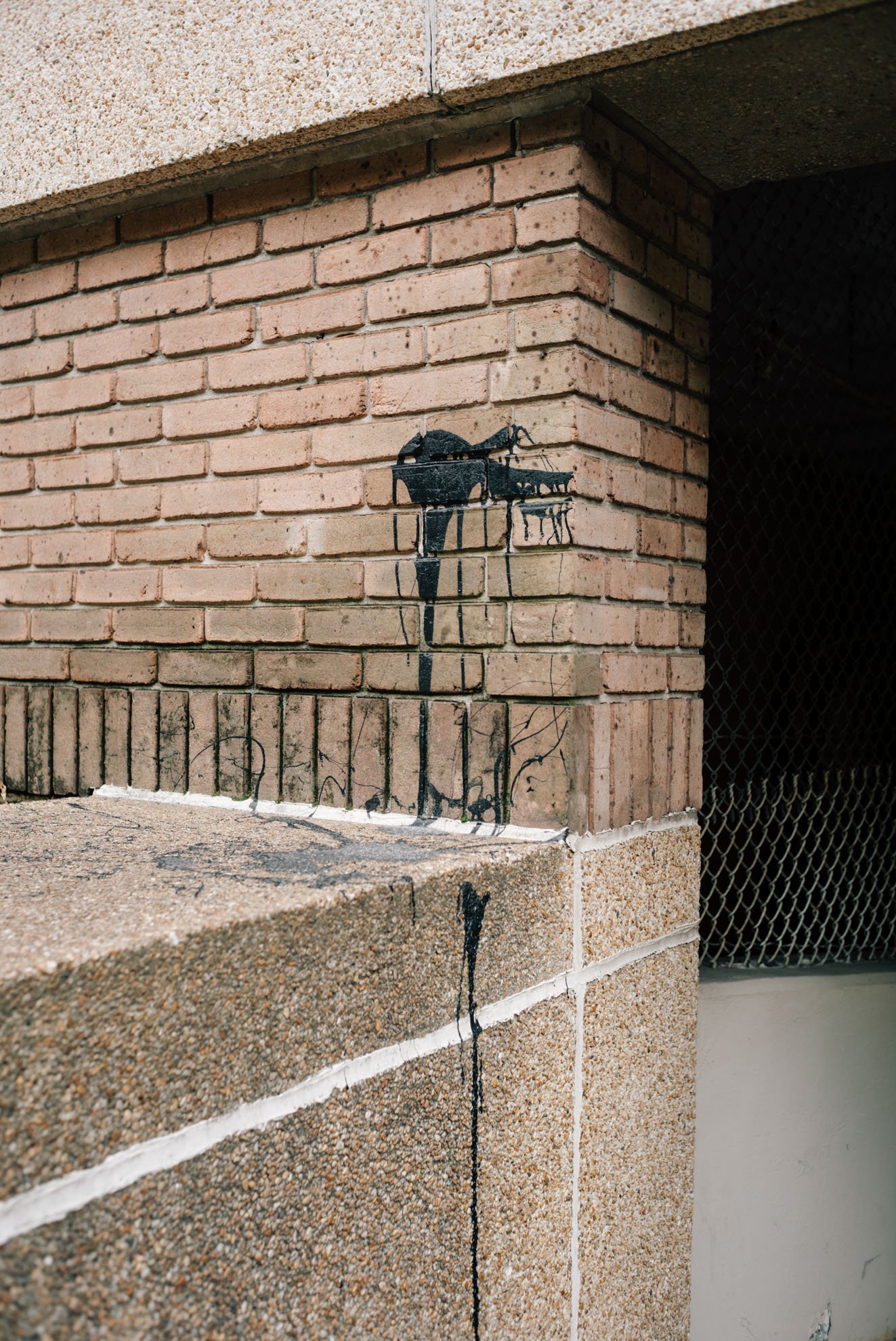
There’s a quote I heard recently - can’t remember who said it — but it stuck with me. It was something like: “It’s better to be aimless than to be rigid with a plan.” Because when you’re too locked into a goal, you might miss the opportunities that pop up along the way. You need to stay flexible, fluid—open to what the world hands you.
That’s how I feel about photography. I’ll walk for hours—sometimes five to ten miles — just to see what shows up. It becomes a game. A game between me, the camera, the street, and whatever decides to show up that day.
Usually, it takes a few warm-up shots to get into it — just pictures of objects, whatever catches my eye. But once I find a rhythm, it’s like the world starts to reveal itself. The good stuff comes out of hiding.
That’s what real photography is to me. Not staging scenes or setting up portraits—that’s more like illustration, as Garry Winogrand would say. What I care about is life. Life unfolding right in front of you. Life happening.









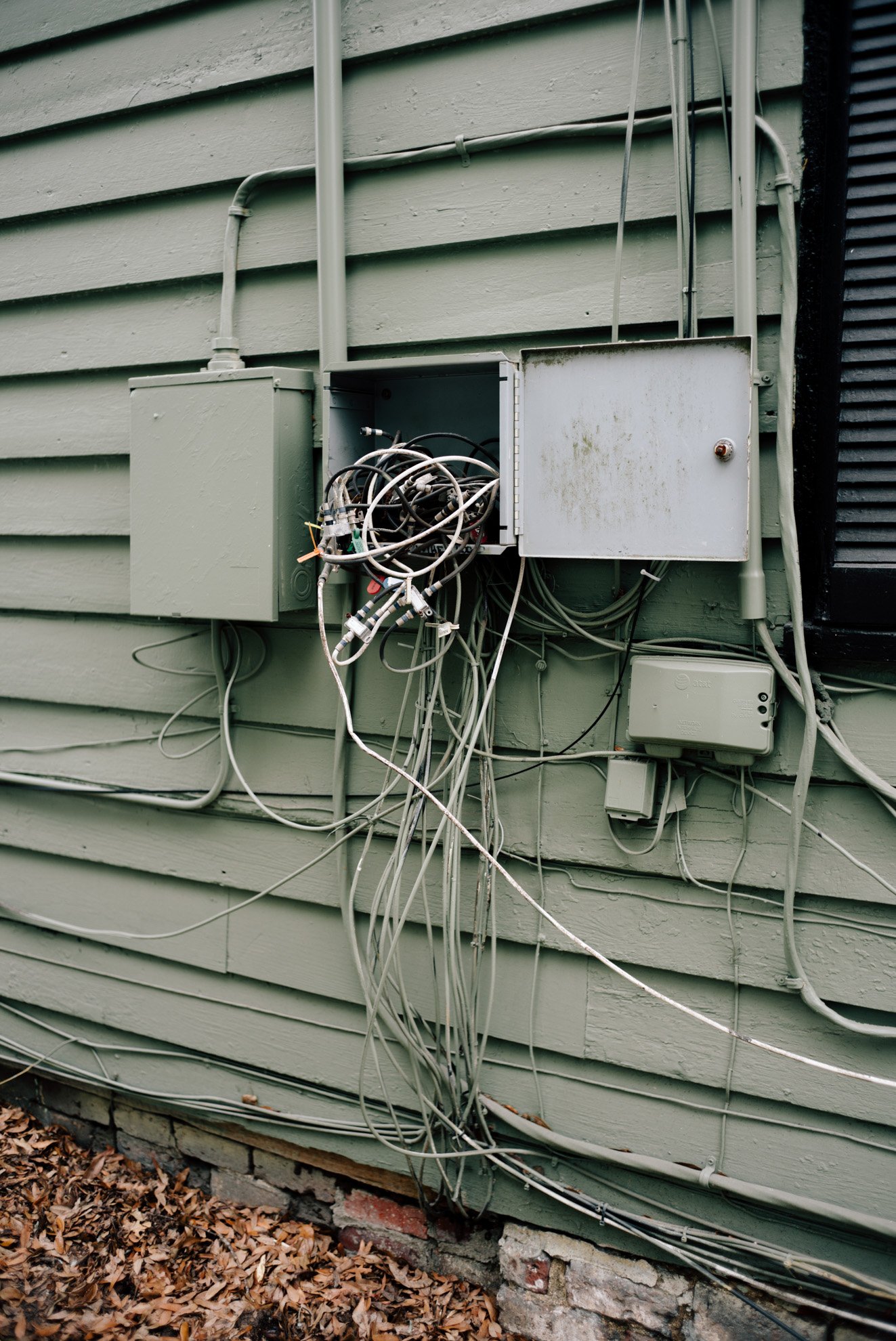





Thank you for your attention. Please consider donating a few sats if you enjoy my work. It goes a long way. If not, please share. Thank you.
